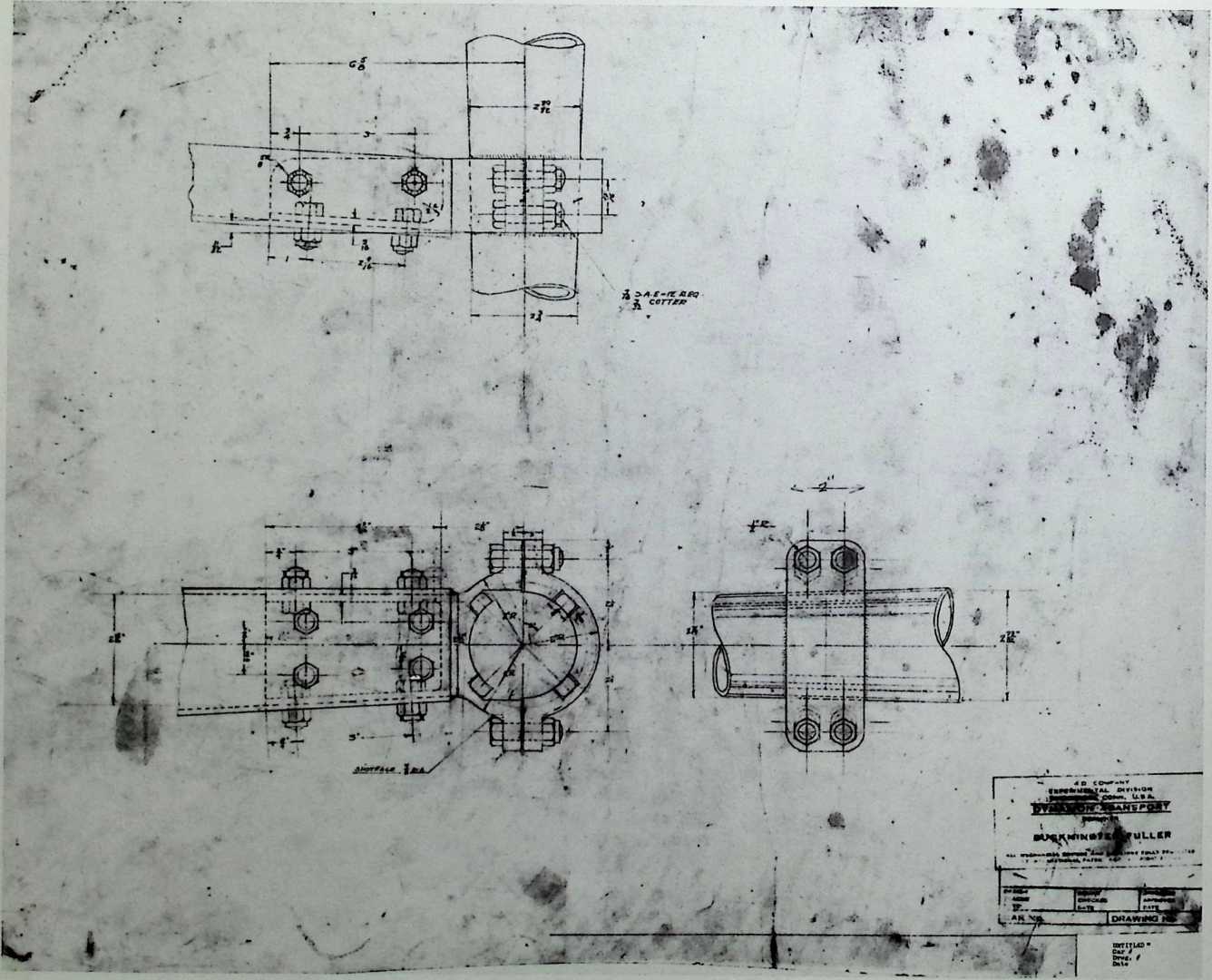

Artifacts of R Buckminster Fuller
Volume One: Volume One: The Dymaxion Experiment, 1926-1943
James Ward (Editor)
Garland Publishing, Inc. | New York and London
ISBN:
ISBN-10: 0-8240-5082-7
Updated: 2024-07-14 16:55
ABOUT THE EDITOR
James Ward is presently a visiting professor at Trinity College, Hartford, Connecticut. He studied engineering as an undergraduate and received his Ph.D. in the history of art from the Institute of Fine Arts of New York University. His dissertation was on Le Corbusier’s villa, Les Terrasses.
He has published articles on early modern architecture in Europe and has compiled a directory of New York architects before World War II.
Copyright © 1984 by the Estate of R. Buckminster Fuller
‘‘In the Outlaw Area: A Profile of R. Buckminster Fuller’’ © 1966 by Calvin Tomkins. Originally appeared in The New Yorker.
Library of Congress Cataloging in Publication Data
Fuller, R. Buckminster (Richard Buckminster), 1895-
The artifacts of R. Buckminster Fuller.
Includes bibliographies.
Contents: v. 1. The Dymaxion experiment, 1926---1943---
v. 2. Dymaxion deployment, 1927---1946---v. 3. The geodesic revolution, part 1, 1947---1959---[etc.]
1. Engineering design---Collected works. 2. Fuller, R. Buckminster (Richard Buckminster), 1895- ---
collected works. I. Ward, James. II. Title. TA174.F86 1984 620'.00425 84-21039
ISBN 0-8240-5082-7 (v. 1 : alk paper)
Book design by Jonathan Billing
The volumes in this series have been printed on acid-free 250-year-life paper.
Printed in the United Slates of America
ENCODED IN THE UNITED STATES OF AMERICA
¶ Contents


THE ARTIFACTS OF R. BUCKMINSTER FULLER
A Comprehensive Collection of His Designs and Drawings in Four Volumes
Edited with descriptions by James Ward
A Garland Series
Contents of the Set
Volume One. The Dymaxion Experiment, 1926--1943
Volume Two. Dymaxion Deployment, 1927--1946
Volume Three. The Geodesic Revolution, Part 1, 1947--1959
Volume Four. The Geodesic Revolution, Part 2, 1960--1983
THE ARTIFACTS OF R. BUCKMINSTER FULLER
Volume One: The Dymaxion Experiment, 1926--1943
Edited with descriptions by James Ward
with a Profile of R. Buckminster Fuller by Calvin Tomkins
Garland Publishing, Inc.
New York and London 1985
Contents
Publisher’s Foreword vii
Publisher’s Acknowledgments ix
Editor’s Introduction—Visions of a Synergetic Environment: The Drawings of R. Buckminster Fuller xi
In the Outlaw Area: A Profile of R. Buckminster Fuller, by Calvin Tomkins xv
Chronology of Fuller’s Career xxxiii
Bibliography xxxvii
The Stockade System, 1922--1927 1
The Stockade System 3
4D, 1927--1929 5
4D Logotype 7
The Ten-Deck House, 1928 10
Skyscraper Suspension Masts, 1928--1929 37
4D Tower Garage, 1928--1929 41
Radio and Power Lines 43
Skyscraper Suspension Bridge, 1928--1929 45
The 4D House, 1927--1932 51
The 4D House 53
4D House—Patent Application, 1928 58
A Minimum 4D Dymaxion House 60
Sketches, 1928 72
Proposed Dymaxion Hanging Restaurant for Romany Marie, 1929 84
Roadside Filling Station—Designed by Simon Breines, 1929 87
SSA Dymaxion Twenty-Worker Shelter for Russian Cooperative Mobile Farming,
Dymaxion Victrola Agents Record Library, 1928 93
Dymaxion Furniture, 1931--1932 95
The Dymaxion Transport, 1927--1945 97
The Dymaxion Transport 99
Early Explorations 101
Early Research Material for Continental Motors 105
The Dymaxion Cars, 1933--1943 113
The Dymaxion Cars 115
Car 1, 1933 118
Car 2, 1933 135
Car 21/2, 1933 142
Car 3 Patent—Application, 10/18/33;
Granted, 12/7/37 144
Car 3, 1934 146
Car 5, 1934 158
Dymaxion Tudor Sportster, 1934 171
Dymaxion Single Seater, 1934 173
Leonard’s Taxi, n.d. 174
Proposed D-45 for Henry J. Kaiser, 1943 175
Air Frame Vertical Aero Struts, 1950 183
Engine Miscellany 184
¶ List of Figures
¶ List of Tables
¶ Publisher’s Foreword
The purpose of this compendium is to make available to architects, scholars, and students the drawings and designs of R. Buckminster Fuller. These materials vividly document Fuller’s thinking and chronicle the evolution of his ideas and are the most important primary sources for the study of his career as an inventor and designer. Only the smallest fraction of these documents has ever been examined firsthand by the public, much less published, making the present edition indispensable for future assessments of Fuller’s contribution to twentieth-century architecture and design.
The four volumes reproduce the drawings that Fuller had in his collection at the time of his death, supplemented by material from the archives of the firm of Fuller & Sadao. Although over two thousand in number, they represent only a small percentage of Fuller’s drawing oeuvre, which can also be found in collections around the world and which also encompasses myriad studies unrelated to buildings or patents. For example, one will not find here any of the visual aids Fuller produced for his many lectures on science, art, and architecture or the random sketches scattered throughout his correspondence and notebooks. Because they are well documented elsewhere, studies related to the Airocean World Map have not been reproduced. One will find, though, the map’s later architectural manifestation in the scores of designs for geodesic domes made after 1950. Also, specifically mathematical studies have been excluded as being more appropriate for a separate publication.
Although the drawings are arranged more or less chronologically, a certain thematic coherence is suggested by the contents of each volume. The two initial volumes contain the extremely futuristic projects of Fuller’s youth. The first is the richest in drawings by Fuller himself, notwithstanding the fact that Starling Burgess and a host of engineers were the actual authors of the drawings for the Dymaxion Transports, which occupy nearly half the volume. Dymaxion Deployment is the title of Volume Two, and alludes to the more practical aura of the designs included, some of which—in distinction to the relatively visionary works of Volume One—were actually mass-produced.
The second pair of volumes is distinguishable from the first in that each volume contains geodesic designs almost exclusively, representing Fuller at the acme of his creative and organizational powers. Volume Three is devoted to the geodesic designs produced from 1947 through 1959, ranging from highly experimental structures for museums and universities to highly practical ones for industry and the military. Volume Four is devoted to the period from 1960 until 1983, when the diversity of building types was the greatest. Here one finds everything from a tiny geodesic hut based on the radome of the 1950s to a mast-like tower for a suburb of Tokyo that would have been two miles high.
The editorial policy that informs this publication—in direct contrast to Fuller’s philosophy of economic design—is that more is more. We have included drawings whenever we thought they might possibly be of interest. Thus, even projects represented only by a single sketch or maquette are included, and frequently given as much attention as projects that comprise hundreds of drawings. For the sake of legibility, blueprints have been omitted if an original ink or pencil drawing was available. On the other hand, the most difficult-to-read blueprints have been included if their absence in the set might cause confusion or if they are the only documentation for a specific design.
Most of the photographs reproduced in these volumes come from Fuller’s collection. Exceptions are the photographs of the models of the Yomiuri Tower, Project Pearland, the ERP Center, the Cathedral Church of St. John the Divine, and the single remaining node of the truss exhibited at the Museum of Modern Art in 1959, all of which were taken by James Ward.
¶ Publisher’s Acknowledgments
This project was originally conceived with the help of Shirley Sharkey of the Buckminster Fuller Institute, and her constant support and advice were essential to its realization. Koyoshi Kuromiya and Amy Edmondson of the Institute staff were most helpful. E. J. Applewhite and Shoji Sadao spent untold hours answering our questions and, as tactfully as possible, correcting our mistakes of fact and interpretation. These volumes will be far more useful and accurate because of their participation. Mistakes and omissions certainly remain, and these are solely Garland’s responsibility.
James Ward became the Editor of this project after it was under way and had the thankless task of working on a constantly evolving publication without having ultimate control over the final results. Without the benefit of his background in engineering and architectural history and his hard work and dedication, we never could have put these volumes together. We, and the readers of these volumes, owe him a profound debt of gratitude.
Ralph Carlson
Garland Publishing
WWW
¶ Editor’s Introduction
Visions of a Synergetic Environment: The Drawings of R. Buckminster Fuller
Flying close to the surface of Tokyo Bay, the pilot of a jet liner maneuvers his vessel for a landing on one of three runways attached to the base of a vast and floating tetrahedral pyramid, each edge of which measures two miles. From the pilot’s perspective, the huge scale of his target can be perceived only when violent gusts of wind brought down by the building’s great leaning facades create shimmering green waves at its base that seem minuscule. Some passengers of the plane may begin to suspect they are bound for a floating target when, from time to time, ambient waves expose the triangular pontoon of hollow concrete submerged two hundred feet below the surface. The sharply geometric composition of this buoyant metropolis is so elegant and unified that its 300,000 apartment units are not distinguishable until just before the jet lands. But it may be equally difficult to fathom, even in proximity, that the hollow tetrahedron city holds a million citizens and contains a huge interior harbor in addition to the appended airport. Passengers of the plane unfasten their seat belts and join a community that is both socially and economically self-reliant and that transcends—by dint of its location—the jurisdiction of established nations.
Although the above scenario is completely imaginary, it is based on a real artifact commissioned by Matsutaro Shoriki, the Japanese financier, and designed by R. Buckminster Fuller (1895--1983) and Shoji Sadao (1927-- ) at the close of the 1960s. Because Fuller’s most futuristic dreams tended to be fifty years ahead of their times, the world may wait until A.D. 2020 to see this crystalline vision afloat in Tokyo Bay—or anywhere else. But it is precisely the incomparable daring of such designs that puts Fuller in a class by himself and that will ensure him greater consideration in future histories of twentieth-century architecture.
Fuller’s tetrahedron city has yet to be erected, but it is, nonetheless, the sort of project that is crucial for an assessment of his ambition as a designer. It demonstrates how he distinguished himself among other architectural geniuses by his emphasis on energy as an important factor in modern design. For Fuller, architecture, like human society, needed to be more than the sum of its parts. He saw it as a synergetic art that required the designer to produce a reciprocal interaction of structural forces. Thus, to function successfully, the architect must integrate the combined knowledge of all the other arts and sciences with his design. The realization of a project like the tetrahedron city would require the solution of three problems outside the standard definition of architectural practice that inhibit most urban planners and make potential financial backers skeptical—technique, construction cost, and land acquisition. Although these factors are not usually held to be the foremost priorities of an artist, they loomed just beyond Fuller’s synergetic vision throughout his career. In the case of the pyramid for Shoriki, for example, the tetrahedral composition and the aluminum octet truss technique would have made feasible both its huge size and the financing of its construction. The real estate factor was largely obviated by designing the city to be floated at sea. The safety of such a nautical siting would be ensured because the scale of such a pyramid would trivialize the worst ocean storm. Similar attempts to solve the above problems are recorded by all the other drawings reproduced in these volumes, from both the Dymaxion and geodesic periods. Fuller’s preoccupation with techniques, cost, and land acquisition sets his oeuvre apart from that of any other major architect of the twentieth century.
Dematerialization is the trend that characterizes best Fuller’s approach to building techniques. He defined this quality with the word ‘‘ephemeralization’’ and the phrase ‘‘ever higher performance with ever less investment of material resources.’’ This quest for a structural elegance that renders things nearly invisible can be traced back to Fuller’s naval career during World War I when he served as lieutenant (1917--1919). The priorities of engineering elegance, lightweight construction, and streamlined form that are indigenous to nautical design might have inspired similar qualities in Fuller’s later designs, few of which were required to be seaworthy.
One exciting clue to the nautical influence on Fuller’s career as a designer is the webbed, birdcage mast he would have seen on the Dreadnought class of American battleships.* These lattice-like iron funnels afforded extraordinary strength against the forces of winds and vertical loads but, unlike solid masts, tended to withstand the blows of enemy cannonades. In this system of riveted and interwoven metal members one discerns the germ of an idea that Fuller translated later into the tension-compression designs of his Dymaxion experiment and brought to dramatic culmination in the great geodesic domes after World War II (see also Harlem Redesign, 1964).
The Ten-Deck House (1928) exemplifies Fuller’s early Dymaxion incorporation of the tension-compression principle he might have learned from battleships into a low-cost housing project. Its composition of crossing cables and thin layers of sheet metal required the sort of industry and alloys that were both far in the future. But, had it been executed, this mast-like skyscraper would have been quite ethereal, in spite of its complex form, and would have made contemporary buildings by Ludwig Mies van der Rohe (1886--1969) and Walter Adolf Gropius (1883-1969)—with their heavy steel, bricks, concrete, and assorted sumptuous marbles—seem grossly materialistic by comparison. Fuller initiated a revolution in modern architecture that entailed far more than an uncompromising truth to materials and an absence of ornament, which are the major hallmarks of his contemporaries of the avant-garde. The motive of Fuller’s Dymaxion designs (also called 4D) was the infinitely more ambitious quest to bring matter and energy into dynamic equilibrium. Although one could scoff at the pretense, none could deny the effects of such a synergetic motive on the appearance of his designs.
However, it was only after his study of spherical geometry during the early forties that Fuller arrived at the formulas for his geodesic revolution, the techniques of which realized more successfully his synergetic ideal. Much purer than physics, the geometric theories of geodesics were, nevertheless, applicable to the physical world. Taking the tetrahedron as his basic structural unit, Fuller composed domical trusses with the three-way grid formed by the great circles of a sphere. This enabled him to design and build structures on an enormous scale with only a fraction of the mass required by traditional building methods. The three-way grid of the geodesic system makes all members of the structure mutually supportive and thus completely synergetic. By virtue of the resulting structural efficiency, the girth of each member can be minimal.
One can imagine the astonished reader as he browsed through Life in 1953 and found, between articles about the first atomic shell explosion and the influence of the coronation of Queen Elizabeth II on the tiara mania, a fish-eye view of the interior of Fuller’s
*See U.S.S. Oklahoma (1917).
magnificent cupola that covers the ninety-three-foot opening in the exhibition building of the Ford Motor Company near Detroit, f Composed of octahedron trusses in a geodesic pattern and glazed with translucent plastic on the outside, this aluminum structure must have captured the imagination of architects throughout the world, especially as the dome weighed only eight and a half tons, a small fraction of the lightest masonry domes. Each of its three-foot struts weighs only five ounces, and 19,680 struts make up the dome’s 160 trusses. The wide-angle photograph made the dome seem even more beautiful, with its Art Deco base resembling the setting for a large diamond commissioned to celebrate the fiftieth anniversary of the founding of this innovational company.
The geodesic dome Fuller designed with Sadao for the 1967 World’s Fair (Expo 1967) held in Montreal surpasses the Ford dome both in its greater scale and design integrity. It was the firm’s most successful dome and the centerpiece of the exposition. As all of its struts are visible from inside and outside, this dome is a much more telling illustration of the technique of synergetic architecture. All compositional lines are held in tension around a single focal point in the center of the sphere. But the most impressive feature of the pavilion was not executed. It would have been the triangular sun shades that were designed to be operated by computer in accordance with the movement of the sun across the sky, bringing the structure into an energy equilibrium with its surroundings. This harmonious relationship would have complemented the one implicit in the dome’s geodesic design. With the star integrity truss as its chief structural unit, the dome acquired visual weight only where its sun shades were closed. With its shades closed or open, the dome is Fuller’s greatest example of the dematerializing aesthetic that seemed to him only the natural outcome of intelligent structural experimentation.
Fuller’s chief motive for research into the above techniques was the possible reduction of construction costs to an unprecedented minimum. The development of these elegant structures was paralleled and greatly influenced by his search for extremely inexpensive high-performance materials and economical building procedures. These goals occupied him through all phases of his career and led to solutions never imagined possible in the halcyon days of the early modernists.
During the Dymaxion period, Fuller imagined that a ten-story skyscraper (the Ten-Deck House) of strong alloys could be assembled in a factory and transported to its permanent site by air, thereby eliminating the cost of on-site construction (ca. 1928). He evolved this design because he could not understand why a dwelling could not be more like a car, a mass-produced and
t‘‘Tape, Plastic, and Aluminum for Rotunda of the Ford River Rouge Plant,’’ Life 34 (8 June 1953), 67--70, photo p. 70. portable commodity. In fact, his Wichita House (1945--1946) cost only about as much as a Cadillac because it was designed to weigh less than three tons, to be transportable to its site in a compact metal cylinder, and to be erected in a day by a small crew of workers. Moreover, the frank use of galvanized steel and aluminum in all these early Dymaxion designs impressed rather than repulsed as it brought down the overall cost.
The geodesic revolution made even greater economies possible in the realm of building materials and construction method. Most radomes and plydomes of the mid-fifties could be constructed without scaffolding by untrained workers in a few hours. Even a dome as enormous as that designed to house Howard Hughes’ seaplane the Spruce Goose (1982--1983)—415 feet in diameter—was built for a minimal amount, since traditional scaffolding was not necessary. The dome was erected from its apex down, with each new section attached as the dome was raised on a slender, centralized mast (see the Appendix in Volume Four). The extreme integrity of geodesic design permitted such radical building techniques; it also allowed Fuller to experiment with the cheapest materials known to the building world: bamboo, Saran, lath, paperboard, plywood, and plastic. Many of these materials are quite as durable as they are low-priced, a fact that is evinced by the continued usefulness of the polyester fiberglass radomes erected all over the world during the fifties.
Although other well-known modernist architects would not have rejected such alternative construction procedures or materials, few of them would have placed as much emphasis on these factors as did R. Buckminster Fuller. In fact, the famous Weissenhof Siedlung exhibition held in Stuttgart in 1927, though officially a showcase for the cheapest housing designs by the greatest modern talents, culminated as a beauty contest with the designs of Le Corbusier (1887--1965) the clear favorites. One feels certain these Purist boxes won for their aesthetics, not for their superior economy. Fuller’s Dymaxion designs might have come slightly later than this exhibition, but he took the official parti pris of its participants more seriously than their obsession with style.
The problem caused by land acquisition is the final concern that distinguishes Fuller from his colleagues. Although it was a factor that had interested him since the twenties, it was one that he could not have begun to solve before the invention of new techniques and the dramatic reduction of building costs. His designs made it possible to transcend the difficulties posed by the question of real estate while bringing basic shelter to the world. The grim reality of domain perhaps first began to haunt him during the early Dymaxion days, when he suffered alone with his family in a rented apartment in an unseemly section of Chicago. Such an experience no doubt caused him to devote his attention to the creation of basic, inexpensive, and wholesome shelter. This period of personal misery depended on more than his living conditions. However, Fuller’s life in a rented space at this time may help explain the tone of a passage in 4D Timelock (1929). In this book, Fuller decries in a section called ‘‘The Feudal ‘Real’ Estate Racket Begins’’:
The exploitation of the property idea in America is readily traceable to the refugees from European Feudalism, so smugly canonized in the social register *
But rather than become a radical revolutionary, Fuller proceeded to conquer scientifically problems posed by the ownership of land by designing Dymaxion and geodesic structures that make location relatively insignificant.
The three most important solutions to the problem of real estate devised by Fuller in the Dymaxion period are (1) the reduction of space in domestic designs, (2) transportation of portable structures to underutilized or hitherto undesirable regions, and (3) the invention of structures that require no land at all. It was perhaps his designs for the Dymaxion Transports (1927--1945) that inspired Fuller to economize on the spaces of dwelling units. The first offshoot of these vehicles was the Dymaxion Bathroom (1927--1938), which—if not exactly a replica of the interior of Fuller’s car—looks like nothing so much as the typical wagon-lit compartment. The later Deployment Units (1940--1941) may be unprepossessing visually, but they are as economical as the bath in the way that they contain all essential dwelling spaces in a small, domical cylinder. Portability enabled such structures to be carried to the remotest desert, tundra, or tropical regions. By contrast, the Skyscraper Suspension Bridge (1928--1929) is a far more futuristic Dymaxion vision that does away with as much land as possible, being a vast residential structure poised above a body of water nobody owns. Such a building could have connected Manhattan with Long Island City to the east or Guttenberg, New Jersey, to the west and boasted spectacular views and rents atypical of the real estate capital of the world. It is a much more reasonable solution to urban density and the cost of land than Le Corbusier’s slightly earlier Plan Voisin for Paris, which required the violent demolition of nearly all the first arrondissement (1925).
During the geodesic period, Fuller devised at least five schemes to avoid or transcend the problem of land acquisition: the utilization of land in remote or hostile environments, urban renewal and planned cities for which land has been acquired already, structures that render outdoor spaces useful year-round, the utilization of sea and air, and the dissolution of national borders. Projects Spadina for Toronto and Pearland for a suburb of Houston (1971) are both examples of planned cities for which the main problem was not land. Spadina was
*R. B. Fuller, 4D Timelock, 2nd ed. (Albuquerque, N.M.: Lama Foundation, 1972), p. 129.
to have municipal sponsorship, and Pearland would have stood on abandoned rice fields. In contrast, the radomes, plydomes, and paperboard domes of the fifties can be flown to regions far beyond the existing perimeters of the real estate market, so their installation can not be hindered by delays related to the purchase of property. The radomes actually intended to hold radar equipment, for example, were installed successfully along the Arctic Circle in 1955, to which no one—except, perhaps, the Russians—took offense. Similarly, Fuller’s greenhouse projects of 1953 and his outdoor theater skybreak for Aspen, Colorado, of 1951 are just a few of his geodesic structures that show the road to cheaply enclosed farms and stadia that would flourish as controlled environments in any climate. The tetrahedron city and the floating geodesic globe dwellings of the late sixties, as extensions of the above schemes, dispense altogether with the use of land. Finally, the eradication of national borders was to be effected by the example set by the World Man Center in Cyprus (1967). This international nexus would have been the only parcel of land on earth to transcend the limitations of national identity. It was hoped that such a project would encourage the elimination of the imaginary borders that articulate the globe and would fulfill the ‘‘one-island-earth’’ idea explicit in Fuller’s earlier Airocean World Map (1943).
Although some of Fuller’s solutions to the above problems have been tried successfully, the typical architect’s narrow concept of the compass of his professional responsibilities has not changed much. On the other hand, not even a staunch idealist could focus ceaselessly on the three high-minded architectural concerns presented here, and R. Buckminster Fuller was no exception. Thus, as he pages through these volumes, the reader perhaps will be delighted to find, in addition to the important design prototypes, projects that relate in a more traditional way to the desires of most people, such as the Dymaxion furniture (1931-1932), the Tudor Sportster (1934), the geodesic ski lodge (1957), the Yomiuri Golf Club (1961--1963), the tensegrity chandelier for Princess Margaret (1964), and plydomes that double as playdomes (1956). However, even these designs would not have been possible without Fuller’s unorthodox, scientific, and synergetic approach to architecture that clearly sets his visions above the work of his modernist contemporaries.
James Ward New York City July 1984
¶ In the Outlaw Area
A Profile of R. Buckminster Fuller
by Calvin Tomkins
When Richard Buckminster Fuller was in New Zealand a year ago, he spent several rewarding hours at the University of Auckland with a friend of his, a cultural anthropologist who also happens to be Keeper of the Chants of the people he belongs to, the Maoris. These chants go back more than fifty generations and constitute, in effect, an oral history of the Maoris, and Fuller, a man who is intensely interested in almost everything, undertook to persuade his friend that it was high time they were recorded on tape and made available to scholars, himself included. The anthropologist said that he had often thought of recording them, but that, according to an ancient tradition, the Keeper of the Chants was allowed to repeat them only to fellow- Maoris. Fuller thereupon launched into an extensive monologue. It was buttressed at every point by seemingly irrefutable data on tides, prevailing winds, boat design, mathematics, linguistics, archeology, architecture, and religion, and the gist of it was that the Maoris had been among the first peoples to discover the principles of celestial navigation, that they had found a way of sailing around the world from their base in the South Seas, and that they had done so a long, long time before any such voyages were commonly believed to have been made—at least ten thousand years ago, in fact. In conclusion, Fuller explained, with a straight face, that he himself had been a Maori, a few generations before the earliest chant, and that he had sailed off into the seas one day, lacking the navigational lore that gradually worked its way into the chants, and had been unable to find his way back, so that he had a personal interest in seeing that the chants got recorded. We have Fuller’s assurance that the anthropologist is now engaged in recording all the chants, together with their English translations.
Publishers Note: This New Yorker ‘‘Profile’’ originally appeared in the January 8, 1966, issue. We reprint it here unaltered in the belief that anyone consulting these drawings will find it of interest. It strikes us as still the best single presentation of Fuller’s ideas, accomplishments, and especially of his personality. ‘‘Bucky’s’’ enthusiasm for and presentation of his ideas played an important part in his career, and no one has captured this aspect of his life better than Calvin Tomkins. Copyright © 1966 by Calvin Tomkins. Originally appeared in The New Yorker.
The somewhat overwhelming effect of a Fuller monologue is well known today in many parts of the world, and while his claim to Maori ancestry must remain open to question, even that seems an oddly plausible conjecture. An association with the origins of circumnavigating the globe would be an ideal background for his current activities as an engineer, inventor, mathematician, architect, cartographer, philosopher, poet, cosmogonist, and comprehensive designer whose ideas, once considered wildly visionary, are now influential in so many countries that he averages a complete circuit of the globe each year in fulfillment of various lecture and teaching commitments. Fuller, who was seventy last July and whose vigor seems to increase with his years, gives every indication of enjoying to the hilt his more or less constant ‘‘toing and froing,’’ as he calls it. He often points out that man was bom with legs, not roots, and that his primary natural advantage as a species is mobility. Fuller had adapted himself so well to the extreme mobility of his present life that he considers it preposterous to be asked where he lives. A New Englander by birth and heritage, descended from eight generations of Boston clergymen and lawyers, he has had his official base of operations since 1959 in Carbondale, Illinois, where he is a professor at Southern Illinois University in what he has designated as the field of ‘‘design science,’’ and where he and his w’ife occupy a plywood geodesic-dome house built according to the patented specifications of the best knowm and most successful of his many inventions. By agreement with the university, though, he spends only two months of the year, at most, in Carbondale, and much of that is in brief stopovers between jet flights to other cities, often on other continents. Perpetual mobility, he feels, is a perfectly satisfactory condition for a ‘‘world man,’’ which is what he firmly believes all of us are rapidly becoming.
The worldwide enthusiasm for Fuller’s ideas is by no means confined to university students, though they are currently his most fervent supporters. Professional mathematicians will undoubtedly question some of the premises of his ‘‘Energetic-Synergetic Geometry’’ when
he finally gets around to publishing the definitive book on it that he has had in preparation for thirty-five years, but it is no longer possible to question the practical application of these same principles in such eminently satisfactory structures as the geodesic dome, which has been recognized as the strongest, lightest, and most efficient means of enclosing space yet devised by man. Over the last decade, moreover, scientists in other fields have been finding that Fuller’s research into nature’s geometry has anticipated some important discoveries of their own. Molecular biologists have now established that his mathematical formula for the design of the geodesic dome applies perfectly to the structure of the protein shell that surrounds every known virus. Several leading nuclear physicists are convinced that the same Fuller formula explains the fundamental structure of the atomic nucleus, and is thus the basis of all matter. As more and more people discover the comprehensive relevance of Fuller’s ideas, he finds himself increasingly involved in all sorts of new areas. The government, for example, recently appointed him a ‘‘Distinguished Scientist’’ at the United States Institute of Behavioral Research, in Washington. While this sort of recognition is highly gratifying to one who has always been something of a maverick, working outside the scientific Establishment, it has come as no particular surprise to him. Fuller long ago reached the conclusion that nature has a basic coordinate system, and he has been convinced for a good many years that the discovery of that system would eventually reunite all the scientific disciplines.
To the younger generation, the most stimulating thing about Fuller is probably his exhilarating contention that we have arrived at the threshold of ‘‘an entirely new philosophical era of man on earth.’’ For the first time in history, he argues, man has the ability to play a conscious, active role in his own evolution, and therefore to make himself a complete success in his environment. According to Fuller, this dazzling prospect was opened to us by Einstein’s concept of energy as the basis of the universe. ‘‘Einstein shattered the Newtonian cosmos,’’ he said recently. ‘‘In the famous first law of dynamics, Newton had said that a body persisted in a state of rest or constant motion except as it was affected by other bodies; he was assuming that the normal condition of all things was inertia. Einstein realized that all bodies were constantly being affected by other bodies, though, and this meant that their normal condition was not inertia at all but continuous motion and continuous change. The replacement of the Newtonian static really opened the way to modem science and technology, and it’s still the biggest thing that is happening at this moment in history.’’
More specifically, the new era was made possible by the phenomenal acceleration of science and technology' in the twentieth century—a process that really began, Fuller says, during the First World War, when industry suddenly moved, in his words, ‘‘from the track to the trackless, from the wire to the wireless, from visible structuring to invisible structuring in alloys.’’ A good example of this process can be found in the performance of chrome-nickel steel, an alloy that was used for the first time in the First World War, to make cannon barrels more durable; because of an invisible molecular pattern that is created when chromium, nickel, and iron are combined, the resultant alloy held up under conditions of intense heat that would have quickly melted all three of its components separately. Most of the major advances in science and technology since 1914 have been in this invisible realm, which Fuller calls ‘‘synergy’’—a term that can be defined as the behavior of whole systems in ways unpredictable by the individual behavior of their sub-systems. So far, Fuller maintains, the newest technology has been applied principally to the development of military power, or weaponry, rather than to housing and education and other aspects of what he calls ‘‘livingry.’’ Nevertheless, the shift of industry to the new invisible base has brought about such spectacular gains in over-all efficiency, such demonstrated ability to produce more and more goods and services from fewer and fewer resources, that mankind as a whole has inevitably profited. According to a statistical survey that Fuller made some years ago for Fortune, the proportion of all humanity enjoying the benefits of the highest technology had risen from less than six per cent in 1914 to twenty per cent in 1938. Today, Fuller places forty-four per cent of mankind in the category of technological ‘‘have’’s, and it is his frequently stated conviction that by devoting a larger share of their industrial budget to world livingry the ‘‘have’’s could very quickly bring the entire human race into contact with the highest technology, at which time the weighty problems that oppress us now—war, overpopulation, hunger, disease—would simply cease to exist.
To achieve this utopia, Fuller proposes a worldwide technological revolution. Such a revolution would not be led by politicians, and, in fact, would take place quite independently of politics or ideology; it would be carried out primarily by what he calls ‘‘comprehensive designers,’’ who would coordinate resources and technology on a world scale for the benefit of all mankind, and would constantly anticipate future needs while they found ever-better ways of providing more and more from less and less. One big question, of course, is whether the political and economic convulsions of the present era will allow the comprehensive designers time to carry out this kind of revolution. Fuller thinks that there is still time, but he also thinks that time is rapidly running out for humanity, and it is this belief that keeps him in virtually constant motion around the world, talking to students and training them to think comprehensively as they continue his search for nature’s basic patterns.
It is probably fitting that Fuller, as a true world man, should have no real home these days—or, rather, that he should feel at home wherever he happens to be. There is, however, one spot on the globe that comes reasonably close to being a fixed point in his life. Whenever possible, he tries to spend some part of each summer in Maine, on Bear Island, which has been owned by members of his family since 1904, and he has often referred to this place as the source of most of his ideas. ‘‘My teleological stimulation first grew out of boyhood experiences on a small island eleven miles off the mainland, in Penobscot Bay of the state of Maine,’’ he writes of Bear Island in the first chapter of ‘‘Ideas and Integrities’’ (Prentice-Hall), a recent volume of essays that constitutes his intellectual autobiography. With this statement in mind, I wrote to Fuller last spring in England, where he was just completing a one- month visiting professorship in the Department of Architecture at Bristol University, to ask if I could spend a few days with him on Bear Island. He wrote back immediately, inviting me to select a date in August for my visit.
Bear Island, I knew, has been preserved in virtually the same state of development as when Fuller’s grandmother bought it, in 1904—no telephone, no electricity, no running water—and this strikes some of Fuller’s friends as an odd setting for a man whose life is devoted to making the highest technology serve a hundred per cent of humanity. At the same time, I thought, it could be an ideal setting for someone like Fuller, who has always been interested in finding out how nature really works. The island lies approximately in the middle of East Penboscot Bay, about twelve miles east of Camden. Visitors usually take a boat over from Camden, on the mainland, but I had been staying with friends farther Down East and had therefore arranged to come over from the town of Sunset, which is only five miles from Bear on Deer Isle and can be reached by bridge from the mainland. Fuller and several members of his household had spent the afternoon buying groceries and other provisions in Stonington, the nearest town of any size on Deer Isle, and I met them all on the Sunset dock. In addition to Fuller, there was Mrs. Alphonse Kenison, a younger sister of Fuller’s, who has missed only three summers of her life at Bear Island, and who, more than anyone else, has kept the place going through the years; his niece Persis and her husband, Robert Alden, a young New York radio-network executive, and their two children; another niece, Persis’s sister Lucilla Marvel, and two of her children; and Pearl Hardie, a Maine native who lives for much of the year on Bear Island, where he acts as caretaker of the half-dozen buildings on the island and man of all work, as his father did before him. For the first time in years, Fuller’s wife, Anne, had not come to Bear Island this year; she was visiting their daughter, Mrs. Robert Snyder, in California.
Fuller put down a carton of canned goods he had been carrying, and came to greet me, smiling warmly and exposing what looked like a recently chipped front tooth. He is a rather stocky man, powerfully built, and with a massive squarish head and a stubble of white hair cut so short that it stands straight up, and he looked, I thought, about twenty years younger than someone who had celebrated his seventieth birthday the month before had any business looking. His face was almost unlined, and it was also deeply tanned from a recent Aegean cruise. Somewhat heavy features and owlish eyes, magnified enormously by thick lenses, which he has worn since boyhood, can make him appear a bit severe, and at times even forbidding, but that impression is immediately dispelled by his open, toothy, and utterly ingenuous smile.
Fog began rolling in as we finished loading the supplies aboard a motor launch, which was operated by Mr. Hardie, and by the time we had left Sunset Harbor, it was too thick for us to see much of Penobscot Bay. During the trip over, though, Fuller enthusiastically identified each landmark as it materialized through the mist. ‘‘There’s Eagle,’’ he told me, pointing out a large, wooded island. ‘‘And there’s John Quinn’s boarding house, where we stayed that first summer of 1904—the summer my father fell in love with Bear Island and talked his mother-in-law into buying it for the whole family. Nothing changes here, you see—that house looks exactly the same as it did then. I really think if my grandmother were to come back tomorrow she’d recognize almost everything.’’ He went on to say that his grandmother, Caroline Wolcott Andrews, had also bought two neighboring islands, Compass and Little Spruce Head, which formed part of the same deed, but that it was on Bear, with its fine natural harbor, that they had built a large house in 1905, bringing in all the necessary materials and labor from Boston aboard the schooner Polly, a hundred-year-old vessel that had served as a privateer in the War of 1812. ‘‘I used to row over to Eagle and back every day for the mail when I was a boy here,’’ Fuller said. ‘‘Four miles a day, often in very bad weather. It made me awfully tough—something I’ve never lost, by the way.’’
Although he scarcely looked it, Fuller admitted to me that he was feeling a little run down at the moment. His schedule had been particularly demanding lately, and he had arrived only the day before—several days later than he had planned. From Bristol he had gone to Paris, to address an international assembly of architectural students, and from there to Athens, where he took part in a symposium sponsored by Constantinos Doxiadis, the Greek city planner, on board a chartered cruise ship; then he had flown back to the United States for a round of engagements, the most recent of which had been a conference at Princeton on how to improve the level of scientific education in the nation’s secondary schools. Fuller told me that for the first time in his life—perhaps because he had turned his ankle rather badly one evening on the Greek yacht while dancing the Twist—he had actually begun to feel his age. ‘‘I gained twenty pounds on this last trip,’ he added confidentially. ‘‘It’s one of the really big problems on this kind of schedule—big, rich dinners everywhere, and all that airline food. I really need a few weeks of this Bear Island atmosphere.’’
Approaching Bear Island in the fog, we Could catch only occasional glimpses of its rocky shoreline. The island is about a mile long and a half a mile wide, and is heavily wooded with spruce, pine, and white birch. Rounding the northernmost point, where the land rises sharply to a high bluff, we caught sight of the shingled roof of a large house, and a minute or so later Fuller pointed to an opening in the trees where we could just make out the shadowy arcs of an unfinished geodesic dome that had been, I was told, a family summer work project two years before. ‘‘I think it’s marvellous coming in with the fog this way,’’ Fuller said as we nosed slowly into the quiet harbor. ‘‘With any luck, it will be clear tomorrow, and then you’ll be able to see where you are. We have a seventy-five-mile sweep out here, so there’s quite a lot to see.’’ (Like many other unfamiliar words that crop up in Fuller’s casual conversation, ‘‘sweepout’’ is a term borrowed from one of the scientific disciplines—in this case, astronomy; he used it to mean the range of activity that the eye could take in on all sides of Bear Island on a clear day.)
On the dock to meet the boat were a number of small children, most of them members of Mr. Hardie’s family, and several adults, including Mrs. Leslie Gibson, another niece of Fuller’s, and Professor Sidney Rosen, from the University of Illinois, and his wife. Professor Rosen, a science teacher who also writes biographies of great scientists for young readers, has been assigned by his publisher to write one of Fuller, and he was there to gather material for it. All the small children immediately began clamoring for Fuller’s attention. (They all called him Uncle Bucky, and I have observed that nearly all adults who have spent more than five minutes with him find it natural to call him Bucky.) He had to ask the children to repeat their questions several times into his ear, which he cupped patiently with one hand—his hearing, damaged during the First World War, has deteriorated quite a bit in recent years. This difficulty did not appear to discourage the children in the least, or to make even the youngest ones shy of him. After a certain amount of confusion, the supplies were transferred from the launch to a weathered jeep driven by Fuller’s sister, Mrs. Kenison, and the rest of us walked up to the main house, on the bluff.
When most of us had assembled in the big house before dinner, Fuller came downstairs carrying a large blue bullhorn, which he had purchased during his stay in England. He explained that he had found it a great boon at conferences and seminars, where he used it not as a loudspeaker but as a directional antenna; the horn had an electronic amplifier that worked both ways, he said, and by pointing the cone at a speaker across the room, holding the voice box near his good ear, and pressing the amplifier button, he could hear perfectly. ‘‘I used to be a real menace at conferences,’’ he told us. ‘‘I had to have everything repeated. People kept telling me I should get a hearing aid, but, you see, I’ve tried that several times, and it has convinced me that nobody really knows anything about how we hear. Hearing aids are non-selective—they just amplify all sounds. But I hear some sounds perfectly well—maybe even better than you do—and when those are amplified for me, it’s actually painful. With this marvellous device, though, I can be selective. I can pick up sounds just by pointing.’’ He held the horn to one ear and pointed it at Professor Rosen, across the room. ‘‘Say something in your normal voice, Sidney,’’ he demanded. Rosen said something too low for me to catch. Fuller said he could hear him perfectly. He passed the bullhorn around the room, so that everyone could try it out, and he slung it around his neck on a white cord when he went to dinner, which was served, like all meals at Bear Island, a few hundred feet from the main house in a farmer’s cottage that was on the property when Fuller’s grandmother bought it. It turned out that there was not enough room at the crowded table to use the bullhorn comfortably, so he soon gave up trying. The sound of many voices reflected off a low ceiling apparently made it almost impossible for Fuller to hear what anyone said, and, sitting at one end of the table watching the others but taking little part in the conversation, he looked, in the flickering light of kerosene lamps, a little sombre and withdrawn.
When dinner was over, though, he suggested to Professor Rosen and me that we stay on at the table and listen to a few things he had to tell us. As I knew from previous meetings, there is no such thing as an ordinary conversation with Fuller. One question is enough to set him talking for an hour or more, and often a question is not even necessary. His talk follows a process that the cyberneticists call ‘‘positive feedback,’’ in that each idea sets off a whole flock of related ideas in something like geometric progression; Fuller seems never to have forgotten anything he ever knew, and his command of statistical detail is awe-inspiring. Perhaps the. most amazing aspect of these monologues is that, no matter how long and labyrinthine the digressions that crop up along the way, he invariably returns sooner or later to the primary subject of his discourse, and everything turns out to have been relevant. On that particular evening, he talked for a little longer than three hours. His voice gathered strength and momentum as he went along, and he could clearly have continued for another three hours if his listeners had been up to it. The main subject was his own system of mathematics, which he has been evolving for nearly half a century, and which underlies all his work in other fields.
Fuller began by telling us about meeting C. P. Snow in England two years ago. He said he was sympathetic to Snow’s view that there is a gap between the ‘‘two cultures’’—the sciences and the humanities—but he did not agree that this gap had been caused by a spontaneous aversion to industrialization on the part of literary men. In Fuller’s opinion, scientists had caused it. Soon after the discovery of electromagnetics, in the nineteenth century, he said, scientists had decided that because electrical energy was invisible, it could not be represented to the layman in the form of models, and so they had decided to stop trying to explain what they were doing in terms that the layman could understand. ‘‘That’s really the great myth of the nineteenth century,’’ he said. ‘‘I told Snow the basic reason for the split was that science gave up models.’’
Having made sure that his point was firmly established, Fuller set off on a survey of his self-education in mathematics. ‘‘At Milton Academy, in Massachusetts, where I went to school, I just loved mathematics,’’ he said. ‘‘I found I could get A in it whether or not they liked my face. I was severely cross-eyed then, and not a favorite student ever, and I really believed I was getting bad marks in my other subjects because the teachers didn’t like me. But they couldn’t do that in mathematics. At the same time, there were certain things that the mathematics teacher was saying and doing that I didn’t think were really valid, but it was a game you could learn to play, and you could do it right and get your A. For example, we’d been taught fractions, and one day the teacher—it was a woman—said, ‘I am now going to teach you a better way. It’s called decimals.’ She didn’t say why she hadn’t shown us the better way to begin with. She showed us that an eighth is point one two five, and a quarter is point two five, and a third is point three three three, and so on with threes, cut the window and over the hill. I noticed that some of these numbers went out the window and others stayed in the classroom, and I didn’t think she really knew what she was talking about. I thought she was very pretty and appealing, and if that’s the way she wanted to play the game, I’d play it her way, because I’d been brought up to believe that adults knew all the answers and that you were just supposed to shut up and learn, but I also thought she wasn’t on any very profound team.
‘‘Later on, we came to geometry. The teacher made a point on the blackboard, then erased it and said, ‘That doesn’t exist.’ She made a row of points, and said, ‘That’s a line, and it doesn’t exist, either.’ She made a number of parallel lines and put them together to form a plane, and said it didn’t exist. And then she stacked the planes one on top of the other, so that they made a cube, and she said that existed. I wondered how you could get existence out of nonexistence to the third power. It seemed unreasonable. So I asked her, ‘How old is it?’ The teacher said I was just being facetious. I asked her what it weighed and I asked how hot it was, and she got angry. The cube just didn’t have anything that I thought was existence, but I thought I was probably being unfriendly, and so I shut up. I got A’s in all my science work, and when I got to Harvard I didn’t go on with mathematics, because it was so easy—just a sort of game you played. I thought I’d take something really difficult, like government or English.
‘‘I was kicked out of Harvard. I spent my whole year’s allowance in one week, and I cut classes and went out quite deliberately to get into trouble, and so naturally I got kicked out. I was sent to work in a factory in Canada making cotton-mill machinery, and I did very well there. It was a very important phase of my life, for I met shop foremen and machinists, and got to know a lot about their tools and about metals in general. I did so well that Harvard decided I was really a good boy and took me back the following year, but obviously I couldn’t stay at Harvard very long. [In his autobiography, Fuller wrote that what really bothered him at Harvard was the social institutions.] So I cut classes and got fired again. This time, I enlisted in the Navy, where again I began to do very well. Well, one day in 1917 I was standing on the deck of my ship looking back at the wake—it was all white because of the bubbles—and I began wondering idly how many bubbles there were back there. Millions, obviously. I’d learned at school that in order to make a sphere, which is what a bubble is, you employ pi, and I’d also learned that pi is an irrational number. To how many places, I wondered, did frustrated nature factor pi? And I reached the decision right at that moment that nature didn’t use pi. I said to myself, ‘I think nature has a different system, and it must be some sort of arithmetical-geometrical coordinate system, because nature has all kinds of models.’ What we experience of nature is in models, and all of nature’s models are so beautiful. It struck me that nature’s system must be a real beauty, because in chemistry we find that the associations are always in beautiful whole numbers—there are no fractions. And if nature can accomplish all those associations in beautiful whole numbers to make all her basic structures, I thought, then the system will turn out to be a coordinate system and it will be very, very simple. And I decided then, in 1917, that what I’d like to do was to find nature’s geometry.’’
Instead of using points and lines and planes, which had no objective existence, Fuller decided to see what would happen if he started with vectors, or lines of force, which had appealed to him very much when he studied Galileo’s diagram of forces in school. He liked vectors tremendously, he said, because they were descriptions of actual physical events. ‘‘Your vector has a length that is proportionate to the product of the velocity times the mass,’’ he explained. ‘‘Vectors represent energy events, and they are discrete. All my geometry would therefore be discrete geometry, and you wouldn’t have to worry about infinity and things going out the window all the time. I was interested in exploring a geometry of vectors, which always represent energy events and actions in respect to other energy events and actions. The vector has velocity, and time is a function of velocity, so such a geometry would automatically have a time dimension. The qualities I had wanted in the Greek cube which the Greek cube didn’t have—of heat and weight and age, and so forth—would be implicit in the velocity and the mass that would be translated into energy. . . . Can you fellows go on taking this, or are you too tired? You’re going to get awfully sleepy in this Bear Island atmosphere.’’
‘‘No, no,’’ Professor Rosen said. ‘‘We’re fine.’’
What followed was a detailed account of the mathematical steps by which Fuller, through his study of vectors, came to the conclusion that nature’s geometry must be based on triangles. ‘‘The triangle is a set of three energy events getting into critical proximity, so that each one with minimum effort stabilizes the opposite angle,’’ he said. ‘‘Now, I found that a quadrilateral—a square, for example—will not hold its shape. No rubber-jointed polygon holds its shape except one that is based on the triangle. So I said, ‘I think all nature’s structuring, associating, and patterning must be based on triangles, because there is no structural validity otherwise.’ This is nature's basic structure, and it is modellable."
Fuller had been picking up steam right along, and by this time he was talking very rapidly. Pausing to take a Japanese felt-tipped pen from his pocket, he proceeded to illustrate the next phase of the lecture with vigorous drawings on a white pad. ‘‘Now, if I’m going to subdivide the universe with triangles, how many triangles will it take to give me a system that will have both an inside and an outside?’’ he asked. ‘‘I found that two triangles just fall back on each other and become congruent. I found that it takes a minimum of three triangles around a point. When you put in three triangles, with three common sides, around a point, they form a fourth triangle at the base and what you get is a tetrahedron. We know that nature always does things in the simplest and most efficient way, and structures based on tetrahedrons are the structures that nature uses—these are the only babies that count. All the metals are made up of some form of tetrahedron. All the other shapes you find in nature are only transformable states of the tetrahedron. This is what nature is really doing.
‘‘All right, getting back to Snow, then, I showed him how I could make a model of any of nature’s structural relationships by using triangulation as the basis. Everything was now back in modellable form, I told him. And soon after that Snow said on the radio that he believed that the chasm between the sciences and the humanities could be closed—that the conceptual bridge had been found.’’
A gust of wind buffeted the cottage, throwing open the doors on both sides and scattering the loose sheets of paper that Fuller had torn from the pad. It was eleven o’clock. When the doors had been secured again, Fuller poured himself a cup of tea from a large pot he had been working on ever since dinner. It was quite clear that the Bear Island atmosphere was not making him sleepy. He talked for a while about the immense changes that were taking place in the world, and how the really significant developments were going on quite independently of politics, and this brought him to the subject of the fourth Dartmouth Conference, held in Russia the previous summer, which he had attended.
‘‘The Dartmouth Conference was instituted several years ago,’’ he explained. ‘‘The first one was held at Dartmouth College, and this one, the fourth, was in Leningrad. It’s supposed to be a meeting of prominent Soviet and American citizens, in a wide variety of different fields, to talk over any and all problems. There were twenty-one Russians at our last meeting and sixteen Americans, and that’s the way it’s been right along—the Russians have been more thorough in appointing people from all parts of their society, most of them the top men in their field. We had some very exciting people, though. We had Paul Dudley White—the Russians told me they considered White the world’s greatest cardiologist, and that they trusted him more than any other American; the poor man is so trusted by both sides that he hardly has any time to himself anymore—and we had James Michener and John Kenneth Galbraith and David Rockefeller. One of the Russians got up during a seminar and said, ‘Mr. Rockefeller, I’m an old Bolshevik, and I must say you’re very different from what I’d always thought of as a capitalist.’ They liked him very much. It was a wonderful meeting, and it was decided that it would end with a prognostication by a Russian and a prognostication by an American.
‘‘We had talked very frankly and freely, and we were all somewhat aghast to find that whatever we wanted to do or thought should be done about the problems between us would inevitably be defeated by the bureaucracies on both sides. The Russians, though, were convinced that they had one fundamental advantage over us. They kept saying, ‘We have a singleness of purpose in Russia, while in America you’re completely competitive and you’re always cancelling out each other’s good effects.’ They said it with such earnestness—they were really convinced it was true. And some of the Americans were not able to answer right away whether it was true or not.
‘‘At any rate, I was chosen to give the American prognostication. The Russian one took up the whole morning, and I had the whole afternoon—fabulous. I always speak spontaneously, because I’ve found that it really is possible to think out loud. Although I seemingly go over and over the same inventory of thoughts and experiences, I find that each time I do, I learn something new, and that I have to change or rearrange what I’ve learned, and that I’m not allowed to carry out yesterday’s myths. Anyway, I found myself standing up and talking in the following way. I said, ‘I don’t know why I’m talking to you here, because you’re all so ignorant.’ Well, they were surprised by that, and I was surprised, too. But then I had to make good on it, so I said, ‘Many of you think of yourselves as scientists, and yet you go off on a picnic with your family, and you see a beautiful sunset, and you actually see the sun setting, going down. You’ve had four hundred years to adjust your senses since you learned from Copernicus and Galileo that the earth wasn’t standing still with the sun going around it. I’ve made tests with children—you have to get them right away, before they take in too many myths. I’ve made a paper model of a man and glued him down with his feet to a globe of the world, and put a light at one side, and shown them how the man’s shadow lengthens as the globe turns, until finally he’s completely in the shadow. If you show that to children, they never see it any other way, and they can really understand how the earth revolves the sun out of sight. But you scientists still see the sun setting. And you talk about things being ‘‘up’’ or ‘‘down’’ in space, when what you really mean is out and in in respect to the earth’s surface. And you say that the wind is blowing from the northwest, which means that there must be a place called northwest that it’s blowing from—being blown, I suppose, by one of those little fat-cheeked zephyrs that used to be drawn on maps. When you scientists say the wind is blowing from the northwest, what’s actually happening is that there’s a low-pressure area sucking it toward the southeast, pulling the air past you. So why don’t you say the wind is sucking southeast, which is what it’s really doing?’ Well, by this time the Russians were all laughing. They were off their high horse. Next, I told them that young people were always wondering what it was like to be on a spaceship, and that my answer was always, ‘Well, what does it feel like? Because that’s what you’re on.’ The earth is a very small spaceship. It’s only eight thousand miles in diameter, and the nearest star is ninety-two million miles away, and the next star after that is billions of miles away. This spaceship is so superbly designed that we’ve had men on board here for about two million years, reproducing themselves, thanks to the ecological balance whereby all the vegetation is respiring all the gases needed by the mammals and the mammals are giving off all the gases needed by the vegetation, even though they may think they’re just making hot air. The bees go after the honey, which is all they’re interested in, and quite inadvertently their little tails knock off the pollen that fertilizes the vegetation. And so I said that in America we’re all bees, and we’re all after our honey, and inadvertently our little tails knock off quite a lot of pollen, and inadvertently we’ve made some contributions. Well, the Russians really had a good sense of humor. They realized they were all just after honey themselves, and that their whole argument about singleness of purpose was pretty silly, and that the whole thing was working quite independently of politics.
‘‘And so I said, T don’t know any man who really knows anything about himself. I don’t think anybody in this room can stand up and tell me what he’s doing with his luncheon. And no one can stand up and say that he’s consciously pushing each of his hairs out of his head in preferred shapes and colors, and I doubt whether anyone even knows why he has hair. In fact, I don’t know anybody who really knows anything. But it’s very important to recognize what we don’t know, and to realize that so far man has been moderately successful in his environment despite his ignorance.’ Then I went into Hoyle’s prediction that hundreds of millions of planets are going to be discovered, and that not all the human beings on all the planets will have lived to fulfill their functions, and I said, ‘I think we have a very borderline case here, and it’s about time we began to make some sense.’ That’s where I really started my talk. My main prognostication was based on the point that, for the first time in the history of the world, man is just beginning to take conscious participation in some of his evolutionary formulations. And from this point on we’re not going to be allowed to be innocent anymore. From now on, we’re going to have to be very responsible, or the show is not going to work.’’
Fuller broke off and looked from Rosen to me and back, a sudden smile illuminating his face. ‘‘You must find it strange to sit here all this time and hear me talk about me,’’ he said. ‘‘But the fact is I really am pure guinea pig to me. I set out many years ago to see what would happen if an individual did certain things. Back in 1927, just after our second child was bom, I committed myself to as much of a fresh start as a human being can have—to try to go back to the fundamentals and see what nature was really up to. But I was all alone, and up against the massive corporation and the massive state. ‘Can the unsupported individual really get anywhere?’ I asked myself. Because I’m not impractical, I’m not a blind idealist. How could I work in the system without capital backing? And I came to the following conclusion: In the universe, everything is always in motion, and everything is always moving in the directions of least resistance. That’s basic. So I said, ‘If that’s the case, then it should be possible to modify the shapes of things so that they follow preferred directions of least resistance.’ I made up my mind at this point that I would never try to reform man—that’s much too difficult. What I would do was to try to modify the environment in such a way as to get man moving in preferred directions. It’s like the principle of a ship’s rudder, which is something I thought a lot about as a boy here on Bear Island. The interesting thing about a rudder is that the ship has already gone by, all but the stern, and you throw the rudder over, and what you’re really doing is to make a little longer distance for the water to go round; in other words, you’re putting a low pressure on the other side, and the low pressure pulls the whole stem over and she takes a new direction. The same in an airplane—you have this great big rudder up there, with a tiny little trim tab on the trailing edge, and by moving that little trim tab to one side or the other you throw a low pressure that moves the whole airplane. The last thing, after the airplane has gone by, you just move that little tab. And so I said to myself, ‘I’m just an individual, I don’t have any capital to start things with, but I can learn how to throw those low pressures to one side or the other, and this should make things go in preferred directions, and while I can’t reform man, I just may be able to improve his environment a little. But in order to build up those low pressures I’m going to have to really know the truth.’ ’’
Fuller broke off again, and poured himself a last cup of cold tea. The wind made a sudden restless sound in the fireplace chimney. He leaned back and stared at the ceiling. ‘‘Of course, I know that you can’t get to the truth,’’ he said slowly. ‘‘Heisenberg was right about that—the act of measuring does alter what’s being measured. But you can always get nearer to the truth. It’s something you can get closer to, even though you never get to it. And today the young people really want to know about things, they want to get closer to the truth, and my job is to do all I can to help them. The child is really the trim tab of the future. At any rate, that’s the sort of thinking that came out of Bear Island, and that’s probably enough for tonight, isn’t it?’’
Exposure to an hour or more of Fuller’s conversation can give rise to extremely varied reactions. Not infrequently, people meeting him for the first time are so taken aback by what seems to them a torrential outpouring of ego that they hear nothing he says, and go away in a state of shock. Others are convinced that, having suffered for years at the hands of people who refused to take his ideas seriously, he is simply enjoying his revenge. Such reactions are rarely experienced by students, who pack lecture halls to hear him and often keep him talking long after the scheduled time. A Fuller lecture can easily run for six hours, and upon occasion he has talked, with only incidental breaks, from eight o’clock in the morning until past midnight. After the first hour, which is usually perplexing, the students find themselves tuned in to the unique Fuller wave length, with its oddly necessary word coinings and its synergetic constructions. They dig his humor, which often appears as a sort of wry comment on his own verbal style—as, for example, when digressing to students at the University of London about bird ecology not long ago, he described how ‘‘the male birds fly off to sweep out areas of maximum anticipated metabolic advantage,’’ then paused and added, reflectively, ‘‘Worms.’’ What’s more, students seem to feel that there is really very little ego involved in his monologues, that Fuller is pure guinea pig to Fuller, and that when he talks about himself and his experiences, his tone is that of an objective, if greatly interested, third party. Nothing irritates Fuller more than occasional implications by journalists that he is a non-stop talker who loves to hear himself hold forth; he never talks, he says, unless he is invited to do so, but he cannot limit himself to one or two aspects of a complex subject. Since 1927, which he looks back on as the critical year in his life, he has taken himself and his experiences as raw material for a series of experiments aimed at improving man’s environment, and to anyone who is interested he will provide the results, in comprehensive form.
What happened in 1927 was that Fuller, at the low point of his career, gave serious consideration to the idea of committing suicide and then rejected it in favor of what he has called ‘‘a blind date with principle.’’ For several years after he resigned from the Navy, in 1919, he had done rather well for himself. He had worked as assistant export manager for Armour & Co., and, in partnership with his father-in-law, a New York architect named James Monroe Hewlett (Fuller married Anne Hewlett in 1917), he had formed a company to exploit a building-block method of construction, patented by the two men, which was used in two hundred and forty houses and small commercial buildings over a five-year period. In 1922, the Fullers’ daughter, Alexandra, had died, just before her fourth birthday, after a succession of illnesses culminating in spinal meningitis. Fuller began drinking heavily; he recalls that he used to stay up all night drinking, and still have enough energy to work twelve or fourteen hours the next day. When his father-in-law was obliged to sell his stock in the building-block company in 1927, Fuller, a minority stockholder, was informed by the new owners that his services were no longer needed. This blow came shortly after a second daughter, Alle- gra, was born to the Fullers. In the belief that he had made a complete mess of his life thus far, Fuller considered what seemed to him the only two courses open to him: he could do away with himself, thereby giving his wife and new baby a chance to find someone better equipped to take care of them, or he could devote the rest of his life to the service of something greater than he was, and try to get straightened out that way. In the light of his background—eight generations of Boston idealists, Unitarian ministers, and transcendental thinkers (Margaret Fuller was his great-aunt)—the answer was never really in much doubt. In his autobiography, Fuller tells how he stood on the shore of Lake Michigan in Chicago, where he was living at the time, and found himself saying, ‘‘You do not have the right to eliminate yourself, you do not belong to you. You belong to the universe.’’
Fuller moved his family into a slum neighborhood in Chicago, cut himself off from contact with everyone he had known before, and began, he says, to do his own thinking. It seemed to him that, purely by chance, he had already acquired a great deal of valuable experience, having repeatedly found himself working in areas that gave him an insight into the new world of accelerating technology. In the Navy, particularly, his exposure to the principles of ballistics, logistics, radio electronics, and naval aviation had given him a glimpse of future industrial developments that would make it possible—through the use of the new alloys, for example—to do more and more with less and less. This sort of technological movement seemed even then to promise, if carried far enough, a reversal of the old Malthusian concept of the economic forces at work in the world. Malthus had said that the world’s population would always multiply more rapidly than the available food supply, and Darwin’s theory of the survival of the fittest had seemed to provide a melancholy solution to this perennial problem, and also an ecological justification of war. But if technology could provide more and more goods from fewer and fewer resources, it was conceivable that man could convert himself from an inherent failure, as Malthus had depicted him, into a success in his environment. Technology, of course, is dependent on science, for it requires the discovery by science of certain basic patterns in nature that can be isolated and reproduced by industrial processes. In 1927, then, Fuller dedicated himself to a search not only for these patterns but also for ways in which they could be made to benefit his fellow-man. He is almost alone among twentieth-century scientists in having thus concerned himself at all times with the social implications of his discoveries.
Although society has not always been ready to accept what Fuller has come up with since then, he insists that not one of his inventions has been a failure. His first Dymaxion house, a circular dwelling unit suspended by cables from a central mast, was a successful exploitation of the discovery that the tensile strength of certain metals and alloys is far greater than the strength of the same materials when used in compression. (The term ‘‘Dymaxion,’’ with its overtones of ‘‘dynamic’’ and ‘‘maximum,’’ was coined by a pair of public-relations men for Marshall Field’s, the Chicago department store, where the house was first exhibited, m 1929.) Fuller’s Dymaxion three-wheeled automobile, of which three prototypes were built between 1933 and 1935, could turn in its own length; it could also develop a speed of a hundred and twenty miles per hour using a standard ninety-horsepower Ford engine. His 1943 Dymaxion Airocean World Map was the first cartographic system to receive a United States patent, and was one of the first Fuller inventions to arouse the serious interest of other scientists; it shows the whole surface of the earth in a single flat view with no visible distortion. In 1944, the government agreed to release high-priority aluminum alloys for Fuller’s Wichita House, a new version of the Dymaxion circular unit. It was to sell for sixty-four hundred dollars, and was scheduled to go into mass production as an emergency solution to the postwar housing shortage, but with the end of the war and the end of rationing the arrangement fell apart. Like a die-stamped, mass-producible bathroom unit that Fuller had designed earlier, the Wichita House was ultimately the victim of caution and inertia in the building industry. Fuller had decided long before that housing was technologically the most backward of all the major industries, and he continued to concentrate his efforts in the field of shelter.
In 1947, Fuller produced the discovery that made him famous—the geodesic dome whose basic, patented formula comes straight from nature’s geometry. For a while, all geodesic domes were manufactured by two companies Fuller set up for that purpose, Synergetics, Inc., and Geodesics, Inc. But now he has licensed about two hundred construction and other firms to do the actual manufacturing and building under his patent, and for every dome sold he receives a royalty of five per cent of the selling price. Fuller’s domes are now spread throughout the world—more than three thousand of them, according to a recent count. They range in size from small living units to a huge maintenance and repair shed, three hundred and eighty-four feet in diameter, that was put up in 1958 for the Union Tank Car Company in Baton Rouge, and they are just as suitable in the Arctic, where geodesic Radomes house the listening devices of the Air Force’s Distant Early Warning Line, as in Equatorial Africa, where Fuller has taught natives to make them out of bamboo, or on the top of Mount Washington, exposed to the highest wind velocities on the North American continent. The Marine Corps has adopted air-liftable geodesic domes as its advance-base shelters, and the Department of Commerce has been using them since 1956 to house its exhibits at international trade fairs. Fuller’s domes are a product of his geometry of vectors, their prodigious strength arising from a patented formula that combines interlocking tetrahedrons and icosahedrons so as to balance the forces of tension and compression and thus distribute stresses evenly throughout the structure. Because their strength is all in the invisible mathematics, they can be made of almost any material, including paper, and because the basic structural formula is simple, they can be assembled by unskilled labor, using color-coded parts, in unbelievably short order; in Hawaii, for example, a hundred-and-forty-five-foot-in-diameter dome was assembled in one day by the Kaiser Aluminum company, in time for a symphony orchestra to give a concert inside it that same evening. Although Fuller has farmed out the production of his domes to individual licensees, he has more requests than he can handle to adapt the basic design for various purposes. Right now, he is designing several domes for the 1968 Olympics in Mexico City, a huge dome to cover the Mexico City Plaza de Toros, and a huge geodesic sphere to serve as the United States Pavilion at the 1967 Montreal World’s Fair. (Fuller was named the official architect for the United States Pavilion in Montreal, although he has no architect’s license and must have all building contracts signed by an associate, a young man named Shoji Sadao.) The domes have brought Fuller wealth and fame, but there are times when he grows a little tired of hearing about them.
They are, after all, only one application of a lifetime's research. He once told his friend and biographer Robert W. Marks, ‘‘I did not set out to design a house that hung from a pole, or to manufacture a new type of automobile, invent a new system of map projection, develop geodesic domes or Energetic Geometry. I started with the universe—as an organization of regenerative principles frequently manifest as energy systems of which all our experiences, and possible experiences, are only local instances. My objective was humanity’s comprehensive success in the universe. I could have ended up with a pair of flying slippers.’’
Although, technically speaking, Fuller is not an architect, he has come to be recognized as a powerful force in contemporary architecture. Leading architects here and abroad often make a point of praising his contributions in their field, even though what he has done, in a sense, has been to challenge the whole basis of their aesthetic, pointing out that the supposedly modern and functional Bauhaus-derived architecture of our time is only superficially functional and not modern at all. It is almost as though the architectural profession had chosen to avoid Fuller’s challenge by pretending to agree with what he says.
At breakfast the morning after the three-hour lecture on mathematics and other matters, Fuller, seeming not in the least winded, talked for quite a while about the deficiencies of contemporary architecture. He had come to breakfast in a bright-orange slicker, looking somewhat disconsolate, with the announcement that only about ten per cent of the runoff from a brief, hard rain that had taken place during the night had gone into the cisterns; he had been out checking the gutters and rainspouts, and had found most of them badly clogged. This bit of non-functionalism—the drinking water on Bear Island comes from a spring, but water for washing is collected as runoff—led him, by way of chance remark, to a discussion of the Bauhaus idea and how it differed from his own work.
‘‘You see, the very essence of the Bauhaus was what happened to Germany as a consequence of the First World War,’’ Fuller said. ‘‘Having lost the war and suffered so much destruction, the Germans had the problem of rebuilding with very little money. Obviously, one of the things they could do without was decoration. Walter Gropius and those people looked at American industrial engineering about this time, and decided maybe they could turn that into an aesthetic. They didn’t make any engineering contributions. These men simply used the hard edge that had been developed in engineering. They didn’t invent a new window or a new structural principle, or anything like that; they didn’t go in back of the walls and take a look at the plumbing, for example. Mies van der Rohe, who was the most perceptive of all of them, saw the glasswork in American stores and began making drawings of buildings that were all glass. Now, I was proposing something completely different at that time. I was saying that the same science that had gone into weaponry and the development of the advanced technology of the aircraft industry had also made it possible to make very much lighter and more powerful structures. I had come to the conclusion in 1927 that Malthus might be wrong, you see, because I’d realized that real wealth is energy, not gold, and that it is therefore without practical limit. Einstein and Max Planck demonstrated once again that energy could neither be created nor lost and that it left one system only to join another—the famous law of conservation of energy. And this meant that wealth was not only without practical limit but indestructible.
Man’s intellect, his ability to tap the cosmic resources of energy and make them work for him, had really caused wealth to be regenerative, or self-augmenting. The main thing, then, was to use this great energy wealth to help man instead of to kill him—for example, in designing ways to house the third of humanity that was without adequate shelter. At any rate, that was different from what Gropius taught his students. And now Mies tries to confuse me by saying ‘Less is more’—meaning, I suppose, that less decoration is more effective. But that’s hardly the same as doing more with less in making an airplane.’’
After a moment’s reflection, Fuller continued, ‘‘Architects, engineers, and scientists are all what I call slave professions. They don’t go to work unless they have a patron. But architects are the most slavish of all, and they work under a system that hasn’t changed since the time of the Pharaohs. When you’re an architect, the patron tells you where he’s going to build, and just what he wants to do. And he says, ‘My brother’s in the hardware business, and my wife wants this, and here’s the building code, and the labor laws, and here are the zoning regulations, and here’s Sweet’s catalogue. I don’t want anything special outside of it.’ So the architect is really just a tasteful purchasing agent. He discovers he’s inherited a skeleton frame and guts, and all he can do is put in curtain walls—what I call exterior decorating. And for this you don’t really need an architect at all. Only about four per cent of the building done in America involves architects, in fact. So who does design what you build? I’ve found that the real design initiative comes from way, way out, and gets into the prime contracts for hardware and so forth, and I’ve also found that the important hardware comes originally from those people who are producing the weaponry—battleships and airplanes. The first electric light bulbs were developed for use on board battleships. The same thing with refrigeration and desalinization plants, which the Navy has had for half a century.
‘‘You see, it surprises people when you tell them that since the last ice age three-quarters of the earth has been water, and that of the one-quarter that is land very little has been lived on. Ninety-nine per cent of humanity has lived on only about five per cent of the earth—a few little dry spots. Now, the law has always been applicable only to this five per cent of the earth, and anyone who went outside of it—the tiny minority that went to sea, for example—immediately found himself outside the law. And the whole development of technology has been in the outlaw area, where you’re dealing with the toughness of nature. I find this fascinating and utterly true. All improvement has to be made in the outlaw area. You can’t reform man, and you can’t improve his situation where he is. But when you’ve made things so good out there in the outlaw area that they can’t help being recognized, then gradually they get drawn in and assimilated. A good example of what I mean is going on right now in the space program. I’m on the advance-research team of NASA, on a consultant basis, working with some very good people on this problem of how to keep man in space. Now, the real purpose of the space programs at the present time is simply to get the highest weapons advantage, and the side that gets it will rule the universe. This is greatly hidden from people by all the talk of getting to the moon, but the space platform, the military advantage, is really it. In order to maintain advantage in space, though, where there’s no atmosphere and no water and no sewer lines and no berries to eat, for the first time in history you have to look out for man. Not just for the weapon but for the individual. And this is really the most significant part of the whole thing, as far as I’m concerned. Until now, making more effective weapons on earth never involved making life better for man. The little container that sustains man in space will actually be the first scientific house in history. Inadvertently, man is trying for the first time to learn how to make man a success. It’s inadvertent, but it’s being done.’’
The whole question of design initiative is central to Fuller’s vision of utopia. The initiative must be wrested from the military strategists by comprehensive designers, he says, if we are to escape destruction. And where are the comprehensive designers to come from? Despite his reservations about most modern architects, Fuller is convinced that the leaders of the great new technological revolution will come from the architectural profession, which, in an over-specialized age, is almost the only profession that is trained to put things together and to think comprehensively. Architectural training must first be thoroughly overhauled and placed on a new footing, however, and Fuller has been doing quite a good deal lately, trim-tab fashion, toward that end. For some time, he has urged the creation of research centers at leading architectural schools, where students and professional architects can work together in anticipation of future needs, and within the last few years a number of universities in this country and abroad have set up such centers, which are often under Fuller’s direct guidance. Fuller has visited a hundred and seventy-three colleges and universities, all told, and architectural students at a great many of them now exchange information and keep in touch with each other and with a ‘‘World Resources Inventory’’ that Fuller has set up at Southern Illinois University—a vast compilation of data on raw and organized resources, human trends, and projected human needs. These developments encourage Fuller to believe that the comprehensive design initiative is finally getting into the right hands. He devotes a large proportion of his time and energy now to coordinating this worldwide student movement, which remains, at his insistence, loosely organized and resolutely non-political. In Paris last June, at an assembly for architectural students held in conjunction with the International Union of Architects’ Eighth Biennial World Congress, the students adopted a proposal by Fuller that the years from 1965 to 1975 be designated as a World Design Science Decade. The goal, simply stated, is ‘‘to render the total chemical and energy resources of the world, which are now exclusively preoccupied in serving only 44 per cent of humanity, adequate to the service of 100 per cent of humanity at higher standards of living and total enjoyment than any man has yet experienced.’’
By the time Fuller had concluded his remarks on architecture and the design initiative, it was nearly one o’clock. The weather had cleared during the morning. A benign sun presided over the blue water and darkgreen islands of the bay, and the seventy-five-mile sweepout left one’s eyes feeling freshly washed. Following the custom of summer people in all latitudes, several members of the family came to lunch with the observation that it had turned into ‘‘a real Bear Island day.’’
Later that afternoon, I set off with Fuller for a tour of the island. The weather was magnificent and he took deep breaths as he walked, stopping short when he wanted to say something, then forging ahead rapidly with short, vigorous strides. He had his two-way bullhorn slung around his neck, but he scarcely ever bothered to use it. ‘‘I really feel quite wonderful,’’ he announced at one point. ‘‘When I got here, three days ago, I was in terrible shape, and already I’m getting my energy back.’’
We crossed a long meadow sloping away from the main house and past the dining cottage, and headed toward the heavily wooded southern end of the island. On the way, Fuller stopped to show me a small graveyard—three headstones in a neatly fenced plot. ‘‘When my grandmother bought this island,’’ he said, ‘‘the settlers were down to two families—the Parsons and the Eatons, both fishermen-farmers. They moved back to the mainland, and we agreed to keep up their little burial ground. We’ve found gravestones all over the island, you know, some of them going back a century and a half, and we’ve also found eleven cellar holes, which shows you how much life there’s been here. These islands have been lived on for generations. The earliest settlers from England were massacred when they tried to build on the mainland, but islands were easier to defend. You’ll find that the British charts of 1765, or thereabouts, show all the Penobscot Bay islands, many with the same names they have today. You must get my sister Rosie to tell you about the early history of the island sometime. She knows a lot about it. Get her to tell you about the time the Seventh-Day Adventists came here to wait for the end of the world.’’ (I did ask Mrs. Kenison about the Adventists that evening, and she told me that in 1901, or thereabouts, all the members of this sect in Bangor had rowed over to Bear Island one day, climbed trees, and settled down to wait for the end of the world, which they expected momentarily. No one knew why they had picked Bear Island. When the scheduled event failed to take place, they climbed down and rowed back.)
We pushed on into the woods. Fuller paused at frequent intervals to sniff the wild raspberry and balsam and other forest scents, which he said were especially delicious just after a rain. His hearing and eyesight were not all they might be, he said, but his sense of smell had always been very good. Our path, which had followed the edge of the high bluff at the northern end of the island for a while, now descended until we were only a few feet above the sea, which sparkled brightly through a green curtain of spruce. We passed a rocky beach and continued around a point, until Fuller led the way down to a smaller beach consecrated to nude male bathing (the ladies’ beach is nearer to the main house and similarly secluded). Fuller stood facing the water, smiling his toothy smile. ‘‘Everything I can really remember begins here,’’ he said happily.
‘‘There’s Eagle Island, where I used to row for the mail every day. And there’s Butter, and Fling, and Burnt, and Dagger, and Sheep, and Oak, and around there is Horse Head and Colt Head. Time and time again, the views of this bay are in my mind as I go around the world. And the atmospheric conditions, the sudden changes you get. That northwest wind that came in last night and pushed the doors open—it always comes suddenly that way. It just cleans everything out. You can understand how it was on an island, can’t you, old man? All the things that had to be done, all the chores. And then I often felt like being by myself, so I started making experimental houses on different parts of the island. I didn’t have any regular allowance, but I’d have money left over from birthdays and things, and I’d buy a hammer and some nails and start making a house. . . . Well, I think if we’re going to swim we’d better do it now.’’
Fuller started to remove his clothes, laying them out carefully on the warm, jagged rocks, which he identified for me as the top of the Allegheny range and probably among the oldest geological formations in existence anywhere. As he was untying his sneakers, he reached down and picked up a pebble that was almost a perfect tetrahedron. A moment later, he found another, and then another. It was amazing, he said, how often you came across this shape on the beach. Fuller took off his socks and then put his sneakers back on, and warned me to do the same; the tide was out, and the bottom would be strewn with sea urchins. His next bit of instruction concerned the art of swimming in Maine water. By going in and out quickly several times, he said, and warming up between plunges, one could build up a tolerance to the cold. On our fourth entry, the crystalline water actually did seem a trifle less numbing, and I was prepared to believe that after a while it might become almost comfortable. Fuller warmed up between plunges by skipping stones on the water. He claimed he could skip any stone I found, whether it was flat or not, and he had no failures. Just as we were coming out of the water for the last time, a big seal surfaced near the rocky point some twenty yards away; he gave us a long, incredulous look and then vanished silently.
I had asked earlier to see Fuller’s new dome. We went there directly from the beach, retracing our path through the woods and then cutting in back of the dining cottage. The dome stands above the harbor on a high point of land, looking out toward one of the other two Fuller-owned islands, Compass, and, beyond that, to the Camden Hills, on the mainland. Put up two summers ago to replace an earlier, paperboard dome that had been destroyed by a falling tree in a storm, this one is what Fuller terms a ‘‘tensegrity’’ structure—meaning, he said, that the forces of discontinuous compression and continuous tension that hold it together are entirely differentiated, or separate. The compression members are two-by-four timbers. They are held apart—not joined together—by the tension members, light Dacron cords, in such a manner that a stress exerted anywhere on the surface is immediately distributed throughout the entire structure, rendering the whole construction immensely strong. As I stood inside the dome, which Fuller had not yet got around to covering with a plastic skin, the sense of lightness, grace, elegance, and unseen strength was strangely exhilarating. It was easy to understand why Fuller, throughout his career, has had the immediate and enthusiastic support of artists, if not of engineers and architects. While he greatly appreciates this sort of recognition, and values highly his long and close friendships with such artists as Isamu Noguchi and Alexander Calder, he makes it clear that in his own work aesthetics plays only an incidental role. ‘‘I never work with aesthetic considerations in mind,’’ he told me that afternoon. ‘‘But I have a test: If something isn’t beautiful when I get finished with it, it’s no good.’’
Our path back to the main house led past a sturdy little farmer’s cottage, which Mr. and Mrs. Kenison and their children now occupy each summer. Mrs. Kenison asked us in to have a cup of tea and to inspect a new room that Mr. Hardie had nearly finished building for them, and a little later I left Fuller there, chatting contentedly in his sister’s parlor. His affection for every member of the family is apparent at all times, but it had struck me that he reserves a special fondness for Mrs. Kenison, as she does for him. ‘‘Bucky really became the head of our family after our father died, in 1910,’’ Mrs. Kenison told me that evening, after she had filled me in on the Seventh-Day Adventists. ‘‘He was both father and brother to me, and I just adored him always. Of course, he did worry Mother. Mother was left with four children and very little money when Father died, and Bucky’s improvidence was her despair. I can remember how night after night she used to bawl him out and I’d sit in the next room just shivering. And then she would get the husbands of her friends to bawl him out. He had a terrible time in school, you know, although he always got good marks. He couldn’t play games, because of his glasses, and he was almost always in trouble. Mother so wanted him to be a success, and I’m afraid she died without knowing that he ever would be.’’
Actually, Fuller came rather close to a major success in 1933, the year before his mother died. His first three-wheeled Dymaxion car, built by a team of hand- picked mechanics in Bridgeport, had stopped traffic in New York and other cities and drawn considerable publicity nationally, and some engineers believe that it might very well have revolutionized the automobile industry if it had not suffered a stroke of exceptionally bad luck. Just outside the main gate of the Chicago World’s Fair, the Dymaxion car was rammed by a conventional vehicle, which happened to belong to a city official. The Dymaxion was overturned and its driver was killed. The other car was immediately towed away from the scene, and its involvement completely escaped the notice of reporters, who subsequently ascribed the accident to the Dymaxion car’s ‘‘freak’’ design. (‘‘THREE-WHEELED CAR KILLS DRIVER,’’ ran a headline in one paper.) A later investigation disclosed the true facts, but the stigma remained, and in order to erase it, Fuller put his whole inheritance from his mother’s estate into the production of two more prototypes. Unfortunately, when the two new Dymaxion cars had been completed and sold—one to a racing driver, the other to Leopold Stokowski—two of the subcontractors whom Fuller had engaged presented a bill for a great deal more than the sum he thought they had originally agreed on, and then sued for the difference. Fuller, dead broke, was unable to pay. He held a one-eighth interest in Bear Island, and the two men then came to Maine and pressed a claim to it. A local judge awarded it to them. Several years later, Mrs. Kenison managed to buy back her brother’s share, and Fuller paid her back as soon as he could.
During my talk with Mrs. Kenison after dinner, the whole family gathered in the living room of the main house to watch Fuller put on a visual demonstration of his mathematics. He went upstairs to his room and returned with a bag full of bright-colored plastic rods and rubber elbow joints, which he had had a toy manufacturer make up for him, and proceeded to construct out of them five geometrical shapes—a dodecahedron, a cube, a tetrahedron, an octahedron, and an icosahedron. Seated gnomically on a bench by a window, with his audience gathered in a half circle around him, he took up each shape in turn and showed us that the cube and the dodecahedron, no matter how you tried to prop them up, invariably collapsed, while the other three, whose structural basis was the triangle, held their shape. The accompanying explanation was rather complex, and it was close to midnight by the time he had finished it. He was then prevailed upon to sing, in a faltering but dogged tenor, some lyrics he had once written to the tune of ‘‘Home on the Range.’’ They began like this:
There once was a square, with a romantic flair, Pure Beaux-Arts, McKim, Mead & White, Then modern ensued; it went factory-nude—Mies, Gropius, Corbu, and Wright.
Roam, home to a dome, where Gothic and Roman once stood.
Now chemical bonds alone guard our blonds, And even the plumbing looks good.
Let architects sing of aesthetics that bring Rich clients in hordes to their knees;
Just give me a home in a great circle dome Where the stresses and strains are at ease. . . .
Several of Fuller’s listeners took the end of his song as an opportunity to retire. The rest of us followed him outdoors to look at the full moon and feel the earth’s rotation. If you stood with your feet wide apart and faced the North Star, he explained, you would, after a certain length of time, begin to sense the motion of the earth in the night sky as it turned with you aboard. You could actually feel it, he said, as a pressure on your left foot. After about fifteen minutes, several of us said that we were beginning to get something like the sensation he meant, and this pleased him enormously. When I finally left to go to bed, Fuller was explaining triangulation more fully to one of his nieces, out there under the great dome of the stars.
During the four days that I spent on Bear Island, it often occurred to me that the highly stimulating and occasionally exhausting ‘‘Bear Island atmosphere’’ that Fuller had talked about the first night was more or less directly the product of his own presence there. He never seemed to tire, although he seldom went to bed before two in the morning—four hours’ sleep, he said, was his usual quota. When the rest of the family got together for cocktails in the late afternoon, Fuller might go upstairs to his room to work on one of several articles or books he was writing; he gave up alcohol during the Second World War, he told me, not because he could not handle it but because he had decided that people who did not want to take his ideas seriously often ascribed them to his drinking habits. One of the writing projects that occupied him during my visit was a personal summing up of what he had learned from life, which had been commissioned by the editor of the Saturday Review, Norman Cousins. Fuller had decided to cast it in a unique quasi-poetic form that he refers to as ‘‘mental mouthfuls and ventilated prose.’’ He has written a number of things in this form, including an unfinished ‘‘Epic Poem on the History of Industrialization.’’ It all began in 1936, when he was asked to write a technical paper for the Phelps Dodge Corporation. A director of the company found the paper totally incomprehensible, and said so. Somewhat miffed, Fuller gained an audience with the man and proceeded to read the paper aloud to him in carefully metered doses, watching his face to make sure that each portion was understood before he went on to the next. ‘‘Why don’t you write it that way?’’ the director asked when he had finished reading. Fuller went home, rewrote the paper in metered doses, and resubmitted it. ‘‘This is lucid,’’ the director said. ‘‘But it is poetry, and I cannot possibly hand it to the president of the corporation for submission to the board of directors.’’ Fuller insisted that it wasn’t poetry at all but simply a chopped-up version of the original prose report. The director said he was having two poets to dinner at his house that night, and would show the paper to them and ask their opinion. The following morning, he called Fuller into his office again, and said, ‘‘It’s too bad—they say it’s poetry.’’ The report was finally put back into prose form, though with a great many dots, dashes, and asterisks to separate the mental mouthfuls. Ever since that time, however, Fuller has frequently found himself putting down his thoughts in the ventilated form. He showed me the rough draft of his article for the Saturday Review, and I saw that it contained a number of the ideas he had been discussing at somewhat greater length during the last few days. At one point, I read:
Fission verified Einstein’s hypothesis
Change is normal
Thank you Albert!
And, a little farther on:
Nature never ‘‘fails.’’
Nature complies with her own laws.
Nature is the law.
Nature as it presented itself on Bear Island certainly offered unlimited stimulation to Fuller’s thought processes. I was constantly fascinated to see how, his interest having been piqued by some bit of flora or fauna, he could suddenly take off on long and adventurous flights of erudition. The simple act of cutting out a spruce sapling that had elected to seed itself in a stone retaining wall started Fuller thinking about pruning as an art—the art, he said, of ‘‘killing without killing.’’ This led him, by a lightning transition, to a discussion of the whales that came up through the Bering Strait each year, and of the Eskimos who spoke of the whale with love as their great brother and said that the great brother asked them to kill him very expertly, so that he would return in great numbers the following year. ‘‘And all this, by the way, is very close to the ancient bull worship in Crete,’’ Fuller added. ‘‘The bull is, of course, the male fertility, and the killing of the bull in Crete was something that had to be done very beautifully and expertly, which is really what goes on today in the bull ring, although in a debased form. The Cretans played games of jumping over the horns and doing acrobatics on the back of the bull and dancing around him all day long.’’ Fuller went on to describe the clothing worn by the Cretans at these ancient bull festivals, and then said that it had been taken over by gypsies from northwestern India on their way to Spain, and this brought him, quite naturally, to the true history of flamenco dancing, which, he said, the gypsies had also taken over from the Cretans. Flamenco, he explained, had originated on shipboard. It had grown out of the sounds made on the hard decks of Cretan ships—sounds echoed in the staccato clatter of the dancer’s heels in the classical flamenco. Fuller demonstrated a flamenco-like dance step, which he had learned, he said, from a South American Indian.
Once Fuller has embarked on one of his verbal flights, I found, he is virtually impervious to distraction or discomfort. As we were coming out of the water rather late one afternoon, while the last rays of the sun lingered on the men’s beach, the subject of New Zealand came up, and in short order he was well launched on the story of his visit to the Maori anthropologist who was also Keeper of the Chants, and his theory of how the Maori navigators had discovered the prevailing wind patterns in the southern latitudes known as the roaring forties, and had used them in sailing around the world as long as ten thousand years ago. It was an interesting story, but by the time he had come to the end of it, the sun was well down behind the trees and a cool breeze was blowing from the northeast (or sucking, rather, from the southwest). Suddenly noticing that I looked a little chilly—I had felt that it would somehow be in poor taste to get dressed before Fuller did, and while he was talking—he quickly put his clothes back on and then led the way to the house at a fast trot, pausing only to pick up an exceptionally good example of ‘‘our friend tetrahedron.’’ Fuller himself was not a bit cold.
The whole story, as Fuller sees it, of the tie-in between the earliest history of navigation and the development of mathematics emerged the next morning. Fuller rowed me over in his dinghy to Little Spruce Head—a thickly wooded island, which he ~wns outright, having bought out the rest of the family’s shares in it—and we spent the morning exploring it. On the way over, he talked nostalgically about the Swedish-built Nagala, a thirty-metre sloop he had owned, describing her as the most beautiful boat ever designed. He had sold her the year before (retaining the dinghy, in which we were at that moment afloat), because he used her seldom, but he still dreamed about the boat and often thought of buying her back.
She was a needle, a wraith, he said, and the emotions you felt about her were of the same kind as the emotions you felt about a beautiful woman. I asked how she had come by her name. He explained that in most languages ‘‘na’’ was the ancient word for the sea—the root of all marine words like ‘‘navigation’’ and ‘‘navy’’ and ‘‘nautical’’—and that Naga had been the great serpent god of the sea in prehistoric times. When man took the tremendous risk of going to sea in boats, Fuller said, he gradually learned that by making a snake’s path in the water—that is, by tacking—he could navigate against the wind, and this was really the beginning of science and technology, and the beginning of the idea, which we now associate with the Western cultural tradition, though it was born in the South Seas of the Pacific, that nature could be studied and made to serve man’s needs and desires. ‘‘Nagala,’’ of course, was simply the feminine form of ‘‘Naga.’’
On the way back to Bear Island, I took the oars and asked Fuller to go on talking about the early history of navigation, and he outlined his theory on the subject, which is nothing less than comprehensive. At the beginning, he said, when men first put to sea, on rafts, they just drifted away from the mainland of Asia on the Japan Current, going where God seemed to will. Much of the philosophy of the Orient may have stemmed from this willing submission to fate as sensed in nature, he said—this drifting away and never coming back. Then, after many centuries, successors of these earliest seagoing drifters who had found their way to the South Seas, and who may very well have been Maoris, learned how to steer their rafts with crude log rudders and, eventually, how to put up masts in the form of live trees, whose leaves caught the wind, and gradually there evolved the proa, with a mast and sail that could be moved from one end of the boat to the other, and this led, in turn, to the philosophically and technically enormous step of into-the-wind sailing. The men who dared go against God’s will and sail into the wind, Fuller said, also wanted to be able to come back where they had started from, and this was the real beginning of navigation. The sailors of the South Seas made the world’s first navigating devices, which were crude combinations of notched sticks that could be used to plot the position of a boat between two fixed stars—the only visible points of reference. And this early three-point navigation, Fuller said, was the beginning of mathematics—the first system of true calculation, as opposed to the simple scratchings on rock that landlubbers used in counting their livestock.
Gathering verbal momentum but still managing to direct my own somewhat serpentine rowing efforts, Fuller described how the earliest navigators gradually spread throughout the island world of Micronesia, and how they had gained great influence, because of their seemingly magic power to go great distances and return with treasure from no one knew where; they guarded the secrets of navigation, he said, and even lived apart from the other members of their tribe while they were onshore. They became the high priests and witch doctors and spiritual leaders of their people, and they continued to develop their secret mathematical knowledge, and their successors grew more and more proficient at mathematics and astronomy, and more and more daring in their navigation. They reached India, where they built tall star-sighting towers on the mainland, and they learned how to ride the monsoons across the Indian Ocean in dhows until eventually they went overland to the Mediterranean. The descendants of these navigators formed the priesthood of the Babylonian and Egyptian civilizations, became famous as Phoenician navigators, and established the brilliant and powerful Minoan civilization on Crete, still without relinquishing the secrets of the mathematical knowledge that was the source of their power, and their descendants, in turn, pushed on, in bigger and more seaworthy boats, all the way up the Atlantic coast of Europe to England and Scandinavia, where they became known as Vikings, and down the rivers of Russia and out across the North Atlantic to Greenland and America. When the Ionian Greeks overwhelmed the Minoan civilization at Knossos, on Crete, however, the secret mathematical code was finally broken, and immediately afterward, to the amazement of all subsequent historians unacquainted with Fuller’s theory, Greek science suddenly blossomed forth with quadratic equations and other highly advanced methods of calculation. ‘‘And now,’’ Fuller said, ‘‘we come to the Garden of Eden story in the Old Testament, and we find that Eve was created out of Adam’s rib, and I am going to tell you that Eve was not a woman at all—she was the boat. Boats have been feminine from the beginning, and Eve was the ribbed, deep-sea ship that took the man Adam into the great globe-girdling experience that proved to him the earth was round and therefore finite. And the apple from the tree of knowledge represented the earth, and the serpent was Naga, the great god of the sea, and this is really the very, very long-hidden story.’’
As Fuller told it, the whole rousing saga sounded absolutely irrefutable. He expects to write a book about it within the next year or so—one of five books by him that the Macmillan Company has contracted to publish—and the film director John Huston, a friend of his, has said he wants to make it into a motion picture.
There is no doubt whatever in Fuller’s mind that the whole development of modern science and technology has resulted from a willingness on the part of a very few men to sail into the wind of tradition, to trust in their own intellect, and to take advantage of their natural mobility. According to Fuller, the influence of this tiny minority, the navigator-priests of pre-history who ventured into the outlaw area and returned with the new wealth that was knowledge, was always far greater than that of the kings or other rulers to whom they were officially subject, and the situation is no different today; it is modern technology, rather than political leadership, that directs the real movement of contemporary history. ‘‘Take away the energy-distributing networks and the industrial machinery from America, Russia, and all the world’s industrialized countries, and within six months over two billion swiftly and painfully deteriorating people will starve to death,’’ he has written. ‘‘Take away the politicians, all the ideologies and their professional protagonists from those same countries and leave them their present energy networks, industrial machinery, routine production, and distribution personnel, and no more humans will starve nor be afflicted in health than at present.’’
The colossal irony of our time, of course, is that the scientific knowledge that has made utopia possible has also made world suicide a distinctly plausible alternative. As Fuller once put it, ‘‘Either war is obsolete or men are.’’ The issue will be decided one way or another within the next thirty years, he believes—but not by the politicians. Much as the political leaders in Russia and America might like to divert science and technology from weaponry to livingry, they are prevented from doing so by the opposition leaders within their own systems, who would use any relaxation of the national military posture as evidence of weakness or treason. ‘‘It comes to those who discover it, all round the world, as a dismaying shock, to realize that continuation of the weapons race and of cold and hot warring are motivated only by intramural party fears of local political disasters,’’ Fuller wrote last spring. ‘‘The world’s political fate does not rest with leaders at the summit, expressing the will of world people, but with the local ambitions and fears of lower-echelon political machines, within the major weapons-possessing nations, whose vacillation is accompanied by an increasing spread of the atomic weapons-possessing nations. . . . All political machine professionals of all political states will always oppose loss of sovereignty for their own state. Solution of the impasse, if it comes at all, must clearly come from other than political initiative.’’
Fuller is sure that the solution can come only from a design revolution to be carried out by today’s students. Time after time during my stay on Bear Island, he returned to the subject of the student movement, on which he pins all his hopes for the future, and he returned to it once more in the last conversation I had with him before leaving. We had gone for a swim that morning, and were thawing out on the warm rocks and talking about automation. Fuller has a lot of thoughts about automation (which he prophesied many years ago), and he has recently published a little book called ‘‘Education Automation’’ (Southern Illinois University Press), about coming changes in the educational process, that is creating quite a stir in academic circles. The essence of his theory is that education will be the major industry of the future, for automation increasingly will make the old concept of work obsolete and everyone will spend more and more of his nonleisure time in research and reeducation to keep up with a constantly accelerating technology. ‘‘Everybody will be going back to school periodically,’’ he told me.
‘‘But, of course, the university itself won’t be anything like what it is now. We’ll get rid of all the teachers who are just holding on to their jobs in order to eat—all the deadwood, which is the biggest problem in a university anyhow. The deadwood will get fellowships to study or work on their own, and TV will come in to take over most of the actual teaching. There will be a large technical staff making documentary movies. The university is going to become a really marvellous industry, with tools like individually selected and articulated two-way TV that will permit any student anywhere in the world to select from a vast stockpile of documentaries on any subject and watch it over his own TV set at home. The individual is going to study mainly at home. And the great teachers won’t have to spend their time delivering the same lectures over and over, because they’ll put them on film. The teachers and scholars will be free to spend their time developing more and more knowledge about man’s whole experience—past, present, and future.’’
‘‘But what about the students?’’ I asked. ‘‘How will they react to being cast adrift in a world of impersonal educational machinery? Isn’t part of the answer implied in the recent disorders at modern multiversities such as U.C.L.A.?’’
Fuller considered the question. ‘‘You know, young people sometimes have an infallible sense about these things,’’ he said, at last. ‘‘In my youth, we used to talk about ‘square shooters.’ Today, when a student calls somebody a ‘square’ he means something entirely different. It doesn’t imply that he’s lost respect for integrity, or anything like that. A ‘square’ these days is somebody who’s static, immobilized, obsolete—as obsolete as the square box in architecture. Today’s student knows instinctively that this world is dynamic, not static, and that the normal state of affairs is constant change and evolution. He also knows that a great many of our venerated institutions, educational and otherwise, are obsolete, and these are what he’s reacting against all over the world, sometimes rather violently. Look here, old man, the present crop of university students are the Second World War’s babies, and they’re astonishingly different from any previous generation. A lot of them were born when their fathers were away at war, and a lot of them were looked after by baby-sitters while their mothers worked in munitions factories. Besides which, they are the first humans to be reared by what I call the third parent—television—which helped them from the very beginning to think ‘world.’ And look what’s happened in the world since they were born. First off, the atomic bomb. When they were about four years old, the giant computers began commercial operation. When they were eight, men climbed Mount Everest. When they were ten, they were immunized against polio. When they were twelve, Sputnik went up and the first civilian nuclear reactor went into operation. When they were thirteen, the atomic submarine Nautilus crossed from the Pacific to the Atlantic under the North Polar ice. When they were fourteen, a Russian rocket photographed the far side of the moon and returned to earth. When they were fifteen, the bathyscaphe took men down to photograph the bottom of the Pacific Ocean’s deepest hole. When they were sixteen, a Russian orbited the earth in a rocket. When they were seventeen, the DNA genetic code for the control of the design of all life was discovered. This generation knows that man can do anything he wants, you see. These people know that wealth is not money—that it’s a combination of physical energy and human intellect—and they know that energy can be neither created nor destroyed and that intellectual knowledge can only increase, and that therefore total wealth cannot help but increase. They also know that they can generate far more wealth by cooperation on a global scale than by competition with each other. And they realize—or at least they sense—that utopia is possible now, for the first time in history. All past ideas of utopia were unrealistic, because it was assumed that Malthus was right and there would never be enough physical resources for more than a tiny proportion of humanity to live in comfort. No one ever thought of invisible technology doing more with less. Previous Utopians didn’t think in terms of airplanes getting to increase their power thousands of times over while reducing their engine and airframe weights per horsepower by ninety-nine per cent. No one thought of communications going from wire to wireless. No one thought of a communications satellite weighing a tenth of a ton and outperforming seventy-five thousand tons of transatlantic cables. For the present generation of students, though, these are the facts of life. And yet they see their political leaders locked in the same old static mentality, still putting everything into weaponry, although it’s perfectly obvious where that’s taking us.’’
Fuller fell silent. After a moment or so, he got up and walked to the edge of the water and stood there, looking across at Eagle Island, and then, with a quick motion, he stooped to pick up a stone and send it skipping fifty feet out into the bay. I looked at my watch and saw that it was nearly two o’clock. The boat taking me over to Sunset was to leave at two-thirty, so we headed back toward the main house. On the way, I asked Fuller whether he felt that there was anyone in his own generation working in the same direction he was. He stopped to ponder the question. He stood stock-still, his eyes raised reflectively, and then said, ‘‘No, not really. I’ve been hopeful at times, but I find they don’t really take the fundamental initiative. I just seem to be a maverick in that respect. And I didn’t decide to take the initiative because I thought I was so good, either—it was only because no one else was doing it.’’
We walked on up the path, and came out into the meadow below the main house. As I caught up with Fuller, I saw that he was smiling his chip-toothed smile. ‘‘You know, in Greece last month, Doxiadis gave a big dinner party, at which he asked me to make a speech,’’ he said. ‘‘And when it got to be time for the speech, Doxiadis got up from the table and said that he was not going to introduce me—he was going to leave that to a member of my own generation. And up to the platform stepped his daughter, who graduated two years ago from Swarthmore. Lovely girl. Well, I sort of liked that. And then, after dinner, this same girl asked me if I would speak to a group of young postgraduate-student friends of hers from the university in Athens—young scientists and mathematicians—and naturally I said I’d be glad to. It turned out to be one of the most fascinating evenings of my life. I found that all these young people were really thinking. Their questions were brilliant, and they had such a clear grasp of the important issues, and their interest and their enthusiasm were so great—it was a strange thing, but I felt as though all the centuries had rolled back and I was really talking to the young thinkers of ancient Greece. We didn’t break up until three-thirty in the morning. I don’t believe I’ve ever felt such a spirit as I did that night, just two weeks ago. It’s this sort of thing that makes me so sure we’re going to come through. Everything centers more and more on the young people, but they’re up to it. World is going to work for world, that’s all.’’
After I had said my goodbyes at the main house, Fuller insisted on walking down to the dock with me. On the way, he invited me to join a contest he was sponsoring, with a substantial prize for the person who came up with the best substitute for the word ‘‘sunset.’’ It bothers him quite a bit that his summer mailing address—Sunset Post Office, Maine—happens to involve a term of which he disapproves on scientific grounds, although he ruefully admits that it will not be easy to hit on a satisfactory replacement for ‘‘sunset,’’ with its entrenched poetic associations. I said I would do my best.
Mr. Hardie had the engine of the launch warming up when we arrived. I put my suitcase aboard, and turned around to find that Fuller had gone off to look for something on the little strip of beach near the dock. He returned in a few moments, smiling broadly, and handed me a rather lumpy but undeniably tetrahedron-shaped stone. ‘‘Goodbye, old man,’’ he said, raising his voice above the noise of the engine. We shook hands, and I climbed aboard. He stood at the end of the dock until the launch was far out in the bay, waving energetically from time to time, and looking, for the moment, as though there were absolutely nothing in the world that he had to do.
¶ Chronology of Fuller’s Career
(For Fuller s publications, see Bibliography)
1914.
1915
1915.
1917
1917--1919
1919--1921
1922
1922--1927
1927--1932
1930--1932
1930--1931
1932--1936
1936--1938
1938--1940
1940--1950
1942--1944
1944
1944--1946
1946--1954
1949-
1954--1959
1957-
1959--1968
1959-
1962--1963
1965--1967
1967--1967
1970
1968
1969
1968--1970
1971
Apprentice machine fitter, Richards, Atkinson & Haserick, Boston, importers of cotton mill machinery
Various apprentice jobs, Armour & Company, New York City
Ensign U.S.N.R. to Lieutenant U.S.N., U.S.
Navy, World War 1
Assistant Export Manager, Armour & Company
National Account Sales Manager, Kelly- Springfield Truck Company
President, Stockade Building System, 240 Building Operations
President, 4D Company, Chicago Editor, Publisher, Shelter magazine Assistant to Director of Research, Pierce Foundation—American Radiator Standard Sanitary Manufacturing Company, produced mass-production kitchen and bathroom back to back.
Director and Chief Engineer, Dymaxion Corporation, Bridgeport, Connecticut, produced three Dymaxion Cars
Assistant to Director, Research and Development, Phelps Dodge Corporation
Science and Technology Consultant, Fortune magazine
Vice President, Chief Engineer, Dymaxion Company, Inc., Delaware, associated with Buller Manufacturing Company, produced Dymaxion Dwelling Unit
Chief Mechanical Engineer, U.S. Board of Economic Warfare, World War II
Special Assistant to Deputy Director, U.S.
Foreign Economic Administration
Chairman of Board, Chief Engineer, Dymaxion Dwelling Machine Corporation; later, Fuller Houses, Beech Aircraft Company, Wichita, Kansas
Taken from Basic Biography, prepared by the staff of the Buckminster Fuller Institute, Philadelphia, as of March 1, 1983.
Chairman, Board of Trustees, Fuller Research Foundation, Wichita, Kansas President, Geodesics, Inc., Forest Hills, New York
President, Synergetics, Inc., Raleigh, North Carolina
President, Plydomes, Inc., Des Moines, Iowa Research Professor, Design Science Exploration; Director of Inventory of World Resources, Human Trends and Needs; Founder, Director of World Game; Director of Design Science Decade of International Union of Architects, Southern Illinois University Chairman of the Board, Tetrahelix Corporation, Hamilton, Ohio
Charles Eliot Norton Professor of Poetry, Harvard University
Architect of U.S. Pavilion at ‘‘Expo 1967,’’ Montreal World’s Fair
President, Triton Foundation; Architect in production of the Tetrahedronal Floating City for U.S. Department of Housing and Urban Development
Architect in collaboration with T.C. Howard of Synergetics, Inc., of the Tri-Centennial Pavilion of South Carolina at Greenfield, South Carolina
University Professor, Southern Illinois University
Architect, Samuel Beckett Theatre, St. Peters College, Oxford University
Architect, geodesic auditorium. Kfar Menachem Kibbutz, Israel; World Game seminars at Yale University and New York Studio School
Chief Architect, Old Man River Project (Environmental Domed City), East St. Louis, Illinois; Architect, Project Toronto, Toronto, Canada; Architect, Religious Center at Southern Illinois University, Edwardsville, Illinois; Architect, design of St. Peters Theatre, London
World Fellow in Residence for the Consortium of the University of Pennsylvania and Bryn Mawr, Haverford; and Swarthmore colleges and the University City Science Center, Philadelphia; Editor-at-Large, World Magazine; Consultant, Design Science Institute; Distinguished University Professor, Southern Illinois University, Carbondale and Edwardsville, Illinois
1972
1973
1974
1975
1976
1977
Continued as World Fellow in Residence, Philadelphia; continued as Distinguished University Professor, Southern Illinois University; Chief Architect, completion of the design for the International Airports at New Delhi, Bombay, and Madras, India; Consultant, Design Science Institute
Continued as World Fellow in Residence, Philadelphia; continued as Distinguished University Professor, Southern Illinois University; Consultant, Design Science Institute; Consultant to Architects Team 3 (designing S200 million Penang Urban Center), Penang, Malaysia
Continued as World Fellow in Residence, Philadelphia; continued as Consultant, Architects Team 3, Penang, Malaysia; appointed University Professor Emeritus, Southern Illinois University, Carbondale and Edwardsville, Illinois; appointed University Professor Emeritus, University of Pennsylvania, Philadelphia; Member of Advisory Council on International Programs, Bryn Mawr College, Bryn Mawr, Pennsylvania; Member of Advisor}' Committee, Windworks, Mukwonago, Wisconsin; Tutor in Design Science, International Community College, Los Angeles; International President, World Society for Ekistics
Conceived and designed ‘‘Synergetics’’ exhibit for the opening of the Smithsonian/ Cooper-Hewitt Museum of Design; Author, Artist, and Designer of a limited edition lithograph—‘‘Tetrascroll’’; Author and Designer of a limited edition of silkscreens—‘‘Synergetics Poster Series’’; conceived and designed a limited edition of metal sculpture—‘‘Jitterbug’’; continued as World Fellow in Residence, University City Science Center, Philadelphia; continued as University Professor Emeritus at Southern Illinois University; continued as University Professor Emeritus, University of Pennsylvania; continued as Consultant, Architects Team 3, Penang, Malaysia; continued as Tutor in Design Science, International College, Los Angeles; continued as International President, World Society for Ekistics
Designed and developed two prototype geodesic domes—‘‘Pinecone Dome’’ and ‘‘Fly’s Eye Dome’’; Lecturer, Far Eastern tour sponsored by the U.S. State Department/U.S. Information Agency; continued as World Fellow
in Residence, University City Science Center, Philadelphia; continued as University Professor Emeritus, University of Pennsylvania; continued as University Professor Emeritus, Southern Illinois University; continued as Consultant, Architects Team 3, Penang, Malaysia; continued as Tutor in Design Science, International College, Los Angeles; completed term as International President, World Society for Ekistics
1978
1979
1980
1981
Continued as World Fellow in Residence, University City Science Center, Philadelphia; continued as University Professor Emeritus, University of Pennsylvania; continued as University Professor Emeritus, Southern Illinois University; Scholar in Residence, University of Massachusetts, Amherst; Tutor in Design Science, International College, Los Angeles; continued as Senior Partner, Fuller & Sadao PC, Long Island City, New York; continued as Consultant, Architects Team 3, Penang, Malaysia
Continued as World Fellow in Residence, University City Science Center, Philadelphia; continued as University Professor Emeritus, Southern Illinois University; continued as University Professor Emeritus, University of Pennsylvania; continued as Tutor in Design Science, International College, Los Angeles; continued as Senior Partner, Fuller & Sadao PC, Long Island City, New York; Chairman of the Board, R. Buckminster Fuller Sadao & Zung Architects, Inc., Cleveland, Ohio; Senior Partner, Buckminster Fuller Associates, London; continued as Consultant, Architects Team 3, Penang, Malaysia
Continued as World Fellow in Residence, University City Science Center, Philadelphia; continued as University Professor Emeritus, Southern Illinois University; continued as University Professor Emeritus, University of Pennsylvania; continued as Senior Partner, Fuller & Sadao PC: continued as Chairman of the Board, R. Buckminster Fuller Sadao & Zung Architects, Inc.; continued as Senior Partner, Buckminster Fuller Associates; continued as Tutor in Design Science, International College, Los Angeles; continued as Consultant Architects Team 3, Penang, Malaysia
Continued as World Fellow in Residence, University City Science Center, Philadelphia; continued as University Professor Emeritus, Southern Illinois University; continued as University Professor Emeritus, University of Pennsylvania; continued as Senior Partner, Fuller & Sadao PC; continued as Chairman of the Board, R. Buckminster Fuller, Sadao & Zung Architects, Inc.; continued as Senior Partner, Buckminster Fuller Associates; continued as Consultant, Team 3 International; Chairman, Fuller-Patterson Corporation and
Buckminster Fuller Research and Development Park
1982
Continued as World Fellow in Residence, University City Science Center, Philadelphia; continued as University Professor Emeritus, Southern Illinois University; continued as University Professor Emeritus, University of Pennsylvania; continued as Senior Partner, Fuller & Sadao PC; continued as Chairman of the Board, R. Buckminster Fuller, Sadao & Zung Architects Inc.; continued as Senior Partner, Buckminster Fuller Associates; continued as Consultant, Team 3 International; continued as Chairman, Fuller-Patterson Corporation and Buckminster Fuller Research and Development Park; designed and developed tensional Dymaxion Hanging Bookshelf; designed and developed deresonated tensegr- ity dome; designed and developed steel strap
model of spherical to planar triangular transformation; designed BigMap, basketballcourt-sized Dymaxion projection displayed to U.S. Congress
1983
Continued as World Fellow in Residence, University City Science Center, Philadelphia; continued as University Professor Emeritus, Southern Illinois University; continued as University Professor Emeritus, University of Pennsylvania; continued as Senior Partner, Fuller & Sadao PC; continued as Chairman of the Board, R. Buckminster Fuller, Sadao & Zung Architects Inc.; continued as Senior Partner, Buckminster Fuller Associates; continued as Consultant, Team 3 International; continued as Chairman, Fuller-Patterson Corporation and Buckminster Fuller Research and Development Park
¶ Bibliography
¶ 0.1 BOOKS BY BUCKMINSTER FULLER
4D Timelock. Privately published 1928, Chicago. Biotechnic Press, Lama Foundation, Albuquerque, New Mexico, © 1929, 1970, © 1972.
The Dymaxion World of Buckminster Fuller, with Robert W. Marks. Anchor Press, Doubleday & Company, Inc., Garden City, New York, © 1960.
Untitled Epic Poem on the History of Industrialization. Simon & Schuster, New York, © 1962.
Education Automation. Doubleday & Company, Inc., Garden City, New York, © 1963.
Ideas and Integrities. Prentice-Hall, Englewood Cliffs, New Jersey, © 1963; Collier, Macmillan, Toronto, Canada, © 1963.
Nine Chains to the Moon. Doubleday & Company, Inc., Garden City, New York, © 1963.
No More Secondhand God. Doubleday & Company, Inc., Garden City, New York, © 1963.
Operating Manual for Spaceship Earth. E. P. Dutton & Co., New York, © 1963, 1971.
World Design Decade Documents, seven publications from the World Design Science Decade 1965-1975 series. Doc. 1: ‘‘Inventory of World Resources, Human Trends and Needs,’’ by R. B. Fuller; Doc. 2: ‘‘The Design Initiative,’’ by R. B. Fuller; Doc. 3: ‘‘Comprehensive Thinking,’’ by R. B. Fuller; Doc. 4: ‘‘The Ten Year Program,’’ by J. McHale; Doc. 5: ‘‘Comprehensive Design Strategy,’’ by R. B. Fuller (published in Utopia or Oblivion)', Doc. 6: ‘‘The Ecological Context,’’ by J. McHale; Doc. 7: ‘‘The World Game,’’ by R. B. Fuller. World Resources Inventory, Inc., Carbondale, Illinois.
What I Have Learned, B. F.’s chapter—‘‘How Little I Know.’’ Simon & Schuster, New York, © 1968.
Utopia or Oblivion. Bantam Books, New York, © 1969. The Buckminster Fuller Reader, edited by James Meller.
Jonathan Cape, Ltd., London, © 1970; Penguin Books, Ltd., Middlesex, England, © 1970. (Available only in England).
I Seem to Be a Verb, with Jerome Agel and Quentin Fiore. Bantam Books, New York, © 1970.
Intuition. Anchor Press, Doubleday & Company, Inc., Gar-
Taken from Basic Biography, prepared by the staff of the Buckminster Fuller Institute, Philadelphia, as of March 1, 1983, supplemented by James Ward. den City, New York; © 1971; Impact Publishers, San Luis Obispo, California, 2nd ed., © 1983.
Buckminster Fuller to Children of Earth, text by Fuller, compiled and photographed by Cam Smith. Doubleday & Company, Inc., Garden City, New York, © 1972.
Earth, Inc. Anchor Press, Doubleday & Company, Inc., Garden City, New York, © 1973.
Synergetics: Explorations in the Geometry of Thinking, in collaboration with E. J. Applewhite. Introduction and contribution by Arthur L. Loeb. Macmillan Publishing Company, Inc., New York, © 1975.
Tetrascroll. St. Martin’s Press, New York, © 1975, and 1982.
Tetrascroll, limited edition. Universal Limited Art Editions, West Islip, New York, © 1976.
And It Came to Pass-Not to Stay. Macmillan Publishing Company, Inc., New York, © 1976.
R. Buckminster Fuller on Education, edited by Robert Kahn and Peter Wagschal. University of Massachusetts Press, Amherst, Massachusetts, © 1979.
Synergetics Folio: A Collection of Ten Posters with Introductory' Essay by Buckminster Fuller: Privately printed. © 1979.
Synergetics 2: Further Explorations in the Geometry of Thinking, in collaboration with E. J. Applewhite. Macmillan Publishing Company, Inc., New York, © 1979.
Buckminster Fuller Sketchbook. University City Science Center, Philadelphia.
Critical Path, with Kiyoshi Kuromiya, adjuvant. St. Martin's Press, New York, © 1981.
Crunch of Giants. St. Martin’s Press, New York. © 1983.
Humans in Universe, with Dr. Anwar Dil. Mouton Publishers, Hawthorne (New York) and Berlin, © 1983.
Inventions. St. Martin’s Press, New York, © 1983.
Cosmography. Forthcoming.
¶ 0.2 BOOKS ABOUT BUCKMINSTER FULLER
R. Buckminster Fuller: by John McHale. George Brazillier, Inc., New York, © 1962.
Wizard of the Dome—R. Buckminster Fuller, Designer for the xxxvii
Future: by Sidney Rosen. Little, Brown & Company, Boston, © 1969.
Buck?—Guided Tour of Buckminster Fuller: by Hugh Kenner. William Morrow & Company, Inc., New York, © 1973.
Buckminster Fuller at Home in the Universe: by Alden Hatch. Crown Publishers, New York, © 1974.
Mind's Eye of Buckminster Fuller: by Donald W. Robertson. Vantage Press, Inc., New York, © 1974.
Cosmic Fishing: An Account of Writing Synergetics with Buckminster Fuller: by E. J. Applewhite. Macmillan Publishing Company, Inc., New York, © 1977.
Pilot for Spaceship Earth: by Athena V. Lord. Macmillan Publishing Company, Inc., New York, © 1978.
Buckminster Fuller: An Autobiographical Monologue!Scenario: by Robert Snyder. St. Marlin’s Press, New York, © 1980'.
Synergetic Stew: Explorations in Dymaxion Dining. The Buckminster Fuller Institute, Philadelphia, © 1982.
Basic Biography: Richard Buckminster Fuller: prepared by the staff of the Buckminster Fuller Institute, Philadelphia. As of March 1, 1983.
¶ 0.3 BOOK INTRODUCTIONS BY BUCKMINSTER FULLER
Montessori and the Special Child: by R. C. Orem. G. P. Putnam’s Sons, New York, © 1969.
Charles Fort—Prophet of the Unexplained: by Damon Knight. Doubleday & Company, Inc., New York, © 1970.
Expanded Cinema: by Gene Youngblood. E. P. Dutton & Co., New York, © 1970.
A Question of Priorities: by Edward Higbee. William Morrow and Co., Inc., New’ York, © 1970.
Generation of Narcissus: by Henry Malcolm. Little, Brown, and Company, Boston, © 1971.
A New Learning Experience, A Case for Learning: by Harold L. Cohen and James Filipczak, Jossey-Bass, Inc., San Francisco, © 1971.
Confessions of a Trivialist: by Samuel Rosenberg. Penguin Books, Inc., Baltimore, © 1972.
Design for the Real World, Human Ecology and Social Change: by Victor Papenek. Pantheon House, New York, © 1972.
Symbol Source Book, an Authoritative Guide to International Graphic Symbols: edited by Henry Dreyfuss and R. Buckminster Fuller. McGraw-Hill, New York, © 1972.
Charas: The Impossible Dome Builders: by Syeus Mottel. Drake Publishers, Inc., New York, © 1973.
TM: Discovering Inner Energy and Overcoming Stress: by Harold H. Bloomfield, M.D., Michael Peter Cain, and Dennis T. Jaffe. Delacorte Press, New York, © 1975.
Non-Being and Something-ness: Selections from the Comic Strip ‘‘Inside Woody Allen’: by Stuart Hampie. Random House, New York, © 1978.
University Portraits: Nine Paintings: by Carolyn Plochman.
Southern Illinois University Press, Carbondale, © 1979.
Industrialization in the Building Industry': by Barry Sullivan.
Uniworld Industries, Los Altos, California, © 1980.
Three Mile Island: Turning Point: by Bill Keisling. Veritas Books, Seattle, © 1980.
Climate and Architecture: by Jeffrey Ellis Aronin, 2nd ed. Van Noslrand Reinhold, New York, in press.
Dreamrunner: by Jim Ballard. Forthcoming.
¶ 0.4 BOOK FOREWORDS BY BUCKMINSTER FULLER
Designing for People: by Henry Dreyfuss. Grossman Publishers, New York, © 1955, 1967.
Guide to Alternative Colleges and Universities: by Wayne Blaze, Bill Hertzberg, Roy Krantz, and Al Lehrke. Beacon Press, Boston, © 1974.
This or Else: by Dinshaw Dastur. Jaico Publishing House, Bombay, India, © 1974.
Energy, Earth and Everyone: by Medard GabeL Straight Arrow Books, San Francisco, © 1975.
Out of This World: American Space Photography: by Paul Dickson. Dell Publishing, Inc., New York. © 1977.
Uncommon Sense: by Mark Davidson, J. P. Tarcher Inc., Los Angeles.
Alcohol as Fuel: by David Blume, published by KQED, San Francisco, CA as companion material to their radio series ‘‘Alcohol As Fuel.’’
¶ 0.5 BOOKS WITH CONTRIBUTIONS BY BUCKMINSTER FULLER
Learning Tomorrows: Commentaries on the Future of Education: edited by Peter Wagschal. University of Massachusetts Press, Amherst, © 1979.
My Harvard: edited by Jeffrey Lant. Taplinger Press, New York, © 1980.
MAJOR ARTICLES BY BUCKMINSTER FULLER
1932.
‘‘Universal Architecture,’’ Shelter [originally T-Square], February.
‘‘Universal Architecture,’’ [essay no. 2], Shelter, April.
‘‘Universal Architecture,’’ [essay no. 3], Shelter: A Correlating Medium for the Forces of Architecture, May.
‘‘Correlation,’’ [editorial], Shelter: A Correlating Medium for the Forces of Architecture, May.
1964.
‘‘The Prospect for Humanity,’’ Saturday Review, August 29.
1965.
‘‘The Case for a Domed City,’’ St. Louis Post-Dispatch, September 26.
1966.
‘‘Vision 1965 Summary Lecture,’’ American Scholar, United Chapters of Phi Beta Kappa, Washington, D.C., Vol. 35, No. 2, Spring.
‘‘What I Have Learned,’’ Saturday Review, November 12.
1967.
‘‘Geosocial Revolution,’’ Saturday Review, September 16.
‘‘Bucky,’’ Graduate, Toronto, Canada, December.
(The University of Toronto Alumni Magazine, a section entitled ‘Explorations’ and edited by Marshall McLuhan.)
‘‘City of the Future,’’ Playboy, Vol. 15, No. 1 January.
‘‘What I Am Trying To Do,’’ Saturday Review, March 2.
‘‘Letter to Doxiadis,’’ Main Currents in Modern Thought, Vol. 25, No. 4, March/April.
‘‘What Quality of Environment Do We Want?’’ Archives of Environmental Health, Vol. 16, American Medical Association, May.
‘‘The Age of the Dome,’’ Build International, Vol.
2, No. 6, July/August.
‘‘Word Meanings’’ and ‘‘The World Game,’’ Ekistics, Vol. 28, No. 167, October.
‘‘Vertical is to Live—Horizontal is to Die,’’ American Scholar, Vol. 39, No. 1, United Chapters of Phi Beta Kappa, Washington, D.C., Winter.
‘‘The Earthians’ Critical Moment,’’ The New York Times, December 11.
‘‘A Poem by Buckminster Fuller’’ (Telegram sent to Senator Edmund S. Muskie of Maine), The New York Times, March 21.
‘‘My New Hexa-Pent Dome: Designed for You to Live In,’’ Popular Science, May.
‘‘Buckminster Fuller on Cities,’’ The American Way, American Airlines magazine, April.
‘‘Ethics,’’ Saturday Review/World, November 6.
‘‘Energy Through Wind Power,’’ The New York Times, January 17.
‘‘War or Peace?’’ Pennsylvania Gazette (University of Pennsylvania Alumni Magazine), April.
‘‘Cutting the Metabilical Cord,’’ Saturday Review! World, September 21.
‘‘Remapping Our World,’’ Todays Education, No- vember/December.
‘‘Time Present,’’ Harper s magazine, March.
‘‘The Meaning of Wealth,’’ Bankers Magazine, Vol. CCXIX, No. 1573, April.
‘‘2025, If . . . ,’’ Coevolution Quarterly, Spring.
‘‘Preparing for a Small One Town World,’’ Congressional Record—Senate, May 22.
‘‘Five Noted Thinkers Explore the Future,’’ National Geographic, Vol. 150, No. 1, July.
‘‘Statement of Buckminster Fuller . . . ,’’ Committee on Banking, Currency and Housing, House of Representatives Hearings on The Rebirth of the American City, Sept. 27, 28, 29, 30, Oct. 1. ‘‘Buckminster Fuller,’’ New Directions, November.
‘‘Preparing for a Small One Town World,’’ The Renaissance Universal Journal, Winter.
‘‘Reach One of Those Bananas for Me,’’ PHP magazine, Feb. 22.
‘‘Fifty Years Ahead of My Time,’’ Saturday Evening Post, March.
‘‘Mistake Mystique,’’ East/West Journal, April.
‘‘Preparing for a Small One Town World,’’ Dharma, May.
‘‘Statement of Dr. R. Buckminster Fuller . . . , Select Committee on Small Business, United States Senate First Session on Energy Research and Development and Small Business, May 23.
1978.
‘‘Accommodating Human Unsettlemenl,’ Town Planning Review, Vol. 49, No. 1, January. ‘‘Energy Economics,’’ Journal of Ekistics, May. ‘‘The Way We Live: Reflections and Projections, Architectural Design, June.
‘‘Future Thoughts,’’ Motor World, September.
1979.
‘‘Our Physical World,’’ Calum (University of Calgary Alumni Magazine), Spring.
‘‘Ever Re-Thinking the Lord’s Prayer,’’ Findhorn Magazine, Spring.
‘‘Children Are Born True Scientists,’’ Journal of Ekistics. September/October.
‘‘Old Man River,’’ Dichotomy (Detroit School of Architecture), Autumn.
‘‘Wind: The Answer?’’ Solar Engineering, November.
‘‘An Open Letter to the Architects of the World,’’ multiple publication worldwide. November 5.
‘‘How Can We Have Four Billion Billionaires?’’ Chicago Sun-Times, December 2.
‘‘How Little I Know,’’ Childrens World, Pre-holiday issue.
‘‘Domes’ Dad Assesses ‘80s,’’ Harrisburg (PA) Pa- triot-Neius, December 30.
‘‘Hang On: Here Come the ‘80s.’’ Cleveland Press, December 31.
1980.
‘‘An Open Letter to the Architects of the World.’’ Inside-Outside (India), April/May.
1981.
‘‘Introduction to Critical Path," New Age, February’.
‘‘A Message of Hope to the Children of the World,’’ New Age, February (cover story).
‘‘Tensegrity,’’ Creative Science and Technology. February.
1982.
‘‘Experiment in Individual Initiative. ' New Jersey Bell Journal. Summer.
■‘Theology’ vs. Science: Regarding Some Familiar and Not-so-familiar Cosmic Principles.’’ The American Theosophist, Fall.
‘‘Crisis on Spaceship Earth.’’ Foote Prints, Vol. 45. No. 2.
‘‘Integrity,’’ The Review. November/December.
1983.
‘‘Buckminster Fuller: Experiment in Individual Initiative.’’ Movement Newspaper. February.
WORLD MAGAZINE, BUCKMINSTER FULLER.
EDITOR-AT-LARGE. GEOV 1EVi
1972.
‘‘The World Game: How to Make the World Work.
July 4.
‘‘Go In To Go Out.’’ July 18.
‘‘No Race—No Class.’’ August I.
‘‘Evolutionary 1972--1975 Aboard Space Vehicle Earth,’’ August 15.
‘‘New Forms vs. Reforms,’’ September 12.
‘‘Geosocial Revolution,’’ September 26.
‘‘Humanity's Common Wealth,’’ October 10.
‘‘The New Architecture,’’ October 21.
‘‘Poem to Indira Gandhi,’’ October 24.
‘‘Breaking the Shell of Permitted Ignorance,’’ November 7.
‘‘The New Architecture,’’ November 21.
‘‘Evolutionary Transformations of Human Ecology,’’ December 5.
‘‘Floating Cities,’’ December 19.
1973.
‘‘Old Man River,’’ January 2.
‘‘Everybody’s Business,’’ January 16.
‘‘The Meaning of Wealth,’’ January 30.
‘‘Cosmic Costing,’’ Part 1, February 13; Part 2, February 27.
‘‘Heartbeats and Illions,’’ Part 1, March 13; Part 2, March 27.
‘‘ ‘Hyper’: A Concept for an Integrated Physical Education Facility,’’ April 10.
No Title, Part 1, May 22; Part 2, June 5.
‘‘Thinking Out Loud: Disproving the Population Explosion,’’ July 3.
‘‘Thinking Out Loud: We are Nothing But a Space
Program,’’ July 17.
‘‘Thinking Out Loud: Physical Temporality and Eternal Principles,’’ September 11.
‘‘Ethics,’’ November 6.
1974.
‘‘Why Yours Truly,’’ July 13.
‘‘Cutting the Metabilical Cord,’’ September 21.
ARTICLES ABOUT BUCKMINSTER FULLER AND HIS WORKS
1929 ‘‘Dymaxion House Conceived by R. B. Fuller,’’ Architecture, June.
‘‘Architect’s Future Is Now,’’ Architectural Forum, July.
‘‘House for Mass-Production,’’ Architectural Forum, July.
1932.
‘‘Dymaxion House,’’ Architectural Forum, March.
1933.
‘‘Profit Control and the Pseudo-Scientific,’’ Architectural Forum, July.
1934.
‘‘Dymaxion Houses: An Attitude,’’ Architectural Record, January.
1938 ‘‘Dymaxion Utopia,’’ Time, September 12.
‘‘Dymaxion House Hangs from a Mast,’’ House & Garden, November.
1940.
‘‘Mechanical Wing: Mobile Package in Which the Mechanical Essentials of Contemporary U.S. Living Can Be Transported,’’ Architectural Forum, October.
1941.
‘‘1,000 Houses a Day at SI,200 Each Made From Grain Bins,’’ Architectural Forum, June and July. ‘‘Bomb Shelter: Dymaxion Deployment Unit,’’ New Yorker, October 4.
‘‘Museum of Modern Art Shows Cylindrical Housing Unit,’’ Museum News, November 15.
1942.
‘‘Dynamics and Domesticity: Buckminster Fuller’s Successor to His Original Dymaxion House,’’ by Louis Mumford, New Yorker, January 3.
1943.
‘‘R. Buckminster Fuller’s Dymaxion World,’’ Life, March 1.
1944.
‘‘Bush League?’’ Architectural Forum, May.
‘‘Buck Fuller and the Dymaxion World,’’ by
L. White, Saturday Evening Post, October 14.
1945.
‘‘Dymaxion House is to be Mass-Produced by Dymaxion Dwelling Machines, Inc. of Topeka,’’ Architectural Record, April.
1946.
‘‘8,000 Lb. House: Four Room, Two Bath Unit Is Made of Plane Materials by Plane Mechanics,’’ Architectural Forum, April.
‘‘Fuller’s House Has a Better Than Even Chance of Upsetting the Building Industry,’’ Fortune, April. ‘‘Industrializing Shelter: The Fuller House; Whys and Wherefores of Mass-Produced House,’’ Architectural Record, May.
1949 ‘‘Fuller’s New Super-Tent,’’ Architectural Forum, May.
‘‘Autonomous Dwelling Facility Within a Geodesic Structure Conceived by R. B. Fuller,’’ Interiors, June.
‘‘Summer Institute at Black Mountain Under the Direction of B. Fuller,’’ Interiors, June.
‘‘Bucky, Inc.,’’ Time, November 7.
1951.
‘‘Comprehensive Designer,’’ Arts & Architecture, February.
‘‘Geodesic Dome: Fuller’s Spidery New Framing System,’’ Architectural Forum, August.
‘‘Bucky Fuller’s Geodesic Dome,’’ Interiors, October.
1952.
‘‘Vertical Textile Mill: Fuller Invents an Automatic Floorless Factory,’’ Magazine of Building (Architectural Forum edition), May.
‘‘Fuller’s Geodesic House,’’ Time, September 15.
‘‘You May Live in a Bubble House,’’ by S. A. Schreiner, Jr., Science Digest, September.
‘‘New Ways to Build: Fuller’s Geodesic Dome House at the Museum of Modern Art,’’ Art Digest, October 1.
‘‘Two Houses: New Ways to Build; Exhibition at the Museum of Modern Art,’’ Interiors, October.
‘‘Thru-Way Floor Truss: Fuller’s Octet Truss,’’ Architectural Forum, November.
1953.
‘‘Cardboard House,’’ Perspecta, No. 2.
‘‘Textile Mill of Tomorrow,’’ American Fabrics, No. 25.
‘‘Bucky Fuller Finds a Client: Young Henry Ford Translates the Geodesic Dome into Aluminum and Plastic,’’ Architectural Forum, May.
‘‘Tape, Plastic, and Aluminum for Rotunda of the Ford River Rouge Plant,’’ Life, June 8.
‘‘Buckminster Fuller: Coupoles Geodesiques,’’ L’Ar- chitecture d’Aujourd’hui, December.
‘‘Ball of Wires and Tubes Tests Strength of Tension Design,’’ Architectural Forum, February.
‘‘Marines Test a Flying Bucky Fuller Barracks,’’ Architectural Forum, March.
‘‘Geodesic U.S. Pavilion at the Triennale?’’ Interiors, April.
‘‘New Situation for the Marines: Fuller’s Domes May Shelter Them,’’ Architectural Record, June. ‘‘Paper Dome in the Park,’’ Interiors, June.
‘‘Cycle of Evolution: The Works of R. B. Fuller,’’ Architectural Record, June.
‘‘La Maison de Verre Presentee a la T. V. Americaine,’’ L Architecture d’Aujourd’hui, December. ‘‘Dodger Dome Generates City Center Proposal,’’ Architectural Record, April.
‘‘Building Weight Cut to 1 Lb. Per Square Foot: Fuller’s Geodesic Domes,’’ Architectural Forum, November.
‘‘Largest Bucky Fuller Dome Permits Speedy Erection of Portable Aircraft Hangar,’’ Architectural Record, February.
‘‘Fuller Group Completes Study of Mini-Earth,’’ Architectural Record, June.
‘‘What Do You Know About the Geodesic Dome,’’ by K. Olson and J. Miller, Better Homes & Gardens, June.
‘‘Comprehensive Anticipatory Design Science,’’ Royal Architectural Institute of Canada Journal, September.
‘‘Fuller Students Build Geodesic Pine Cone,’’ Architectural Record, October.
‘‘Geodesic Domes for Missions: Chapel in Kwangju, Korea,’’ Interiors, December.
‘‘In Ohio: A Geodesic Dome Without Cover for Metals Society,’’ Architectural Record, April. ‘‘Fuller’s Domes Catch on at Last,’’ Business Week, May 10.
‘‘Fuller Future,’’ Time, October 20.
‘‘R.I.B.A. Discourse 1958: Experimental Probing of Architectural Initiative,’’ Royal Institute of British Architects Journal, October.
‘‘Bucky’s Biggest by Far at Baton Rouge,’’ Progressive Architecture, November.
‘‘L’Architecture de la Fin du XXC Siecle,’’ L’Oeil, July—August.
‘‘Tensegrity on Fifty-Third Street: Three of Mr. Fuller’s Innovations in the Garden of the Museum of Modern Art,’’ Art News, October.
‘‘Le Grand Projet,’’ L’Architecture d’Aujourd’hui, September.
‘‘Bamboo Geodesics: Fuller’s Dome-Shaped Shelters,’’ Architectural Forum, March.
‘‘Home Dome: Fuller’s Residence at Southern Illinois University,’’ Architectural Review, July. ‘‘Buckminster Fuller: Le Scuole di Architettura Pianifichino il Mondo,’’ Architettura, January. ‘‘Comprehensive Man,’’ Newsweek, August 5.
‘‘Ideas and Integrities: A Spontaneous Autobiographical Disclosure,’’ [review] Architectural Record, August.
1964.
‘‘The Dymaxion American,’’ Time (cover story), Vol. 83, No. 2, January 10.
‘‘Bucky Fuller’s Firsthand God,’’ The Christian Century, April 1.
‘‘Inventor of the Month,’’ by S. V. Jones, Science Digest, October.
1965.
‘‘Instant Slum Clearance,’’ by June Meyer, Esquire, Vol. 63, No. 4, April.
1966.
‘‘Profile,’’ by Calvin Tomkins, New Yorker, January 8.
1967.
‘‘An Expo Named Buckminster Fuller,’’ by David Jacobs, The New York Times, April 23.
‘‘The Wide World of Buckminster Fuller,’’ Pace magazine, November.
1969.
‘‘Entering the Age of the Unspecialist,’’ Pace magazine, March.
‘‘Meet Bucky Fuller, Ambassador from Tomorrow,’’ Reader s Digest, November.
‘‘World Game,’’ Think magazine (I.B.M.), Novem- ber/December.
1970.
‘‘A Buckminster Fuller Survival Kit,’’ Queen magazine, London, England, May.
‘‘Inside Buckminster Fuller’s Universe,’’ by Harold Taylor, Saturday Review, May 2.
1971.
‘‘The View from the Year 2000,’’ by Barry Farell, Life, February 26.
‘‘Fuller is a Far-Out Guy,’’ by Marilyn Hoffman, Christian Science Monitor, March 30.
‘‘Relax—Bucky Fuller Says It’s Going to be All Right,’’ by Hal Aigner, Rolling Stone, June 10. ‘‘Who Will Man Spaceship Earth?’’ College and University Business, September.
‘‘Planet Earth: Buckminster Fuller’s Hometown,’’ by Robert W. Marks, Britannica Yearbook of Science and the Future.
‘‘Understanding Whole Systems,’’ by Stewart Brand, The Last Whole Earth Catalog, Portola Institute/ Random House.
1972.
‘‘The World of Buckminster Fuller,’’ Architectural Forum, January/February (special 40th-anniversary edition, entire issue).
Playboy Interview, Playboy, February.
‘‘Dialogue with Fuller on the Ultimately Invisible House,’’ House & Garden, May.
‘‘The World Is Flat!,’’ Scholastic Magazine’s Headline Focus Wall Map, May 1.
‘‘Bucky Fuller’s HEXA-PENT Domehouse You Can Build,’’ Popular Science, June.
‘‘Buckminster Fuller Retrospective,’’ edited by Michael Ben-Eli, Architectural Design. December (entire issue).
1973.
‘‘Gladly the Dymaxion Cross I’d Bear!’’ by Richard Goldstein, The Village Voice, February' 1.
‘‘A Portrait of the Lecturer as a Whole System,’’ by Hugh Kenner, Saturday Review—Education, February.
‘‘Fuller 2
‘‘Buckminster Fuller’s Vision of Chicago Tomorrow,’’ Chicago, March/April.
‘‘Fuller’s Earth, At the Crest of the Wave,’’ Saturday Evening Post, March/April.
‘‘The Synergetical World of R. Buckminster Fuller,’’ by Sam Spencer, The Quantity Surveyor, Part 1, September/October; Part 2, November/December.
‘‘Whole Earth Man,’’ by Tony Lang. The Cincinnati Enquirer Magazine, November 11.
1974.
‘‘Buckminster Fuller: A Reaction,’’ by Jim Finley. Northwestern Engineer, January.
‘‘Bucky Fuller: His Ideas Mark Our Surroundings,’’ by Thomas Hine. The Philadelphia Inquirer, February 24.
‘‘Bucky’s Vision,’’ by Henry Lehmann. The Montreal Star, May 25.
‘‘Bucky Fuller in Retrospect,’’ by Barry Brennan.
Evening Outlook (Santa Monica, CA), November 9.
1975.
‘‘Here’s the Man Who Wants to Make the World Work Right,’’ by Tony Lang. Evening News (Buffalo, NY), February 15.
‘‘Un Viaggio in Treno con Buckminster Fuller,’’ by Gianni Paltena, Domus magazine (Italian), March.
‘‘The Universe as a Scenario,’’ by Edmund Fuller. The Wall Street Journal, April 8.
‘‘Almighty Tetrahedron,’’ by Charles Panati. Newsweek, April 21.
‘‘Ain’t Nature Grand,’’ by O.B. Hardison, Jr., The New York Times Book Review, June 29.
‘‘Bucky Fuller and the Final Exam,’’ by Hugh Kenner. The New York Times Magazine, July 6.
‘‘R. Buckminster Fuller,’’ by Thierry Noyelle & Robert Wilson, Metropolis magazine (French), September.
‘‘R. Buckminster Fuller, Genius,’’ by Greg Welsh. Monday (Victoria, B.C., Canada), October 13.
1976.
‘‘Buckminster Fuller,’’ Design and Environment, Spring.
‘‘Geodesiculture,’’ by Edward R. Bachtle, Horticulture, Vol. LIV, No. 6, June.
‘‘Bringing the Universe Home,’’ by John Poppy, est Graduate Review, December.
‘‘The Most Amazing Car Never Built,’’ by Bartlett Gould, Yankee magazine, December.
1977.
‘‘Journey into Inner Space,’’ by Stewart Dill McBride, Christian Science Monitor, March 9.
‘‘Bucky ‘Bored’ by Carter Energy Ideas,’’ by Susan Watters, Kansas City Missouri Times, May 13.
‘‘He’d Rather Make Sense than Dollars,’’ by Leslie Bennetts, Philadelphia Bulletin, August 28.
‘‘Book of the Century: Fuller’s Tetrascroll’’ by Polly Lada-Mocarski, Craft Horizons, October.
‘‘Inquiring for Buckminster Fuller,’’ by Fred Kutch- ins, Chicago's Elite, November/December.
‘‘Minds Instead of Muscle,’’ U.S. News & World Report, December 5.
‘‘Bucky Fuller: If he were king, he would resign,’’ by John Corr, Philadelphia Inquirer, December 9.
1978.
‘‘Life Through the Mind of a Genius,’’ by Janice Bellucci, Vista California Press, January 22.
‘‘Bucky Fuller is Man with Ideas,’’ by Warren Talbot (UPI), New York City News World, January 30. ‘‘Bucky,’’ by Carol Kahn, Family Health, March. ‘‘Man Your Crystal Balls, Wise Men,’’ by E. Patrick McQuaid, Boston Globe, April.
‘‘Following the Trail of the Fuller Intellect,’’ by William Marlin, Christian Science Monitor, May 19. ‘‘Colloquio con Buckminster Fuller,’’ by Gianni Pettena (in Italian), Modo, June.
‘‘Interview with Buckminster Fuller,’’ by Donald Elliott, Neighborhood, June.
‘‘Navigating Starship Earth,’’ by John Coit, Virginian Pilot, November 15.
‘‘Buckminster Fuller Says Mankind Faced with Final Exam,’’ by Rollie Atkinson, Frederick News, November 15.
‘‘The Leonardo of Our Age,’’ by Athena Lord, Science Digest, November.
‘‘The World of Buckminster Fuller,’’ by Ernest Ranucci, Mathematics Teacher, November.
‘‘A Hopeful Look at the Future,’’ by Judy Sammon, Cleveland Plain Dealer, December 1.
1979.
‘‘The Man at the Helm of Spaceship Earth,’’ Los Angeles Herald Examiner, January 14.
‘‘Transformation of a Throwaway,’’ by Mary Earle, est Graduate Review, January.
‘‘Our Leonardo,’’ by Dwight Chapin, San Francisco Examiner, February 22.
‘‘Buckminster Fuller: We Have the Option of Surviving,’’ by Don Duncan, Seattle Times, March 5. ‘‘Buckminster Fuller,’’ by Robert MacBride, Interview, April.
‘‘Buckminster Fuller: An Appreciation,’’ Commentary (Singapore), April.
‘‘Buckminster Fuller: Still Looking to the Future,’’ by Bob German, Austin American Statesman, April 15.
‘‘Making the World Work for Everyone,’’ by Steve Parks, Baltimore Sun, April 16.
Associated Press Article on Tensegrity by Bruce Dallas; printed in at least 121 newspapers nationally, April.
‘‘U.S. Inventor Takes China by Storm,’’ by Adam Williams, South China Herald (Hong Kong), May 30.
‘‘Buckminster Fuller in Ottawa,’’ by Colin Alexander, Sunday Post of Canada, July 8 and 15. ‘‘Bucky Fuller e la Prefabbricazione,’’ by Gianni Pettena (in Italian), Domus, July.
‘‘Het Overkoepelend Brein von R. Buckminster Fuller’’ (in Dutch), Kijk magazine, November.
‘‘Future Home Now Reality for Fuller,’’ St. Petersburg Evening Independent, November 21.
‘‘Dr. Buckminster Fuller,’’ by Radu Varia (in French), Paris Vogue, November.
‘‘Spaceship Earth—Is It In Trouble?’’ by Truman Temple, EPA Journal, November/December.
‘‘You do not belong to you. You belong to the Universe,’’ by John Love, Quest ’79 November/December
‘‘Futuristic Designer Has Rare Taste,’’ Time of India, December 14.
1980.
‘‘R. Buckminster Fuller: Genius Extraordinaire,’’ by Julia Fung, Asian Architect and Builder, January. ‘‘Buckminster Fuller: Entrepreneur Extraordinaire,’’ C.A.R.E. Digest, February.
‘‘He Makes Ideas Live,’’ by William Miller, Cleveland Plain Dealer, February 22.
‘‘Bucky Fuller: Um Genio em Quarto Dimensao’’ (in Portugese), Manchete (Brazil), March.
‘‘Fuller at 85: Still Focusing on the Future,’’ by Diana Reischel, Fort Worth Star Telegram, April 17.
‘‘When Fuller Talks, The World Listens,’’ by Dick Brenneman, Weekend Outlook, May 3--4.
‘‘Fuller Tells Architecture Grads ‘Big’ Test Ahead,’’ by Nick Mason, Buffalo Courier Express, May 17. ‘‘Help for Humanity Judged Possible,’’ by Carol Stevens, Buffalo Courier Express, May 25.
‘‘An Interview with R. Buckminster Fuller,’’ by John Lawn, Energy Management, August/September.
‘‘An Interview,’’ Centerline, October.
‘‘The Man Behind the Dome,’’ by Nance McLaren, Morning Journal (Daytona Beach, FL), October 11. ‘‘Bucky: Thinking Makes Life Fuller,’’ by Laura Kavesh, Sentinel-Star (Orlando, FL), October 23.
1981.
‘‘Progress Report on Spaceship Earth,’’ Focus, January 7.
‘‘An Encounter with Buckminster Fuller,’’ by Franie Noyes, Progress (Scottsdale, AZ), January 10. ‘‘Fuller Shows How to do More with Less,’’ by Rosemary Bailey, Engineering Today, January 13.
‘‘Fuller’s Follies,’’ (review of Critical Path) by Hugh Kenner, Saturday Review, February.
‘‘Touring Spaceship Earth with Captain Bucky,’’ by Christopher Bogan, Spokesman Revieiv (Spokane), February 6.
‘‘A Terrific Package of Experience,’’ by Christopher Bogan, Spokesman Review (Spokane), February 9. ‘‘Planetary Planner: In Orbit with Buckminster Fuller,’’ by Bob Baker, Los Angeles Times, February 26.
‘‘Buckminster Fuller: A Non-Renewable Resource,’’ by Joe Jenkins, Northwest Press, March.
‘‘Bucky Fuller: Poet of Technology,’’ by Linda Cruikshank, Reporter (Vacaville, CA), March 8. ‘‘Anne and Buckminster Fuller,’’ by Stacey Peck, Los Angeles Times Home Magazine, March 15.
‘‘The Critical Path of Bucky Fuller,’’ by John Love, Dallas Times Herald, March 22.
‘‘Interview with Buckminster Fuller,’’ by Wanda Urbanska, Los Angeles Herald Examiner, March 25. ‘‘Interview with Buckminster Fuller,’’ by Jim Daley, Triangle (University of Pennsylvania) March-April. ‘‘Bucky Fuller: Courage Bom of Crisis,’’ by Marian Christy, Boston Globe, April 10.
‘‘Bucky Fuller: A Man for All Reasons,’’ by Sheila Anne Feeney, Seattle Times, April 17.
‘‘Bucky at 85,’’ The Ottawa Citizen, May 9. ‘‘Buckminster Fuller: The Planet’s Friendly Genius,’’ Maroon (University of Chicago), May 24. ‘‘Interview with Buckminster Fuller,’’ by Robert Anton Wilson, High Times, May.
‘‘Fuller: Designing Genius with Plans for the Future,’’ by Zenia Cleigh, San Diego Evening Tribune, September 18.
‘‘The Geodesic World of Buckminster Fuller,’’ by John Love, Detroit News, September 20.
‘‘R. Buckminster Fuller,’’ by Beverly Creamer, Honolulu Advertiser, September 22.
‘‘Fuller Discourses about Economics, Energy and God,’’ by Ray Ydoyaga, Daily Texan, September. ‘‘Visionaries’ Plans to Solve the Problem of Urban Decay,’’ World Construction magazine, September.
‘‘Bucky Fuller: Synergetic Savior,’’ by Robert Anton Wilson, Science Digest, November.
‘‘Bucky: The Leonardo of the 20th Century,’’ by Ken McLaughlin, Register (Watsonville, CA), December 1.
1982.
‘‘Buckminster Fuller on Where We’re Going,’’ by Al Tommervik, Softalk, January (cover story). ‘‘Bucky Fuller’s Dymaxion Transport,’’ by G. A. Richter, Hartford (CT) Courant, March 10. ‘‘Buckminster Fuller: Earth’s Friendly Genius at N.I.C.,’’ by Ric Clarke, Coeur d’Alene (ID) Press, April 13.
‘‘Bucky,’’ by David Osborne, Boston magazine, April.
‘‘Bucky Fuller’s Global Game,’’ by Phyllis Theroux, Washington Post, July 19.
‘‘Coaching the World Game,’’ by Anne Oman, Washington Times, July 20.
‘‘Spaceship Fuller,’’ by Phyllis Theroux, International Herald Tribune, July 24--25.
‘‘The Global View of Bucky Fuller,’’ by James McBride, Boston Globe, July 30.
‘‘If You’ve Got 43 Hours . . . ,’’ by Virginia Inman, The Wall Street Journal, July 30.
‘‘Bucky—Folk Hero,’’ by Jeff Cowart, Baton Rouge Advocate, November 14.
1983.
‘‘The Communication Lines Are Open,’’ by Tom Bissinger, Common Ground, Winter (cover story).
FILMS AND VIDEOTAPES OF BUCKMINSTER FULLER
Primer of Universe. 1969, Chelsea House. Color I6mm film (unavailable).
The World of Buckminster Fuller. 1969, Masters & Masterworks Productions, Inc., Marina Del Ray, California. 80 min., Color 16mm film.
Reflections: R. Buckminster Fuller. 1977, United States Information Agency. 90 min., Color 16mm film (only available outside the United States).
R. Buckminster Fuller: The World Game. 1969, Video Tape Network, New York City. Includes the following ten half-hour programs: 1. The Structure of Nature. 2. Synergy. 3. More with Less. 4. Man’s Function in the Universe. 5. From Myth to Technology. 6. Design Achievement. 7. Playing World Game (100 million horses going nowhere). 8. Playing World Game (How to get energy without using things up). 9. Playing World Game (Getting power to the people). 10. World Game Can Work. Black & white video tape in any format.
Modeling the Universe. 1976, Pyramid Films, Santa Monica, California. 16mm. Produced by Jaime Snyder.
FILMSTRIPS OF BUCKMINSTER FULLER
The Educational Stopover. 1976, Teaching Resources Films, Mt. Kisco, New York. Includes two filmstrips: Making the Choice (104 frames) and What Next? (89 frames), with accompanying records or cassettes and teaching guide.
The Human Scenario. 1976, Includes four filmstrips: What We Have to Start With (102 frames), The Tools (103 frames), Out of the Womb of Permitted Ignorance (80 frames) and One Way Ticket to Tomorrow (105 frames).
RECORDS AND CASSETTE TAPES OF
BUCKMINSTER FULLER
R. Buckminster (Thinks Out Loud). 1965, Society of Typographic Arts, Chicago. LP record (available to members only).
R. Buckminster Fuller Thinks Aloud, Part 1, Credo 2. 1969, Pathways of Sound, Inc., Cambridge, Massachusetts, LP record.
R. Buckminster Fuller Speaks His Mind on Records. 1969, Cook Laboratories, Norwalk, Connecticut. LP records (not available).
The Clock Is Stopping. 1975, Cook Laboratories, Norwalk, Connecticut. 4 LP records, 3 cassettes.
The Educational Stopover. 1976, Teaching Resources Films, Mt. Kisco, New York. LP records, cassettes.
Being with Bucky (all). May 1976, New Dimensions Foundation, San Francisco. Cassettes—12 hours, or Special Edited Version: 4 hours, or in the following parts: Buckminster Fuller, Principals of the Universe (2!/2-3 hours), Buckminster Fuller s Personal Odyssey (2!/2-3 hours), Introduction to Synergetics (21/2--3 hours), Buckminster Fuller on the Future (3'/2 hours).
Conversations with Bucky. May 1976, New Dimensions Foundation, San Francisco. Cassette, 1 hour.
Being with Bucky. October 1976, New Dimensions Foundation, San Francisco. Cassettes, 1214 hours.
Bucky Fuller at Pajaro Dunes. April 1977. Workshop cassettes, Big Sur, California, entire weekend. 12 hours; edited 3 hours.
Buckminster Fuller Keynote at American Association of Humanistic Psychology (Global Energy Situation). May
1977.
Butterfly Media Dimensions, North Hollywood, California. Cassette.
A Saturday Institute. May 1977, Butterfly Media Dimensions, North Hollywood, California. 2 cassettes.
Experiencing the Genius of Our Times—A Day with Buckminster Fuller. October 1977, Butterfly Media Dimensions, North Hollywood, California. 4 cassettes.
Buckminster Fuller at 13th Annual International Cooperation Council’s World Festival (Synergy). January 1978. Cassette. Butterfly Media Dimensions, North Hollywood, California.
Humanity, Planet, Universe & Buckminster Fuller. January
1978.
Angel Audio, Lafayette, California. Cassettes, 214 hours.
Tunings. 1979, Tanam Press, New York City. LP record.
¶ THE Stockade System 1922--1927
The Stockade System
The allusion to colonial defense made by the name of this construction system perhaps reveals the pioneer heritage of Fuller and his wife. However, the Stockade System is more significant for the emphasis it placed on the reduction of mass, a concept that inspired Fuller throughout the rest of his career. He founded the Stockade Building System in 1922 with James Monroe Hewlett, both the former director of the American Academy in Rome and his father-in-law. The system utilizes lightweight, two-pound blocks of pressed fibers supported by thin columns of concrete poured through four-inch holes. The blocks themselves are light enough to be tossed to the upper stories of a building, tough enough to be dropped without breaking, waterproof, and noncombustible. Between 1922 and 1927, 240 Stockade buildings were constructed. Ultimately, the system was sold to the Celotex Corporation, which currently markets block materials for acoustical walls and ceilings.

4 THE STOCKADE SYSTEM
June 28,1927.
J. M. HEWLETT ET AL
BUILDING STRUCTURE
1,633,702
Filed Oct.R. 1926
—INVENTORS
jame^ Afot/roe /fcu/Jct/ Richard^uckmin3lcr/'u//( r
ATTORNEYS
July 5, 1927. 1,634,900
R. B. FULLER
MOLD FOR BUILDING BLOCKS AND PROCESS OF MOLDING
Filed Doc. 31, 1924--3 Sheota-Sheot 3
Inventor,
Richard B. Fuller,
>mey.
Fig. 3.
Inventor,
Richard B. Fuller,




![]()

4D 1927--1929
4D Logotype



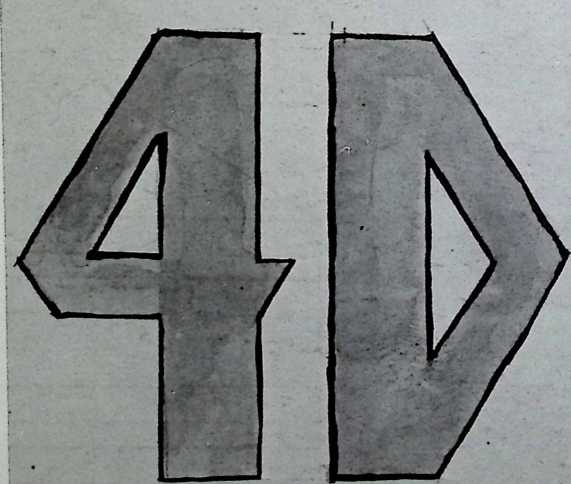

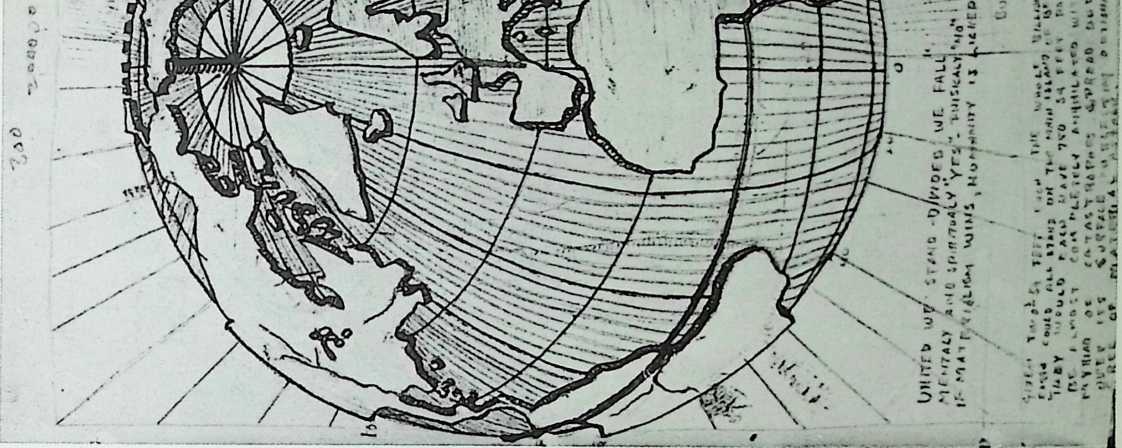
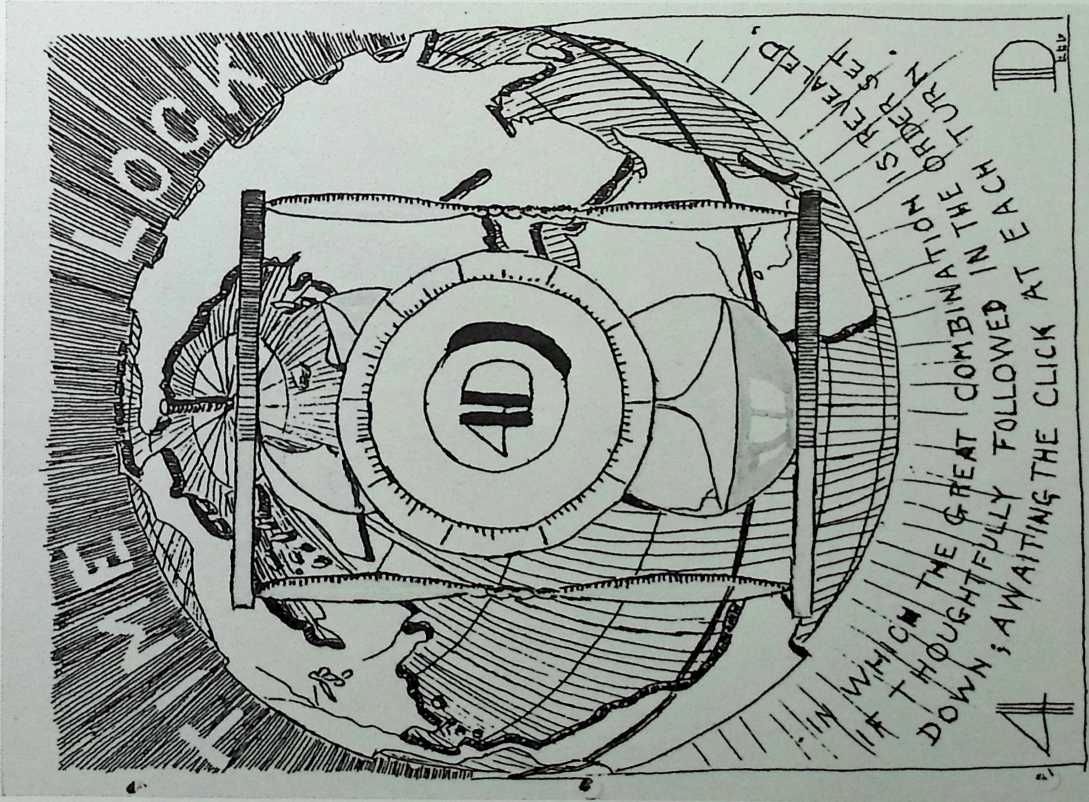
¶ Chapter 1 The Ten-Deck House 1928
The 4D tower dwelling is a vertical expansion of the 4D House. The tower is like the house in every way except for its height, crane elevator, and proposed method of installation. Fuller’s ten-story aluminum buildings were designed to be lowered out of the sky from a blimp into a foundation crater produced with a bomb. Notwithstanding its aviatory installation, the Ten-Deck House is also suffused with maritime references, such as the crane and signal flags of the observation deck. It has four living stories, a separate floor for servants and a nursery, a library, a gymnasium, a swimming pool, a salon and grill, a power station, and a sky promenade. None of the sketches indicate the existence of a staircase or elevator, although in a later project for a hospital Fuller invented an exterior crane lift like the one visible in these sketches for a Ten-Deck House.
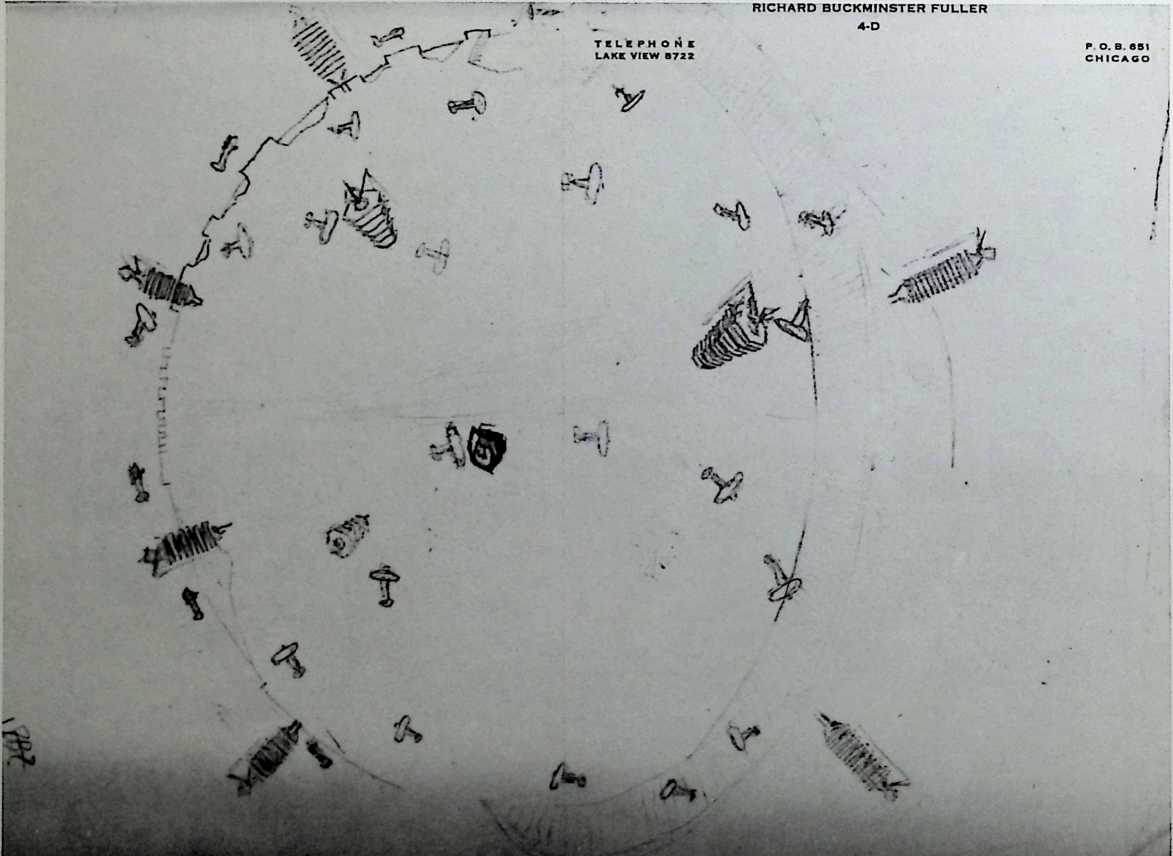
Left—Diagrams of 3 typical stream line equivalents A ■■ A Cube. B. A Cylinder. C. A Streamlined Unit Cross Hatched area indicate the size of the equivalent units. • Right—Model of ten dedc dymaxion structure with streamlining shield. (See text)
SHELTER, NOVEMBER, 1931
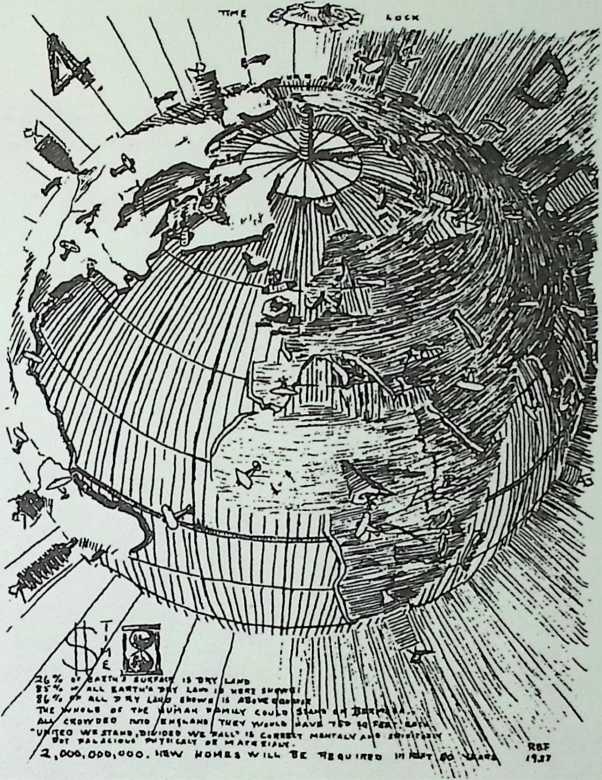
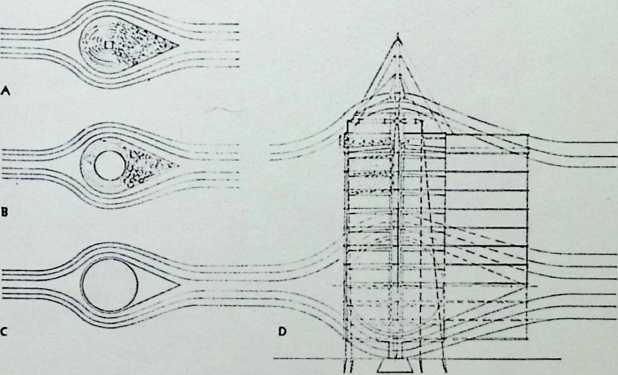
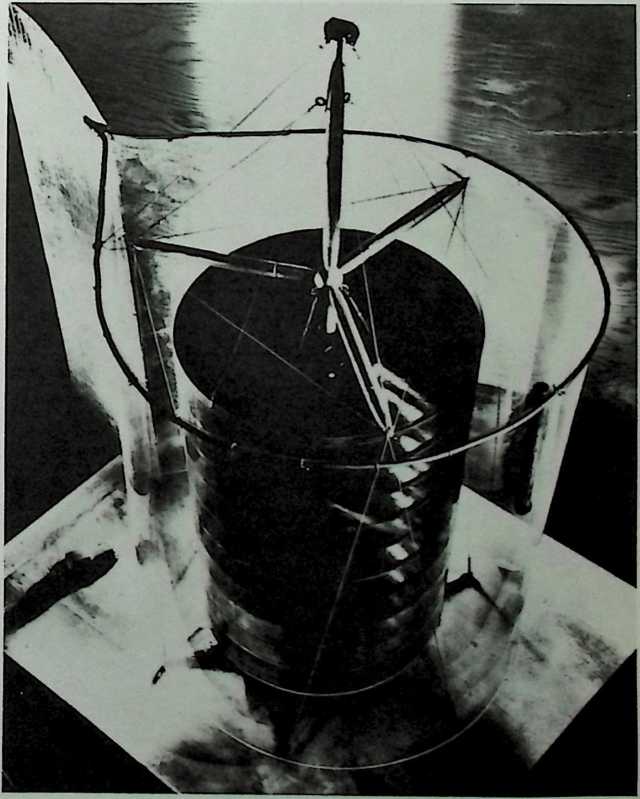

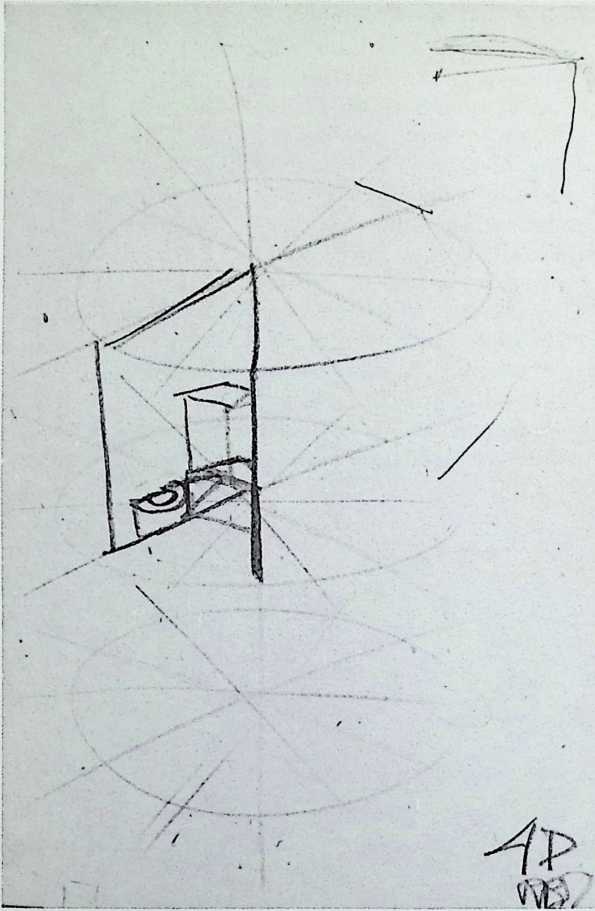
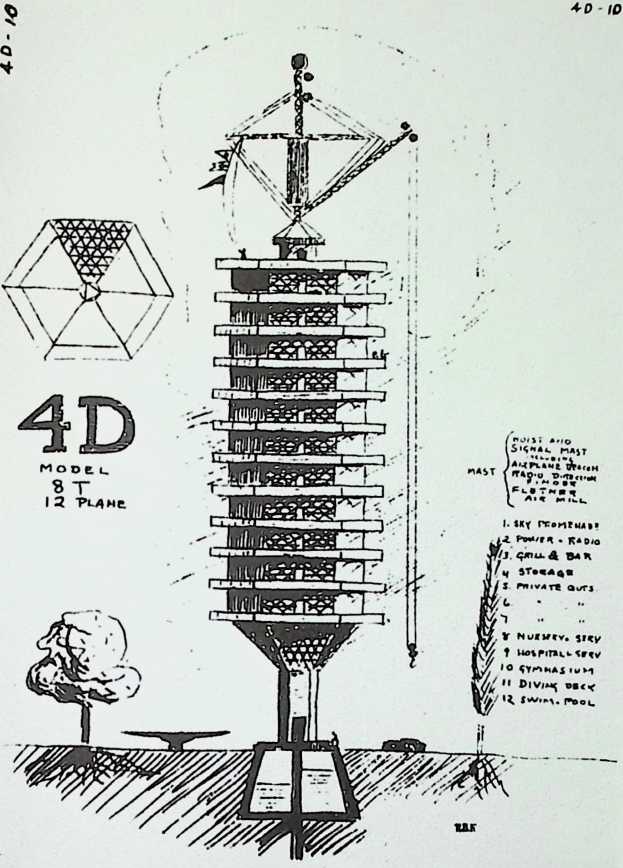
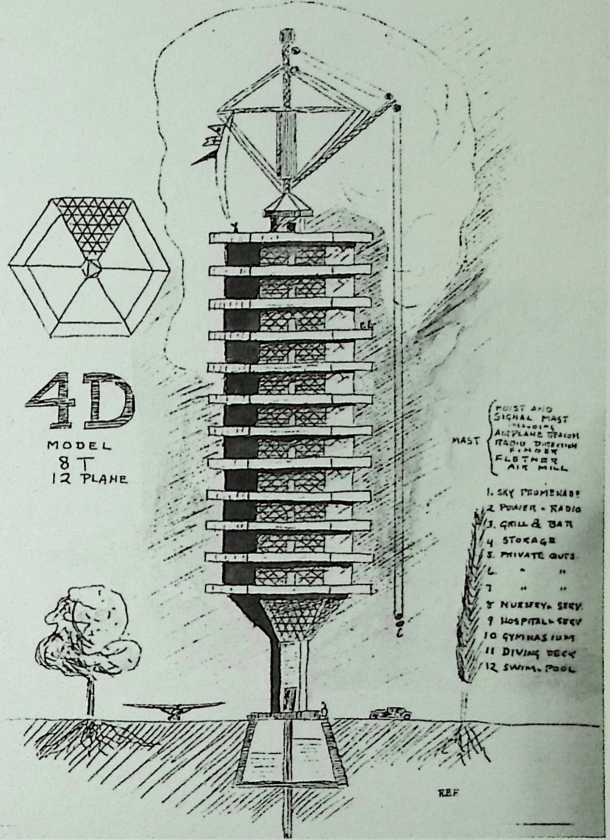
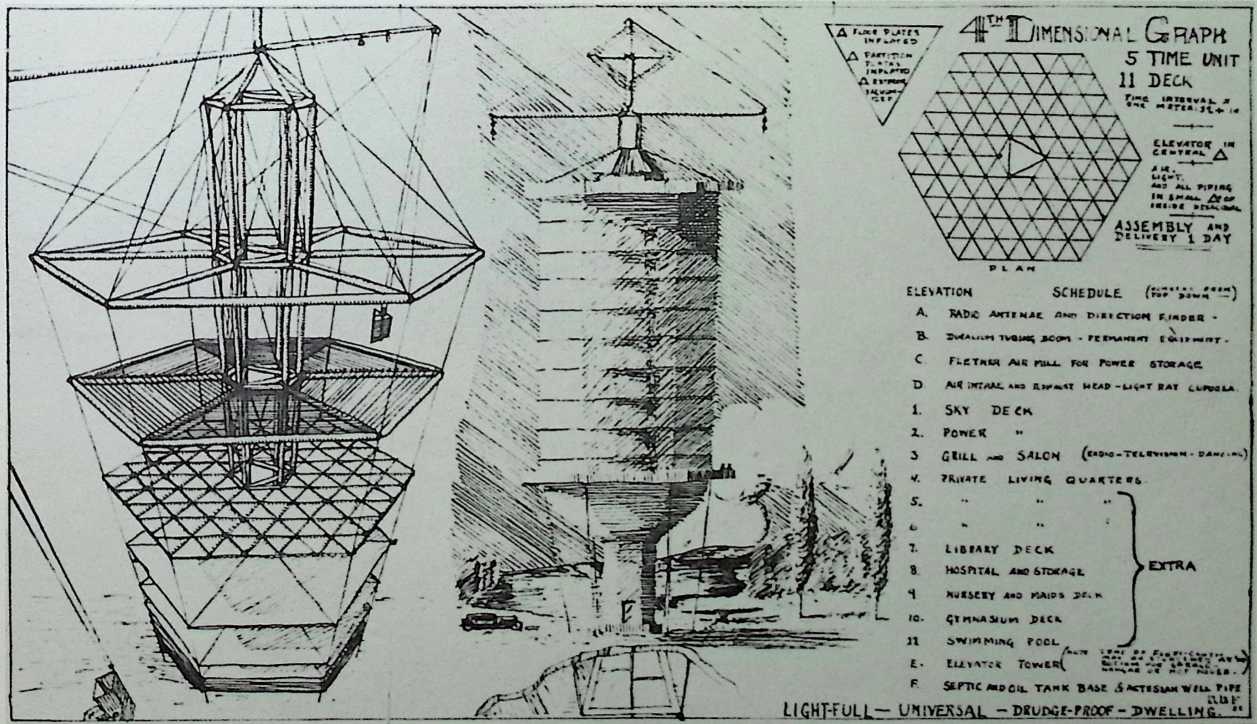
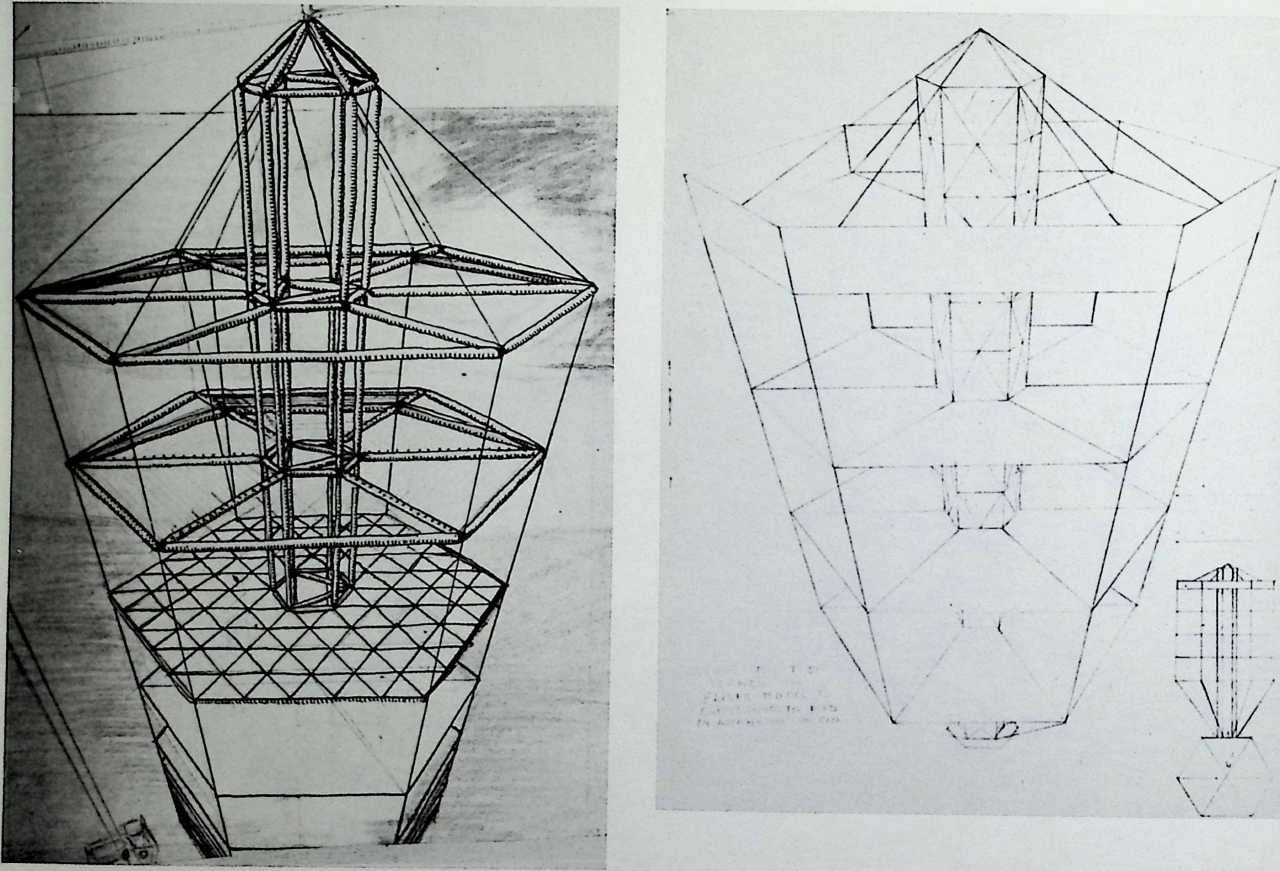

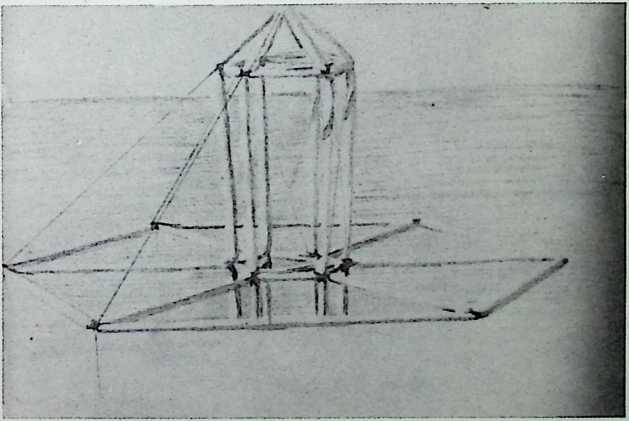
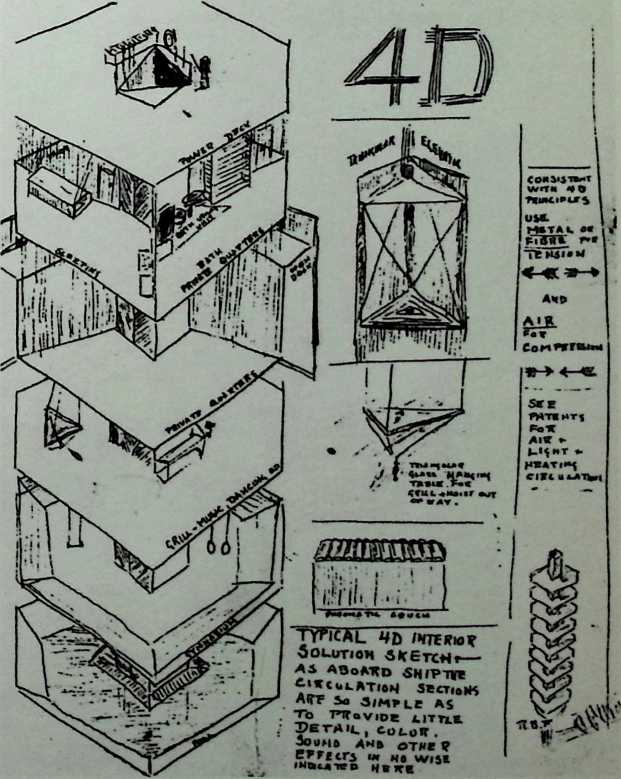
, 1 -
16--4D
A LARGER VARIATION OF THE SAME BASIC PRINCIPLE, SHOWING THE CONSTRUCTION DETAILS AND THE
APPEARANCE OF A MULTI STORV HOUSE
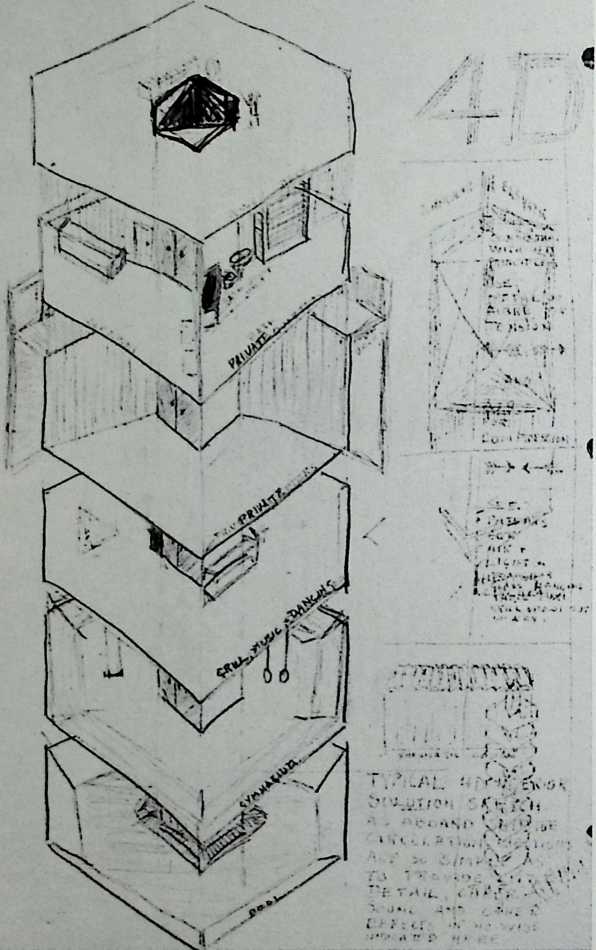
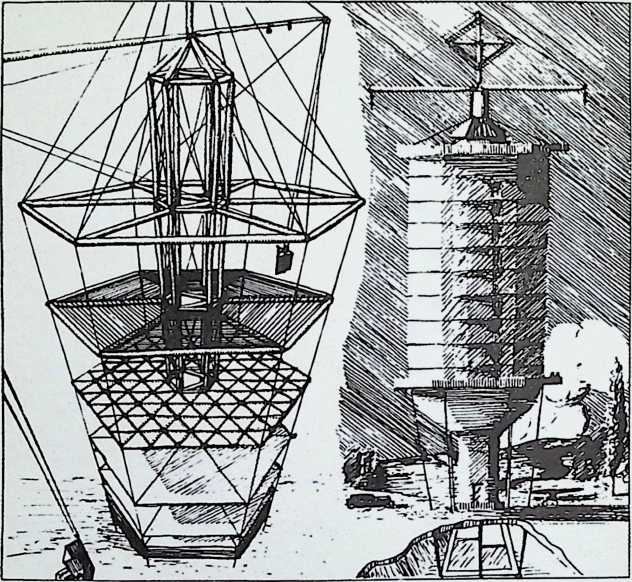
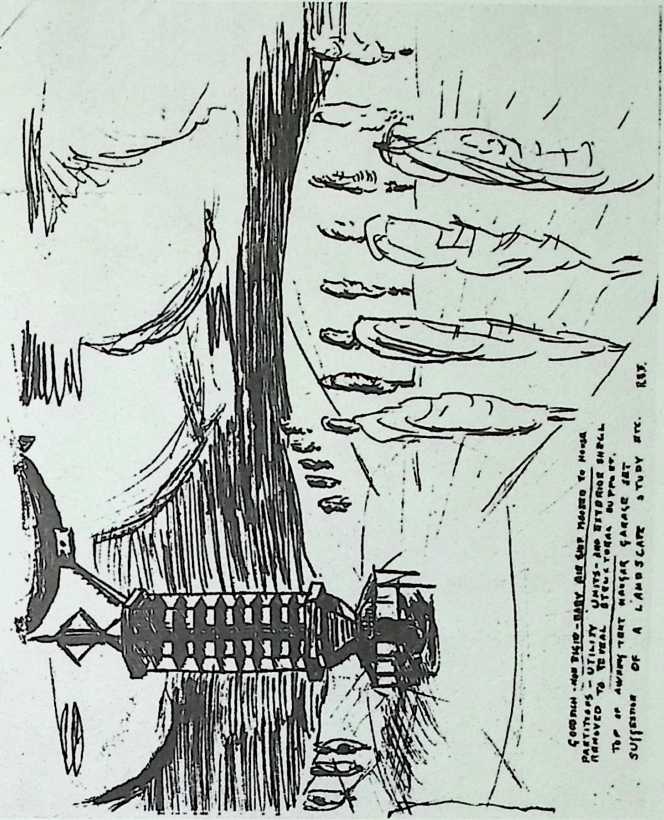
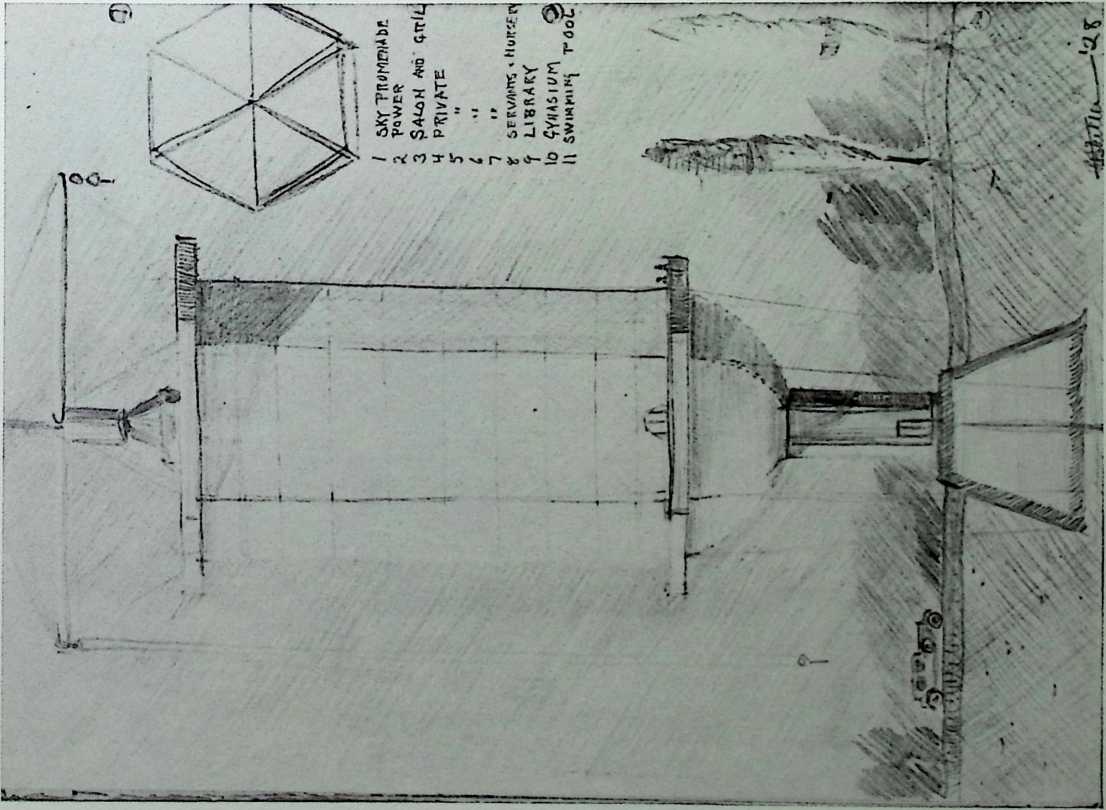
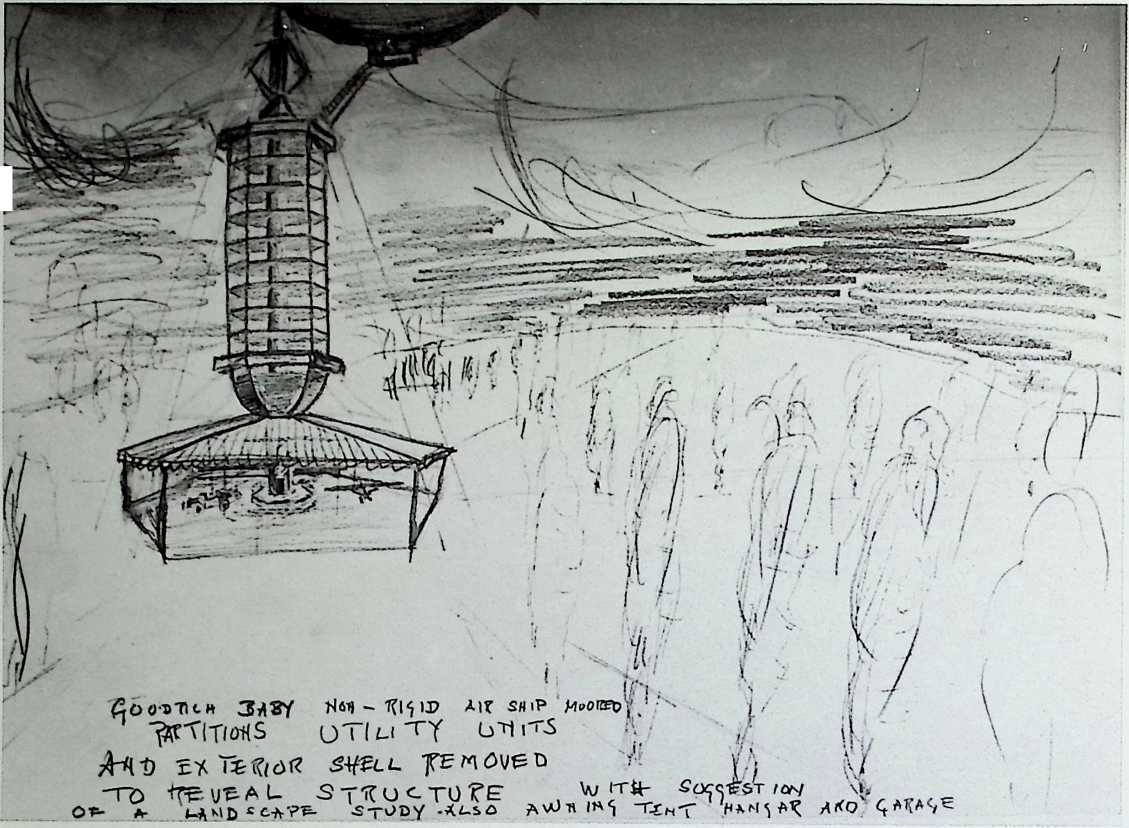
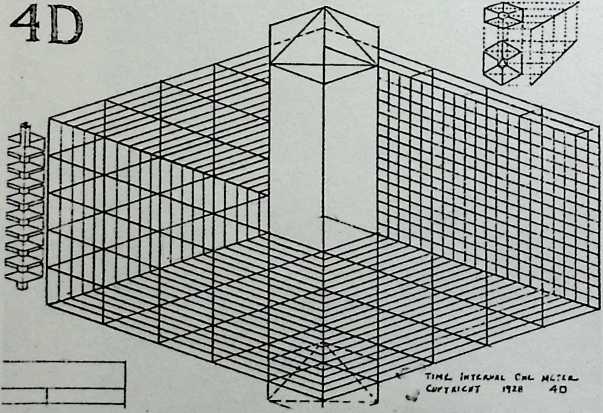
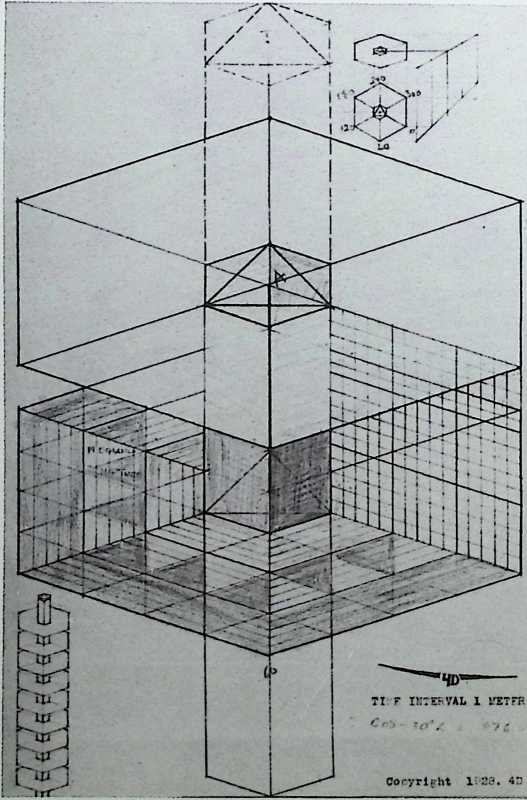

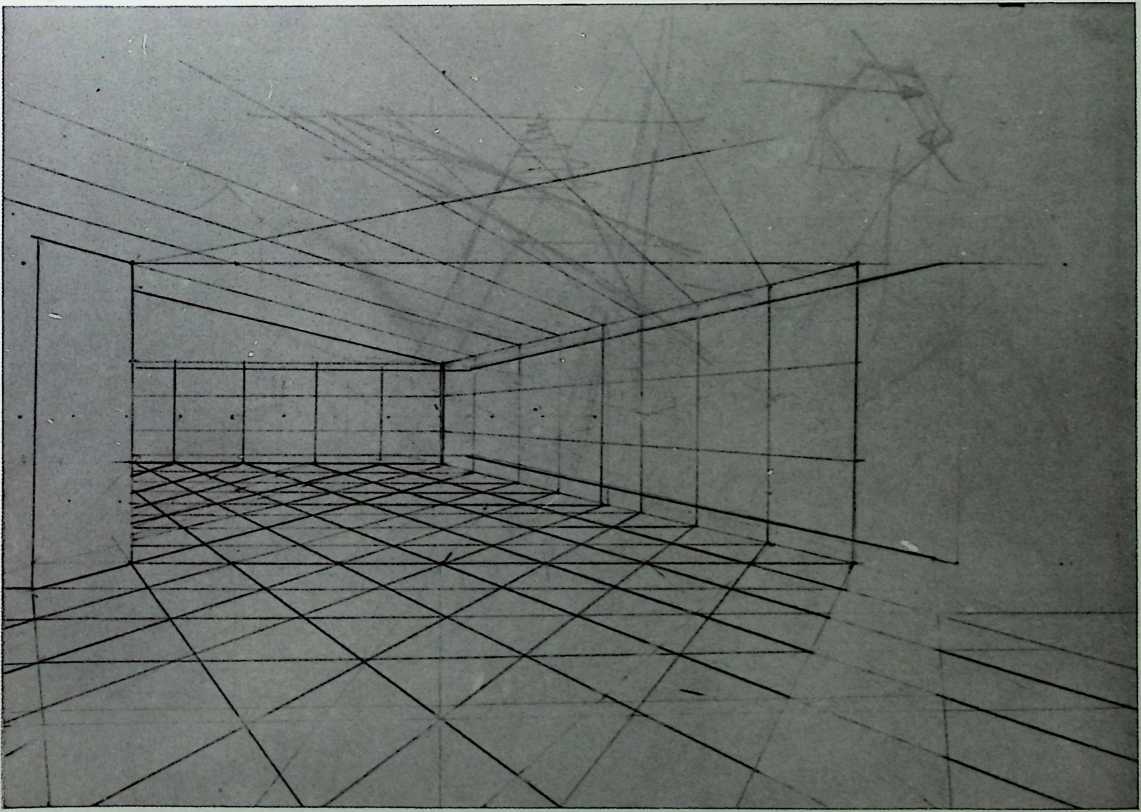
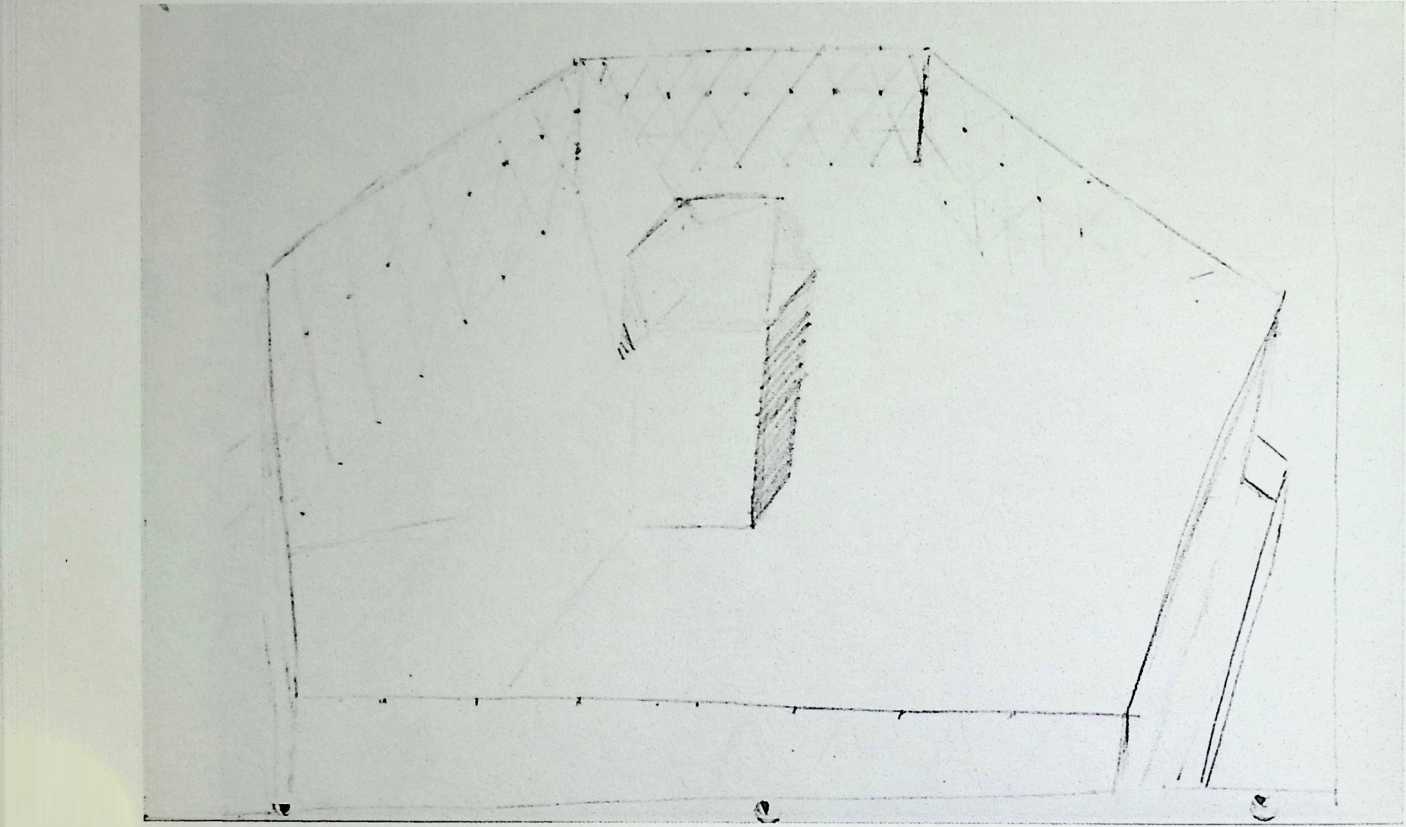

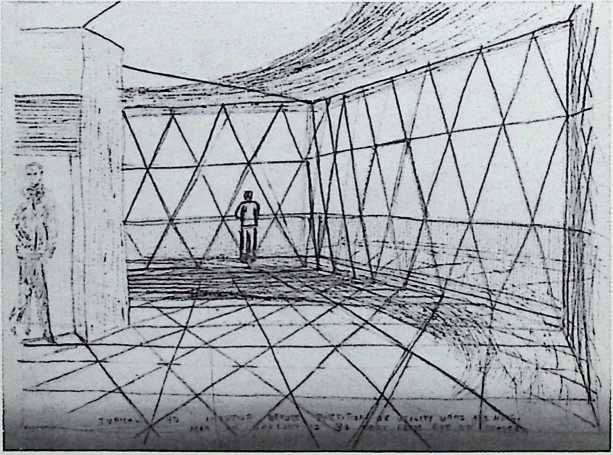
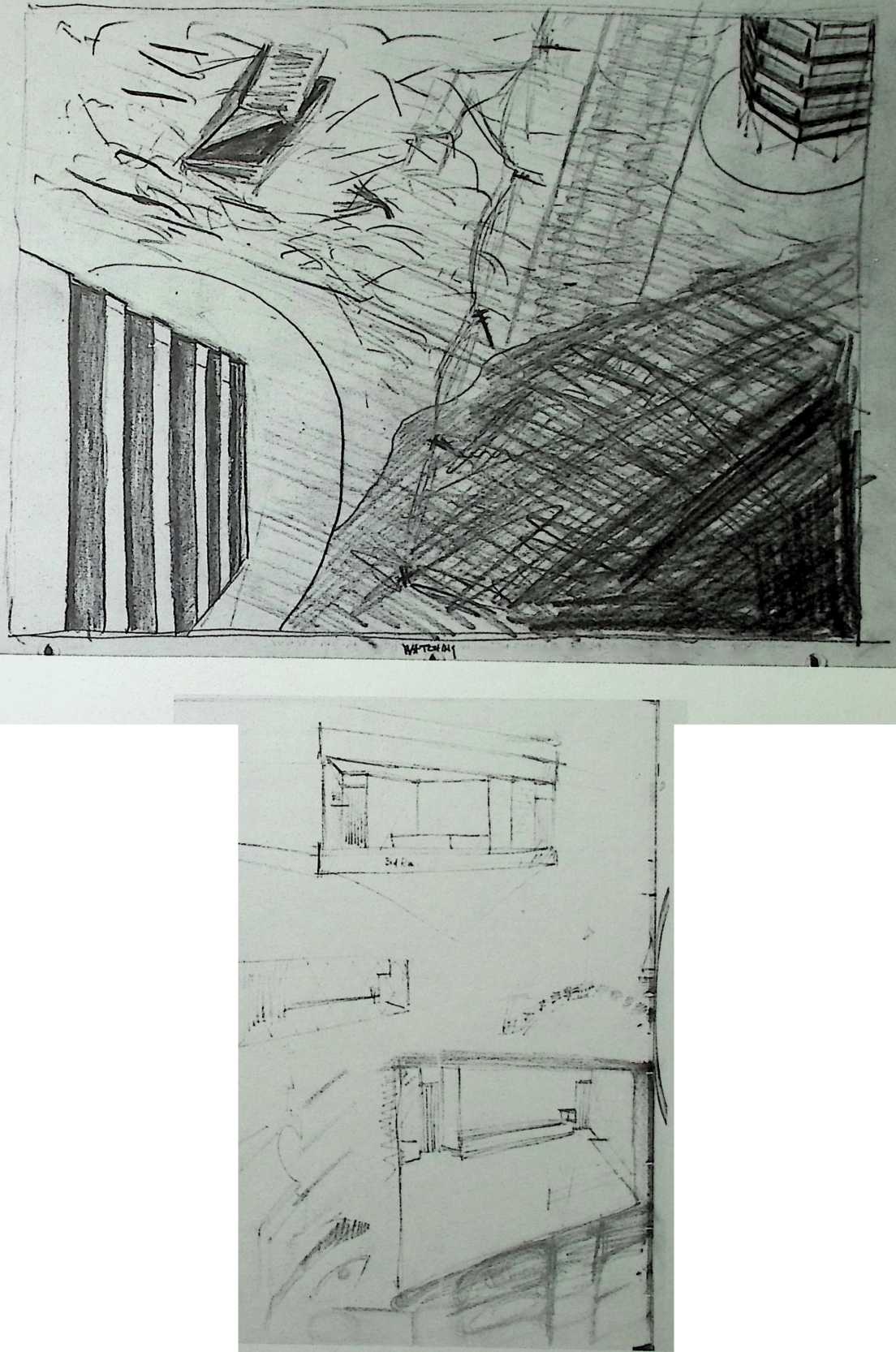
K THE HuTHCamb. txJnA'Hj) -n>w«n
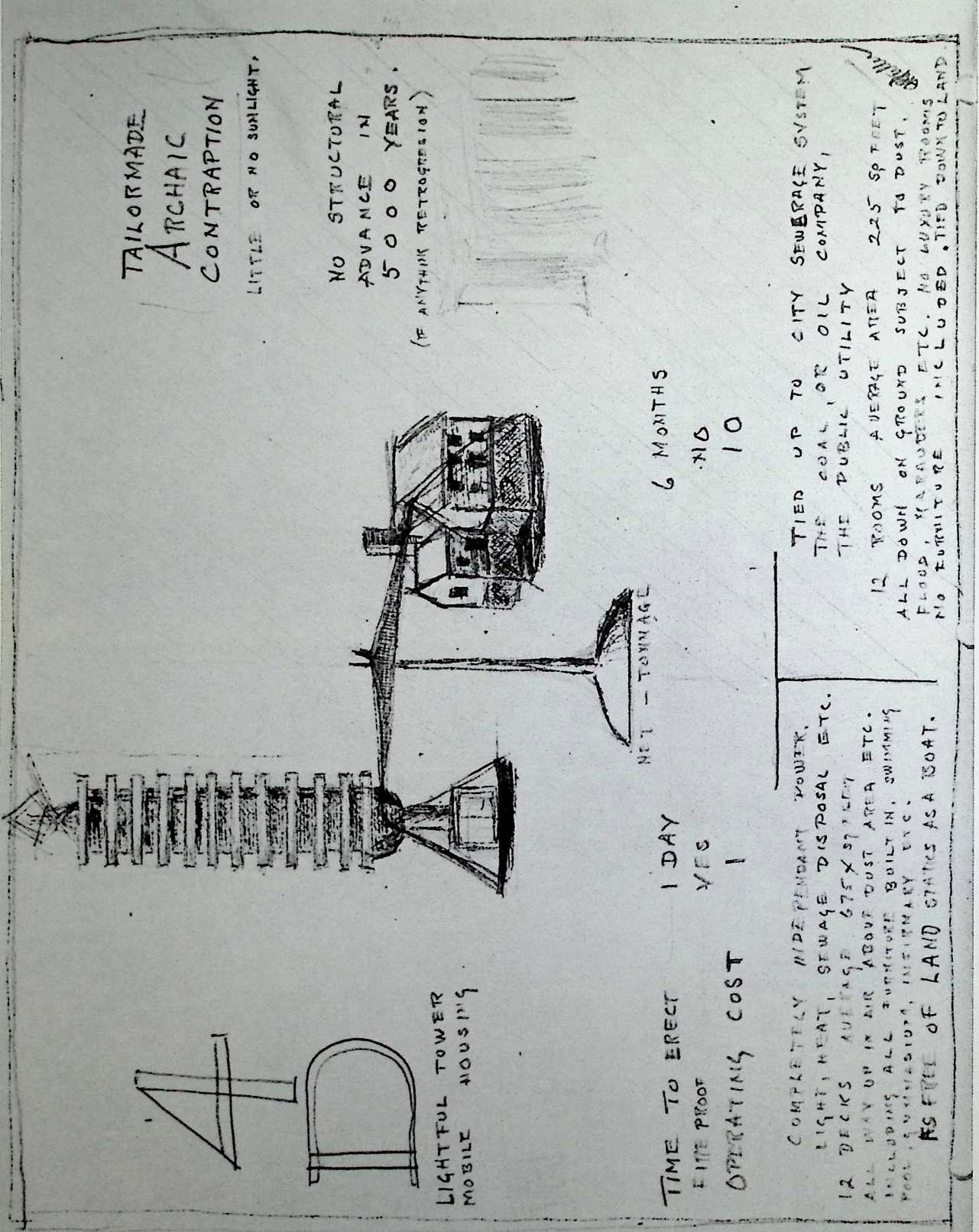
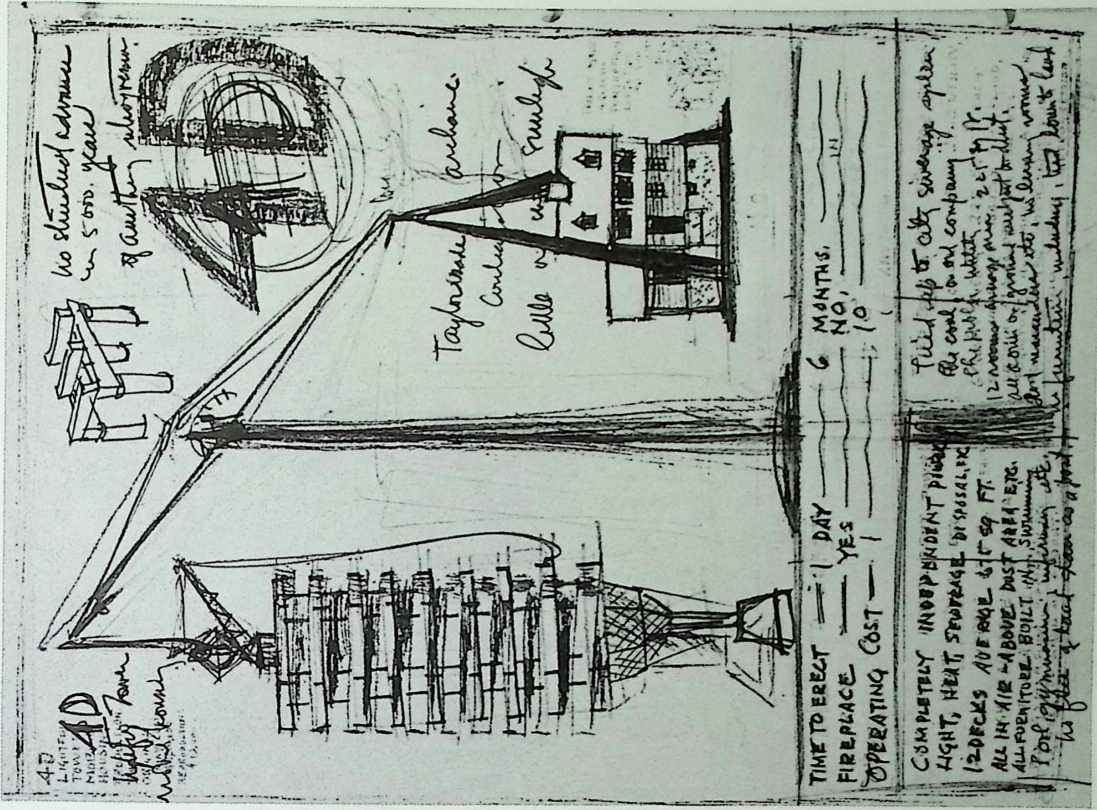
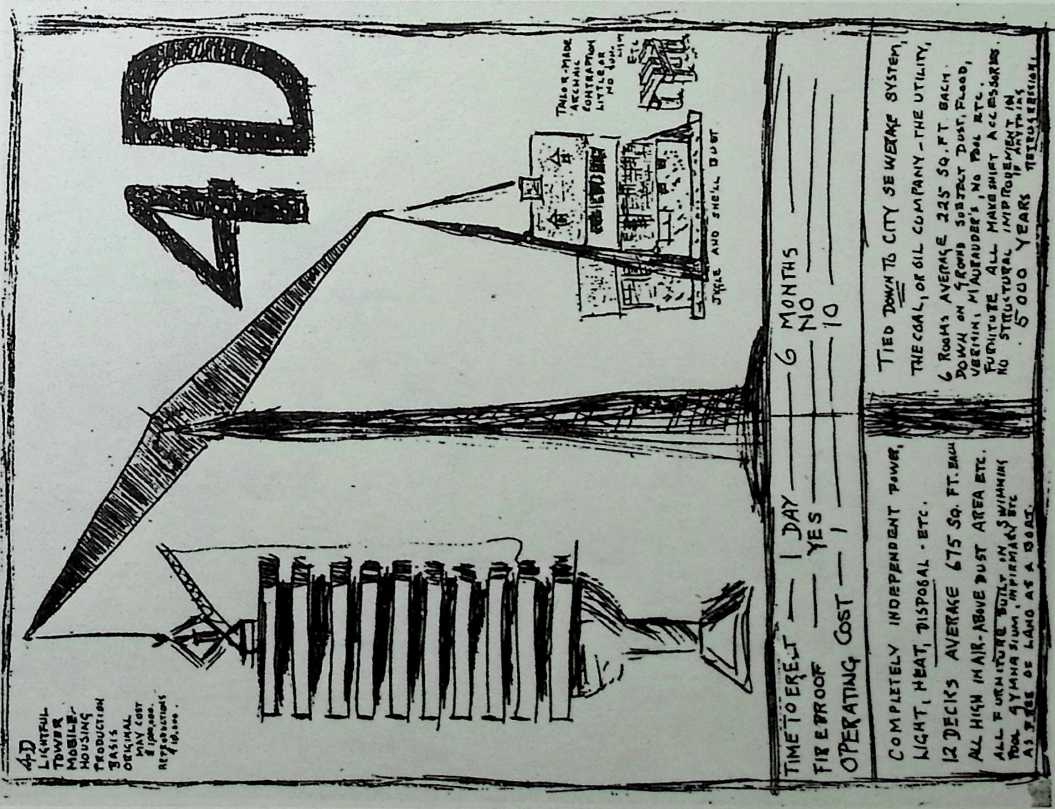
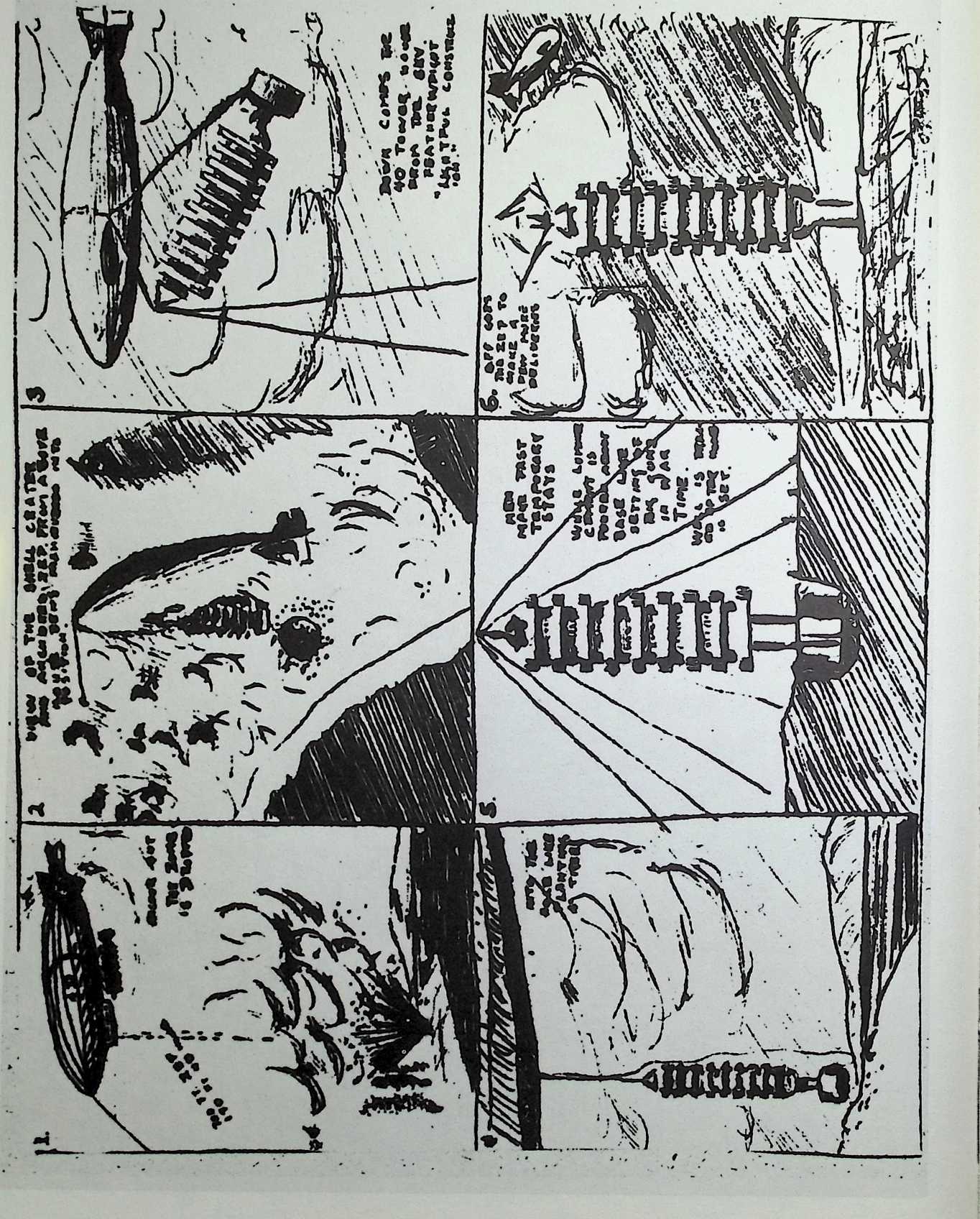
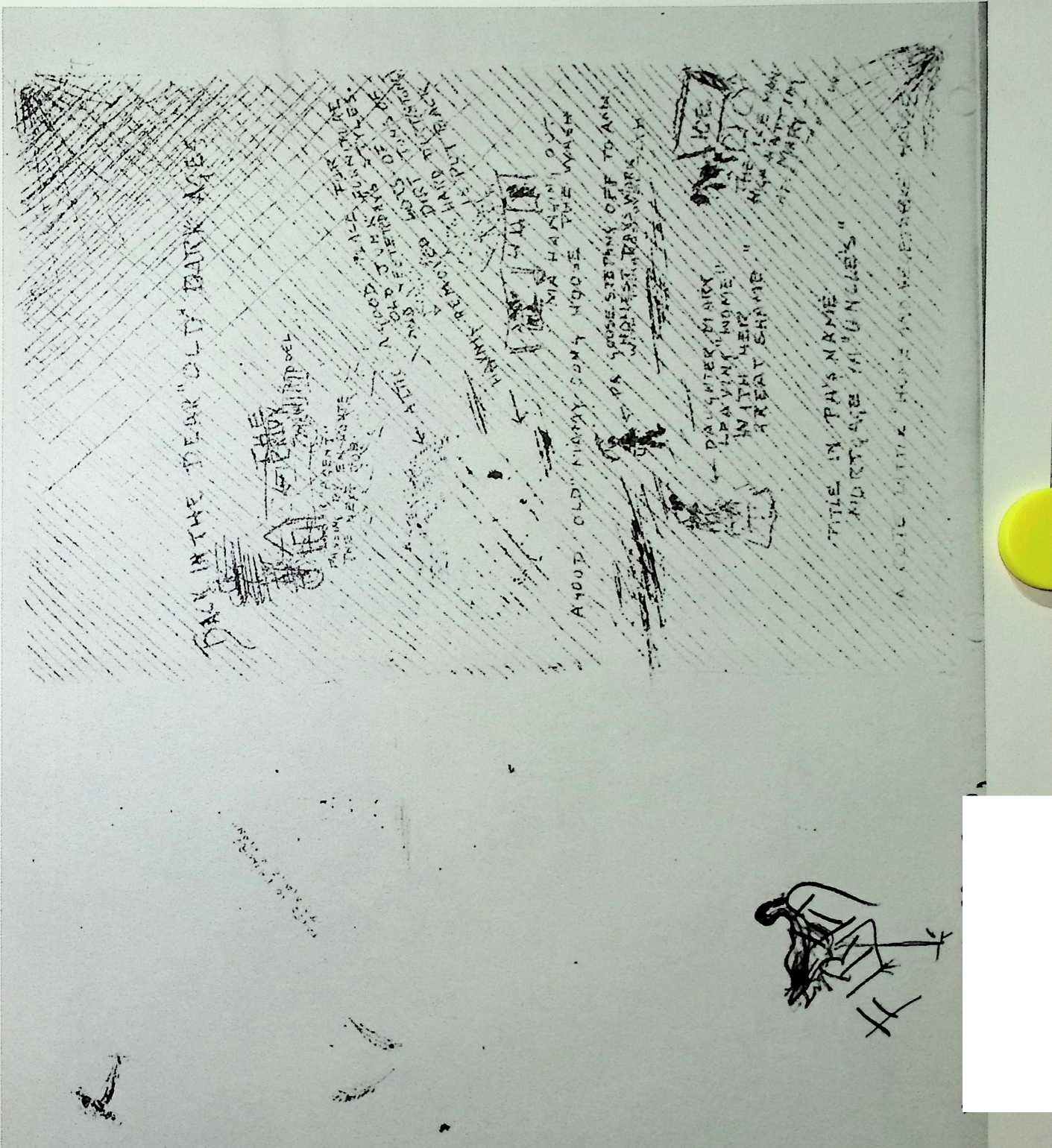
![]()
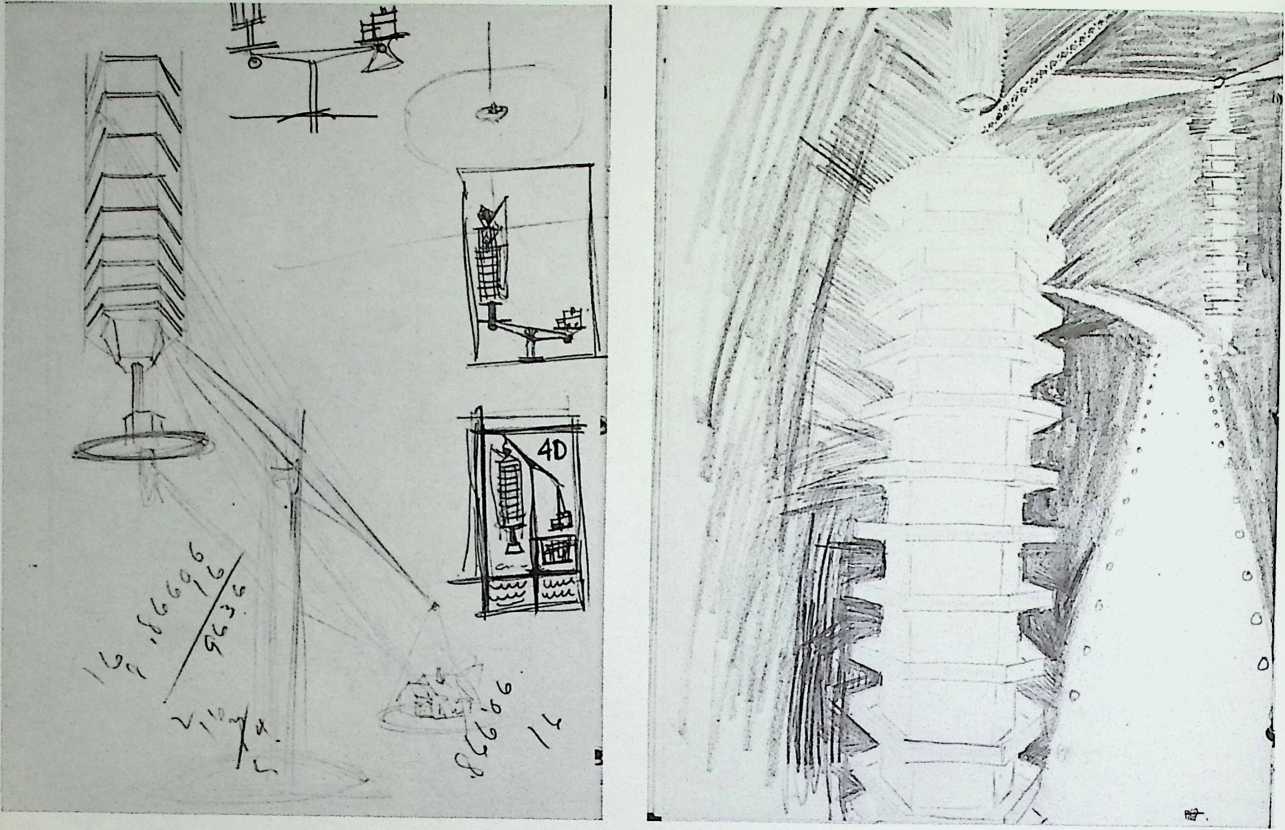
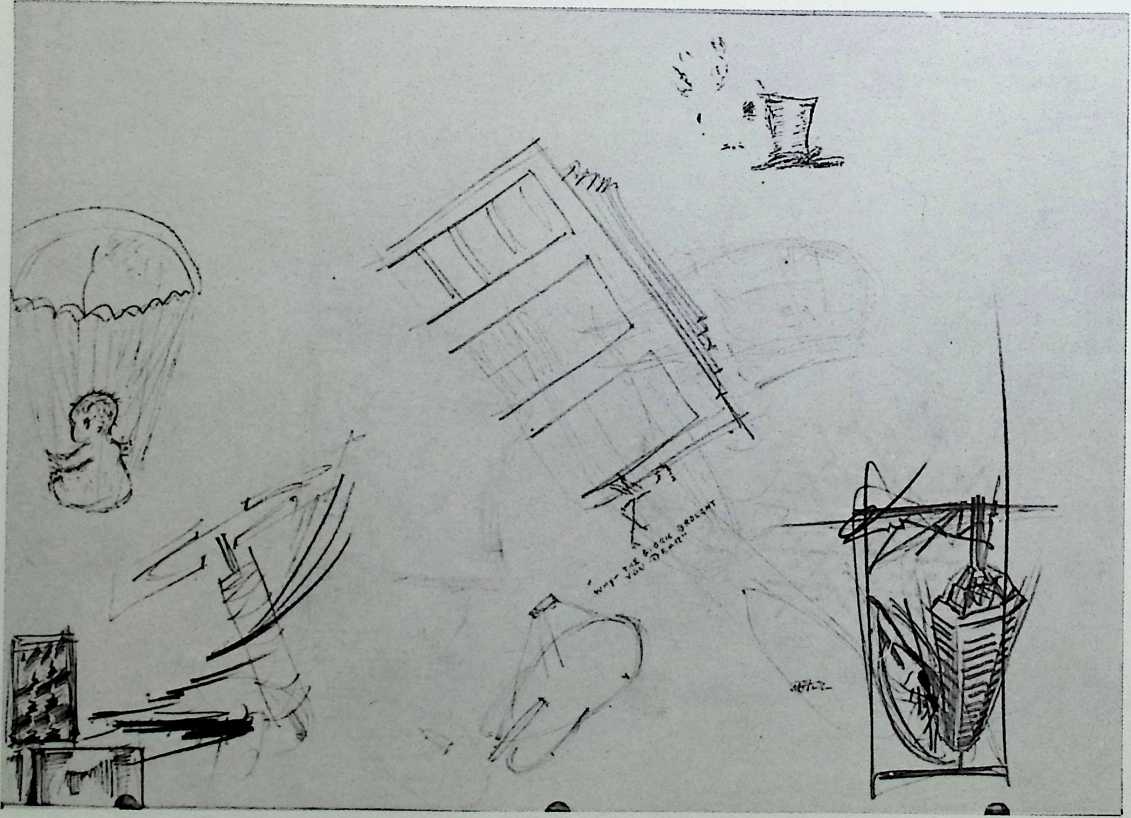
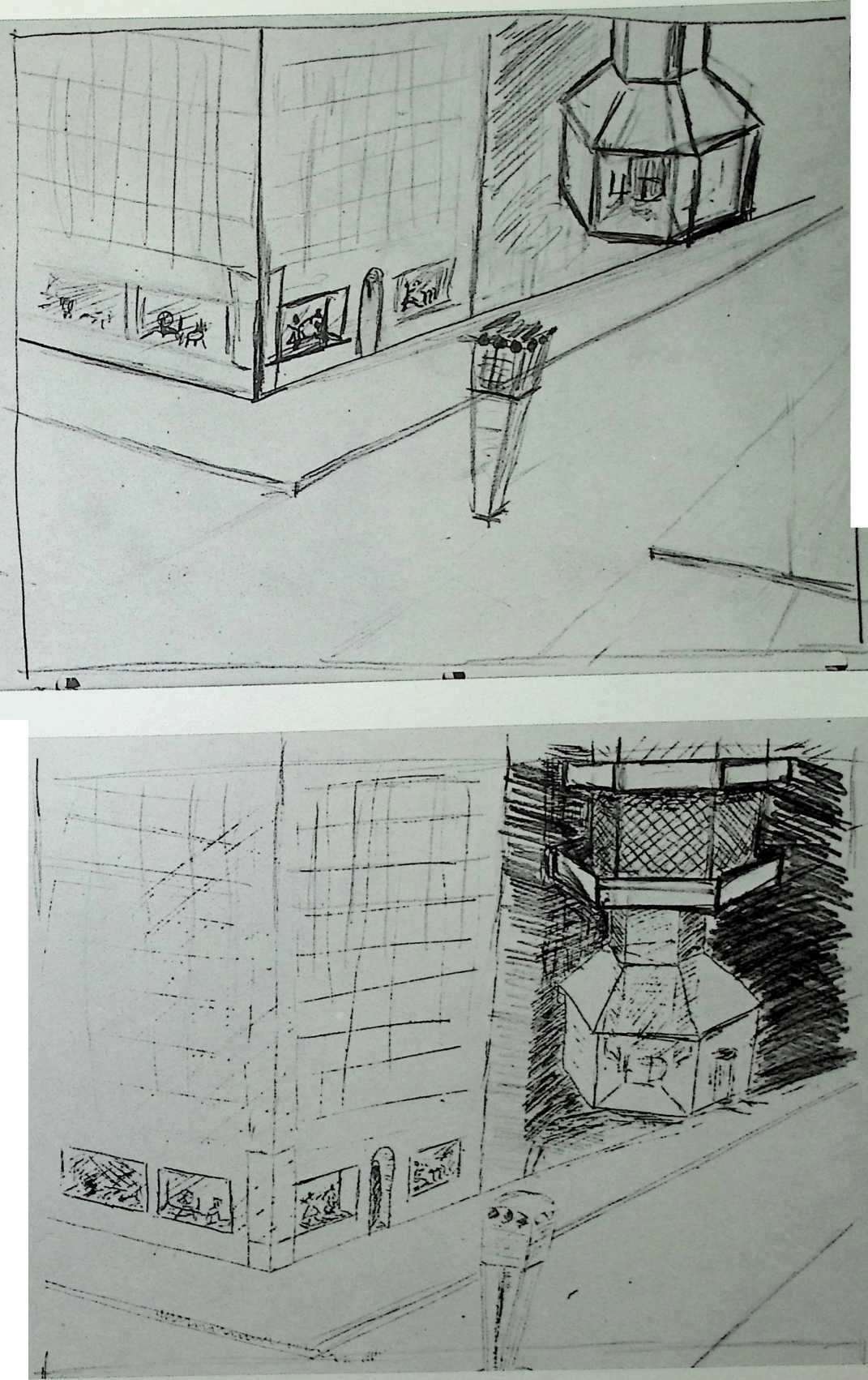
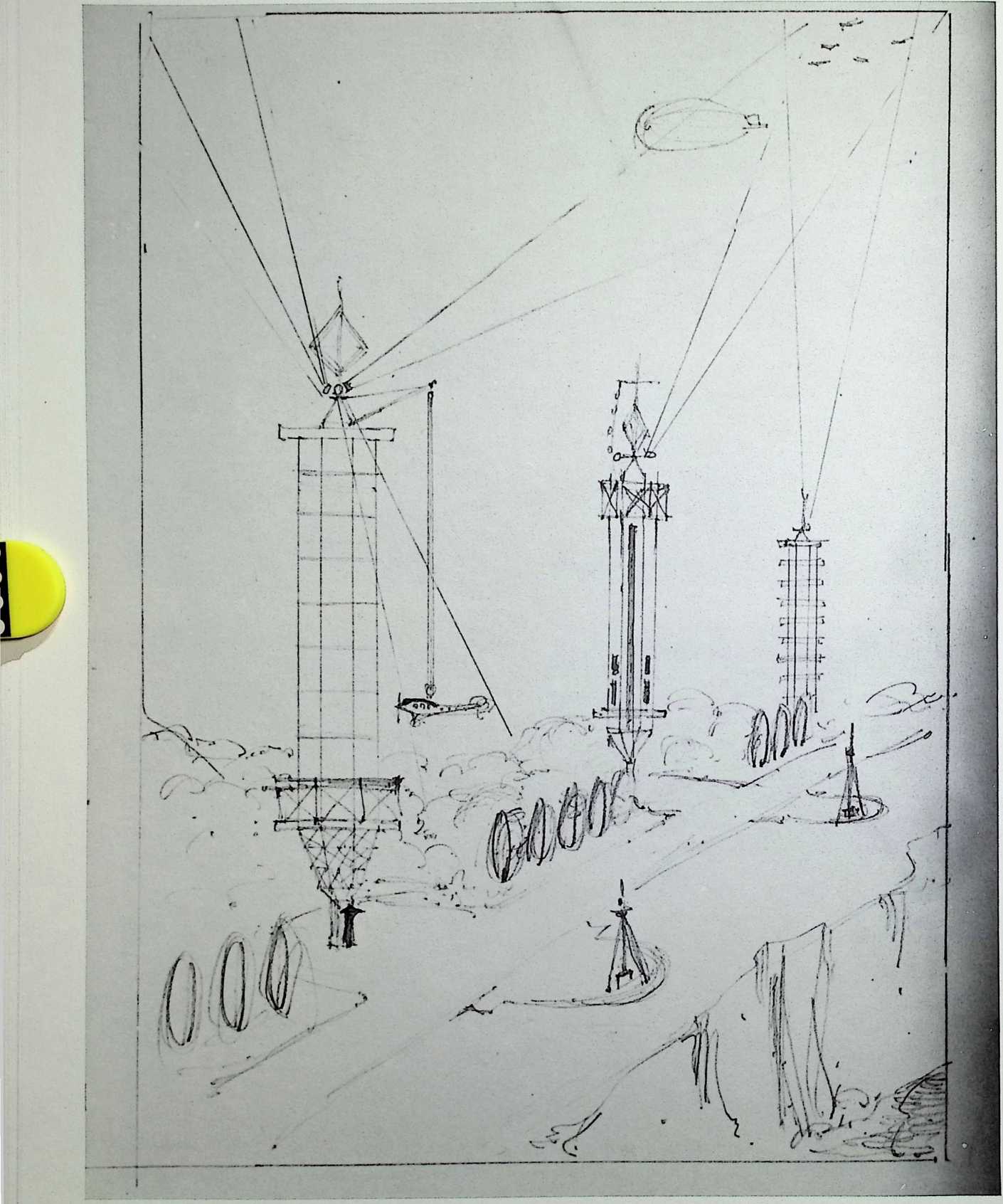
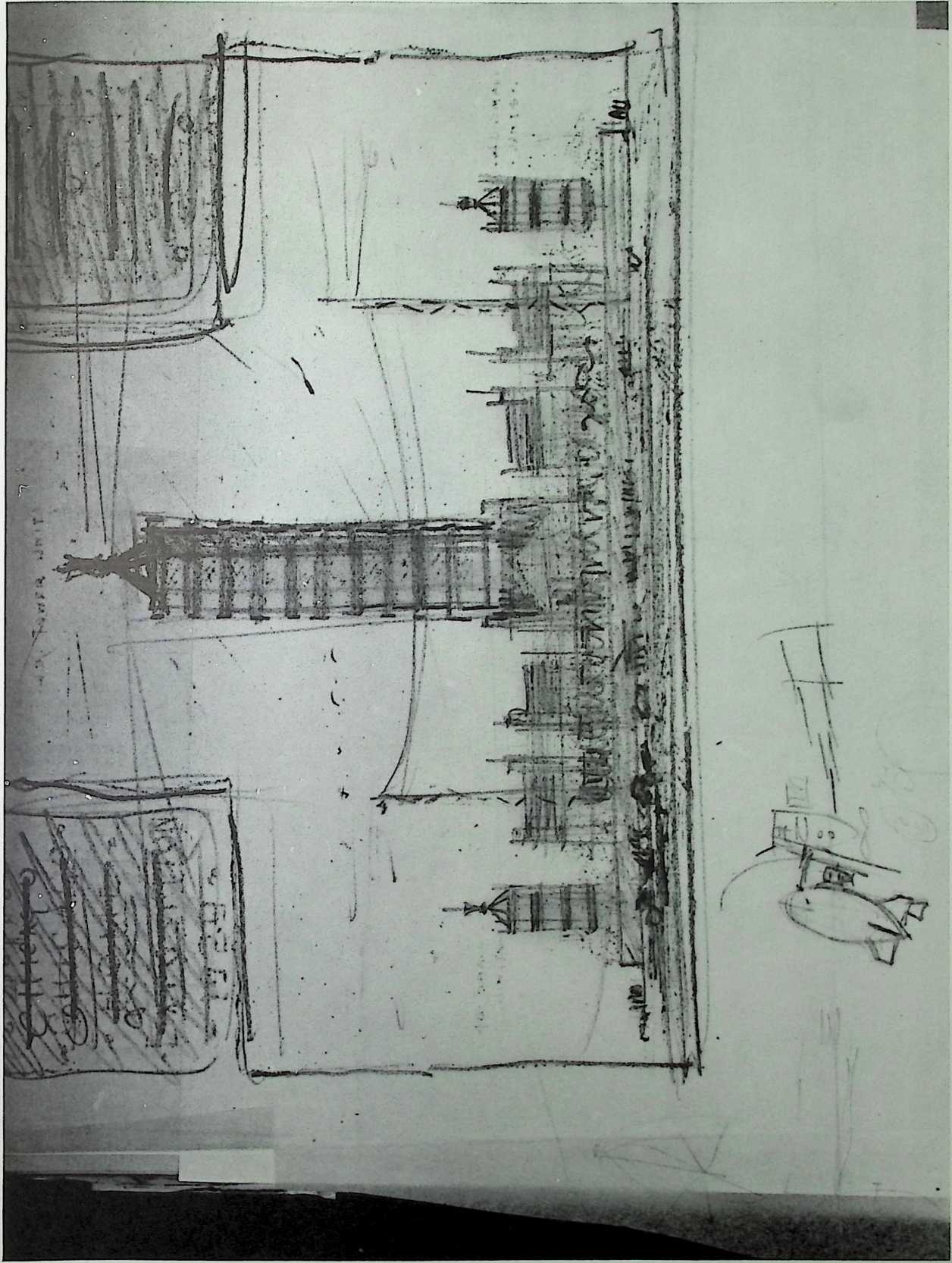
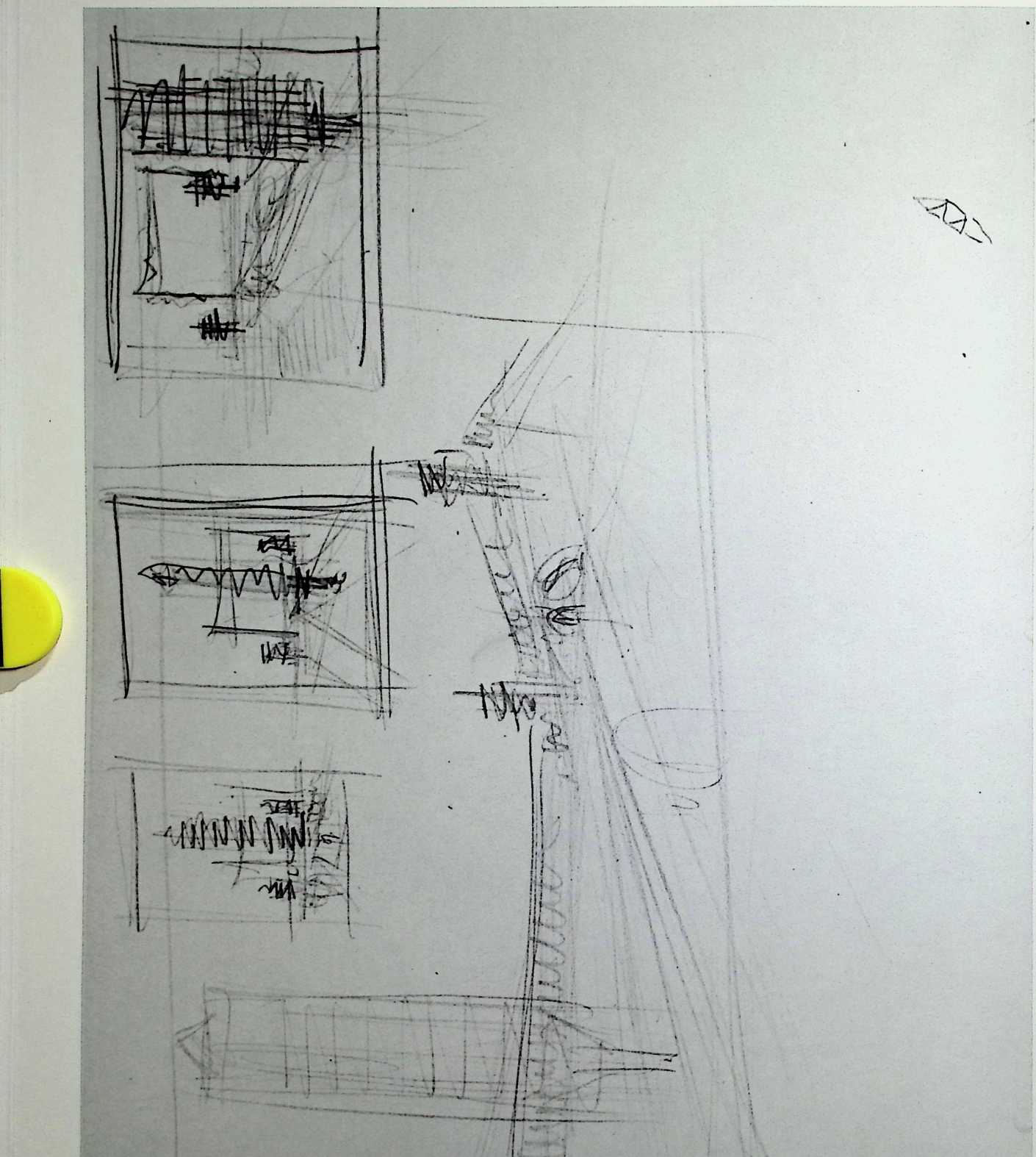
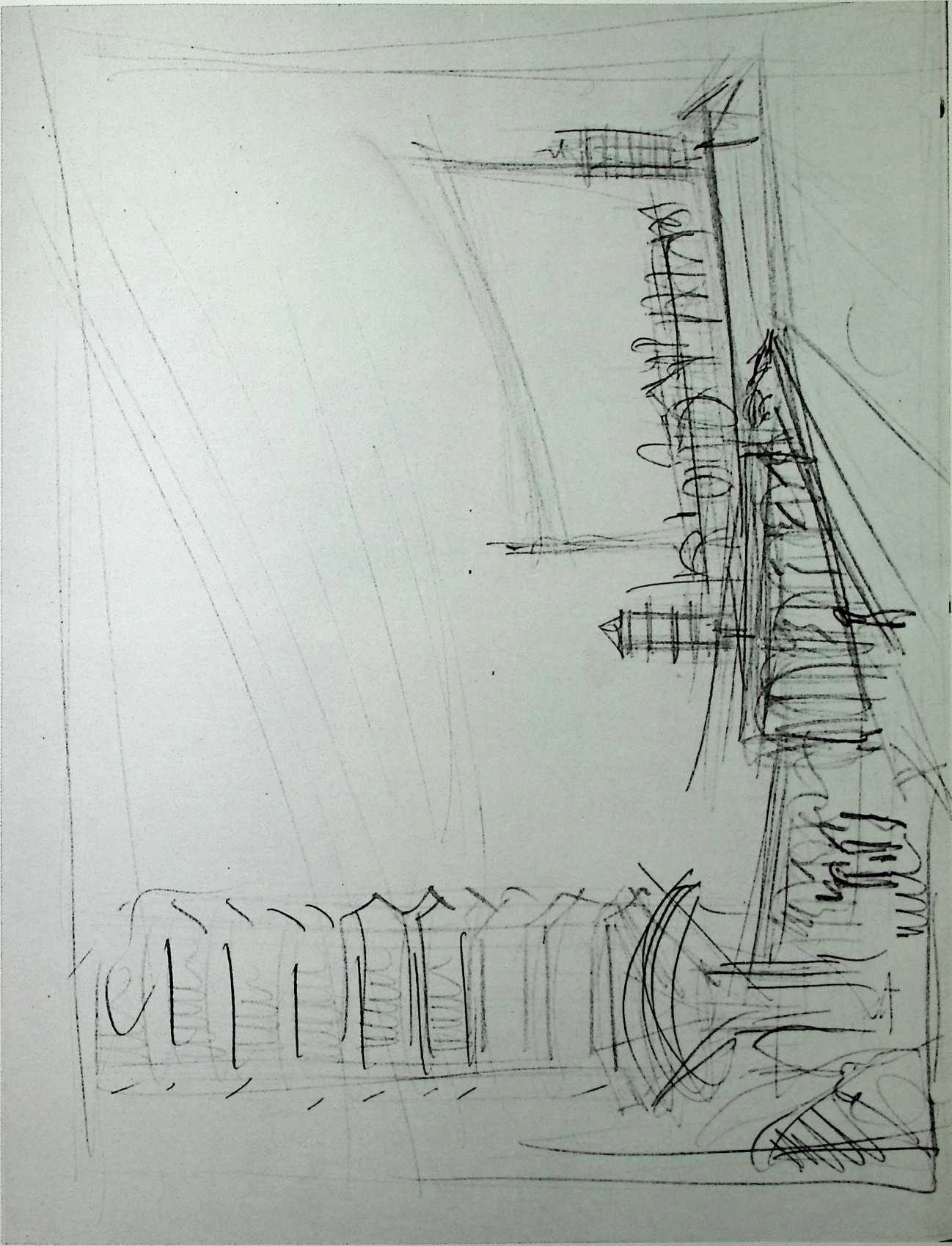
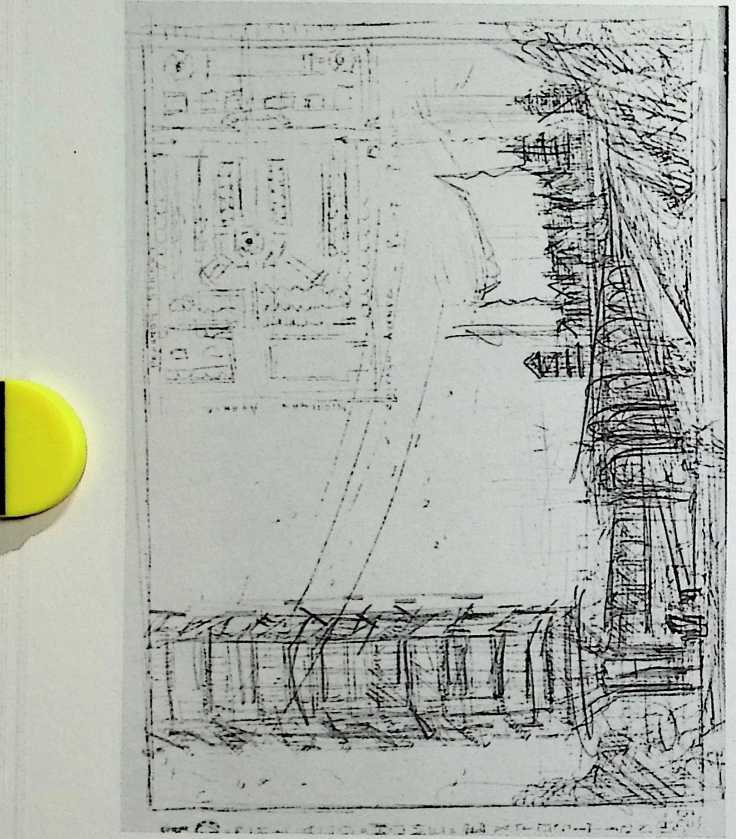
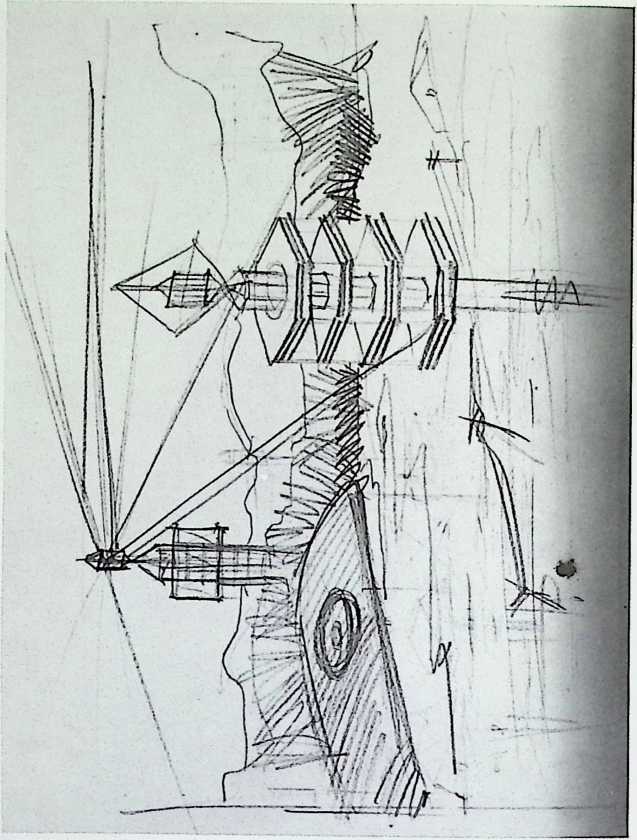
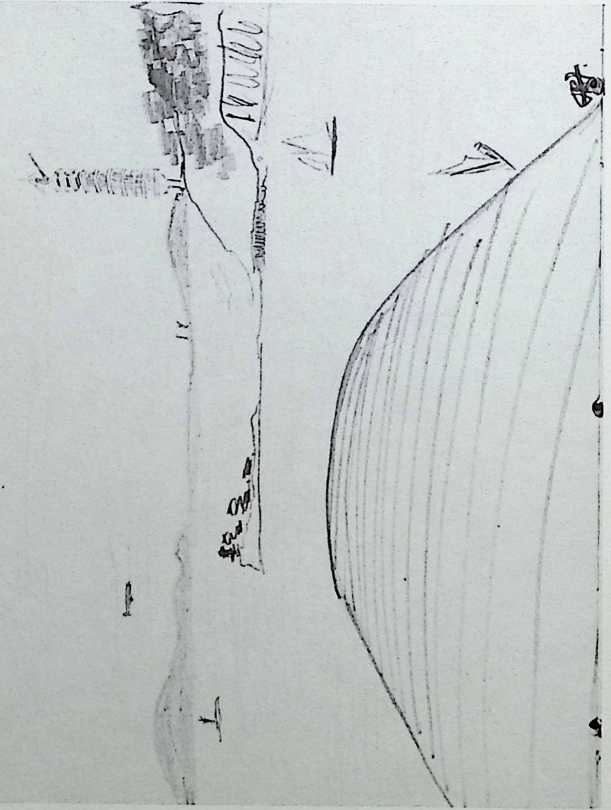
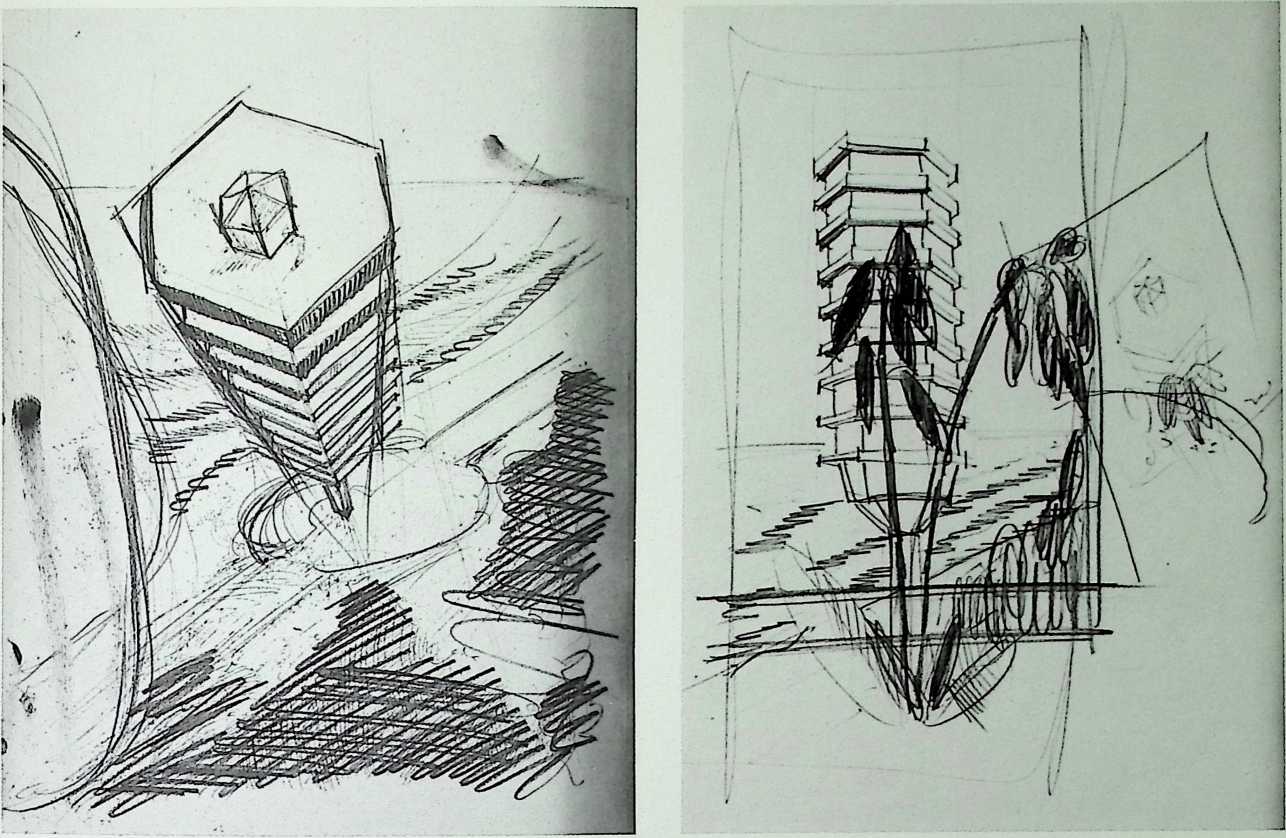
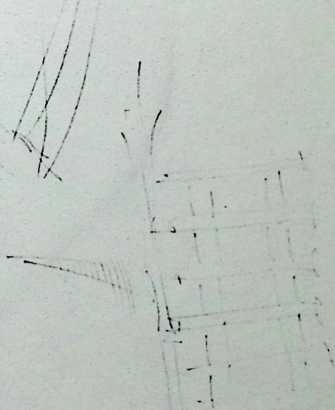
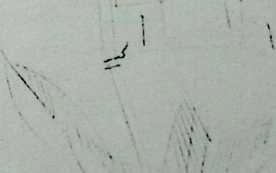
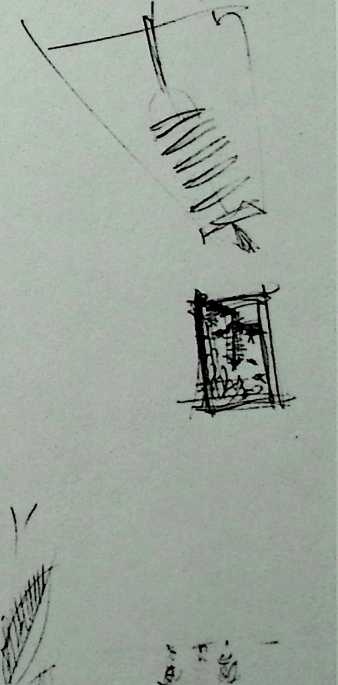


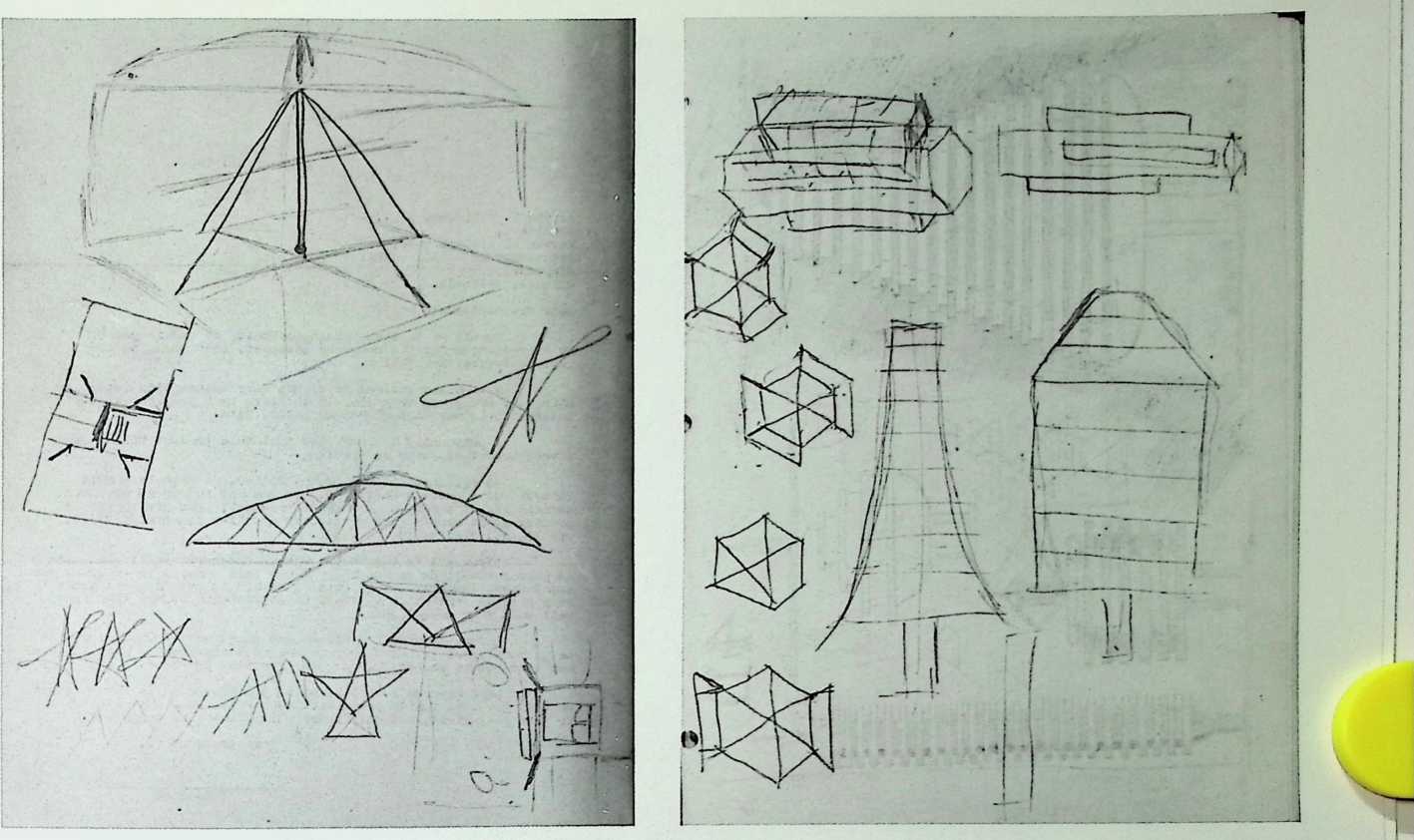
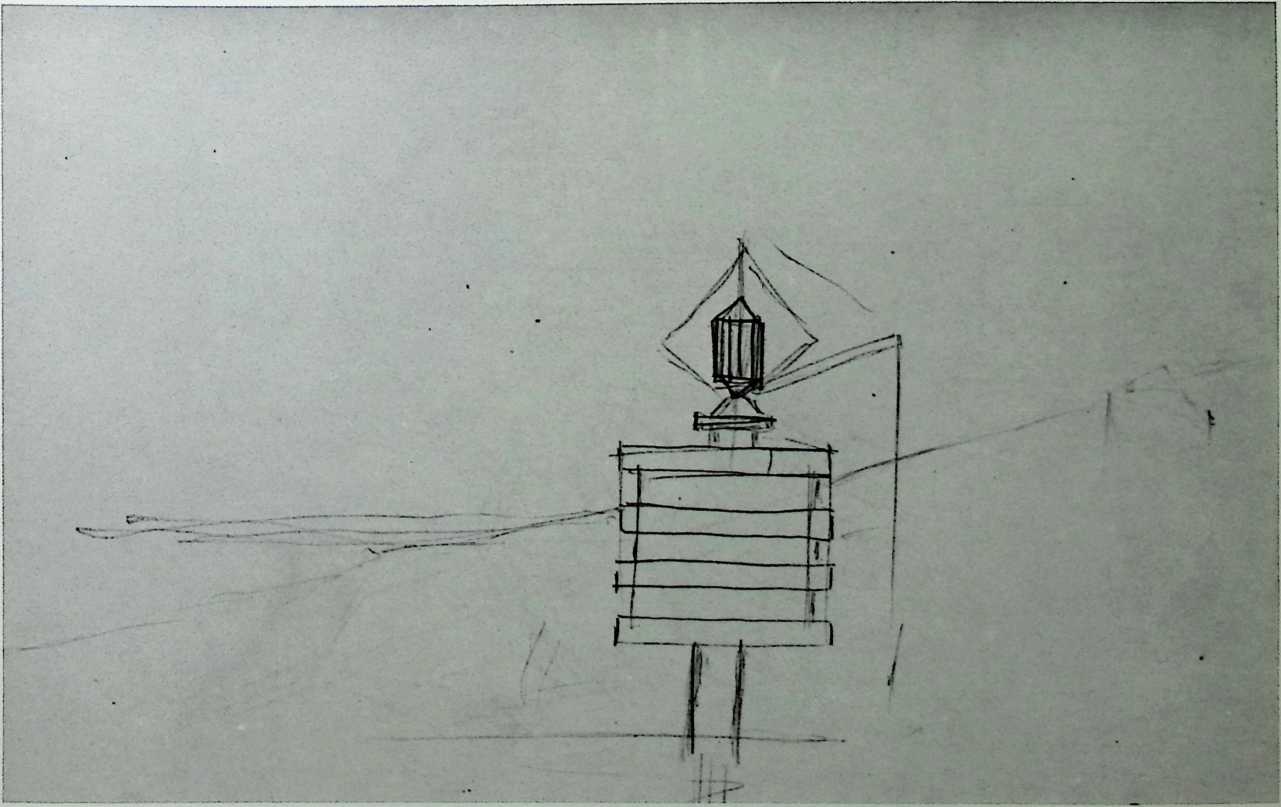

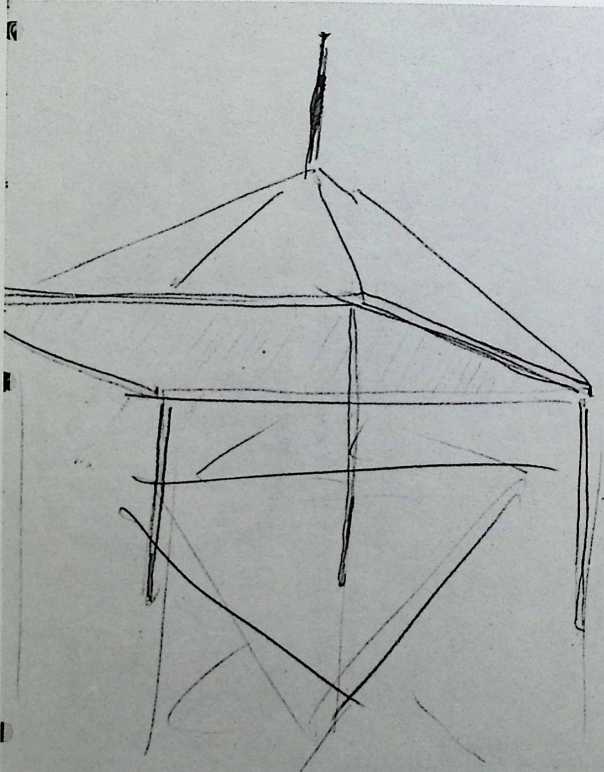
¶ Chapter 2 Skyscraper Suspension Masts 1928--1929
These towers are at least twice the height of the ones on which they are based, although they too are supported by a single centralized mast and anchored by a solid rhombohedron. In certain variations of this type, the sizes of the floors are reduced toward the top, giving one the impression of a ziggurat.
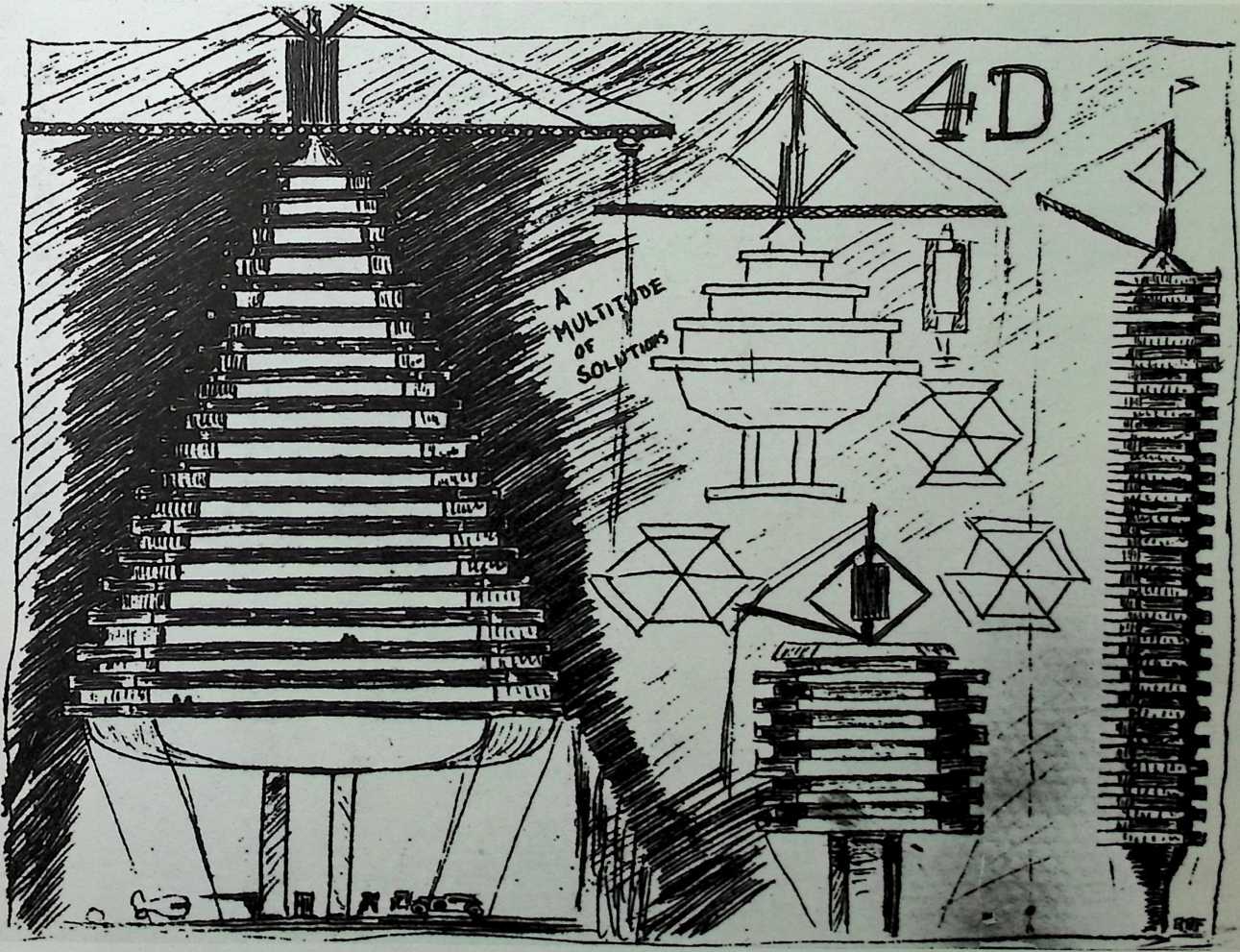
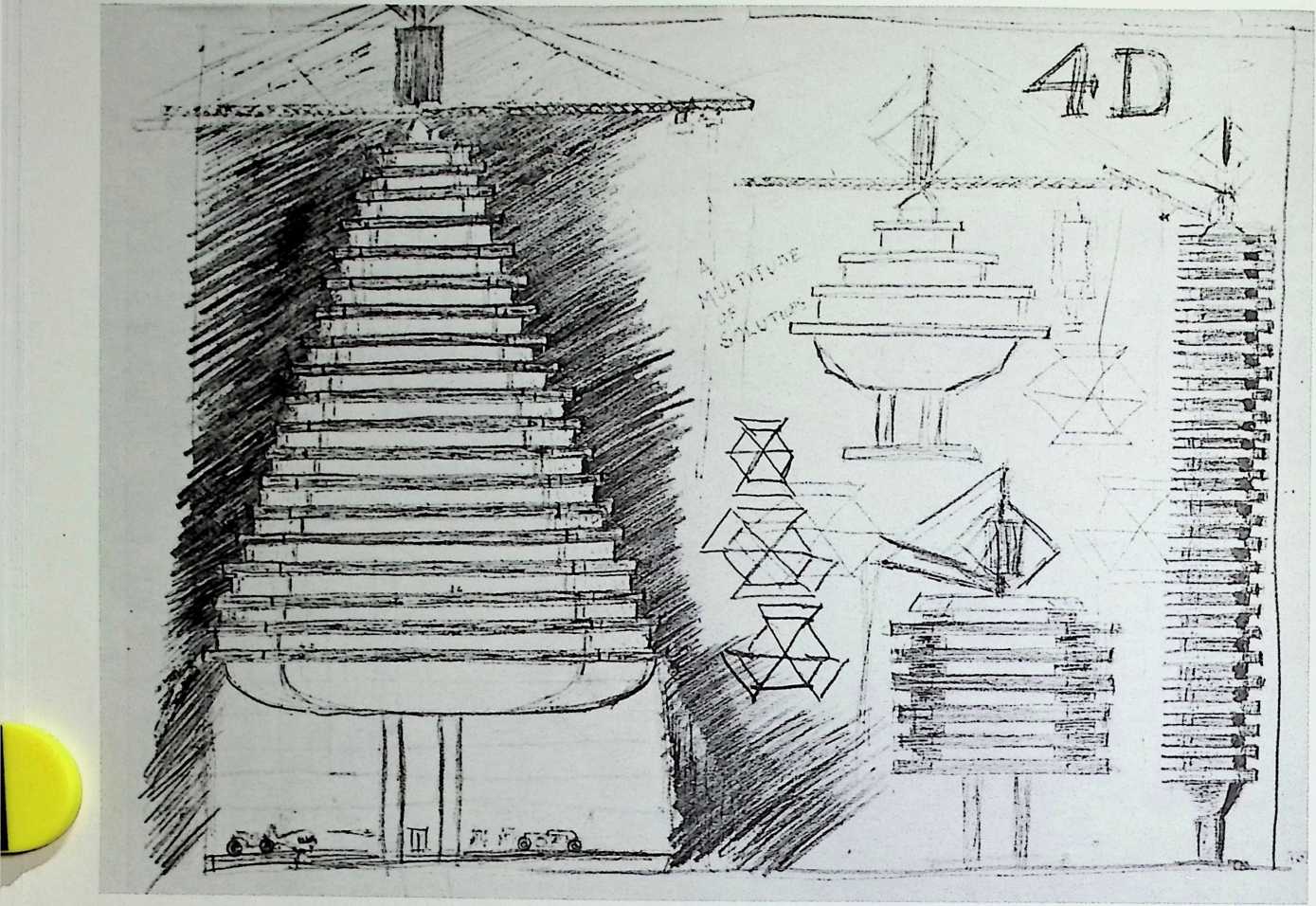



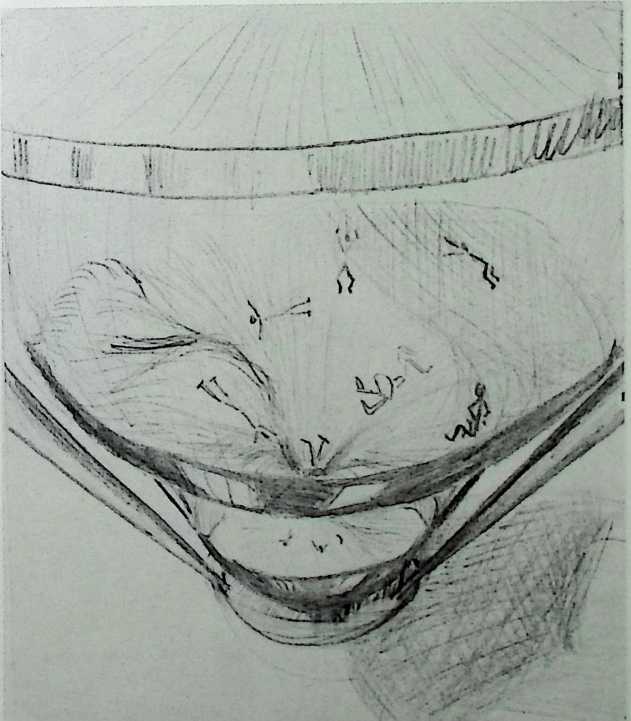
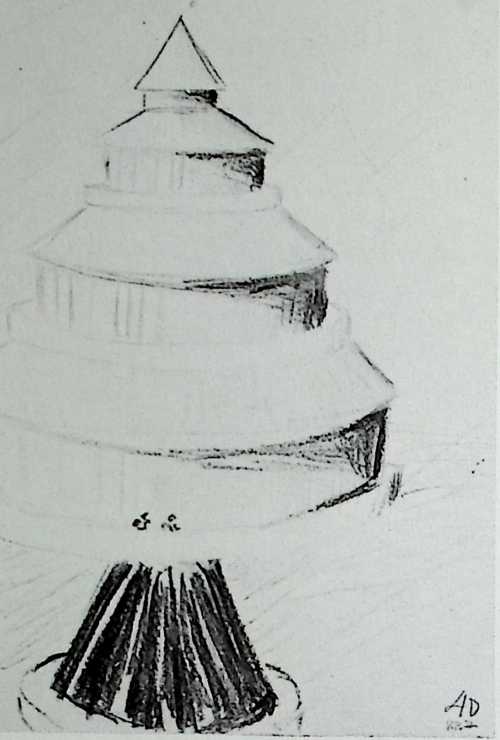
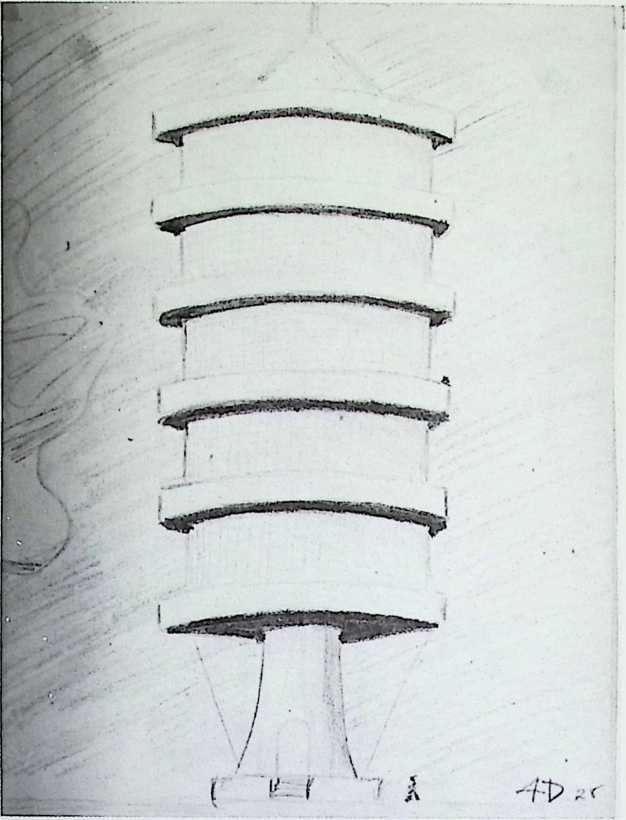
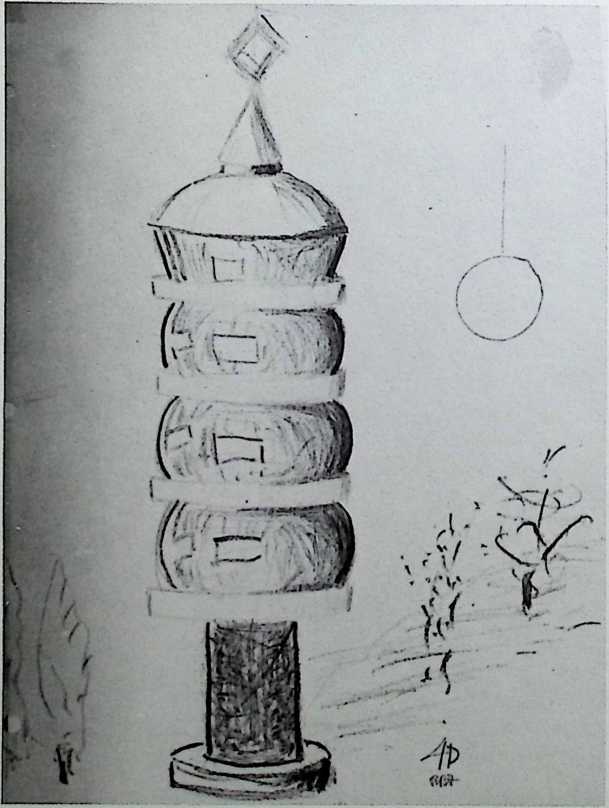
¶ Chapter 3 4D Tower Garage 1928--1929
Fuller was not alone as a designer of a high-rise building for the use of automobiles in the 1920s. But of all the avant-garde solutions to the problem of the modem garage, Fuller’s is the most fanciful. Shaped like a cone, this garage has a double helix of access and exit ramps and circular parking floors.
![]()
![]()
i*---\ \ \ |
1 \ IX \ \ |
|||||
i ’ |
_n |
• n |
\\ A W |
|||
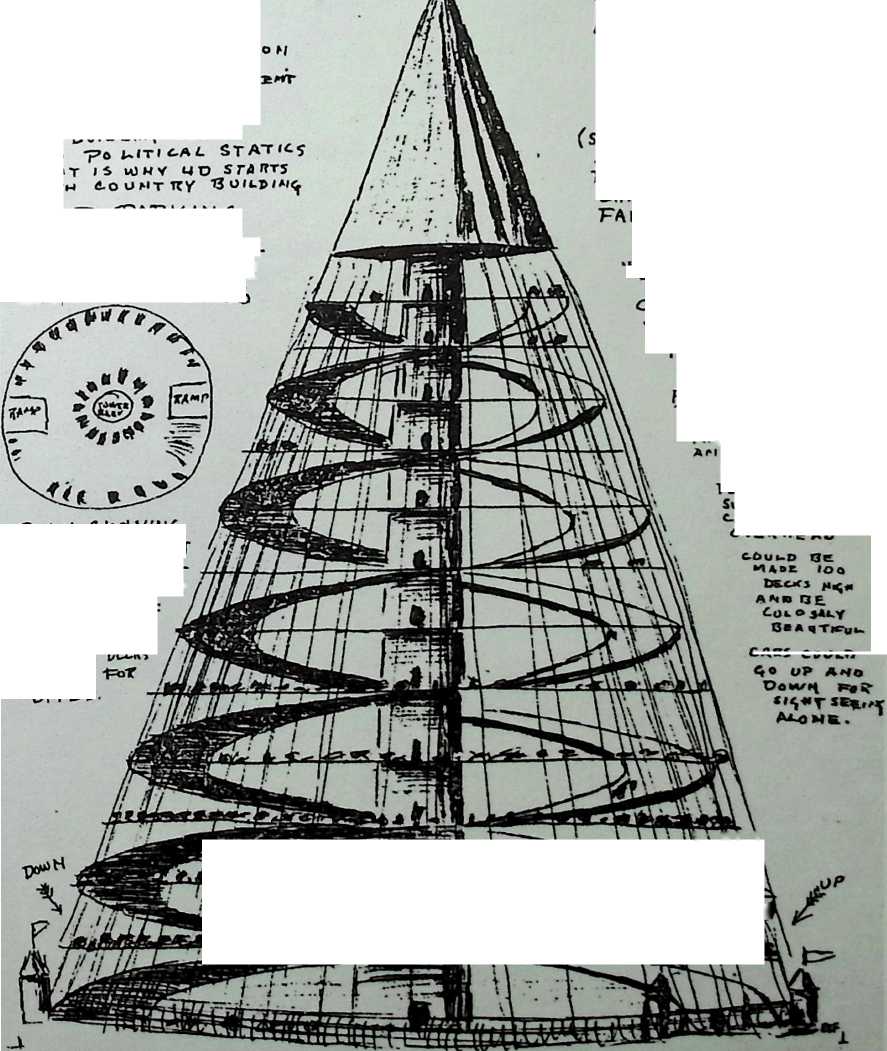 Ki ech A*n t a <- PERFECT THAT 04-0 CITIES 90 ’PETTCEa'T OF "PrtI OAieS COU*-t> ■FETCH IT OH AtCooHT OF -Bui<--bl«C COPE 3 pl 0
Ki ech A*n t a <- PERFECT THAT 04-0 CITIES 90 ’PETTCEa'T OF "PrtI OAieS COU*-t> ■FETCH IT OH AtCooHT OF -Bui<--bl«C COPE 3 pl 0
I o we R CfXKMft
E LEVATolf
AKouxv
PHI/5|aA
floot s £<'TmE<.r
OVER HE AD
CARS CSOlD
:EM vital towes?
3 b PPoR 7 5 HOUSES To A h r, OAKS .
FehcE
"Sot Tom
SEPARATE 1?AMP3 ‘‘UP’’ VlO pOW/A/*
Steel company TOY THE 14 33 CHICAGO UJOiftT>5
SELF j(EE.p ON OP Till You TiMD A SWE WPS NEVEK cross
"A toWER suwr self om- bupiah*-
To of
PAR 10 94
komerx
upRet
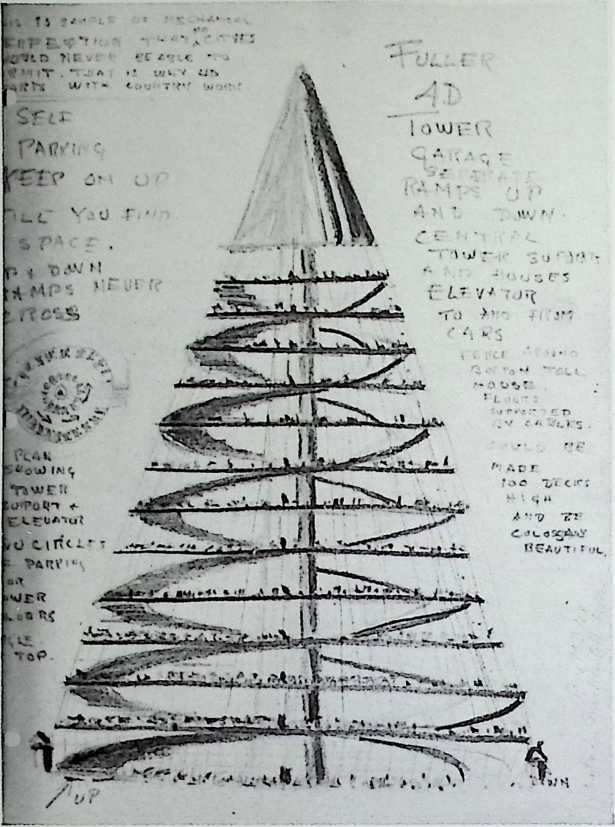
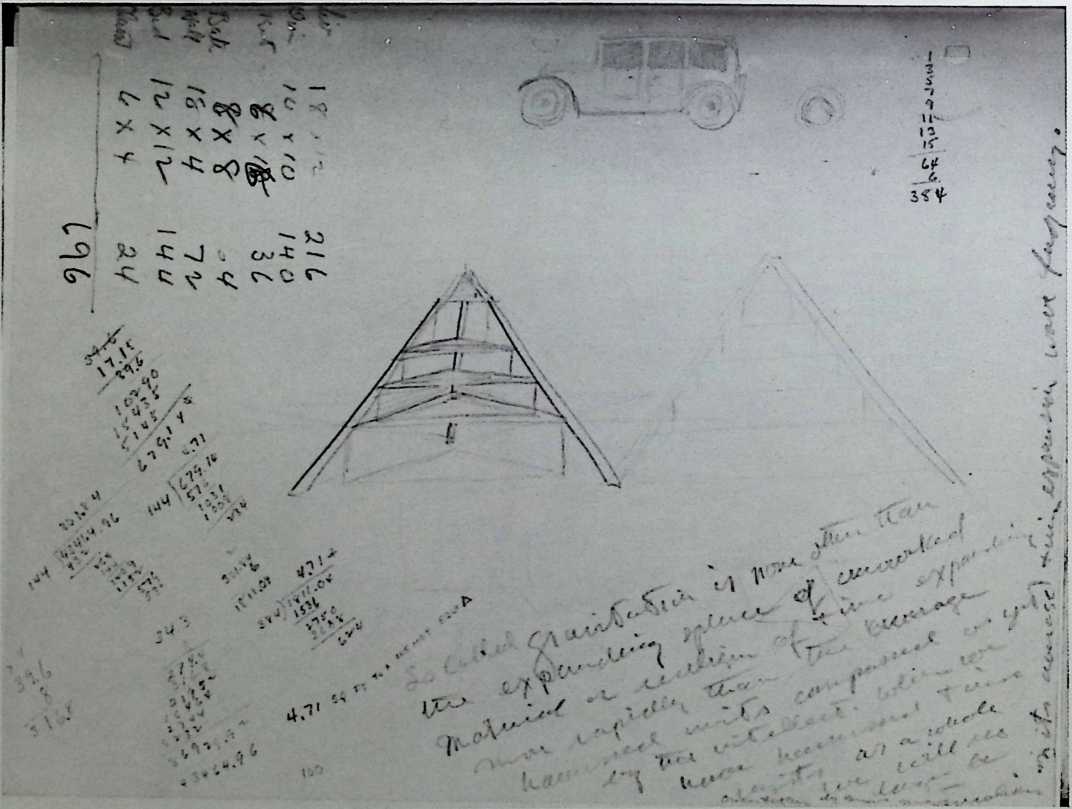
¶ Chapter 4 Radio and Power Lines
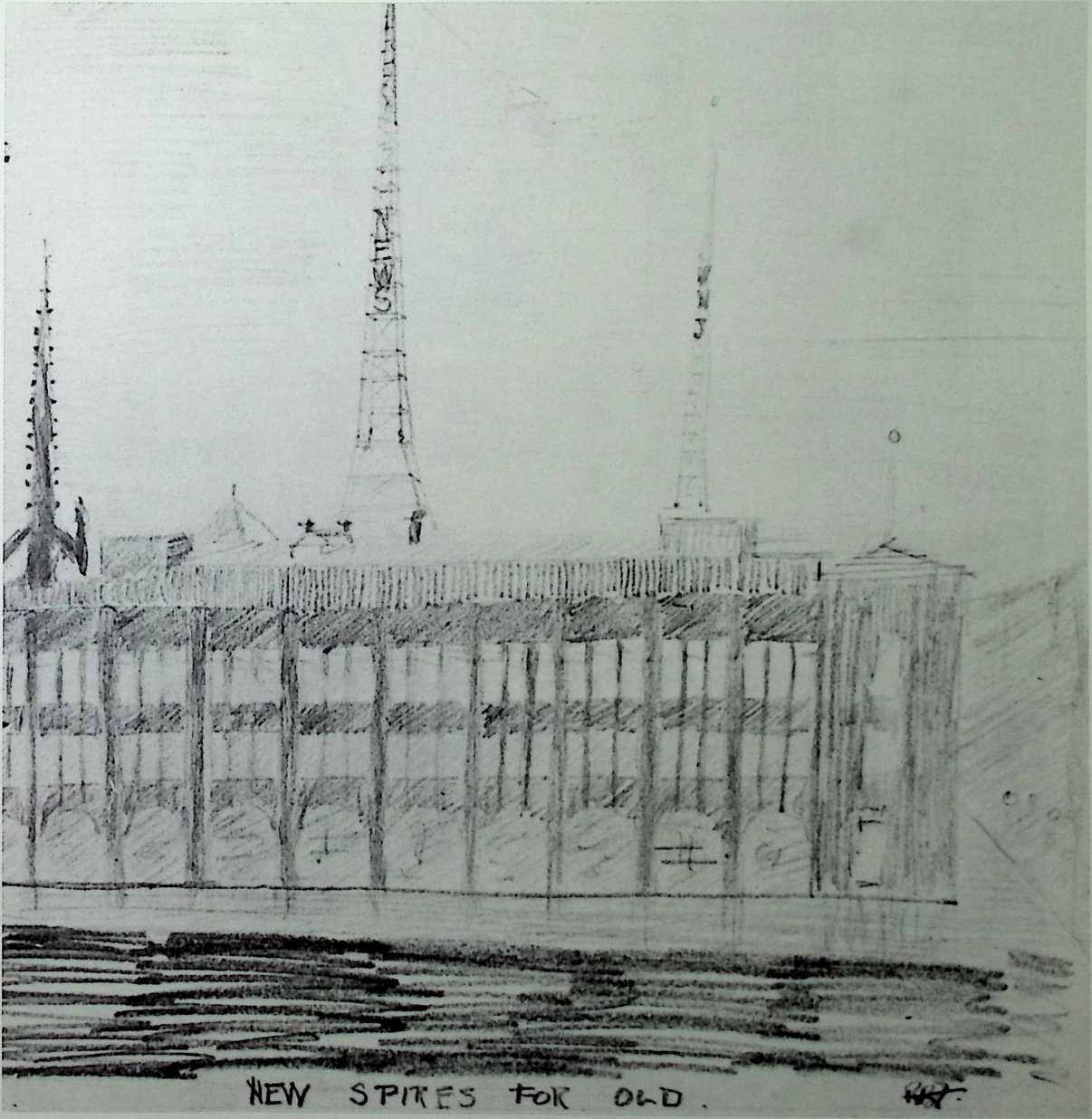

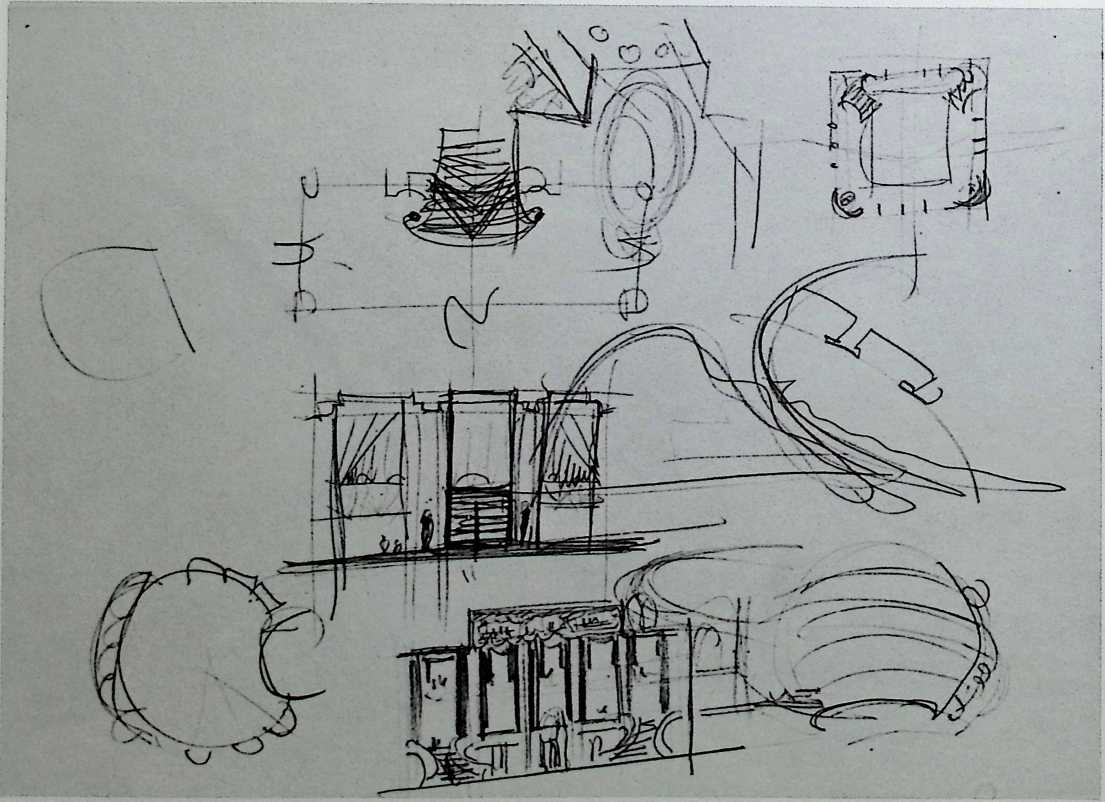
¶ Chapter 5 Skyscraper Suspension Bridge 1928-1929
Fuller began his study of the possibilities of the suspension bridge in several sketches of power lines and their supporting metal masts. He combined this idea with his Dymaxion dwellings in a sketch that shows two towers bridging a canyon. This exploration culminated in a spectacular sketch that could number among the best visions of Piranesi or Saint’Elia.

■16 4D
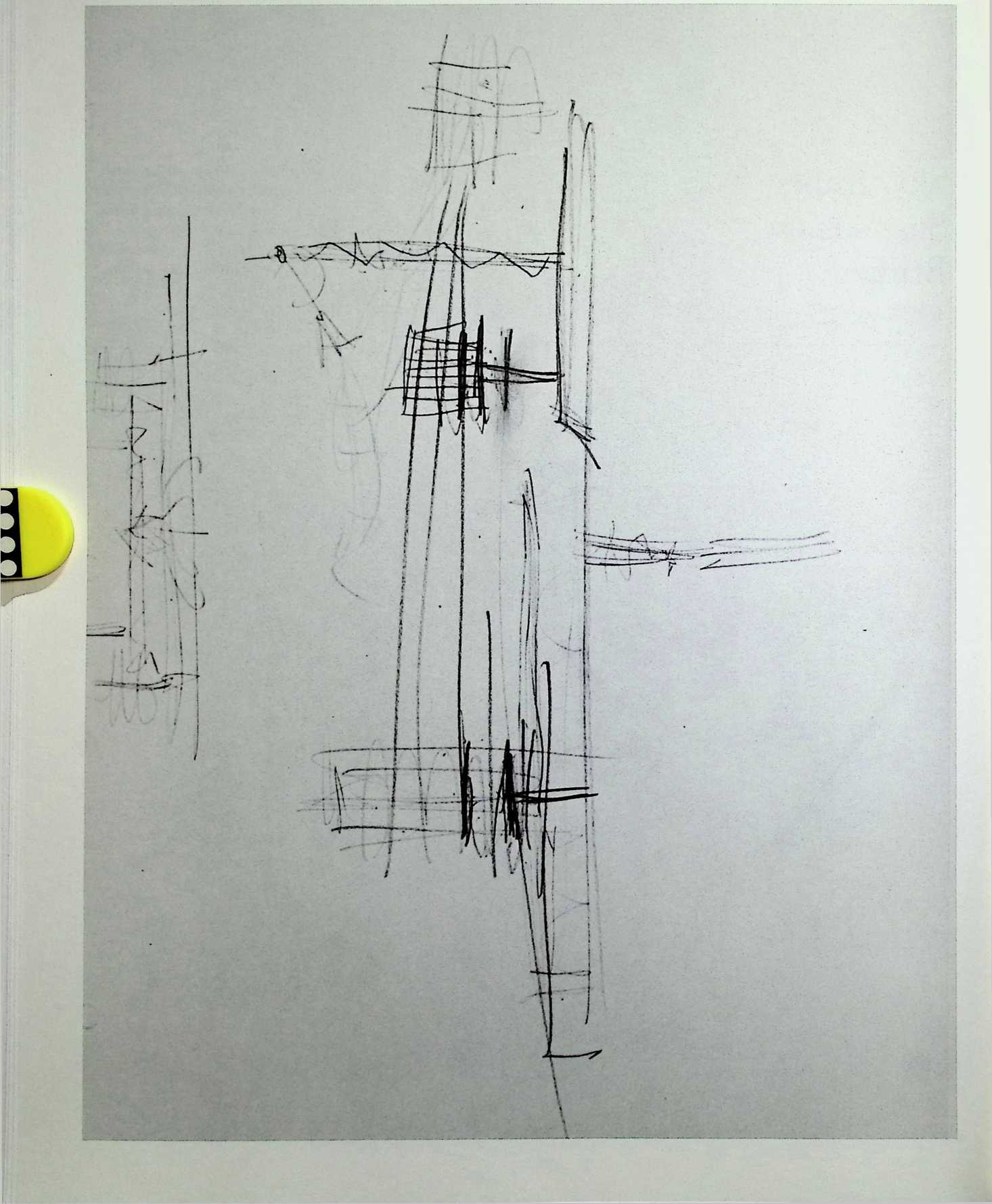
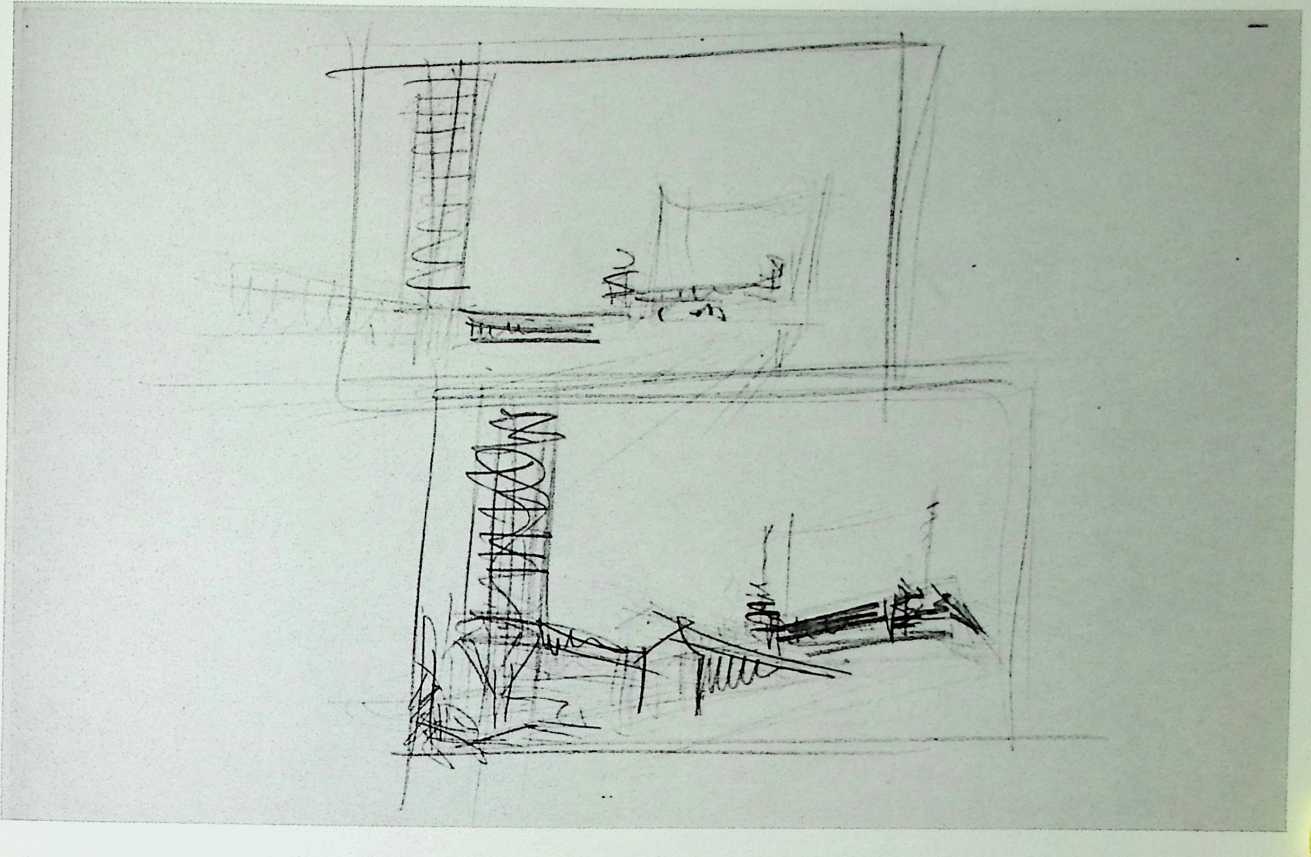
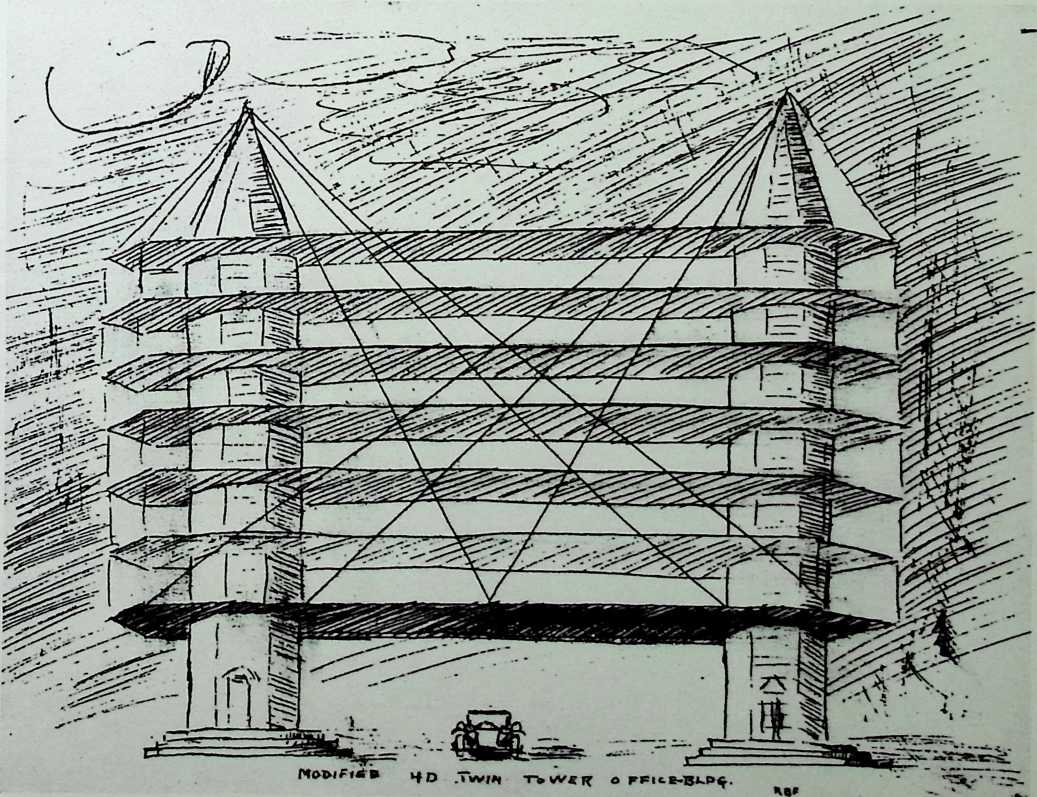
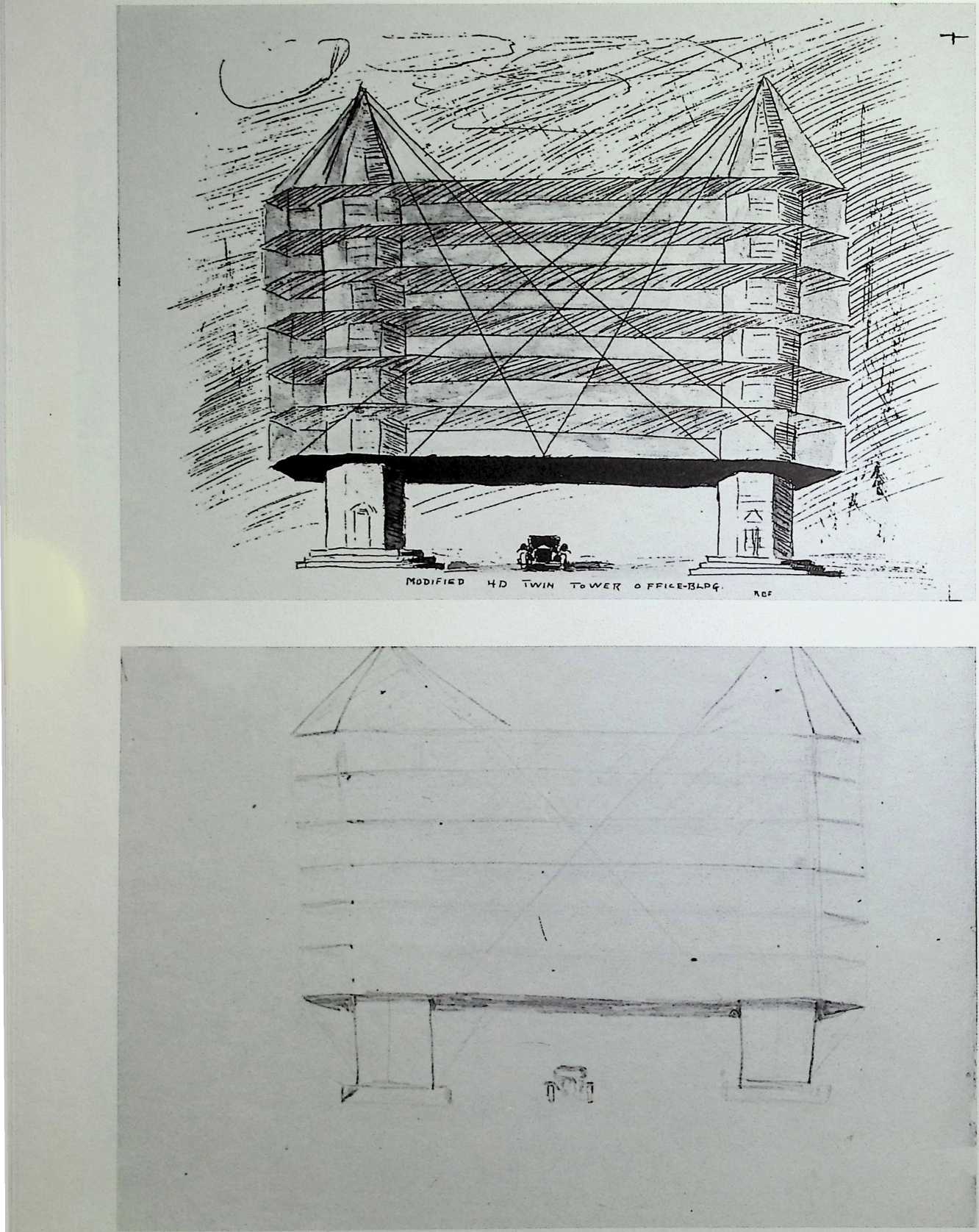
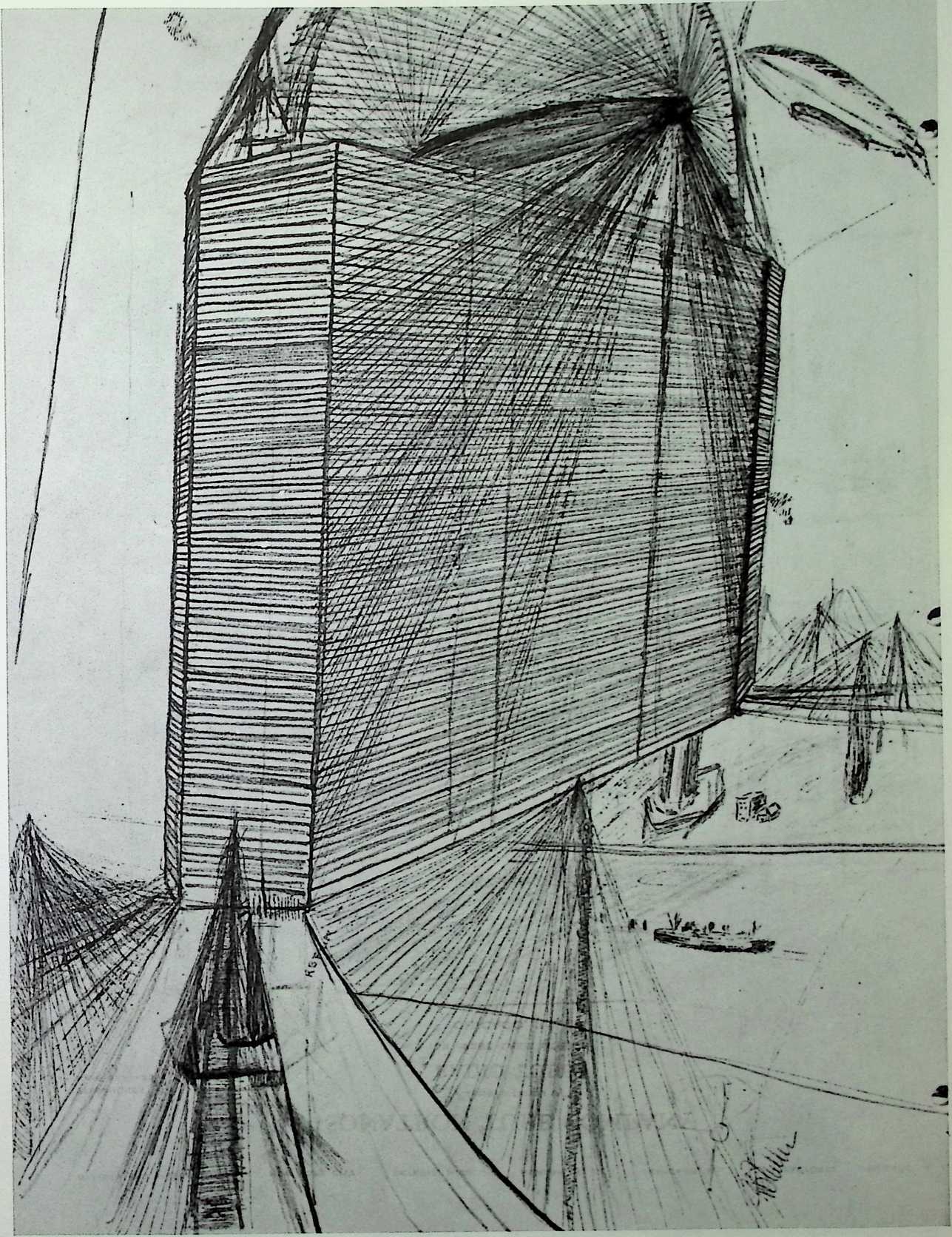
'Wi

¶ Chapter 6 The 4D House 1927--1932
The 4D House was Fuller’s first solution to the problem of low-cost housing. ‘‘4D’’ refers to the fourth dimension, a principle of advanced physics. Fuller’s design did not effect a dramatic change in contemporary housing, but it did emphasize some specific technological advances, a few of which were actually realized decades later.
The 4D House
The 4D House was inspired primarily by Fuller’s pragmatic desire to create an extremely efficient dwelling that could be built quickly and inexpensively. It was intended to be mass-produced for the retail price of SI,500, or roughly the price of a typical American motorcar. It was marketed in 1929 with the Dymaxion trademark (a combination of dynamic, maximum, and ion) under the sponsorship of the Marshall Field Department Store, Chicago. The Dymaxion House model was exhibited by Marshall Field as an avant-garde backdrop for the relatively conservative modem furniture that the store featured. Ultimately, the public considered the 4D design impossibly futuristic, which might explain why Fuller presented his house as a more conventional rectangular volume w'ith Georgian fenestration in his application for a patent.
When one reviews the innovational features of Fuller’s invention, one can appreciate his concern over how it might be received by the clerks at the Patent Office. The 4D House is a one-story hexagonal volume suspended from a single central mast. Six cables run from the top of this mast and are anchored to the ground, providing support and stability at the extremity of the hexagonal volume. The mast houses lighting, heating, plumbing, and a staircase. The suspended volume contains a living room, library, utility room, two bedrooms, and a covered patio. The rooms are divided by light partitions. The exterior walls are made of aluminum sheets and large ribbon windows. The exoskeletal structure of aluminum stanchions and tubular horizontal beams are elements that reflect Fuller’s designs for the U.S. Navy. The suspension system and the geometry of the cable floor supports look forward to the geodesic dome of the 1940s. But such luxurious accoutrements as doors opened by electric eyes, television receivers, photoelectric cells, dishwashers, air conditioning, and waste processors also make the 4D House a prototype of ‘‘the total electric home,’’ which did not become a cliche until the 1960s.


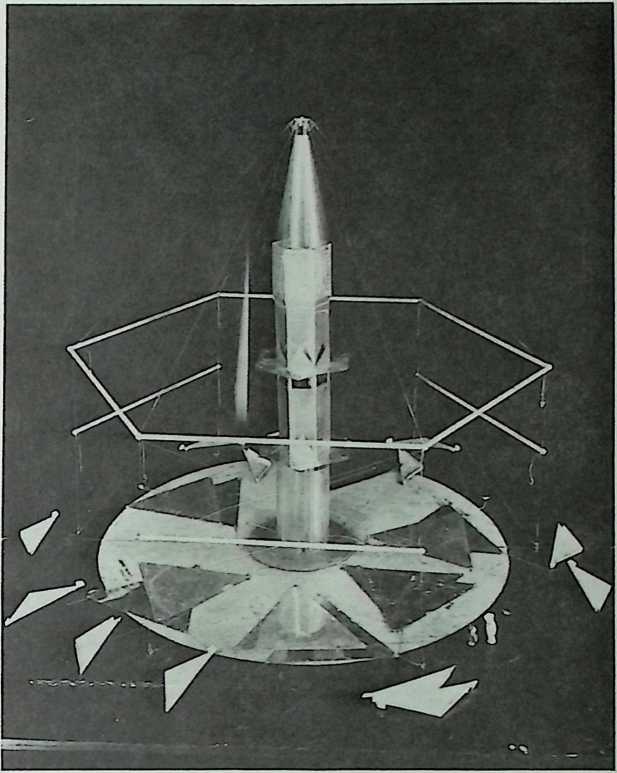



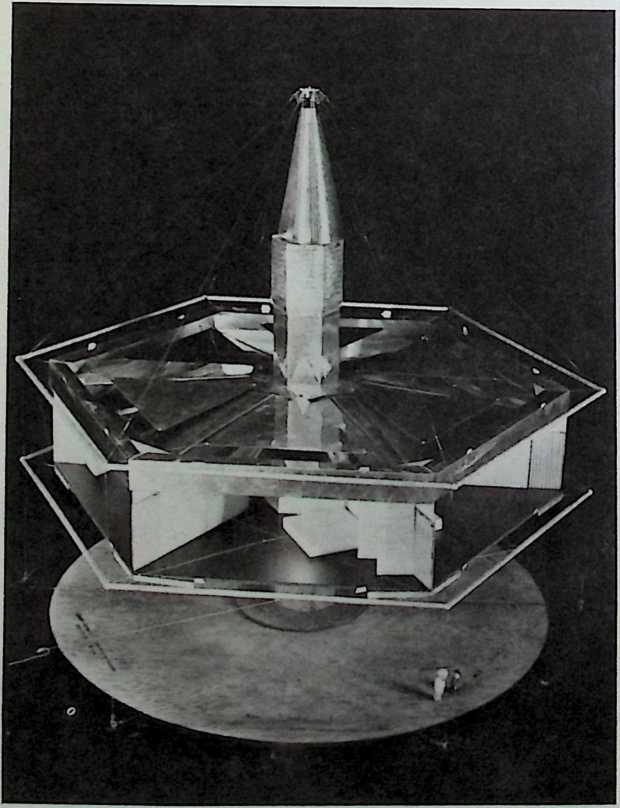
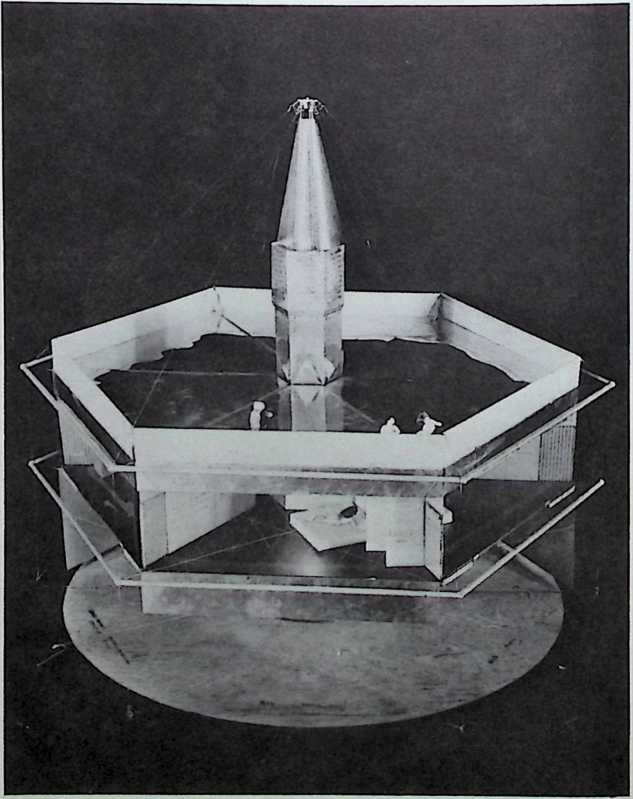
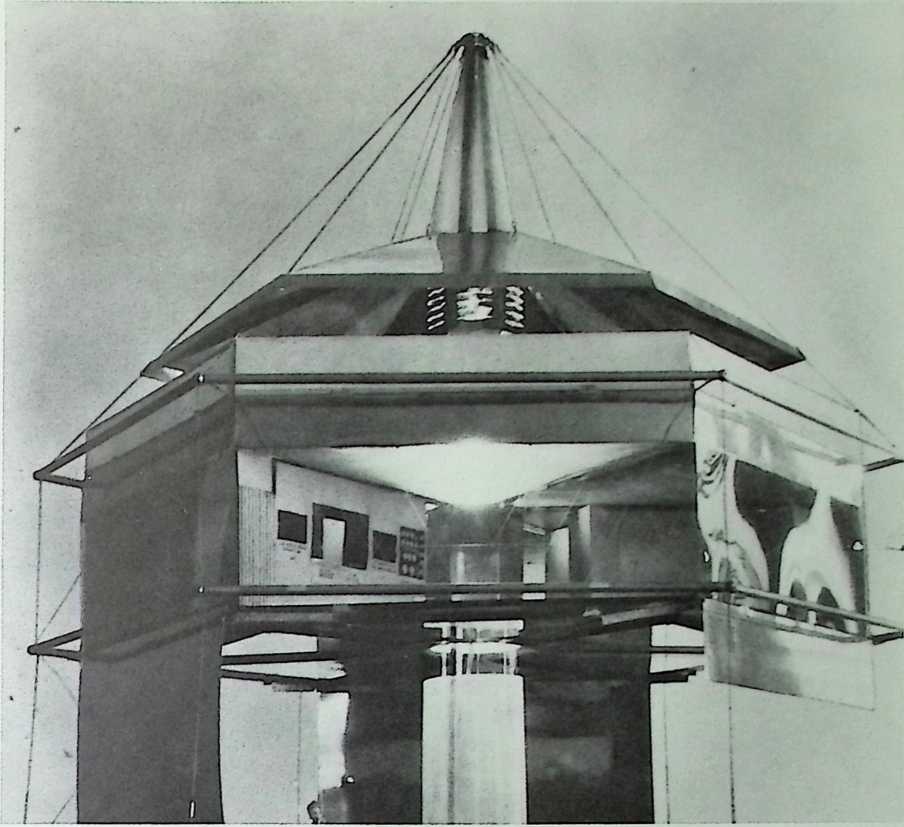
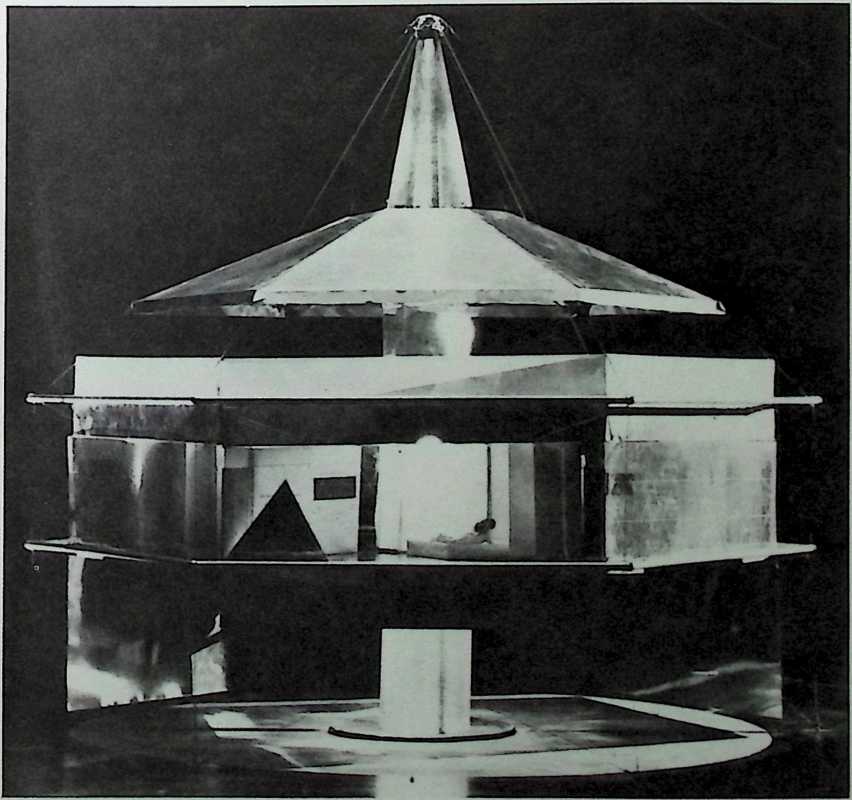
¶ Chapter 7 4D House Patent Application, 1928
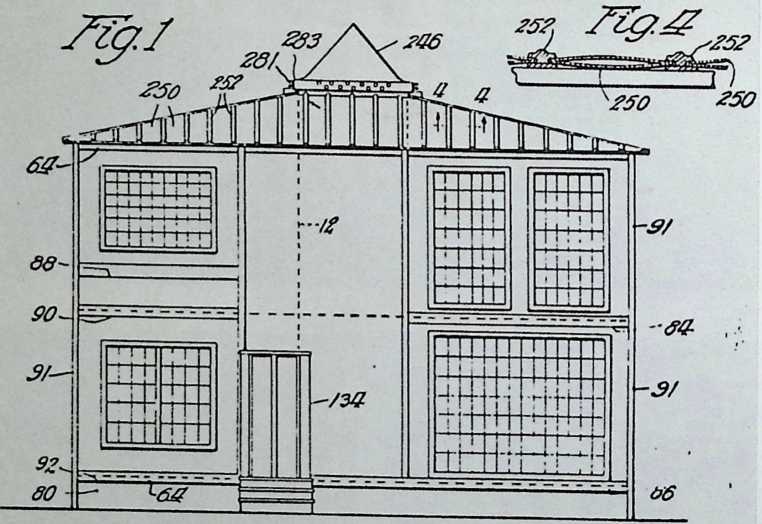
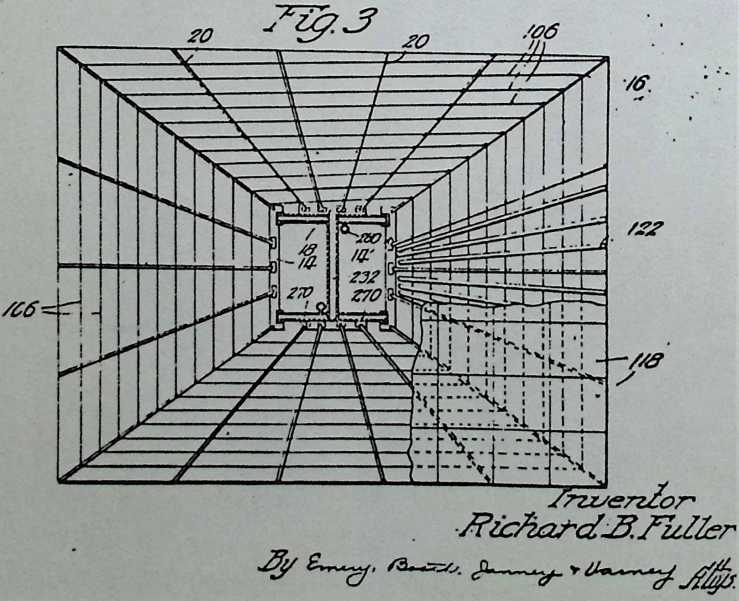
THE ID HOUSE 59
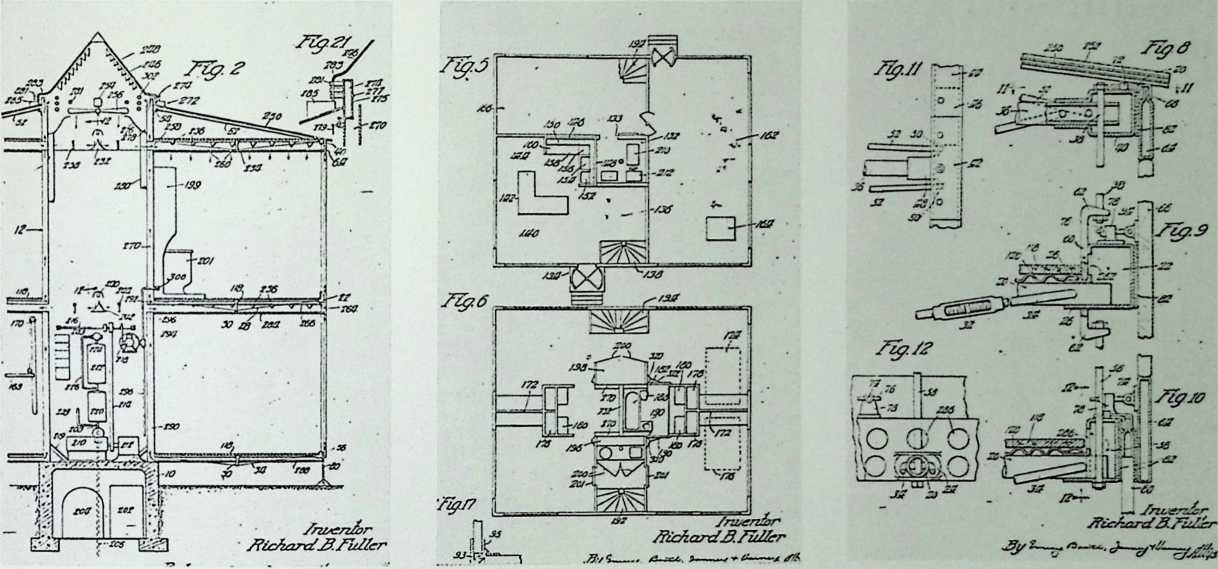

¶ Chapter 8 A Minimum 4D Dymaxion House
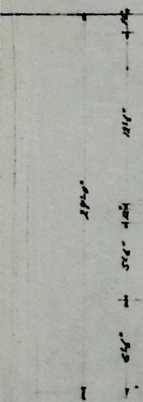
![]()
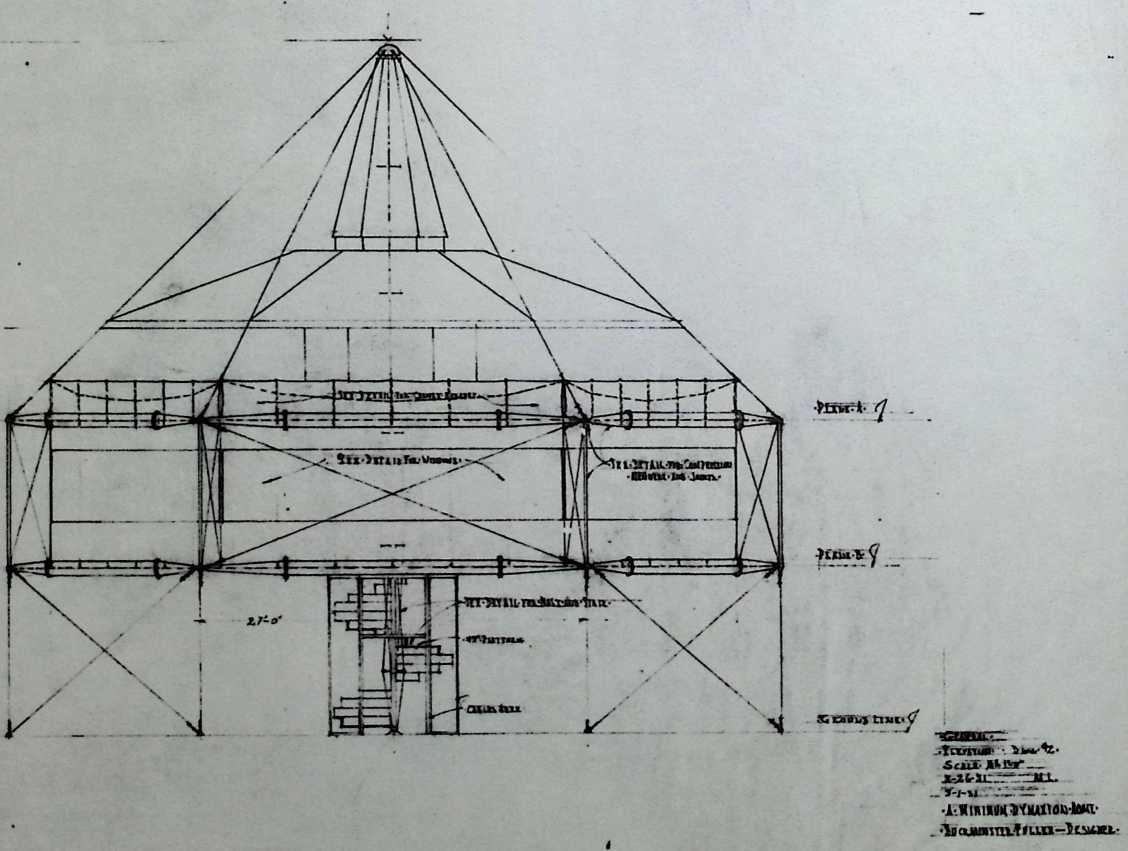
M alm
•liaiiqiLfiuivl&xm-
J-»-W *1
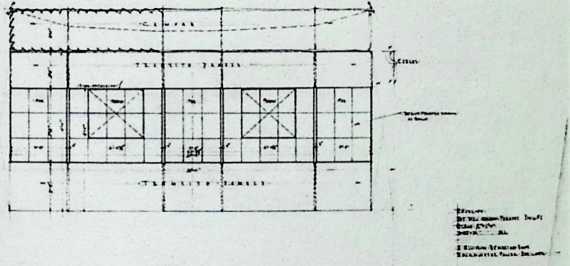
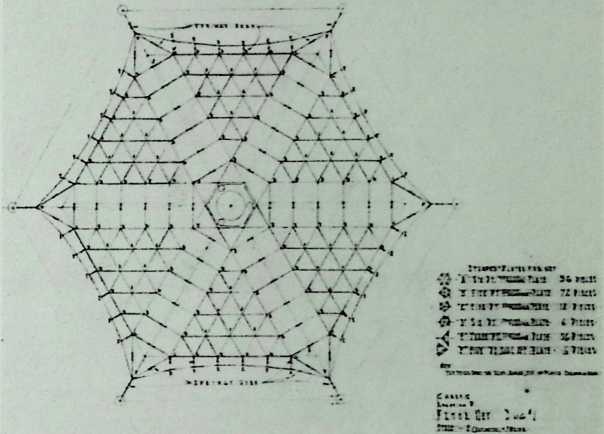
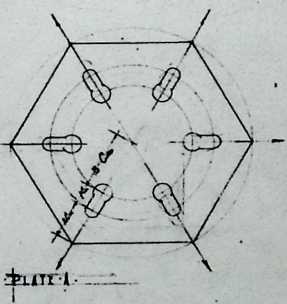
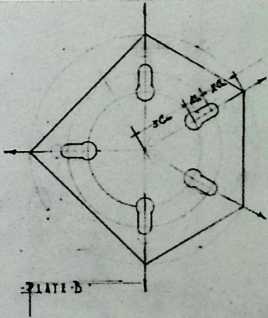
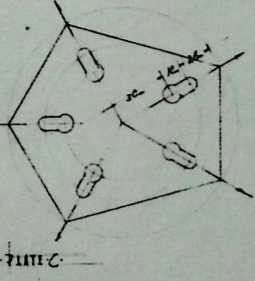
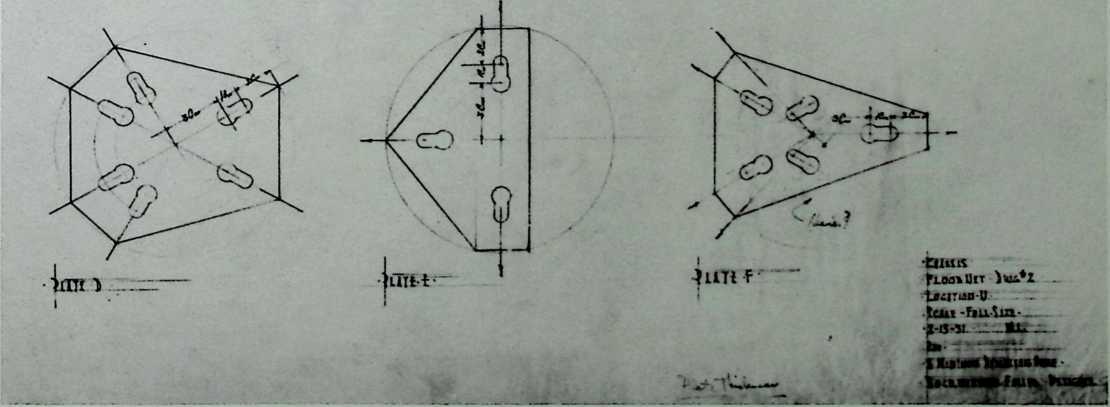
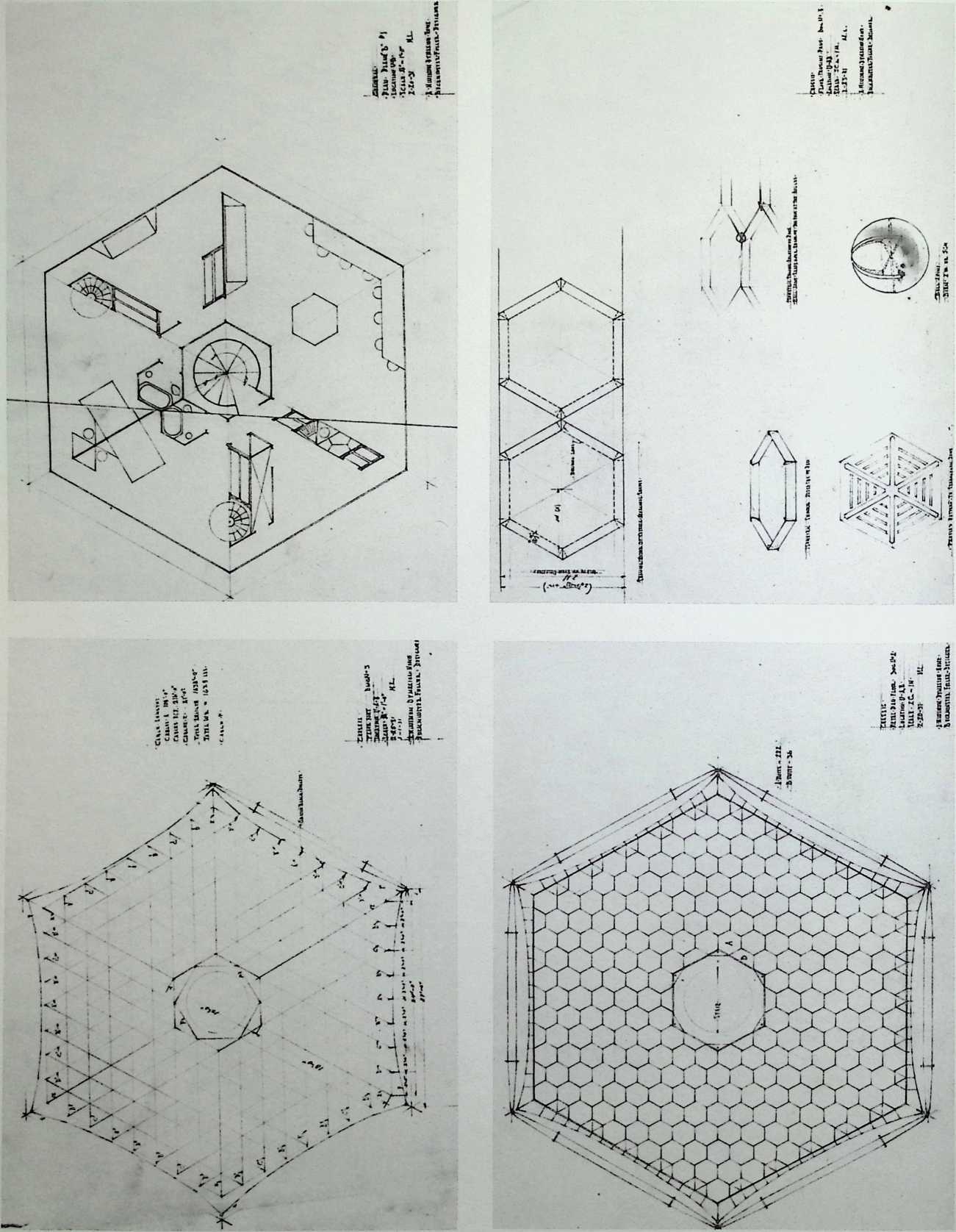
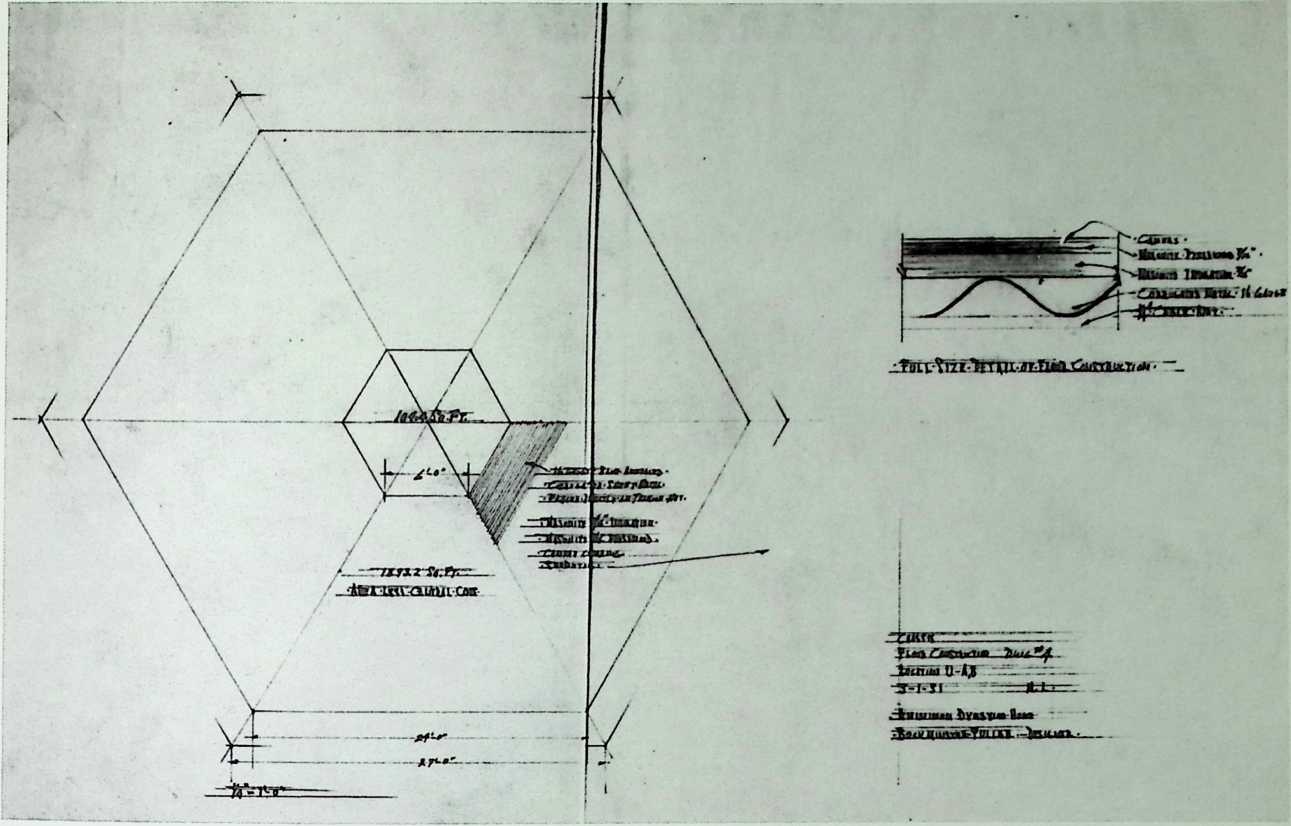
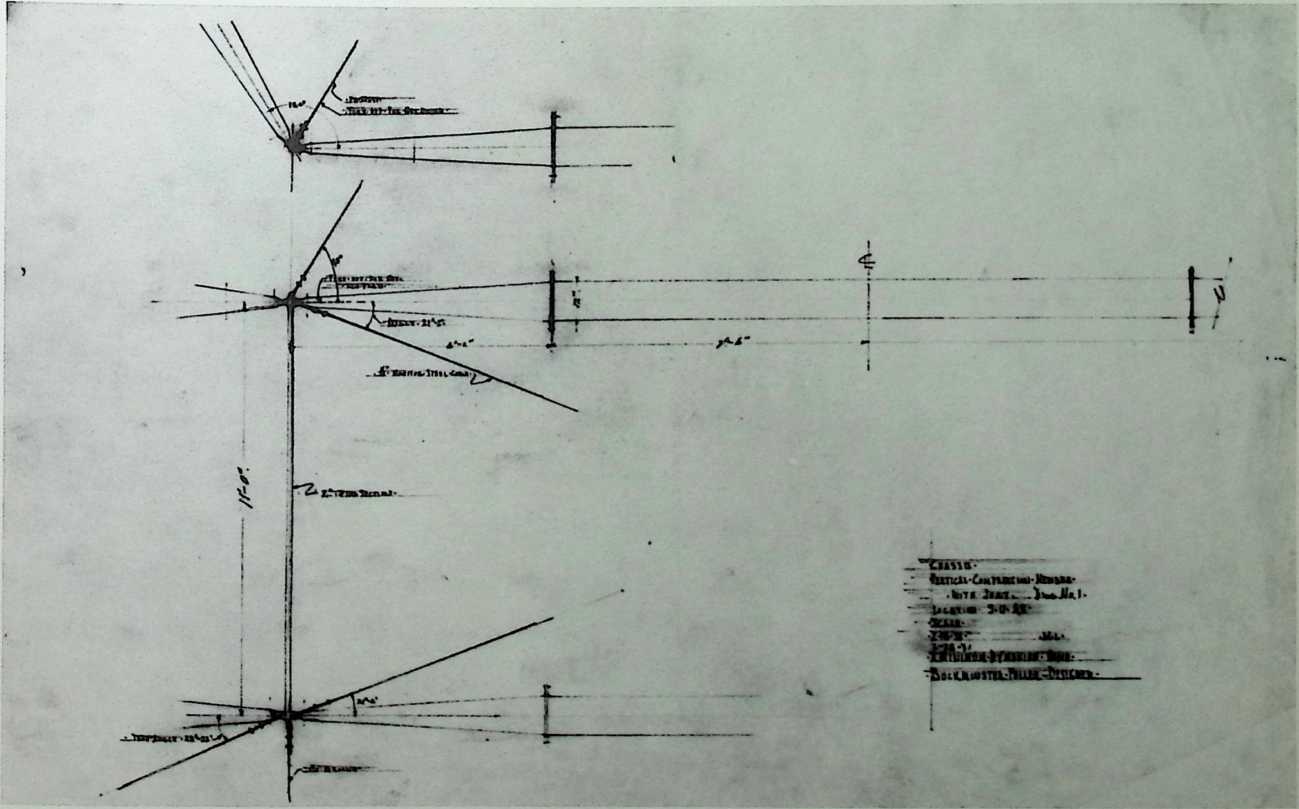
tojOWafl-W ’btae,*!
UWB- 9rW,T)
p«.kt -^n’tlTltu'*
Ix-Tv-i/ ’’ JULL- 14hwuwnVwtiwfeMi fei t MuauvToai v-Wion-*
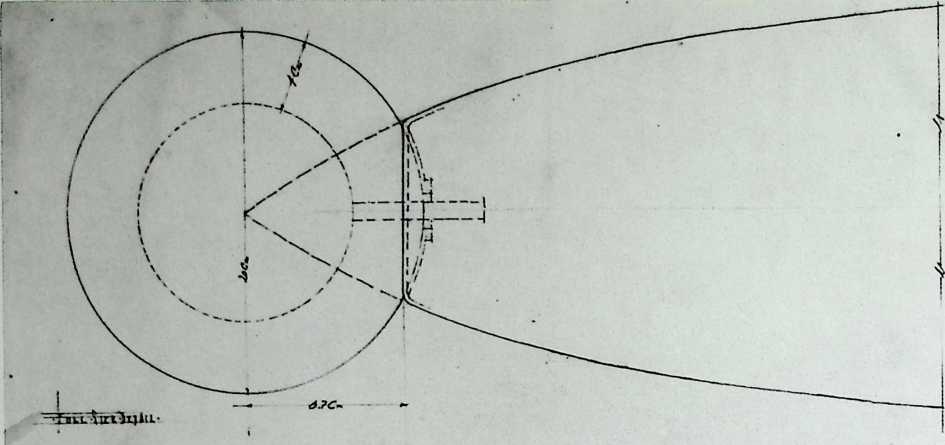
![]()
![]()
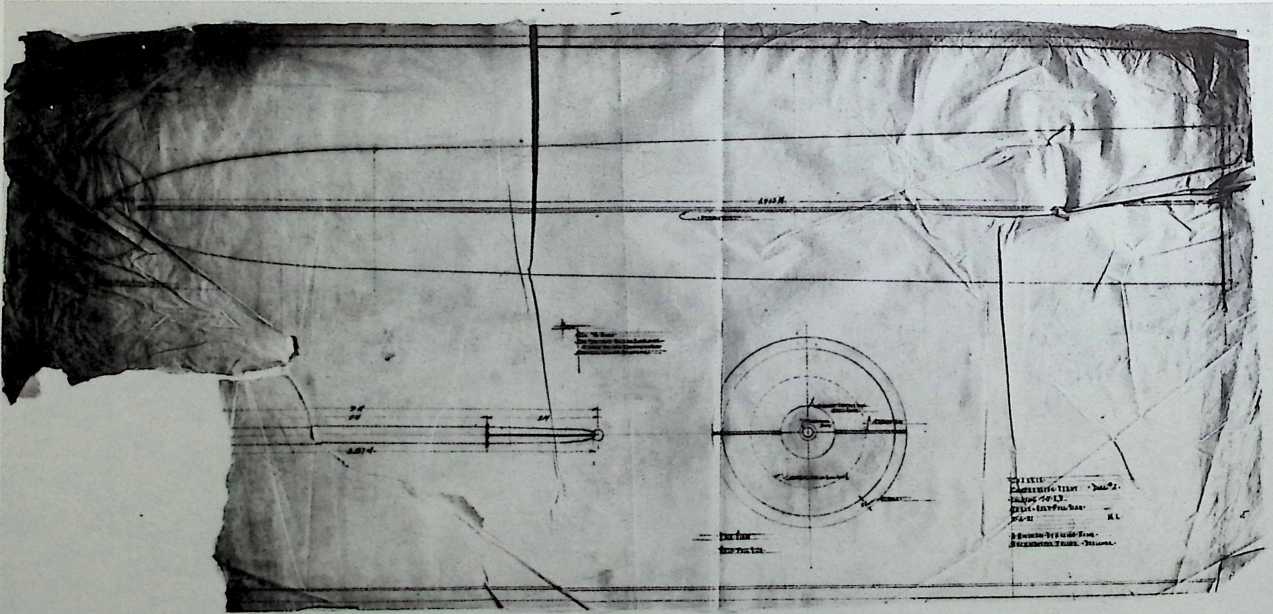
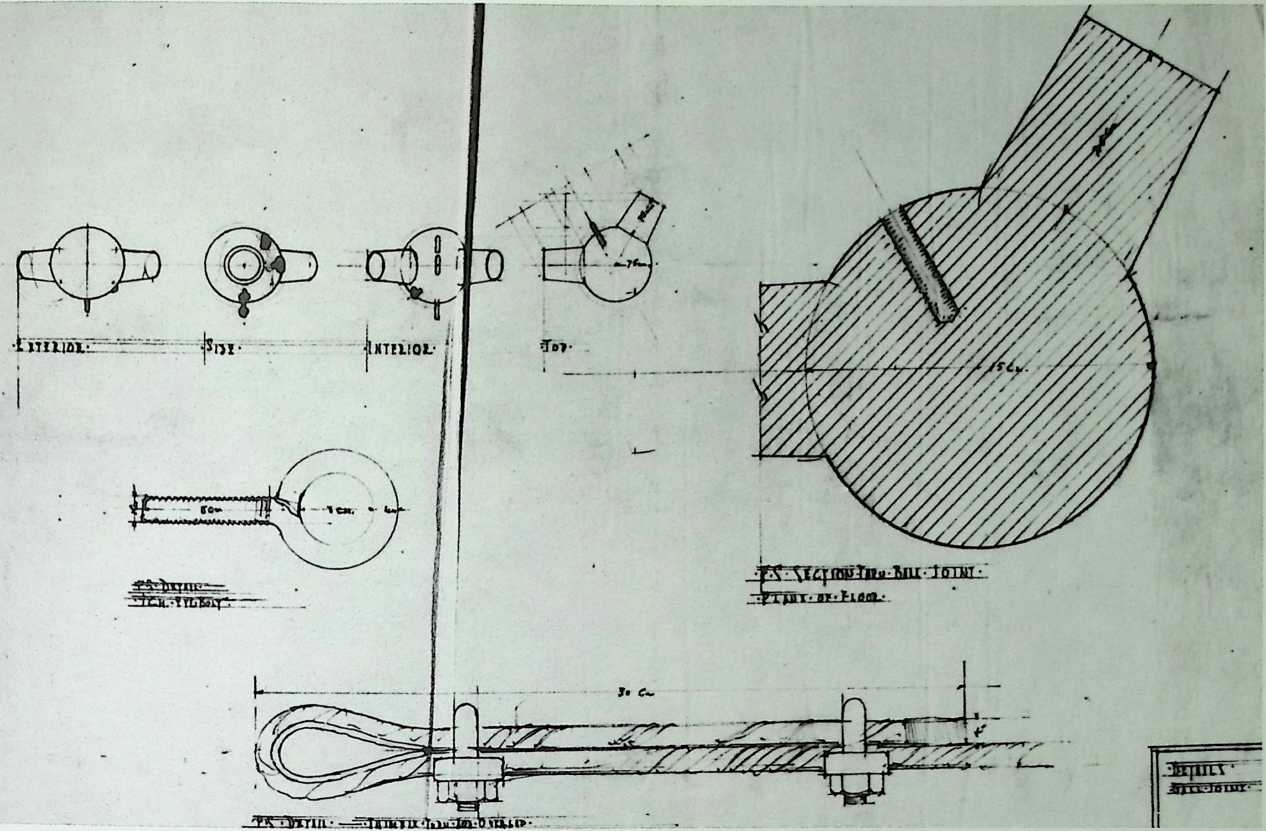

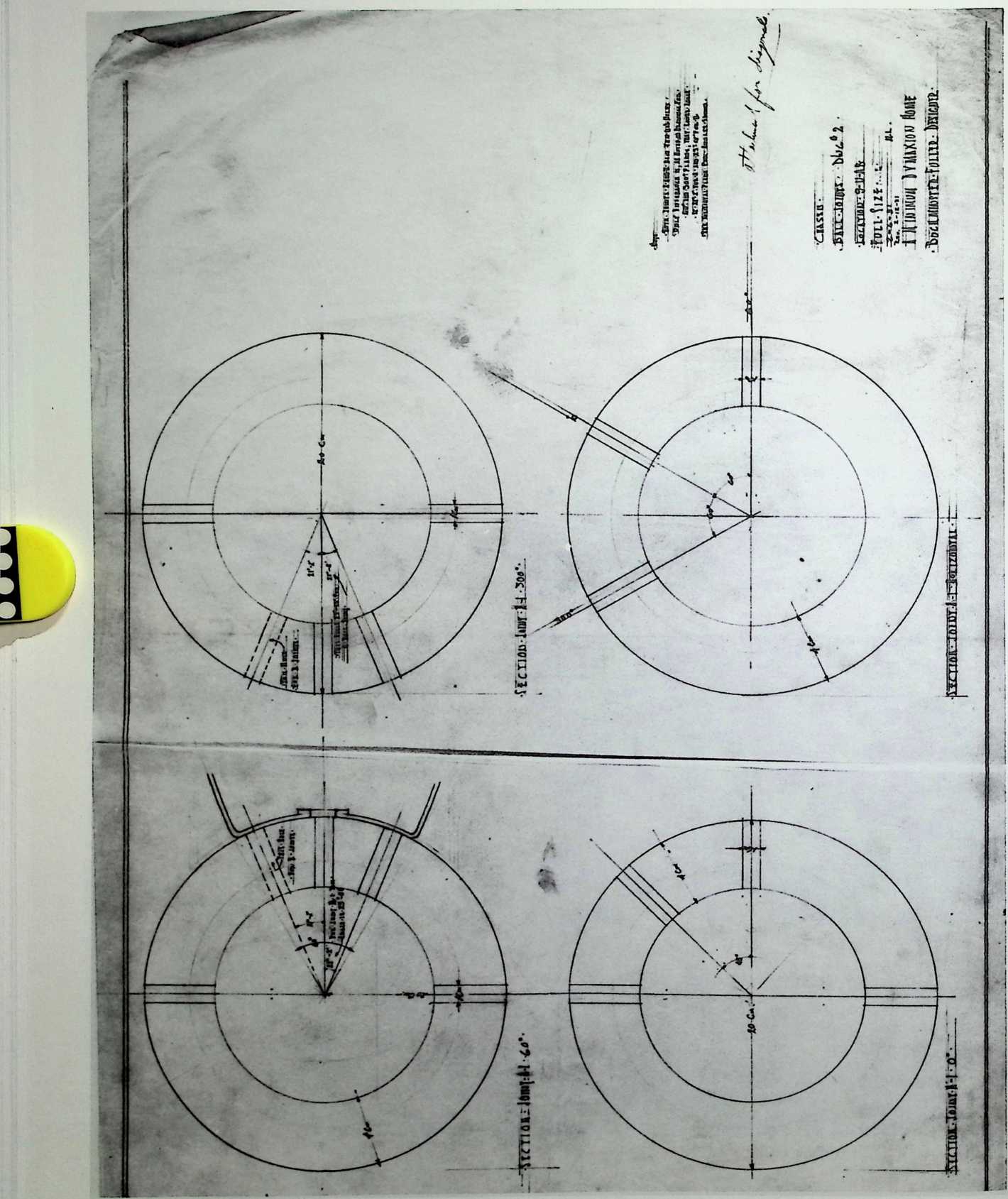
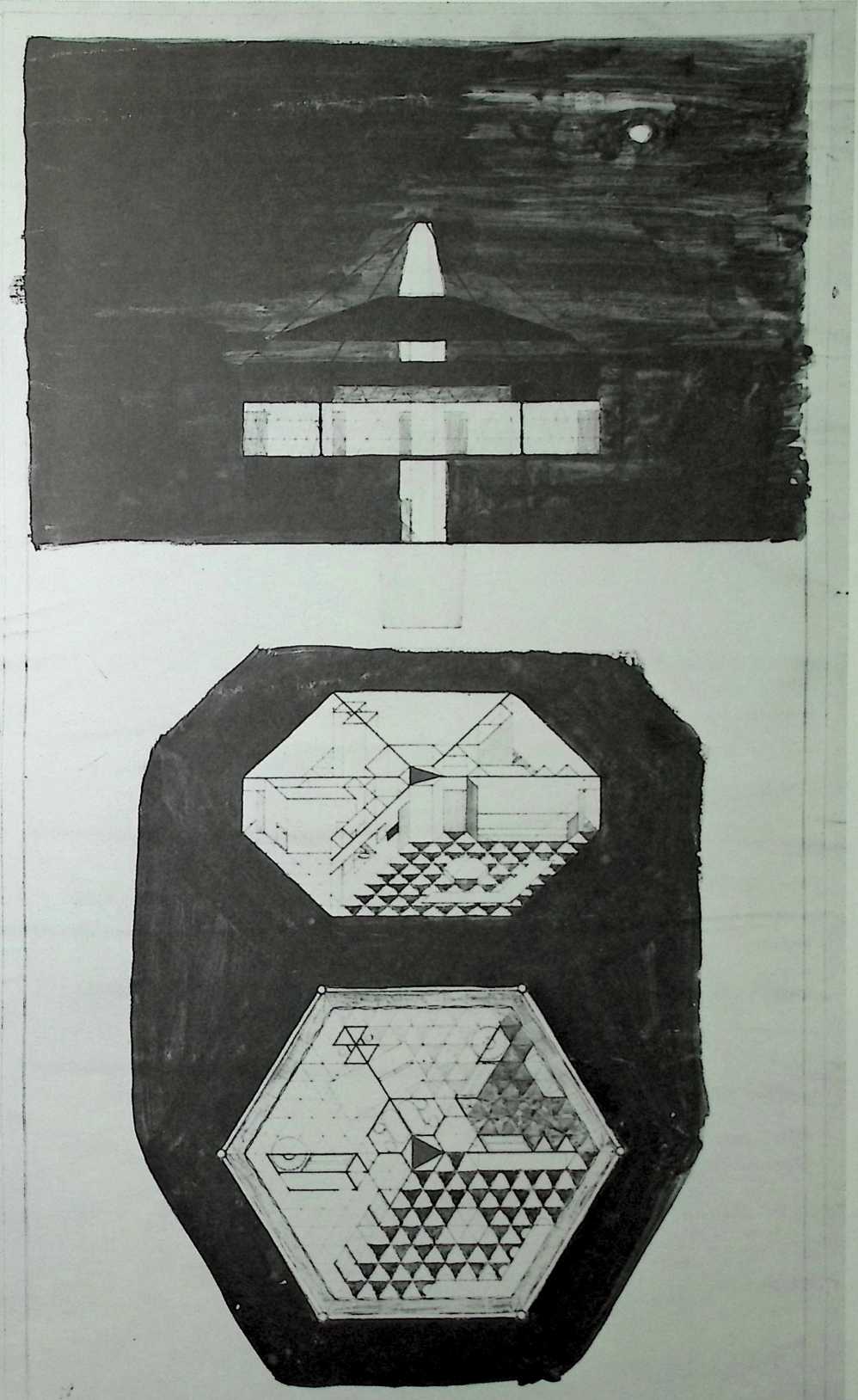
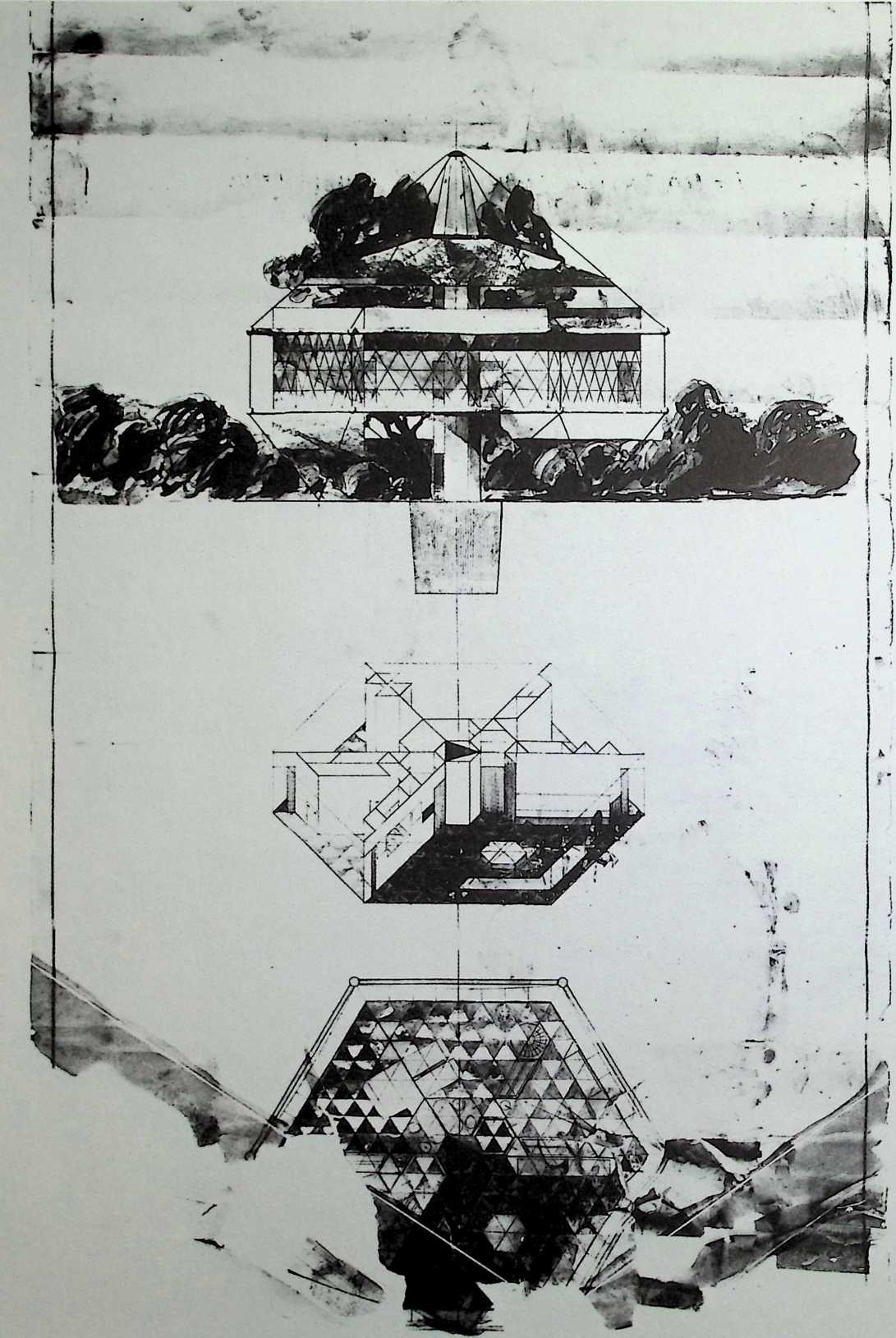
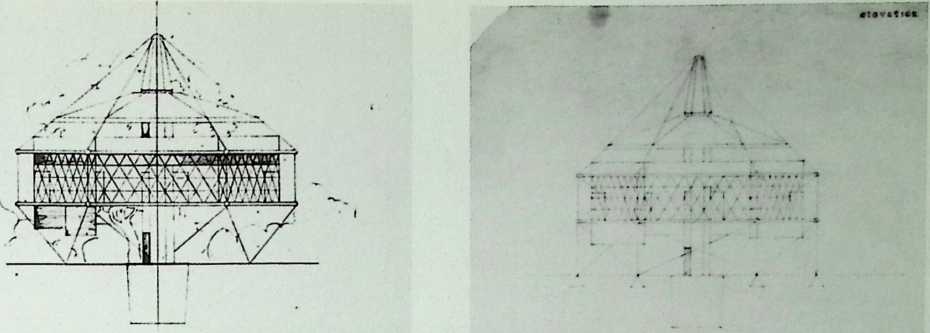
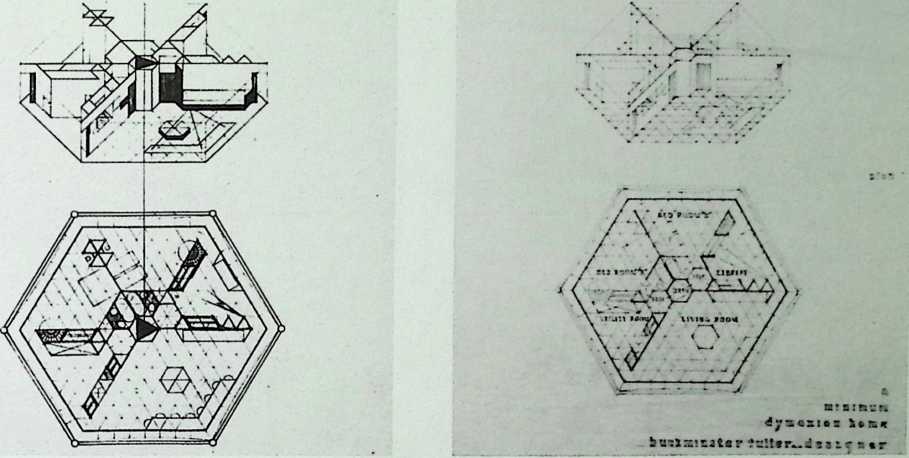
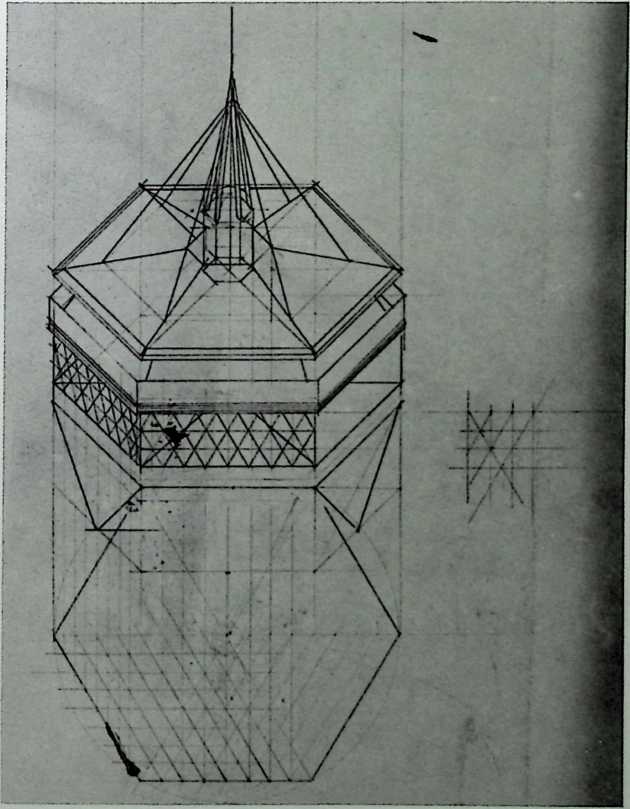
TOP SOFT PLAV-
SMT
R-
150-
CON- BtlJW.
tloPS- ALL PJIMWY FWTVEE IS BUILT INTO UTILITIES
imir or DKMAIION Bt- 5IGN 15 tfDEPEKMraY ELATED TO TM MASTS
... cotn»- UF RAH-HIAO CAW
- MAST CON-
«r
TAL SPACE
OF THE PLAN AS OPPOSED TO UR PRESENT
CWffRDW
TRIBUTING TUBE FOR AIR LIGHT HEAT. ETC- EXTERIOR JHELL OF 3TRUTURE COMPOSED OPTMNGUL- AR NIN SHATTER - ANf VACUW! PLAJB
4WAWAWMTO
BASE IOR*
MAST CONTAINING SEPTIC ABD FDEL.TMOff
HOOD STREMISG’ WID OVER TOP & PROTECTING PERSONS - MASTHEAD CONTAINING LENSES FOR UTILIZING LIGHT AND HEAT Of SUN a AREA UNDER HOUSE USED FOR HANGAR 6 GARAGE CLOSE TN BY - ME TALK VENETIAN BLINDS WORM- GEAR - ELEVATOR [NHA5T
nz uni- WWL
MAT WJT$^A5E CiO DT A MORE. DESIRABLE UNIT A3 IT DE? .lops, all PBIMJUY nminruffi
PLAN-ISOMETRIC-W-ELEVATIOW OF A MINIMUM DYMAX10N HOME

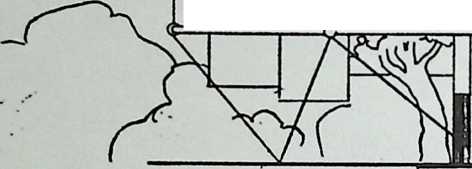
![]()
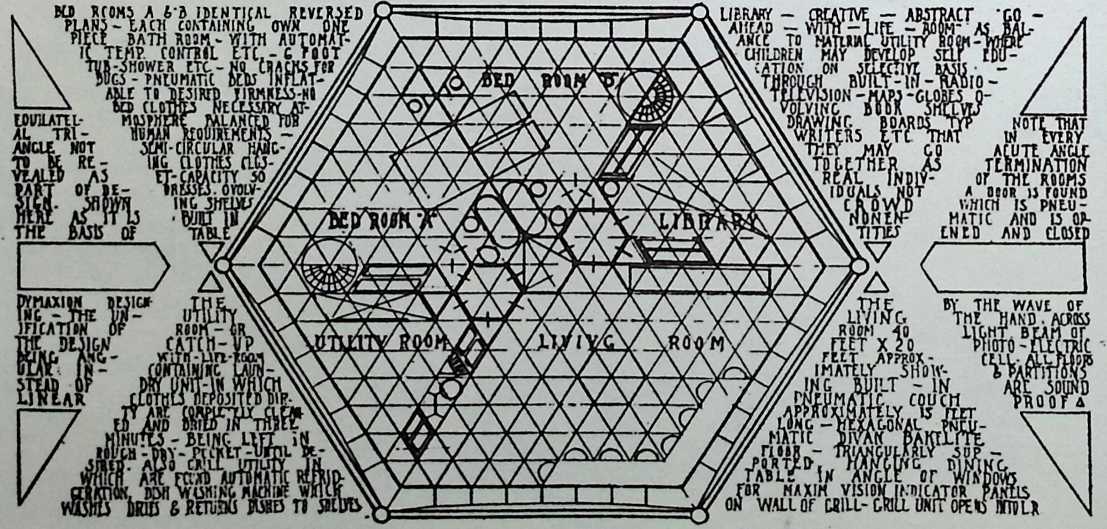
ELEVATION AND PLAN,
DYMAXION HOUSE
BUCKMINSTER FULLER, DESIGNER
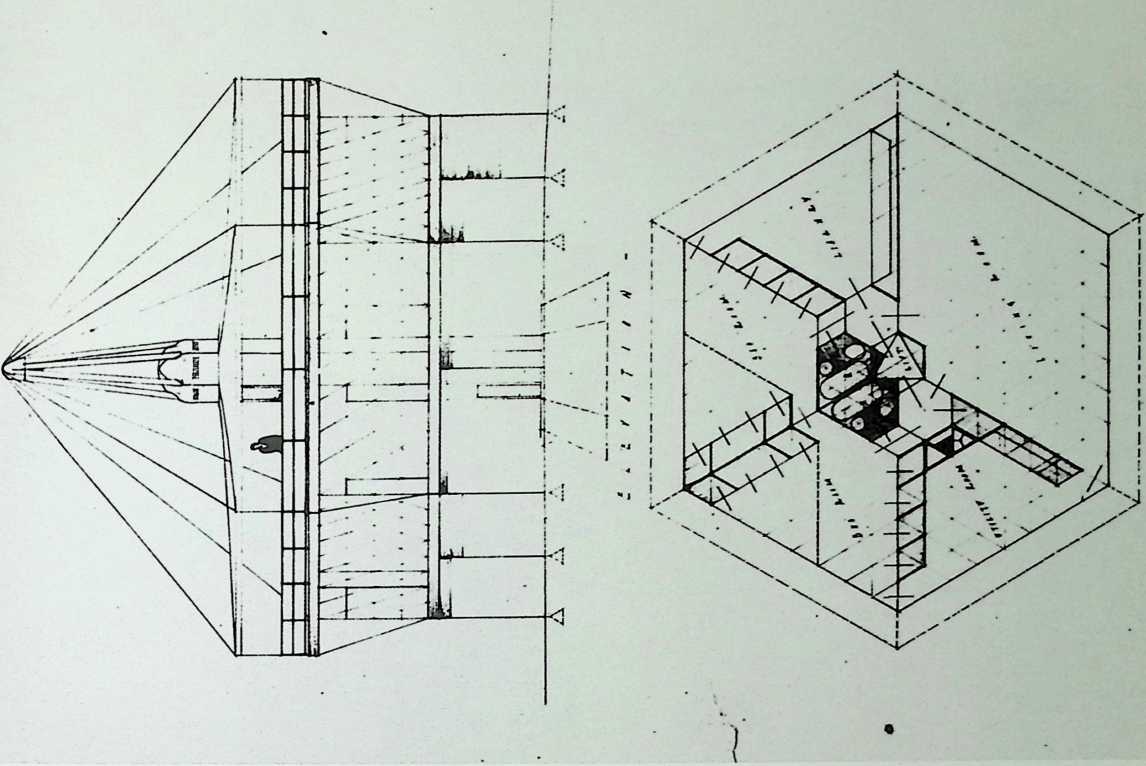
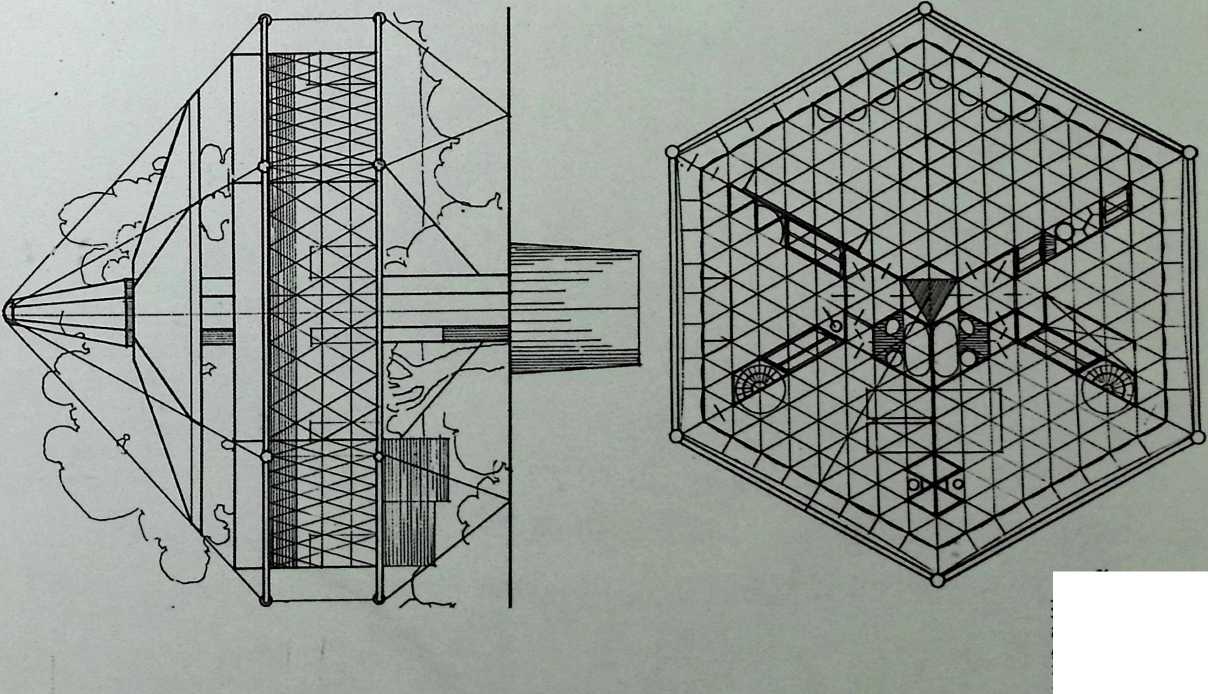
¶ Chapter 9 Sketches 1928
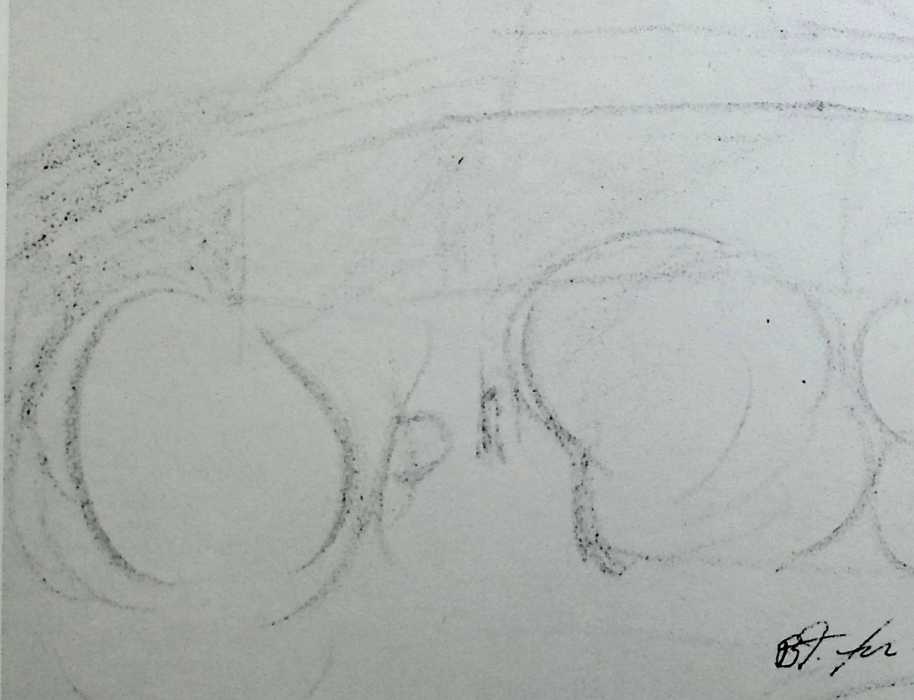
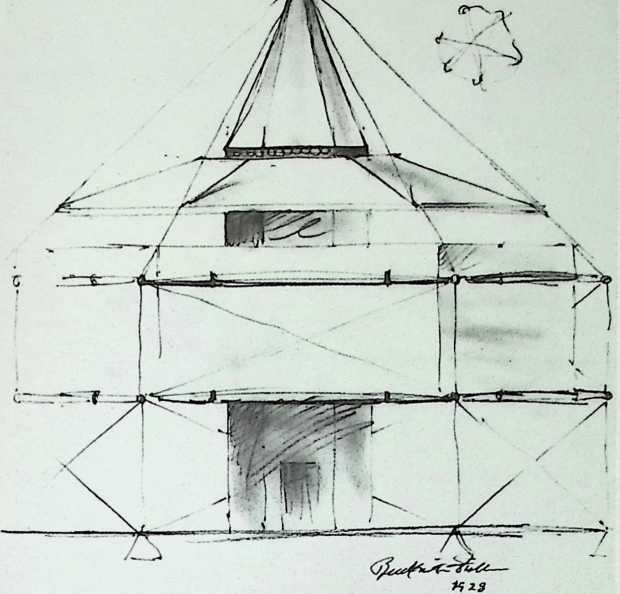
![]()
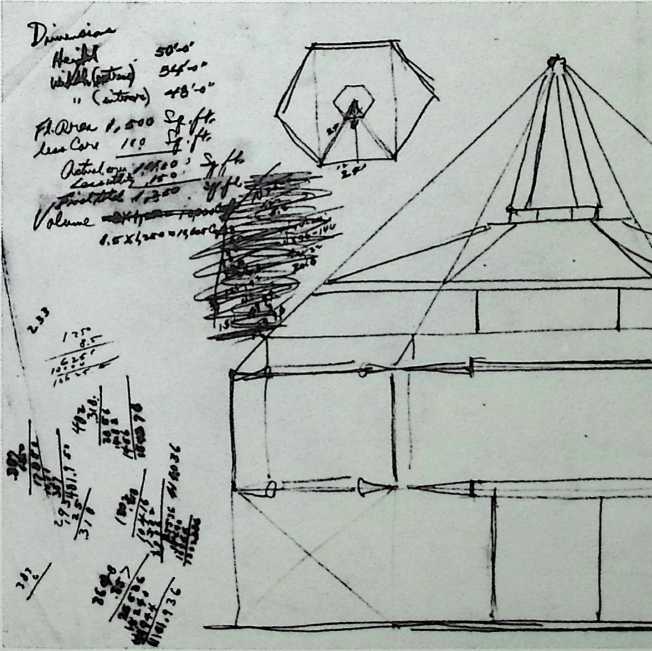
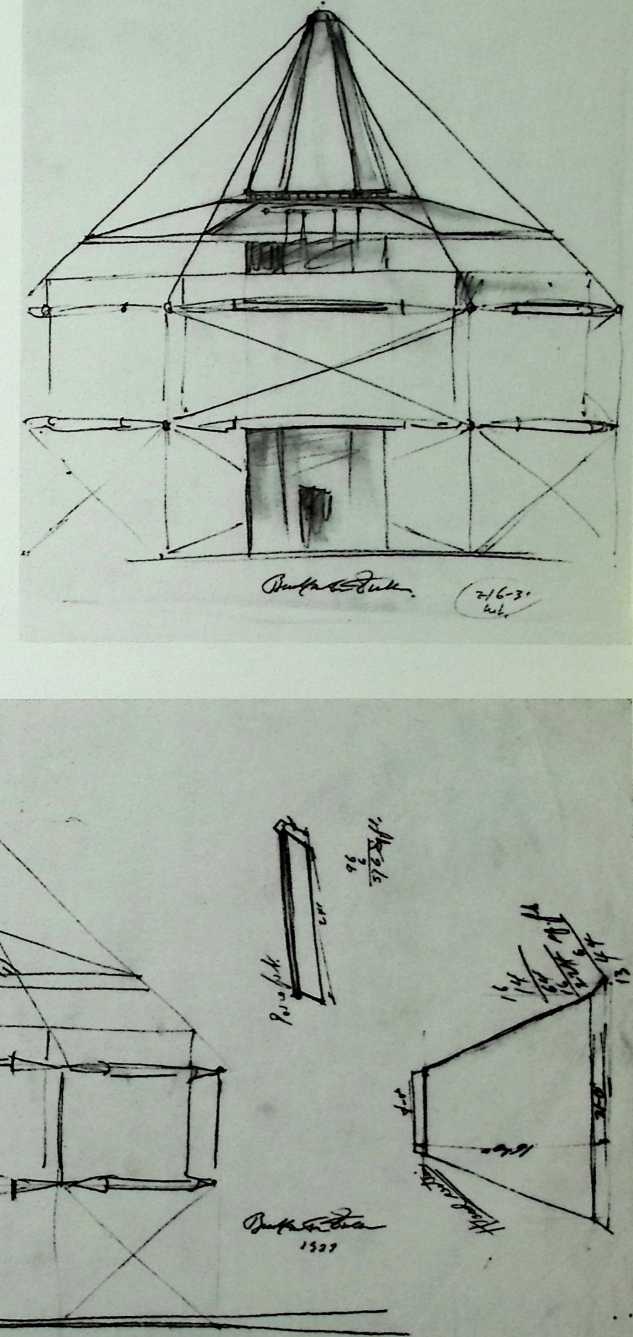
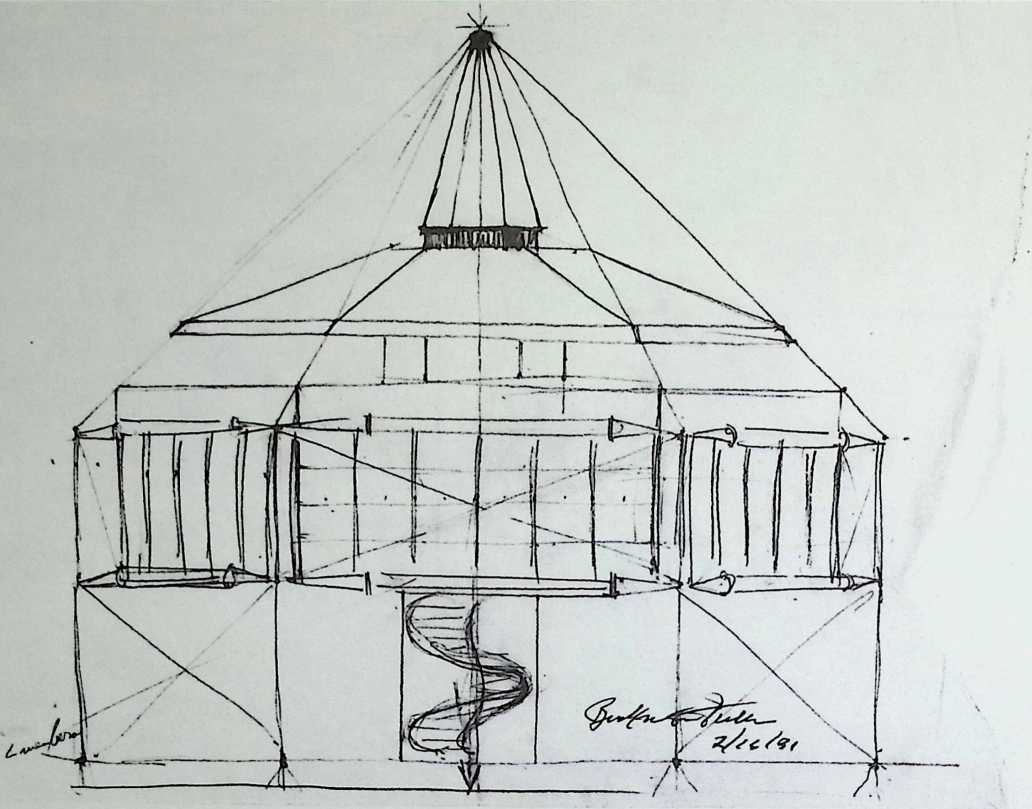
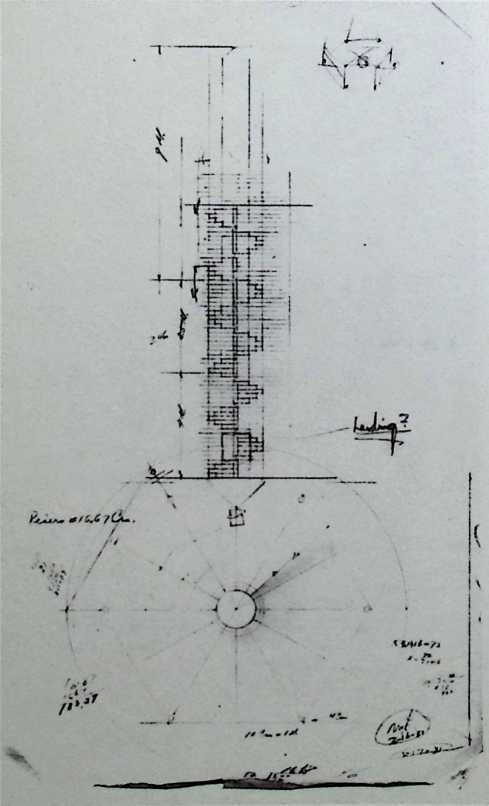
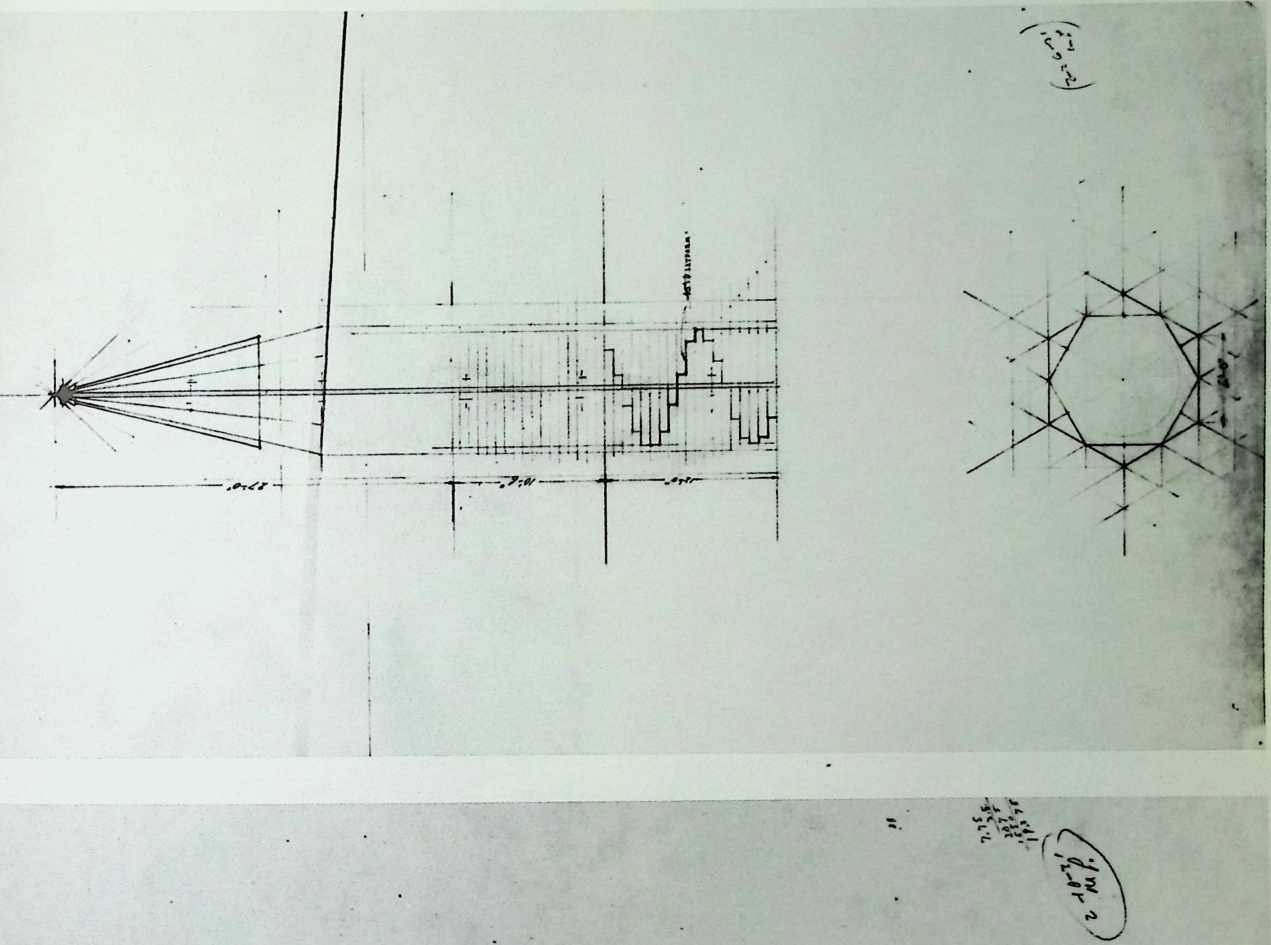

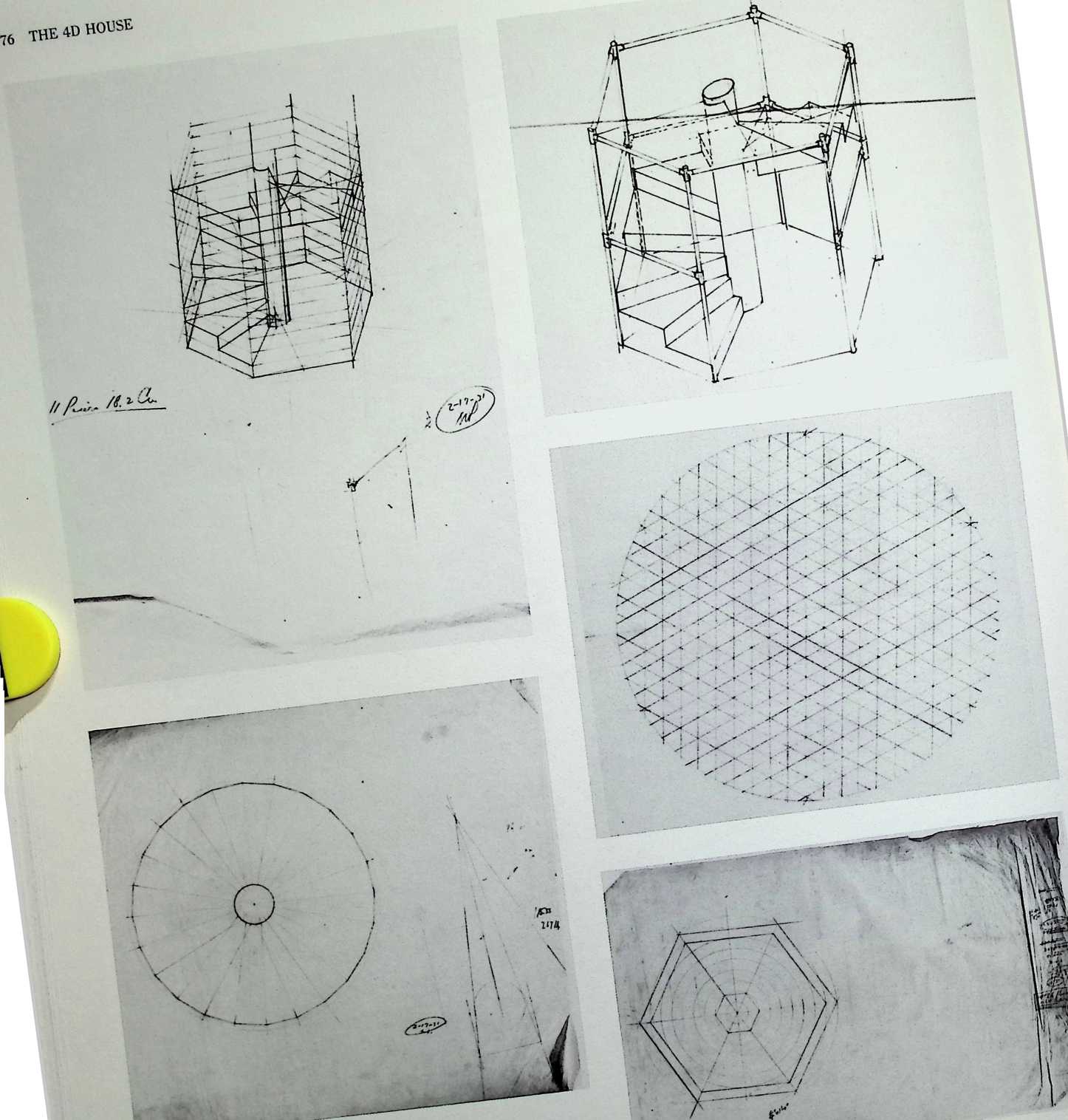
4 J ~ MUI.L- ■/ .J
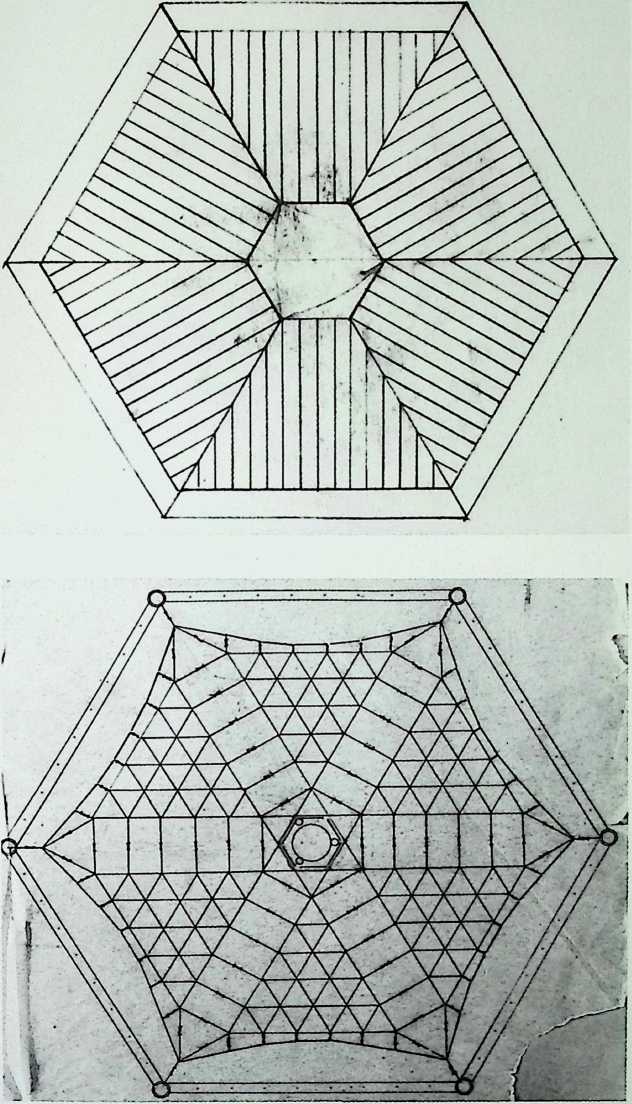
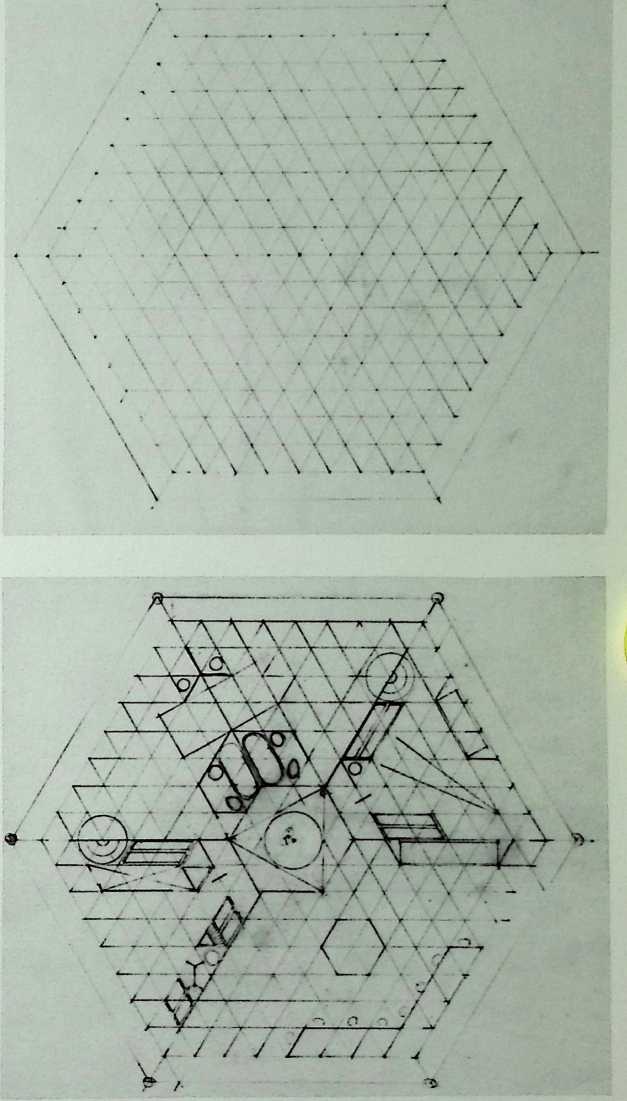
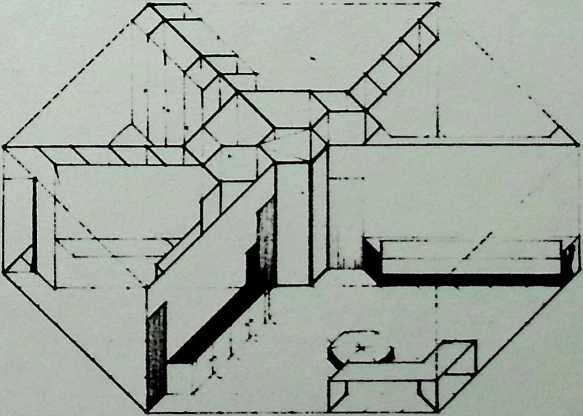
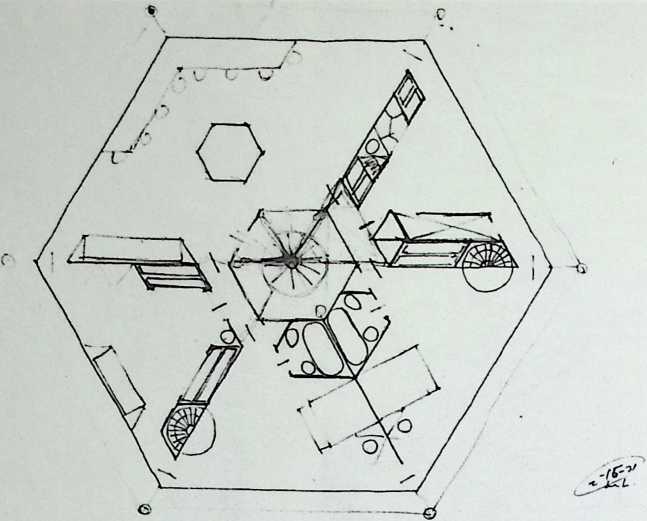
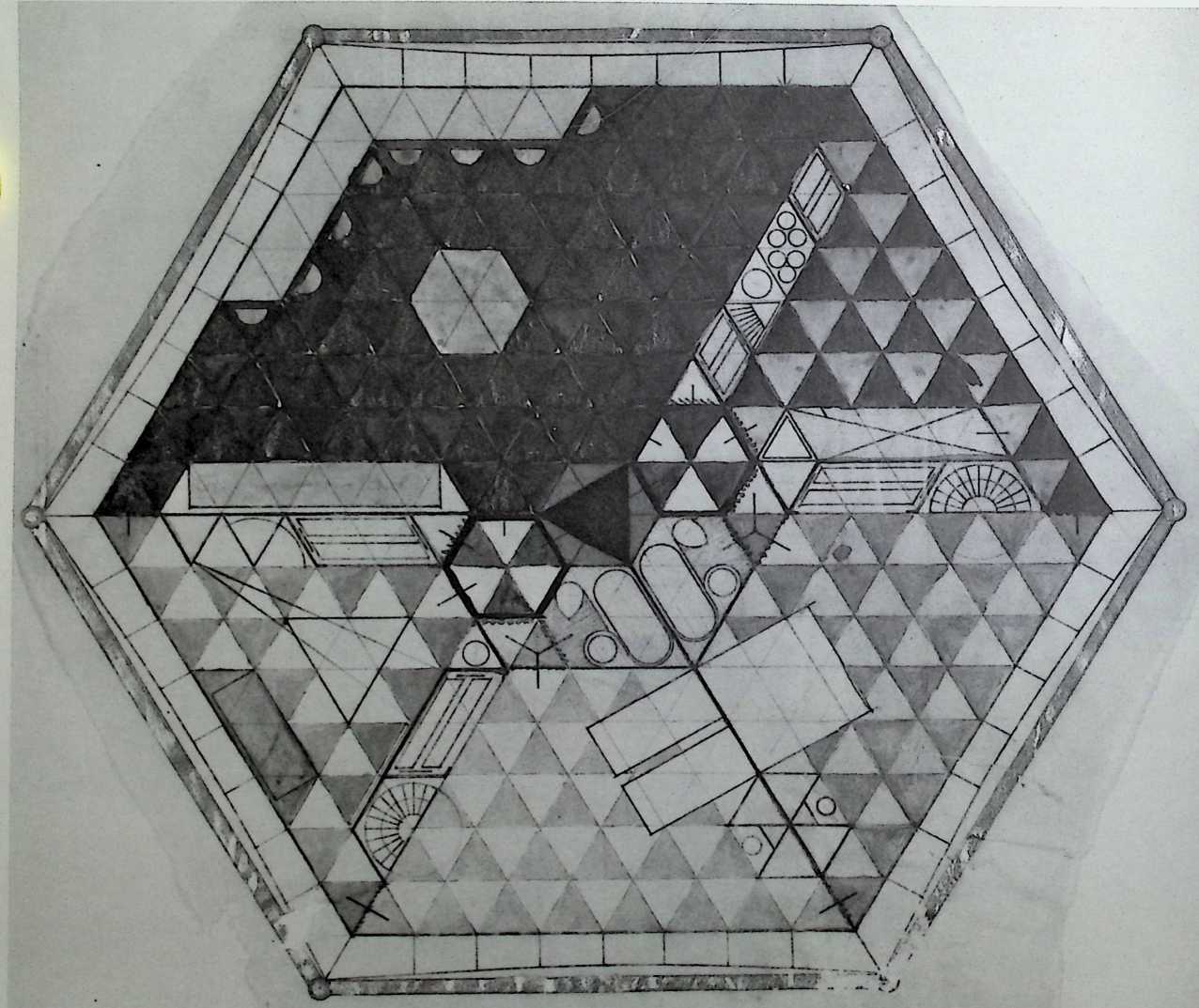
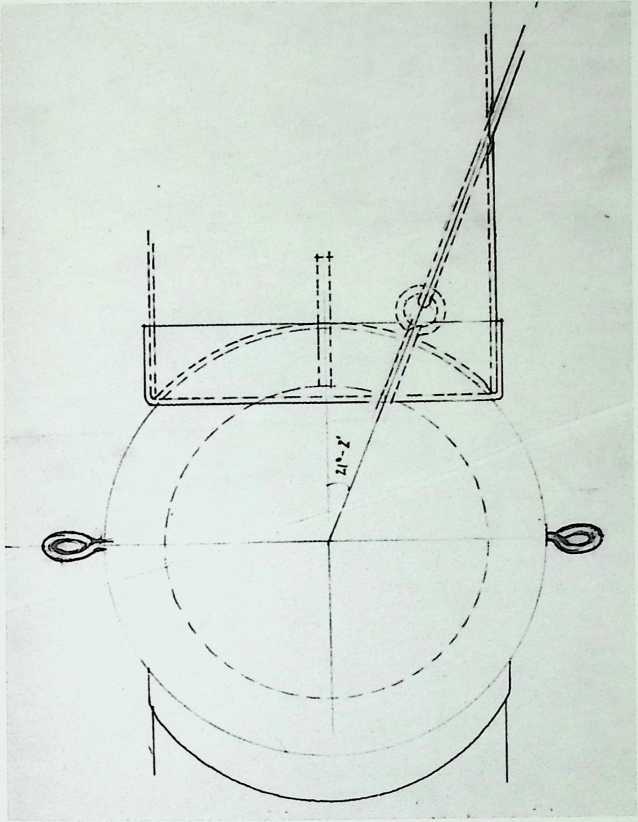
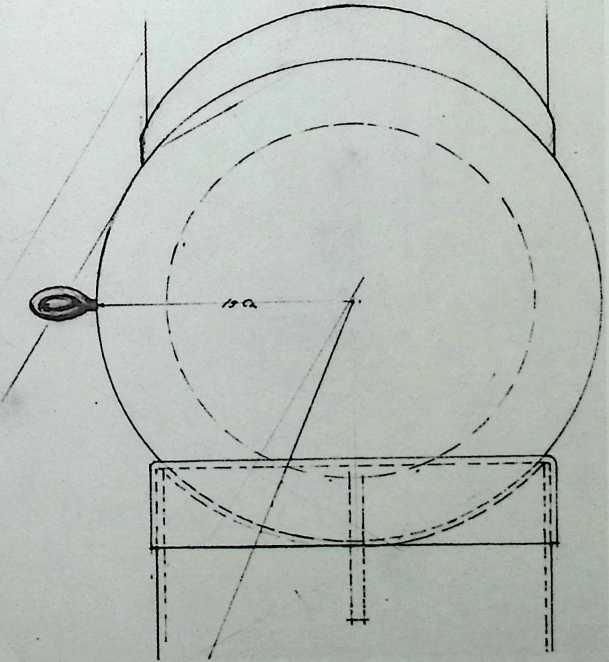
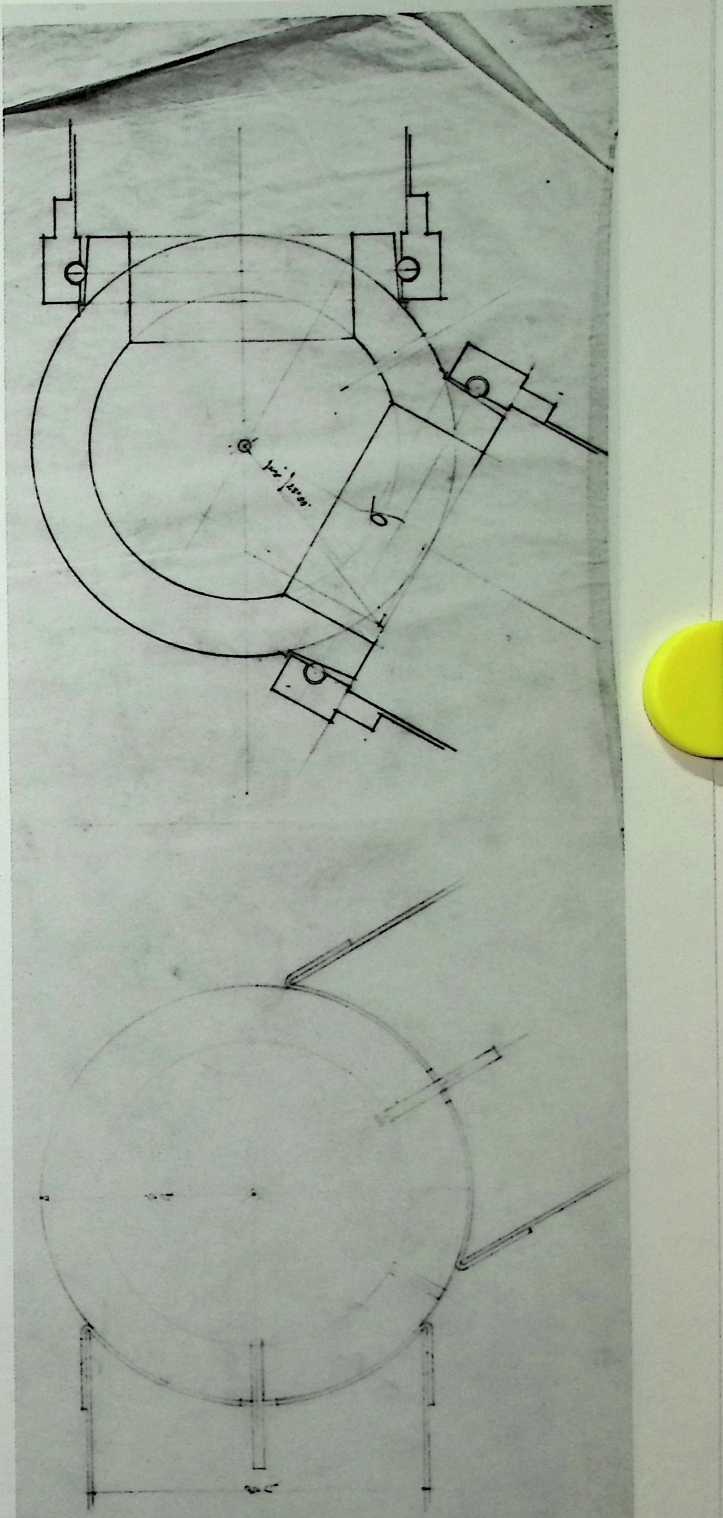
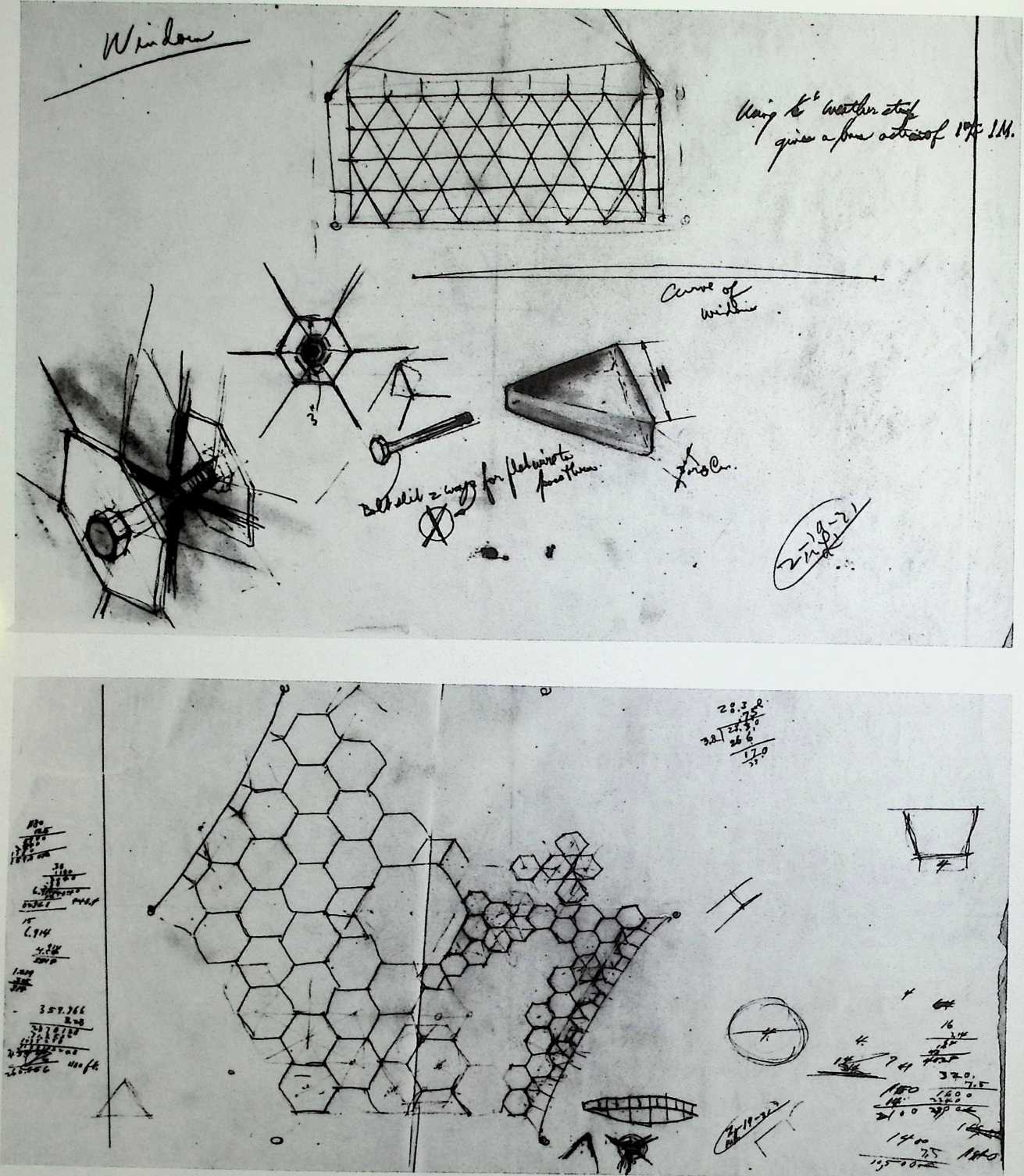
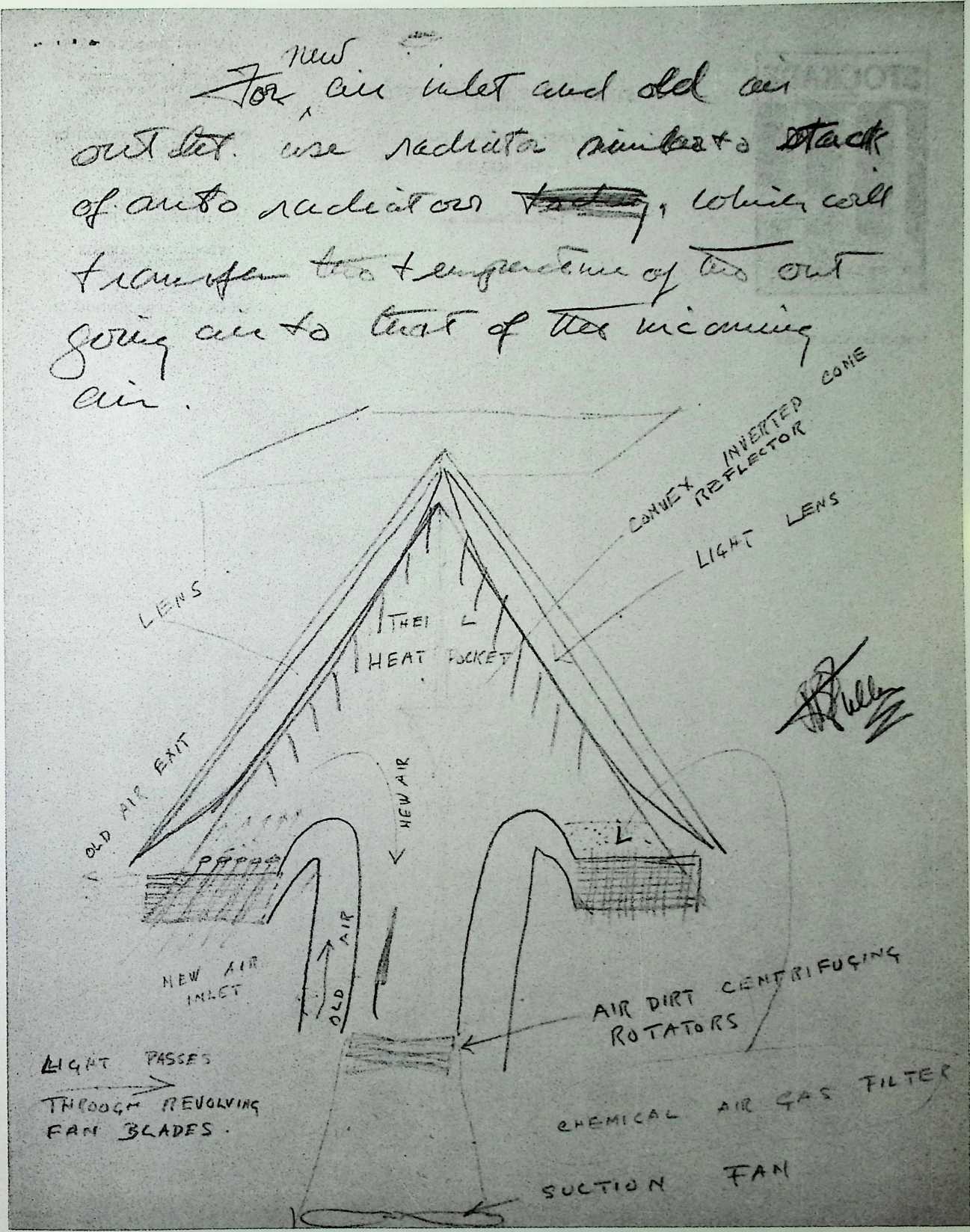

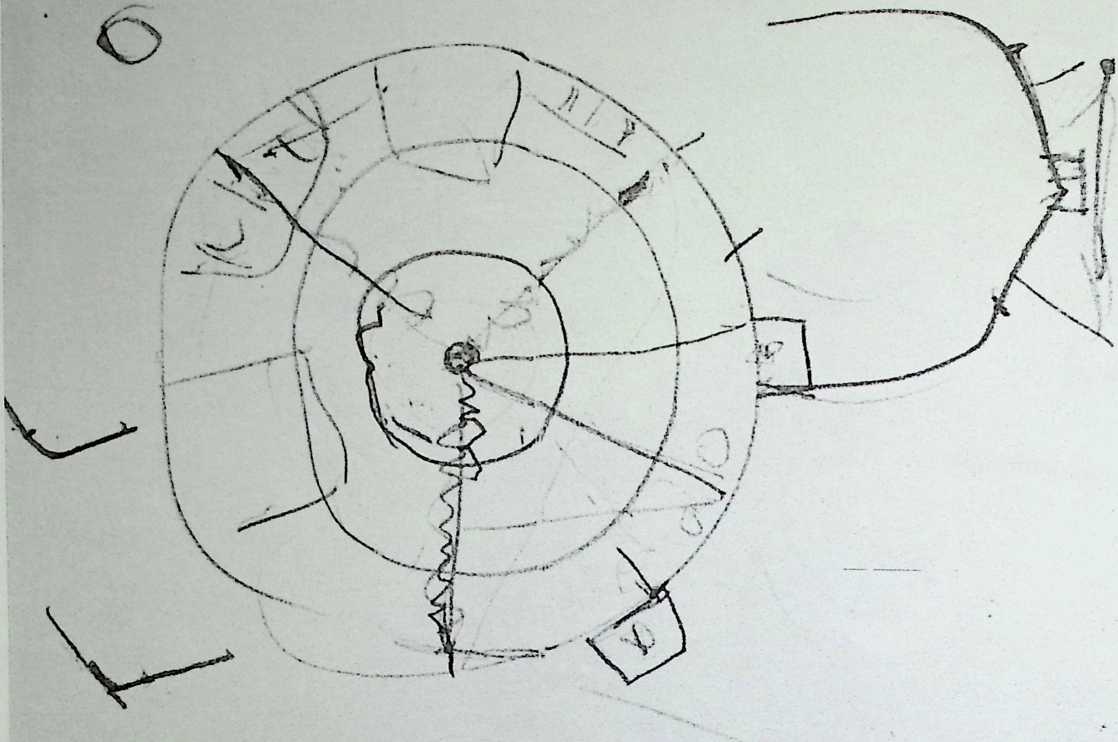
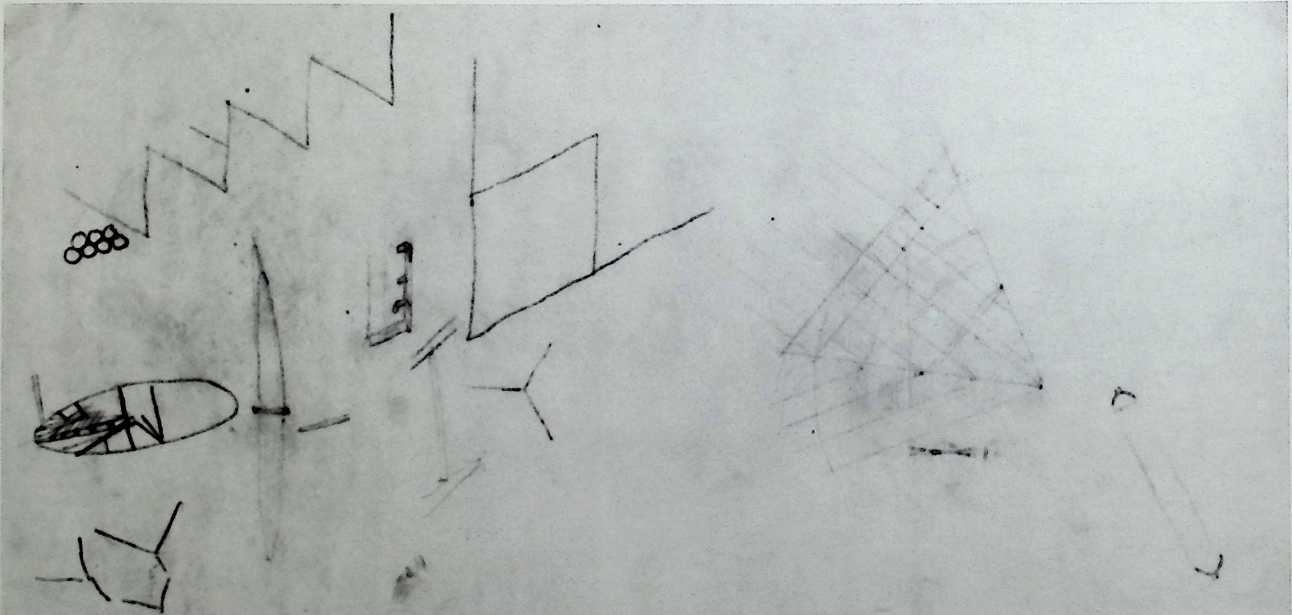
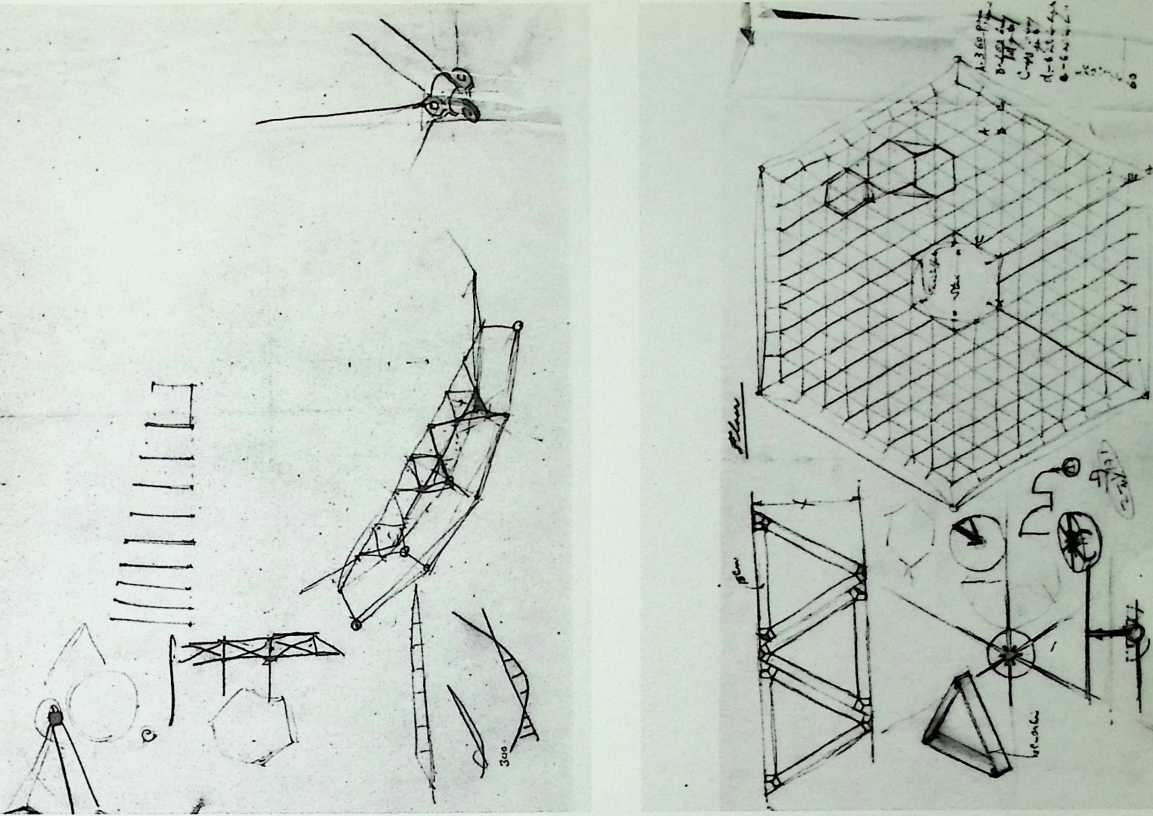
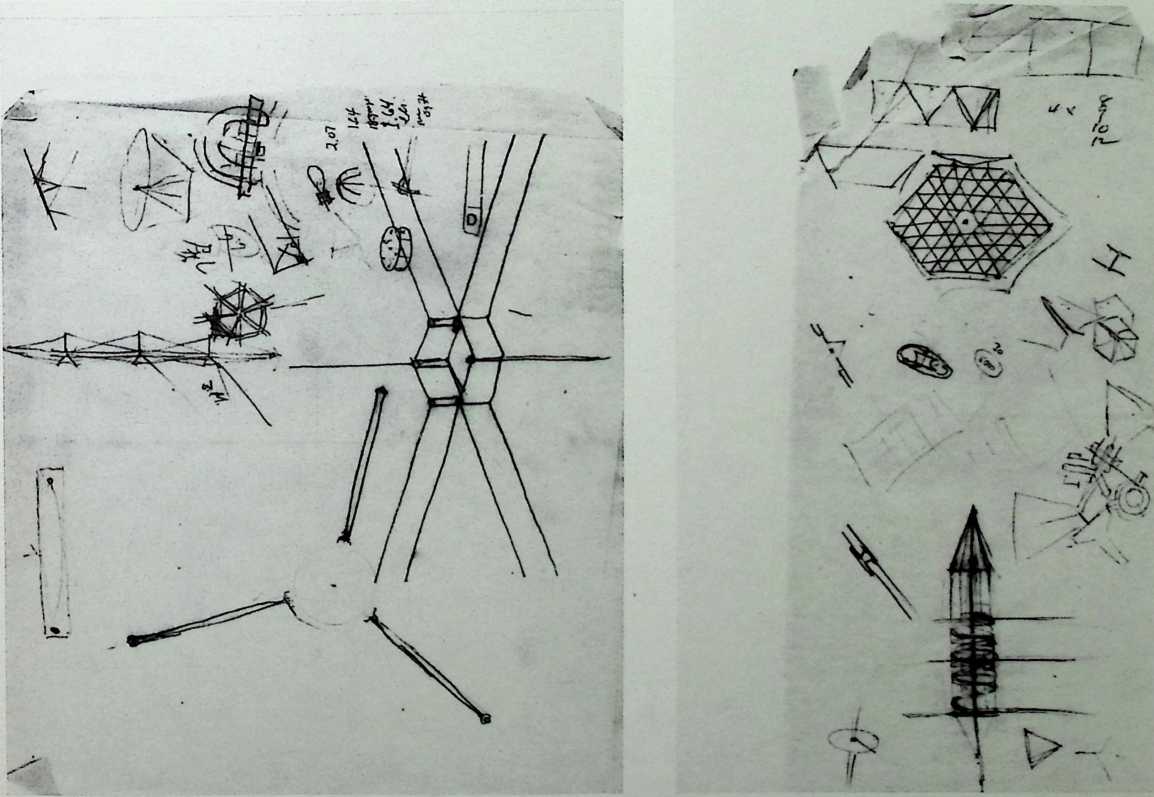
¶ Chapter 10 Proposed Dymaxion Hanging Restaurant for Romany Marie 1929
Romany Marie’s restaurant was an important gathering place for New York City artists and writers during the 1920s and 1930s. Fuller patronized the establishment and showed its owner his appreciation by fashioning for her an aluminum room with custom-made furniture. Eventually, he produced these sketches for an entirely new restaurant based on his Dymaxion House.
![]()
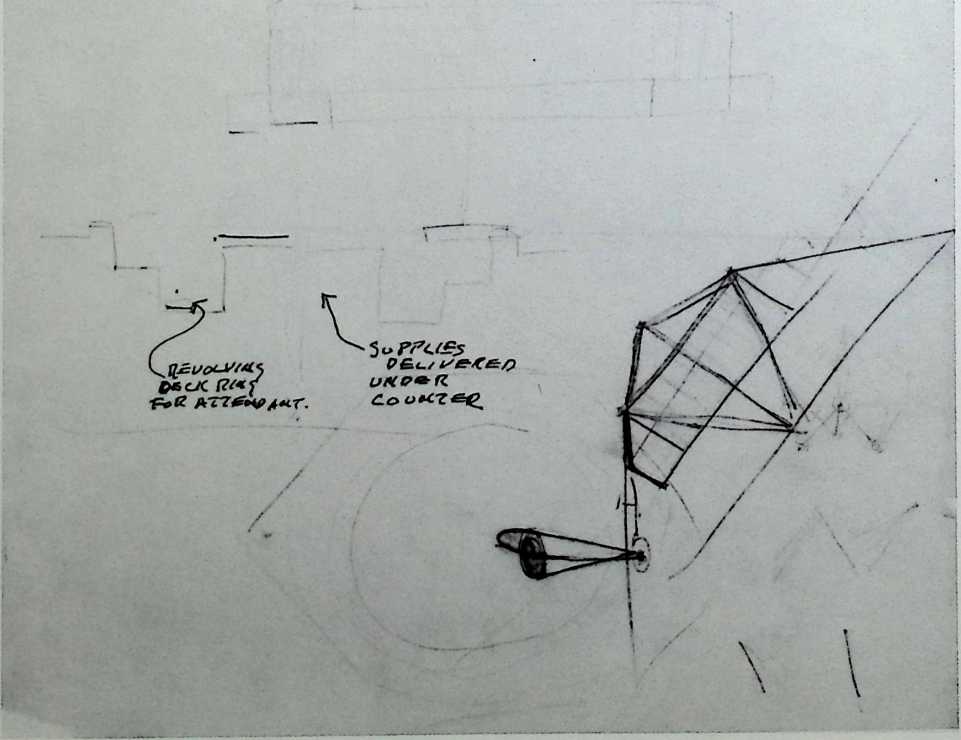

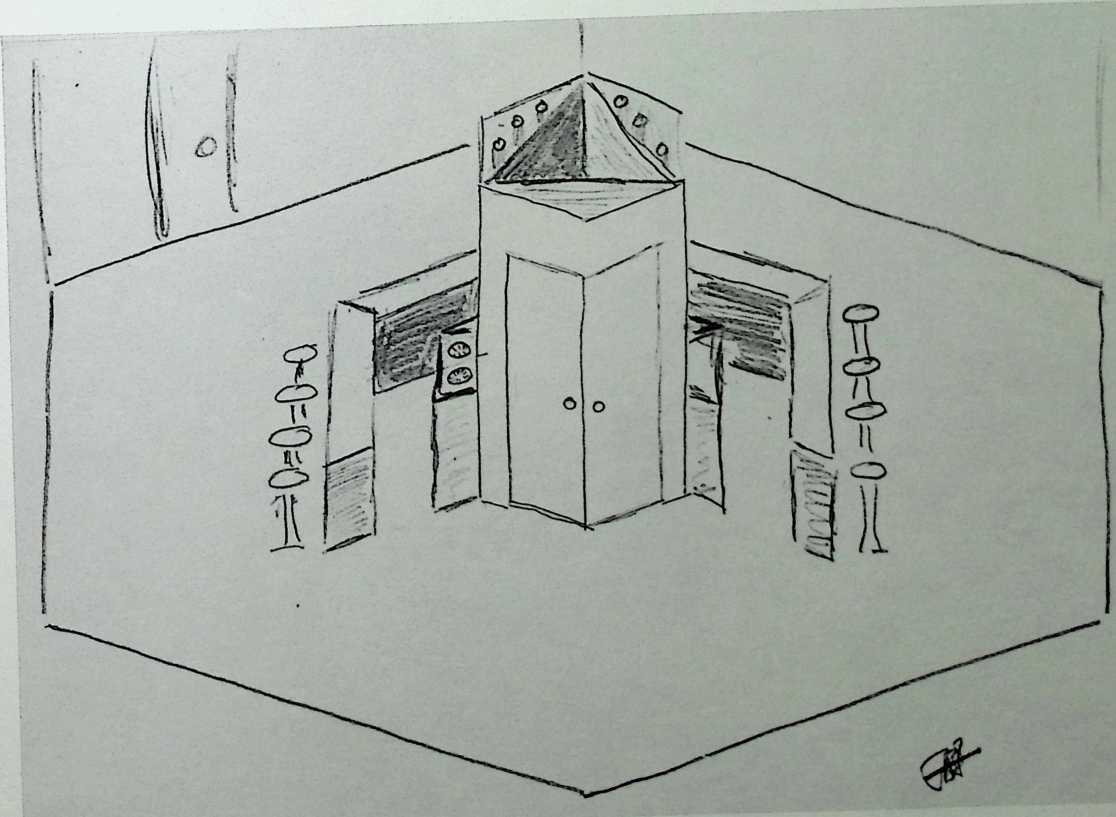
4
![]()
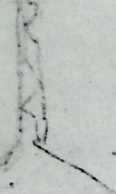
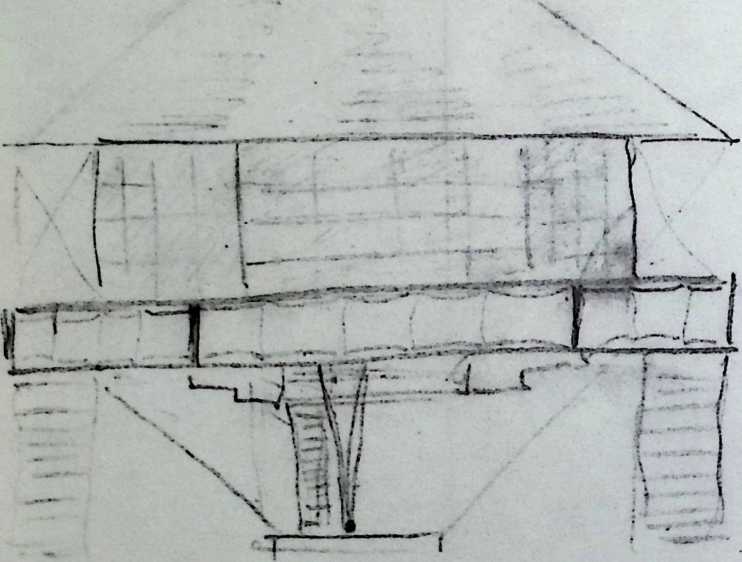
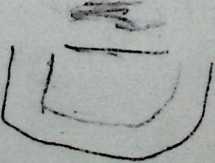
![]()
¶ Chapter 11 Roadside Filling Station Designed by Simon Breines 1929
Simon Breines, a student influenced directly by the work of Buckminster Fuller, won the Architectural League of New York award for this Dymaxion gas station in 1929. Later, he took second prize in the international competition for the Palace of the Soviets in the U.S.S.R. The station has a hexagonal center pavilion with two square awnings that shelter the gas pumps. This structure is supported by a central mast and six suspension cables, but, from the ground, it would have seemed to defy the laws of gravity.
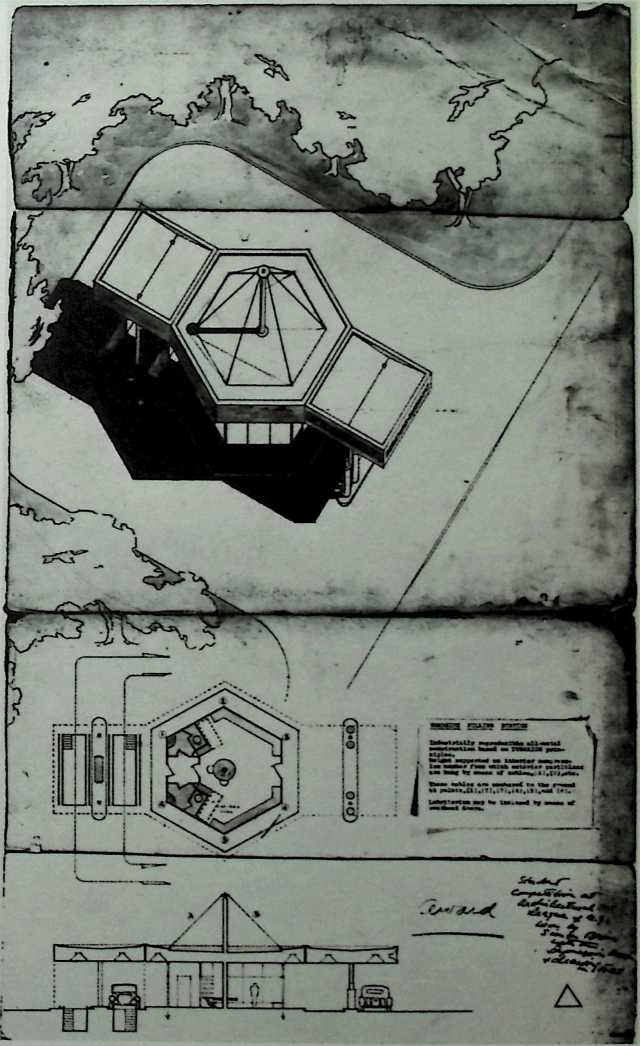
¶ Chapter 12 SSA Dymaxion Twenty-Worker Shelter for Russian Cooperative Mobile Farming 1931
The Dymaxion House was streamlined further in Fuller’s portable dormitory for twenty Russian farm workers. Its hivelike volume is suspended on a central tripod mast and features, among other communal spaces, a circular dining table for more than twenty people. Its plan was published in Shelter, Fuller’s own magazine, in 1932.
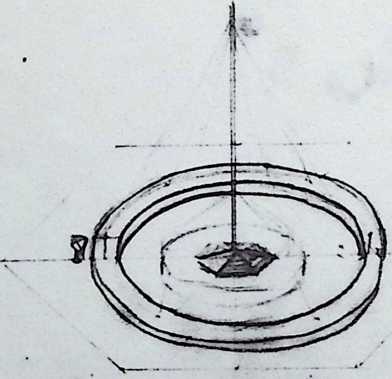
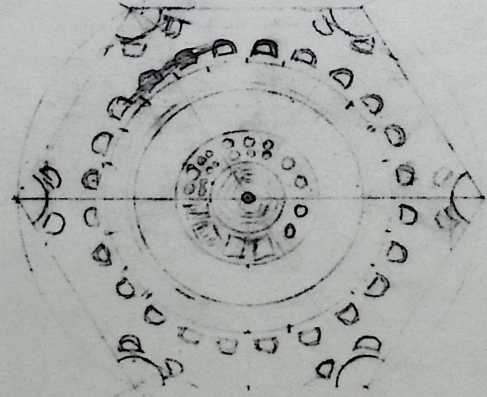
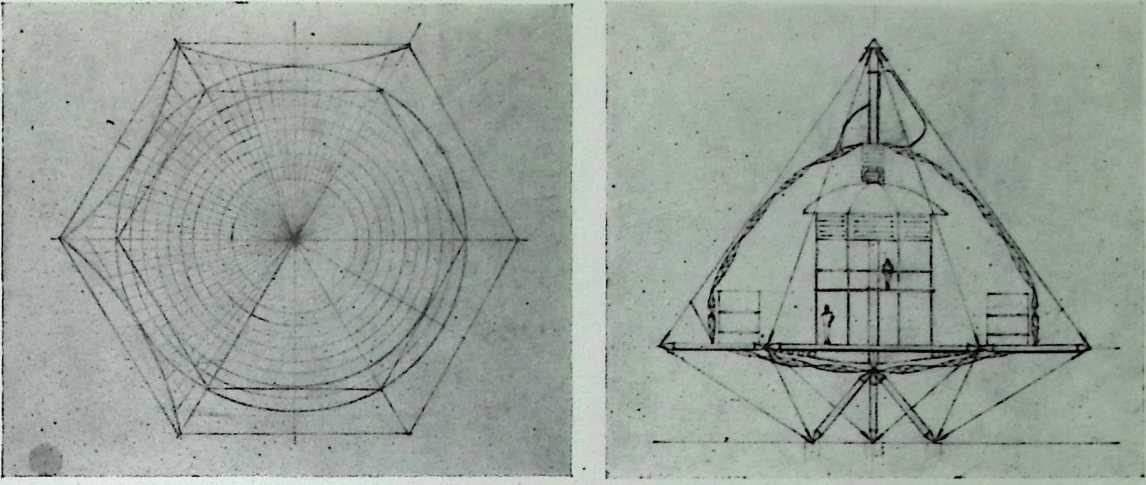
Sketches of early designs SSA DYMAXION 20-Worker-Shelter for Russian Cooperative Mobile Fanning. Also adaptable to extended period of anchorage vicinity industrial sites. (Detail working drawings available publication next issue SHELTER. In detail latest development vertical cross-section more nearly similar to pear.)
The proposed shelter incorporates the following features: Atmospheric control and conditioning typical of the inclusions of the design scientifically found most complementary human mechanism requirements in order expedite thousand-fold the effective service potential of workers to social structure requirements first 15-year schedule concentrated preparation and instrumenting of new order society. Atmospheric conditioning thought luxurious and superfluous is contrariwise essential to manifold simplification such as obviation of bedcovers.
Lighting by day diffused from above, complementary eye mechanism, sunlight enters through ultra-violet-ray-penetratable translucent top shell-sections, thence via radiant reflecting diffusing surfaces of central inner umbrella and convexed inner-wall shell surfaces (all aluminized fabric) to illuminate objects of vision. Light by night from top-central light-heat unit (heat by radiance and air conditioning both, thermostatically controlled). Light-heat unit oil-burning compressed-air blue-white flame lamp (more efficient than indirect electrical system, of oil to atomizer, to combustion engine, to generator, to wiring, to light and heat resistance filaments).
Disappearing ‘‘Pullman bunks’’, 4 to section, which divide shelter into 6 rooms when opened out Pneumatic mattresses covered acid-proof fabric (similar ‘‘Permatex’’ used sun-room mats bathing beaches). No bed coverings as atmosphere like springtime year round.
Occupants so comfortable lightly clad that bathing logical. 4D ‘‘fog gun’’ cleanses more effectively and less injuriously than tub or shower or enervating hot-soaks. Fog-gun obviates soap and towel. Water supplied by transport as relatively small amount used due fog-gun 90 per cent compressed air and 10 per cent atomized water (1 quart per bath) (dry packaging toilets).
Power furnished by tractor with air compressor (tractor detachable for field work during day when shelter unoccupied, (account no pipes to freeze). Fuel storage For heat-light unit in tank on tractor (limiting hazards) with gas for heat-light manufactured at tractor and coupled by flexible tube to tubing in mast.
Outer shells of wood-trussed fabric-covered petal-like sections similar in structure to airplane wi ng sections. Very light, non-flutterable, weather-proofed. Handleable by one man; affixed to structure in hoop-skirt or Japanese lantern support sequence; affixed in such manner as to be easily flowered open, up or down, for sun-bathing or safety factor of atmospheric control.
Made-up hollow wood spars and steel cabling chassis; steel or fibre cabled floor web; pneumatic (Russian rubber weed potential) or ‘‘grass’’ packed sag fill; and synthetic wood (de-rezined) floor plates (similar ‘‘Masonite’’).
‘‘Liberty-Cap’’ ventilator combining functions of wind-streaming vacuum release, and air inlet and exhaust Prevailing air currents near ground more generally vertical in motion, as ricocheting turbulence, wherefore streaming obli quely "up' as with flames and trees, whipping tops to release drag. Ventilator provides natural deliquescent down-and-through, centralizing u p-and-out system, wind operated (in calm fan automatically started). Side gills of ventilator develop high extraction; and streaming air rising a long outer shell of house "shaved" by lower edge revolving ventilator forcing air into system. (A correlating observation—that—Russian minaret forms probably empirically streamlined).
All central utilities hung-up about mast by off-center leverage cohesion independently hoistable into position (or removable) through central circular hatch after shelter shell complete. Entrance to shelter also through hatch caisson by retractable gangway. Supply delivery by dumb waiter to ground regardless occupants ‘‘at home’’. Central utilities comprised of clothes washing and drying equipment—mechanical dishwasher -Storer, standard nonbreakable dishes—grill—storage lockers. (Fog-gunning washing.)
Heating economy despite delicate membrane maintained by streamlining (as with air transports passaging cold altitudes), utilizing forces to increase atmospheric control rather than by fighting ineffectually to insulate ‘‘against’’ elements.
Entire mechanism assembleable in less than 1 hour; transportable all on one trailer.
A SCIENTIFIC HUMAN-FORCE-INCREASING WORKERS' SHELTER, FOR THE SOVIETS. SUCH SHELTER TO BECOME IMMEDIATELY REPRODUCIBLE IN RUSSIA, IN CURRENTLY AVAILABLE RUSSIAN SOURCE MATERIALS, AND WORKERS' TECHNICAL ABILITY, ETC., WITHOUT COMPROMISE OF DYNAMIC CONDITIONS. THIS SHELTER IS TO ABET ESTABLISHMENT OF THE "HEAVY INDUSTRY'S" PLANTS, WITH A SPECIFIC-LONGEVITY OF FIVE YEARS, OF INTEGRALLY SELF-SUSTAINING MECHANICS. AND HIGH MOBILITY OF PLACEMENT.
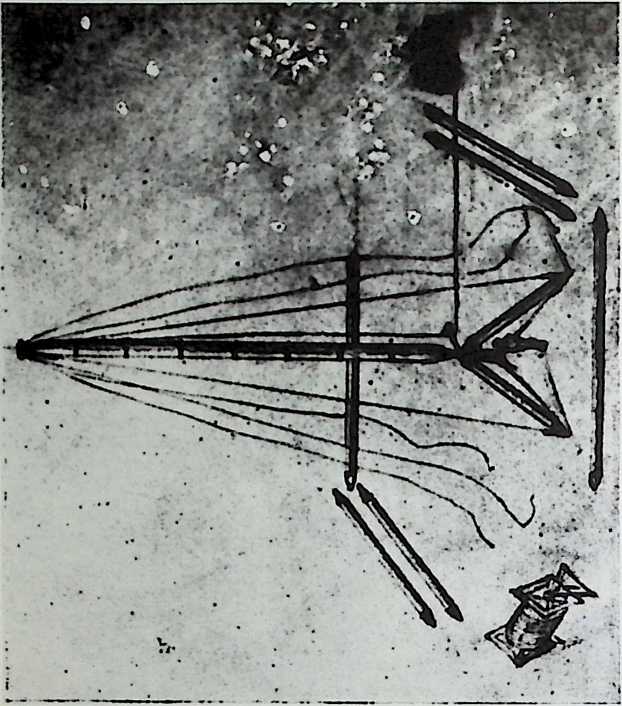
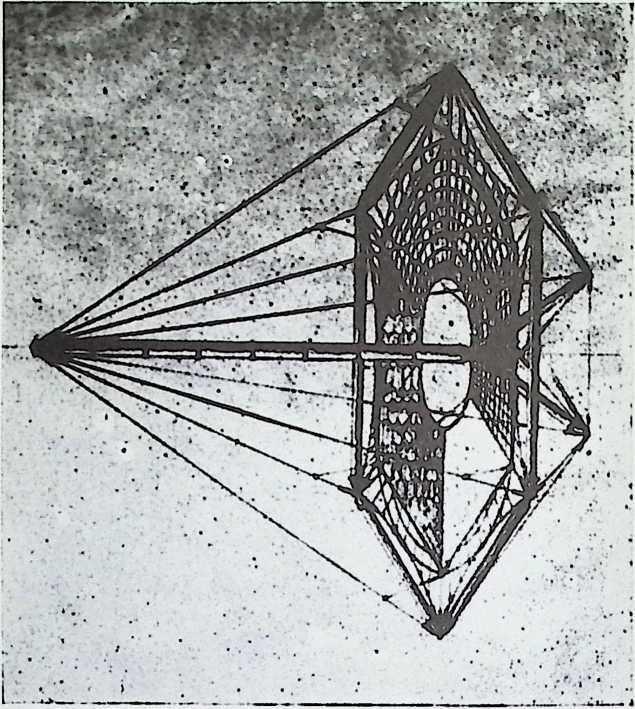
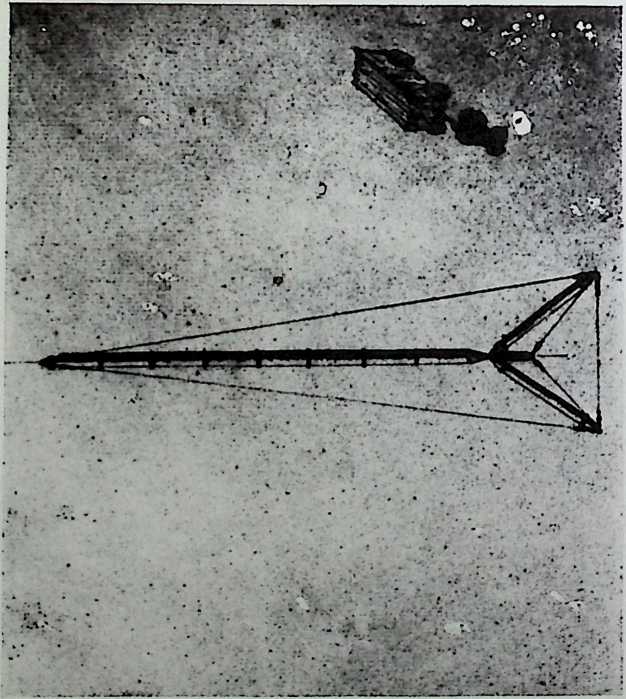
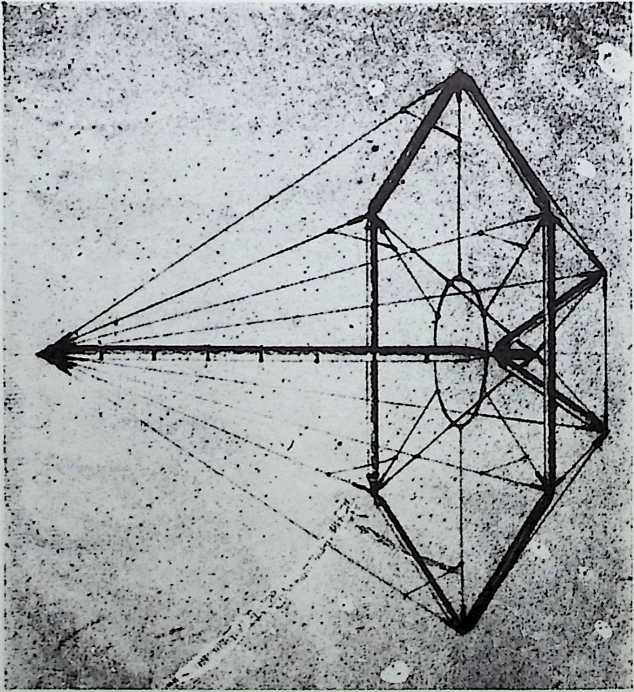


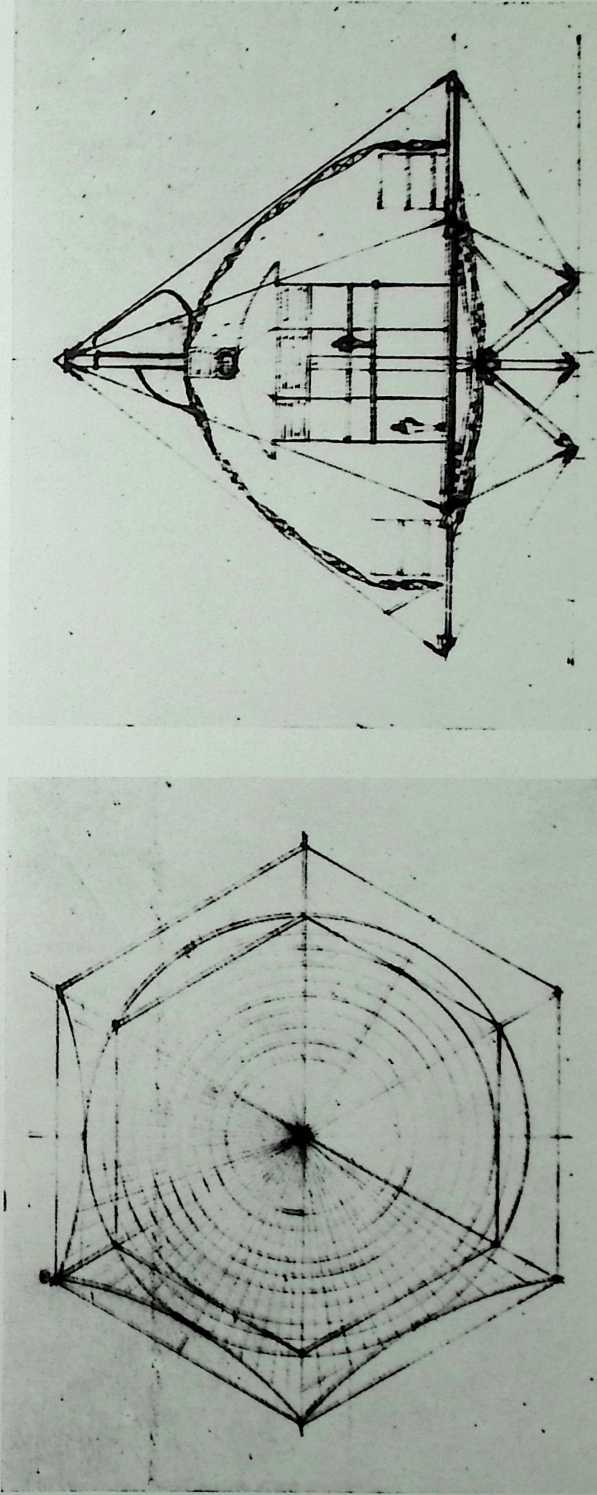
/ A |
* .'or ee |
![]()
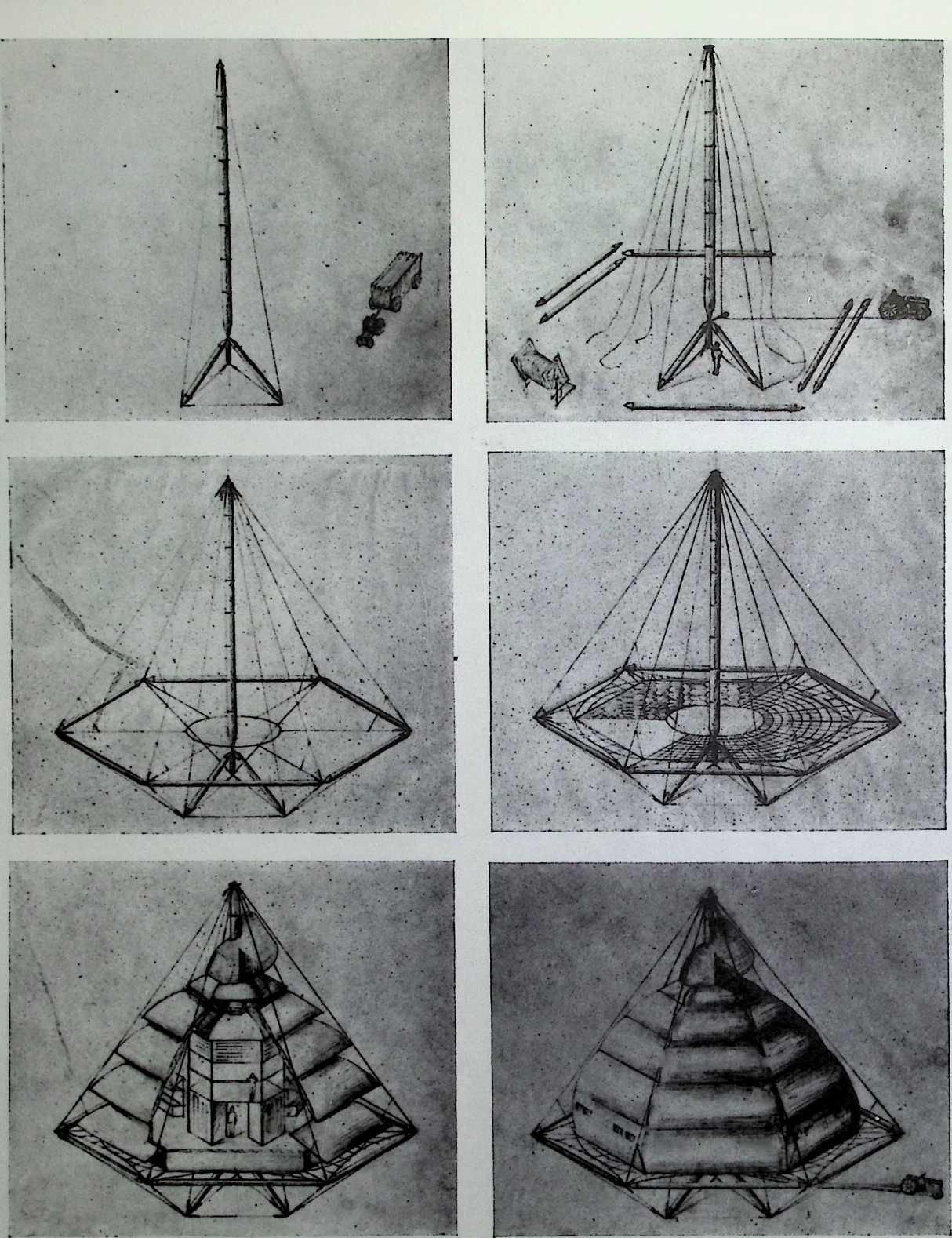
SCIENTIFIC SHELTER FOR U.S.S.R.
¶ Chapter 13 Dymaxion Victrola Agents Record Library 1928
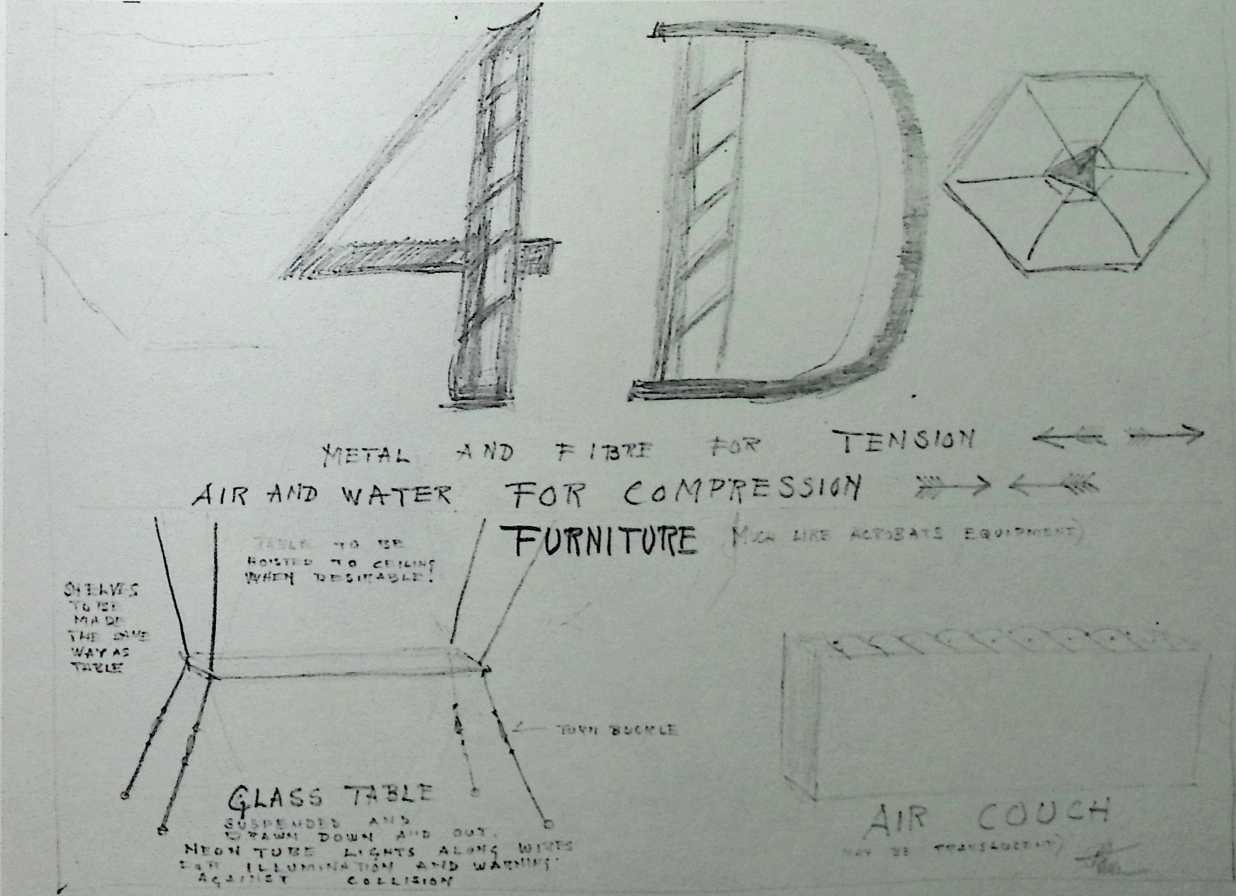
¶ Chapter 14 Dymaxion Furniture 1931-1932
These unusual studies were produced shortly after several highly successful exhibitions of chromium-plated steel furniture by members of the Bauhaus and their imitators in the United States and Europe. However, the similarities between Fuller’s designs and those by other modernists are superficial, and the differences are ultimately of greater importance. For example, in the love seat of 1931, the triangular base and wire stabilizers are more adumbrations of Fuller’s later tetrahedron and tensegrity designs than they are reflections of the European avant-garde. Similarly, the elegant arabesque of the chair of 1932 is more a study of the effects of gravity, tension, and compression than it is a tribute to the slightly earlier work of Bauhaus associates.
Sectional view
"I o w e «? i a r " < x ; : ia t m i< s l 11 i f. 4.
w*TER?aoo» st <
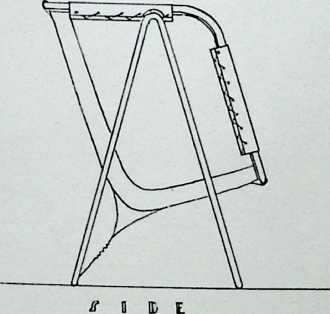
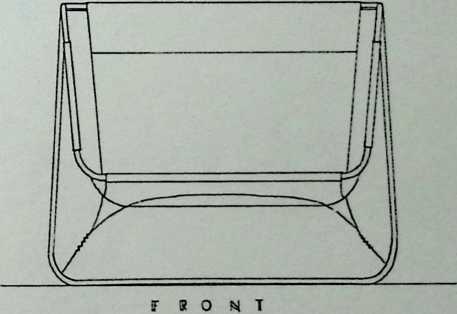
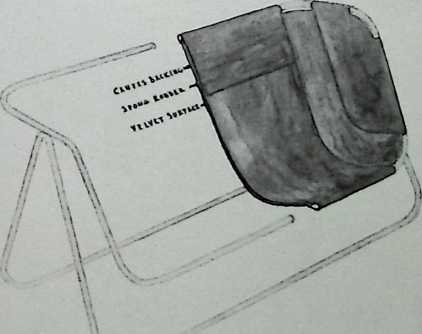
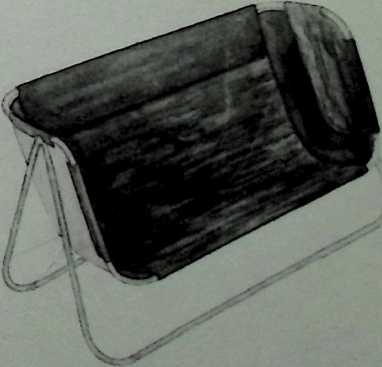
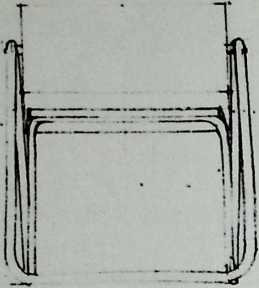
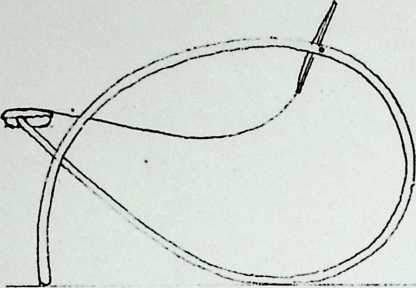
![]()
■3 UCKM lUSTKtL-fDLkEU_~T>I^\UXiL •
■ JIM- S- 3v <U< •'klM'tS •h.t'SXKU'EY
¶ Chapter 15 The Dymaxion Transport 1927--1945
Wooden doors opened slowly at the modest factory in Bridgeport, Connecticut, on a summer day in 1933 and revealed to curious children, reporters, and the sluggish steamers moored in Long Island Sound a burnished metal automobile that was unique in the world. Along its pristine silver sides passed the guiding hands of engineers, designers, and workers dressed in white coveralls embellished by the curious logotype of a flying fish. Perhaps a few observers wondered whether their charge was not actually some mechanical dolphin rather than an automobile. However, this nautical association would have been contradicted immediately as the driver, clad in racing helmet and sunglasses, took his place behind the wheel to test the maneuvering capabilities of the first Dymaxion Transport of R. Buckminster Fuller.
The Dymaxion Transport
After the triumphant day of grueling tests, it became clear that the Dymaxion Transport could travel faster, handle better, and consume less gasoline than any other car with a comparable engine. The car’s superior handling was due primarily to its rear-wheel steering system and its hinged chassis of aircraft steel. But the most sensational aspect of the new vehicle was its aerodynamic design, which employed the streamlining techniques of typical aircraft. The massive, rounded front end (glazed with unbreakable aircraft glass) and the tapered rear section combined to reduce drag to a minimum. Thus, even with an engine of rela- tivey small horsepower, the nineteen-and-a-half-foot vehicle was able to attain a speed of 120 miles per hour.
The earliest sketches for Fuller’s first vehicle (1927) define it as an airplane with collapsible wings that could also taxi for a prolonged period on roads or rough terrain. The vehicle’s inflatable wings and aerodynamic streamlining made it unique among other airplanes, not to mention other automobiles. Its triangular chassis, rear engine, three wheels, and rear steering were also to be features of all subsequent Dymaxion vehicles. First dubbed the Omni-medium Transport, Fuller’s vehicle was designed originally to travel on land, sea, and in the air. One version was to be propelled on jet stilts.
The second version of this vehicle was produced with the serious precision of an engineer. Unlike the 1927 vehicle, the Transport of about 1930 had no wings. Thus, it can be considered the first Dymaxion car. The physical realization of the ‘‘true’’ Dymaxion car required several design changes. The first occurred in 1930, when Fuller solicited the advice of Continental Motors, the standard engines of which he resolved
ultimately to use in his car. The placement of the Continental engine in the rear changed the vehicle’s profile from the dynamic tear shape of the earlier model to the more horizontally balanced shape of the car that Fuller, in 1933, labeled Car 1 (see pages 131--134). The raised elevation of the rear body also allowed greater room for the passengers, who would have entered the car on the right side through two doors shaped like those of a fuselage. Starling Burgess, a famous designer of racing yachts, also must be credited for the changed configuration of Car 1, the streamlined shape of which resembles an upturned sailboat. Burgess is listed first on the drawings as the designer of this car, which actually never was taken beyond the stage of a test chassis.
A series of diagrams produced by Fuller’s workshop demonstrates the superior handling capabilities of Car 1, without making a single reference to its speed. The public would have perceived the car as an oddly sleek vehicle that could park in less space and turn more safely than other automobiles with its three wheels firmly on the ground. But these were not important considerations in the first Dymaxion Transport designs.
Car 2 (pages 135--141), the first of the three constructed Transports, was inaugurated ceremoniously in July 1933, as described at the outset of the discussion. Also designed primarily by Starling Burgess, the first executed Dymaxion car body had a wooden frame, a canvas roof, a periscope, a single headlight, and a raised air scoop to increase the efficiency of the engine. A late photograph of this car with the racer Ralph de Palma shows how the plastic windshield was reinforced later by the addition of aluminum mullions. Below this window in a painted stripe appears the insignia of Continental Motors, the firm that supplied the engine.
The first executed Dymaxion car acquired a great deal of adverse notoriety after a fatal accident during the Chicago World’s Fair of 1933. This unfortunate event received unfair coverage by the press. Although the evidence demonstrated that reckless driving rather than poor design was at fault, the Dymaxion would never be trusted entirely by the consumer in years to come, in spite of its obvious merits as a vehicle and the quality of its design.
Shortly after the tragedy in Chicago, Fuller designed Car 2’Z> (pages 142--143). It had a more aerodynamically sound air scoop. This feature made the car more attractive aesthetically and more stable visually.
Car 3 (pages 144--157) was built by Burgess entirely of metal in February 1934. Its design included both the new wind scoop, contiguous with the rear body, and a sleek front shield for the protection of the rearview mirror. These features mitigated, to an extent, the extreme dynamism of the car’s forward mass. It was the design of Car 3 for which Fuller made a patent application in 1933 (granted in 1937). The doors of this model are also less aviatory. Although squared off rather like those of conventional cars, they are still on one side (perhaps to reduce the expense of fabrication). The band of fenestration for Car 3 is more uniform, another feature making the vehicle look more like an ordinary automobile than a fuselage. Further concessions to the popular notion of a car were the addition of the window vents on both sides, the simplified fenestration of the front windshield, and the dual headlights.
The next Dymaxion Transport was designed in the spring of 1934 and was called Car 5 (pages 158--170). It was the third and final car produced by Fuller’s factory. The chief improvement in terms of traditional comfort was its two doors on each side. Other possible reflections of Fuller’s concern about public acceptance of his car were the elegant, if overprominent, steel bumper along the lower extremity of the aluminum body and the additional rearview mirror for the back seat. To play down the illusion of dynamism further, Car 5 was given a raking exhaust tail that produced an impression of greater stability by dint of its emphasis on the horizontal.
Fuller’s immediate reaction to the reception of his latest car model was to design in 1934 two smaller, more condensed versions of the Dymaxion Transport that would appear to be safer than a motorcycle or other sport vehicles. These designs would have continued the streamlining tradition of its several precedents in a car for fewer passengers. The first of these was the Tudor Sportster (pages 171--172), designed entirely by Fuller, with a less prominent forward cantilever and thus presumably a greater stability. The smaller version of the Sportster was dubbed the Single Seater; in it Fuller dispensed with the rear seat in exchange for more leg room in front and space for a spare tire in the rear (page 173).
Fuller resumed his development of the Dymaxion Transport in 1943 in his studies for a car called the D-45 (pages 175--182). This car designed for Henry J. Kaiser bore no resemblance to a fuselage, even though it also had three wheels and a triangular chassis. On the one hand, it would have been further advanced than the earlier Dymaxion Transports because it was to be powered by three turbine engines fixed to each wheel assembly, each of which was designed to turn independently. Moreover, at higher speeds, the driver could extend the rear-wheel assembly on a strut several feet long, providing greater control. The relatively low- horsepower engines would power the 620-pound vehicle at unusually high speeds and could run at least forty miles on a single gallon of gasoline. On the other hand, the sleekness of the earlier models is absent in the D-45, which is low and squat in profile and as broad as it is wide. Few could deny that this final manifestation of the Dymaxion Transport would have been like no other car of 1945. However, one must bear in mind that it represents a chastening of a far more glamorous and adventurous design that never got off the ground.
¶ Chapter 16 Early Explorations
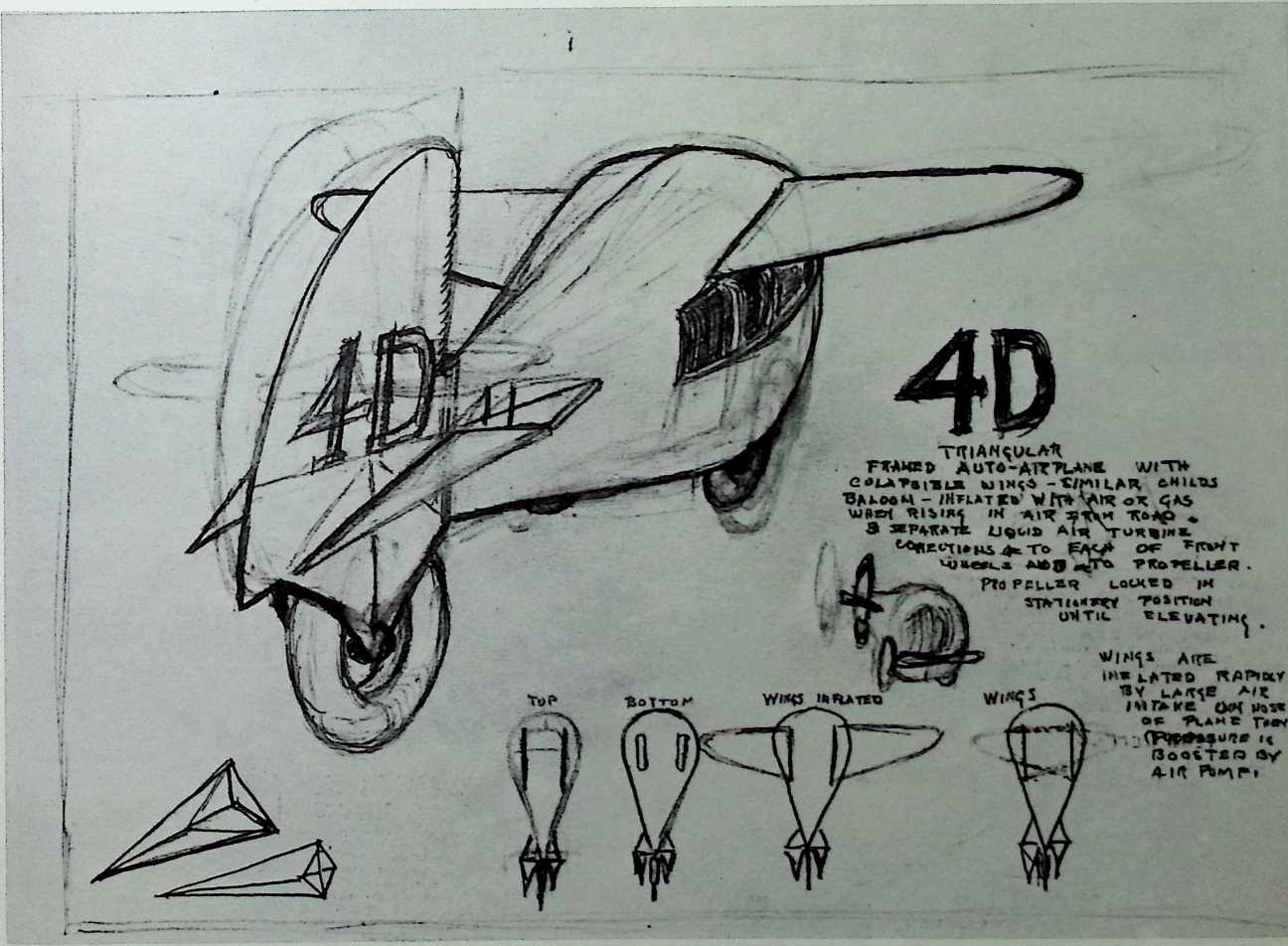
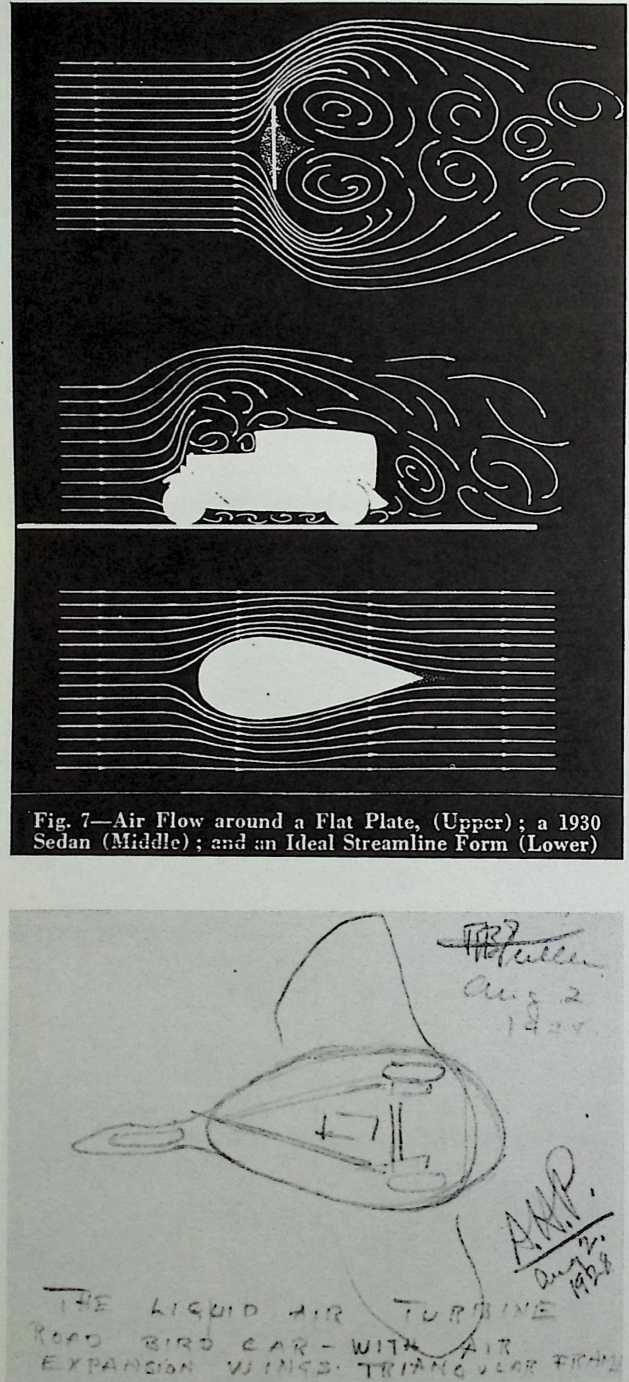
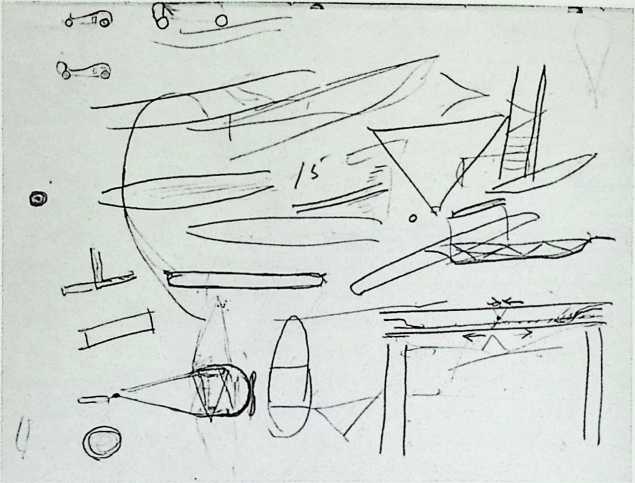
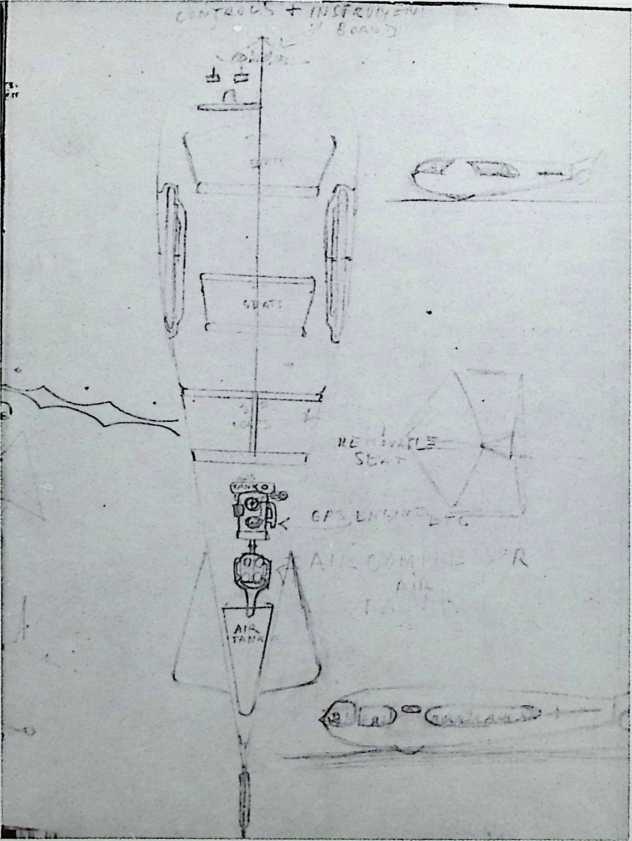
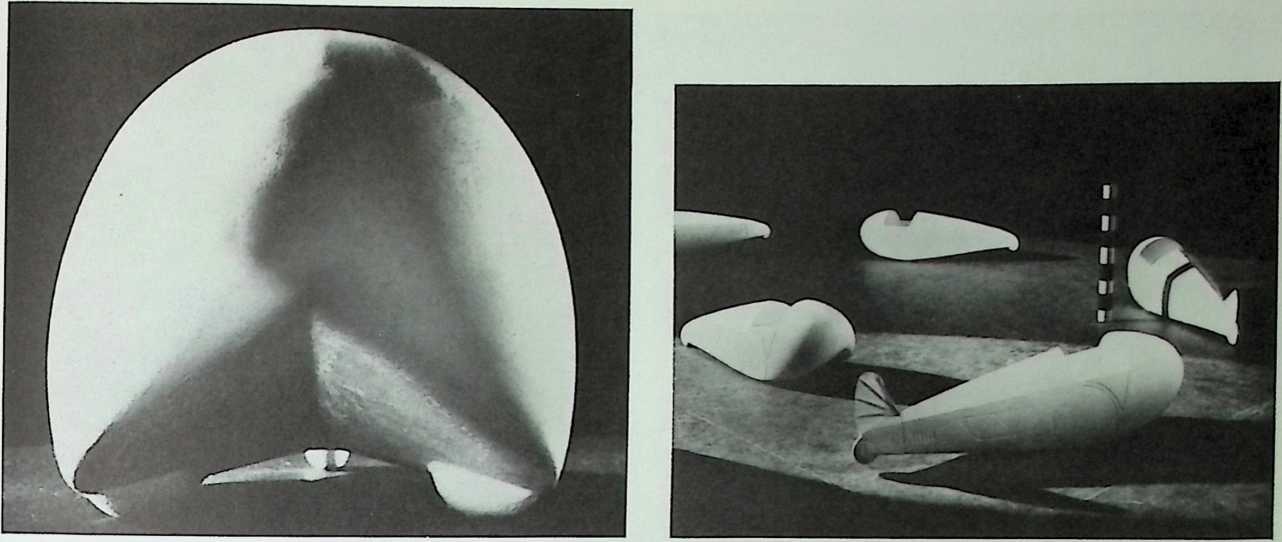
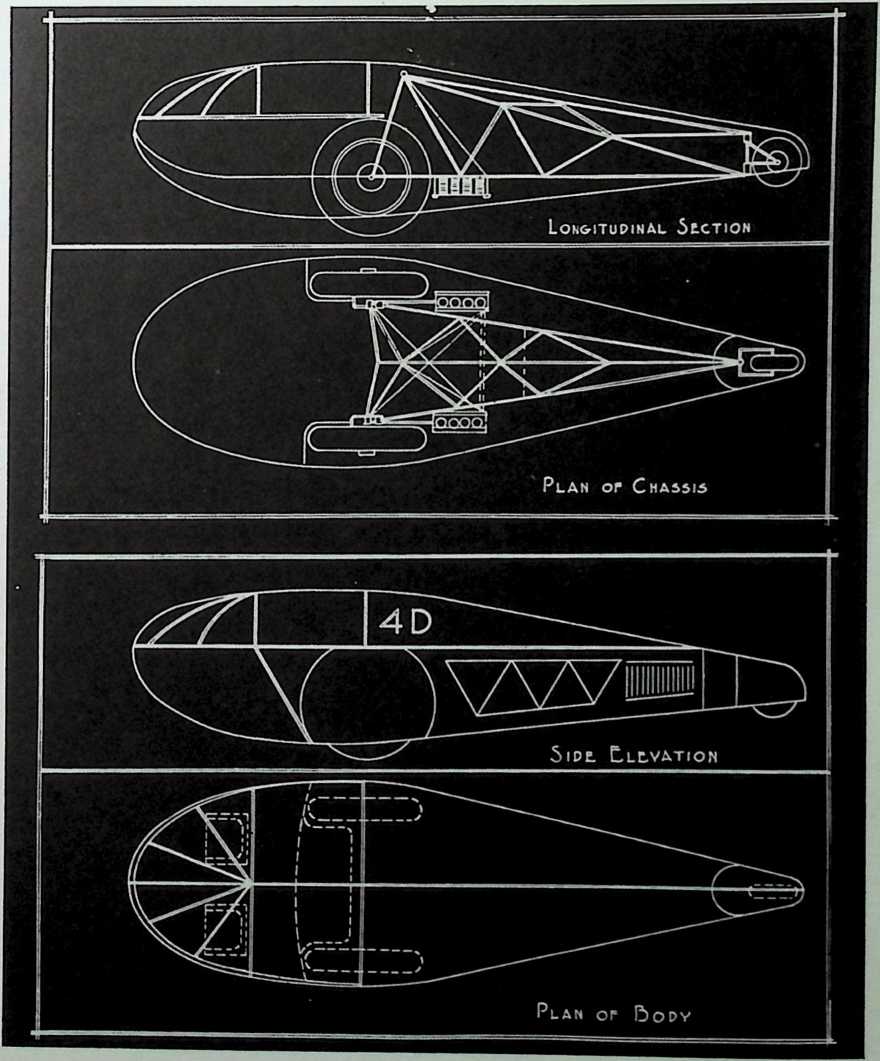
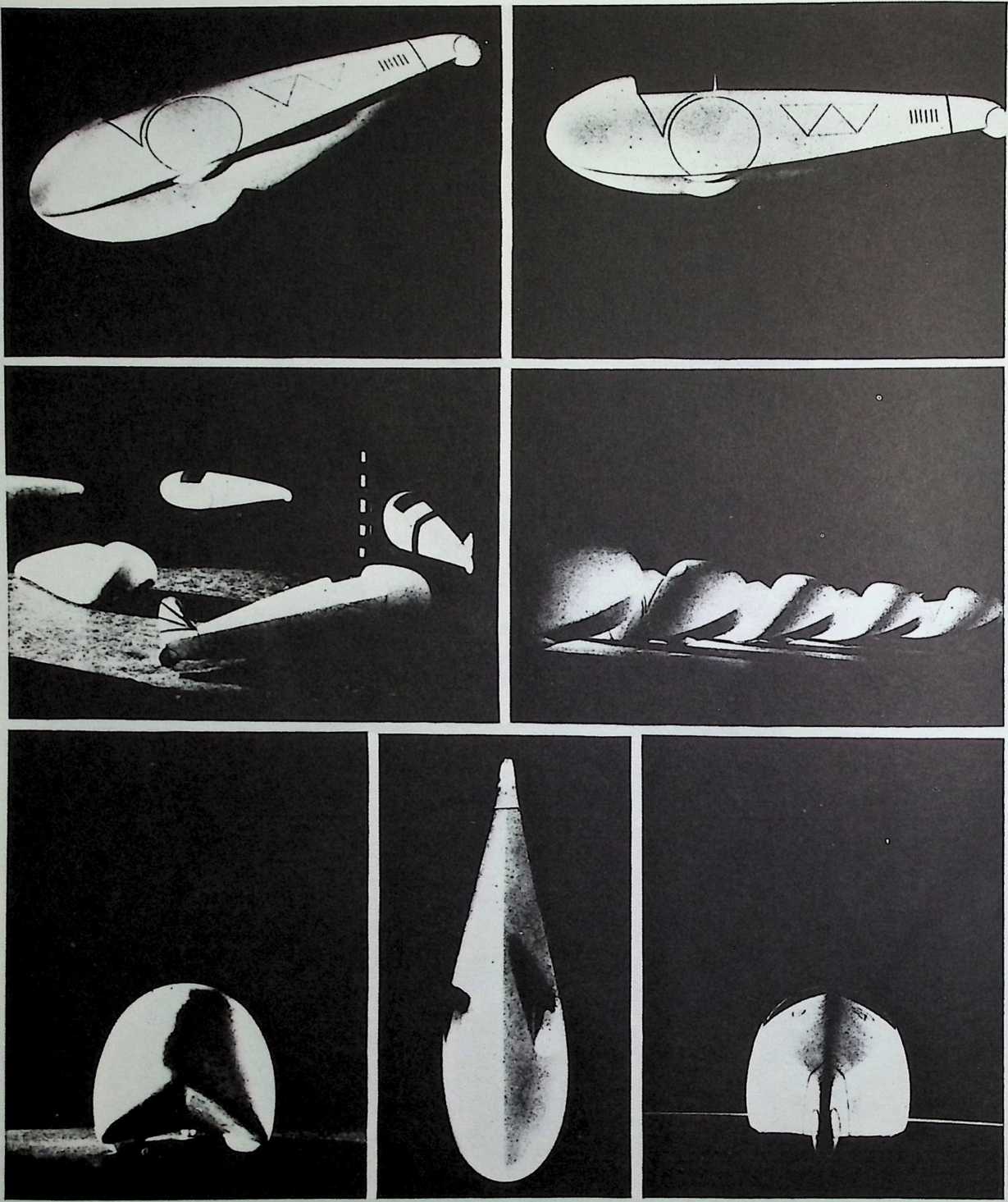
THE 4D TRANSPORT,
Demonstrative of the designing potential to the immediate economic exigency—4D transport has inverted V bottom designed to provide air-keel at speed as well as to lift tail of transport at high speeds (over 50 M.P.H.) developing infinite wheel base—the faster the smoother—fan-tail for increased rudder windage when planing. Pneumatic longitudinal guard rail under skin of transport. Weight unloaded approx. 400 lbs.—low kinetic providing smooth and exquisite acceleration and deceleration (as with outboard motorboat racers) quantity production custody debit $100.00. Pulls from abreast tactical center; steers aft with air wheel or air-rudder.
SHELTER, NOVEMBER, 1932
¶ Chapter 17 Early Research Material for Continental Motors
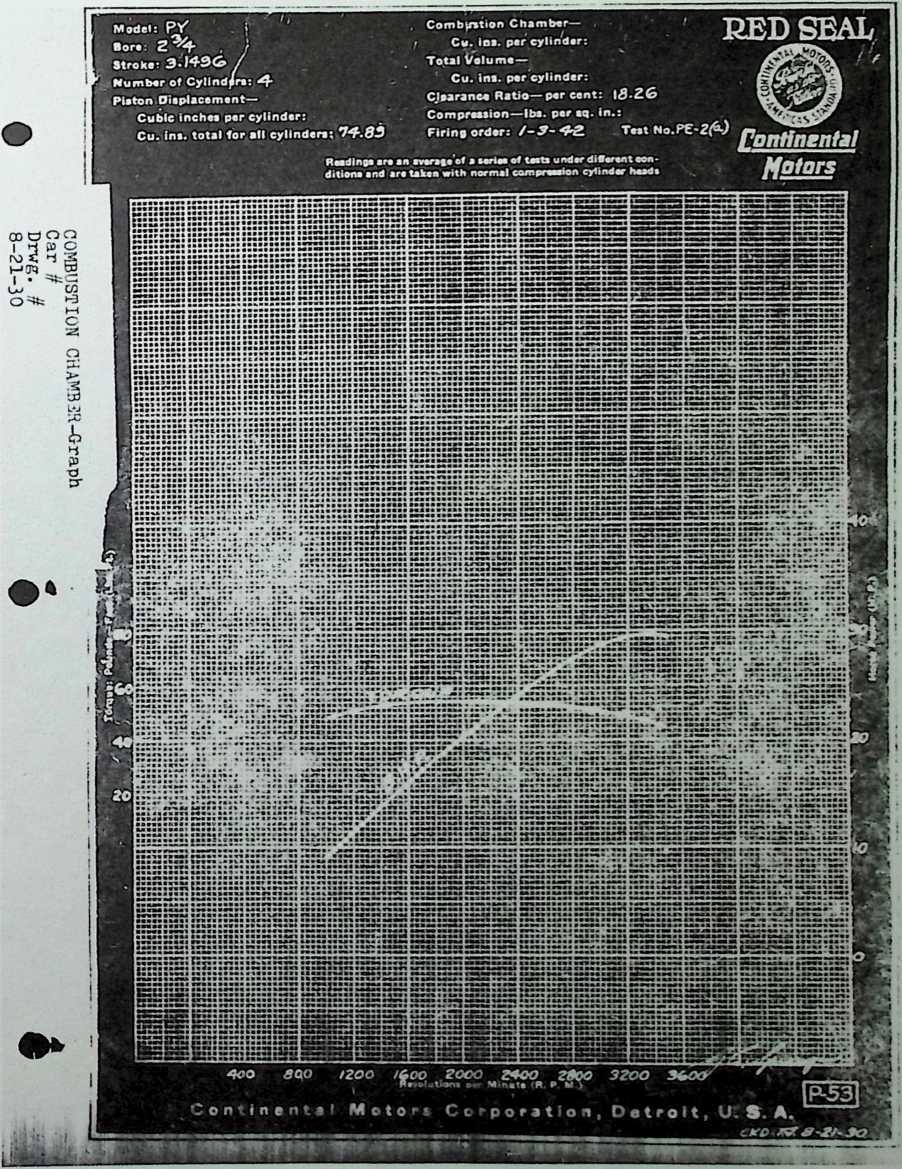
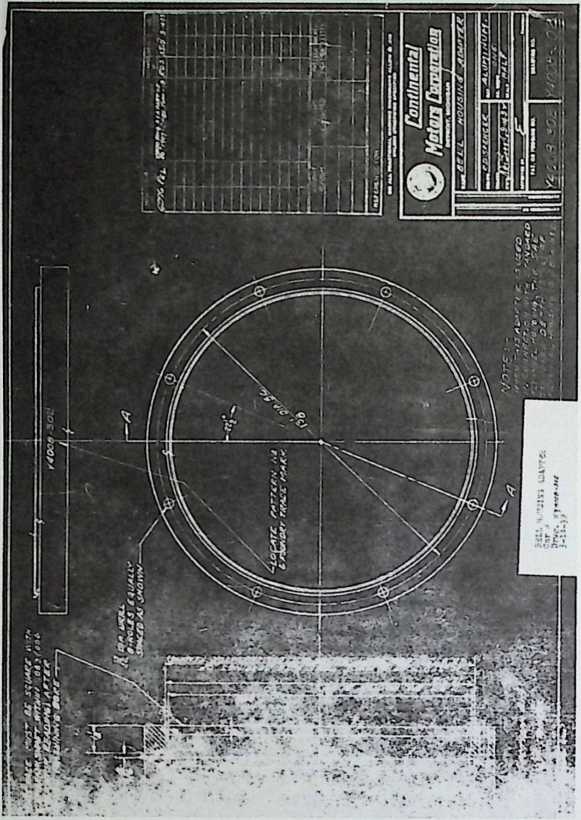
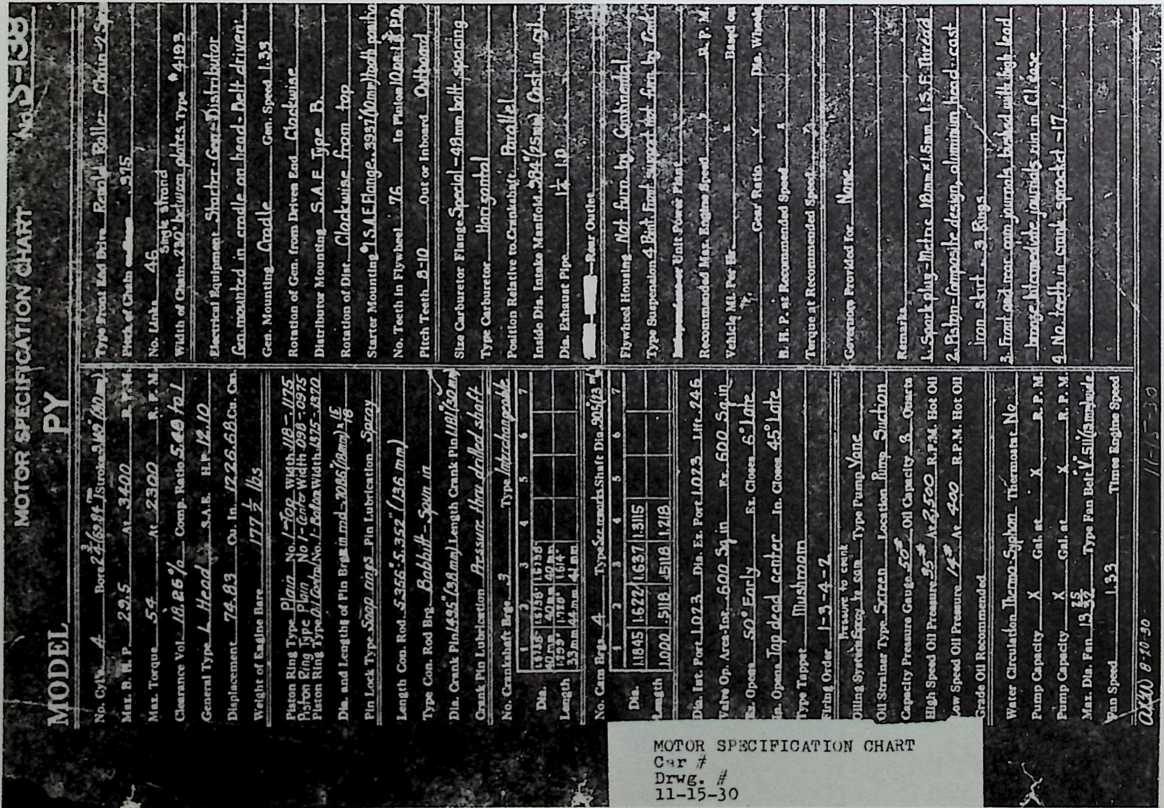
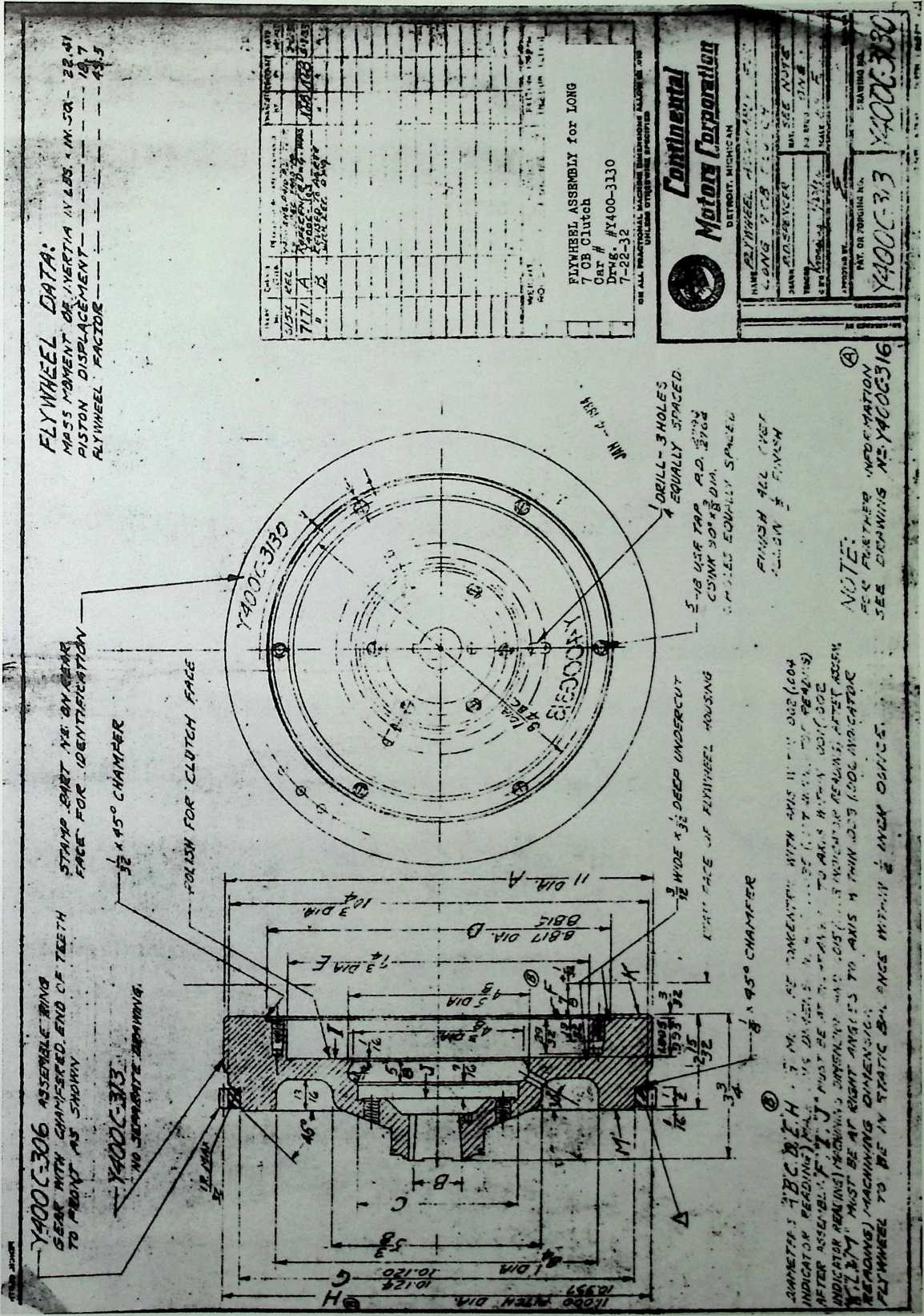
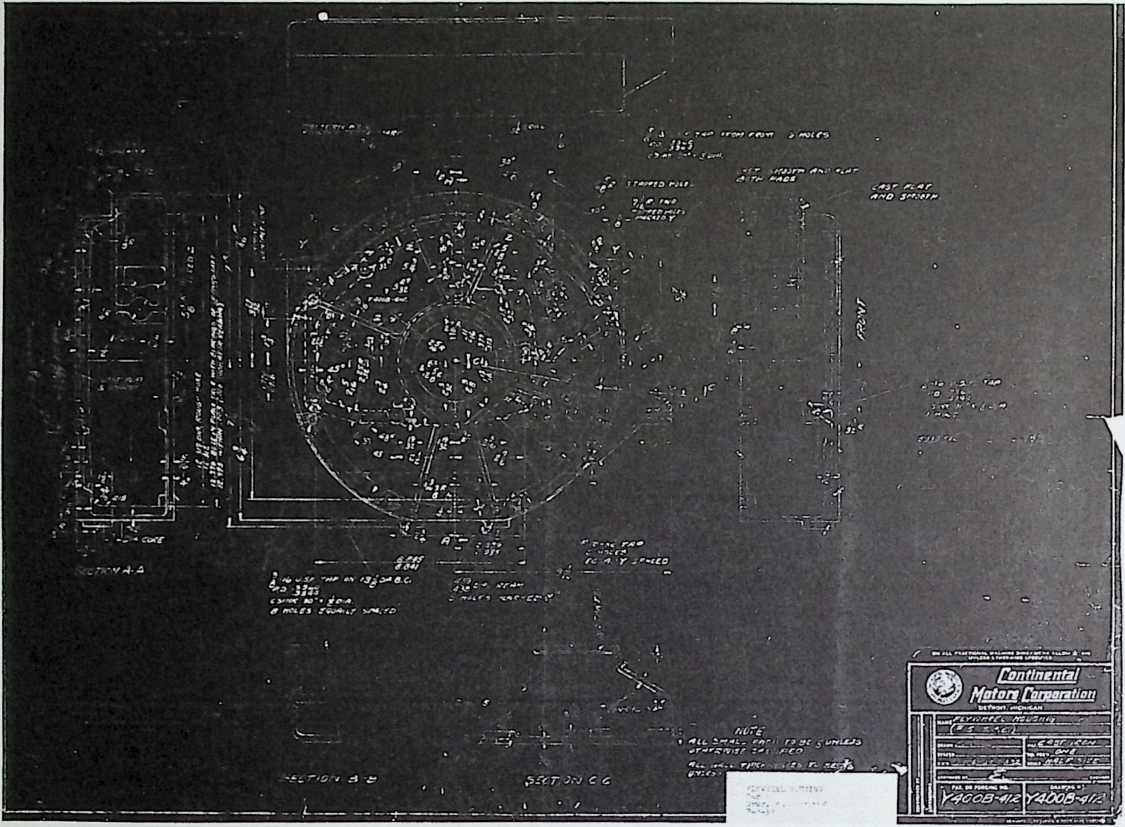
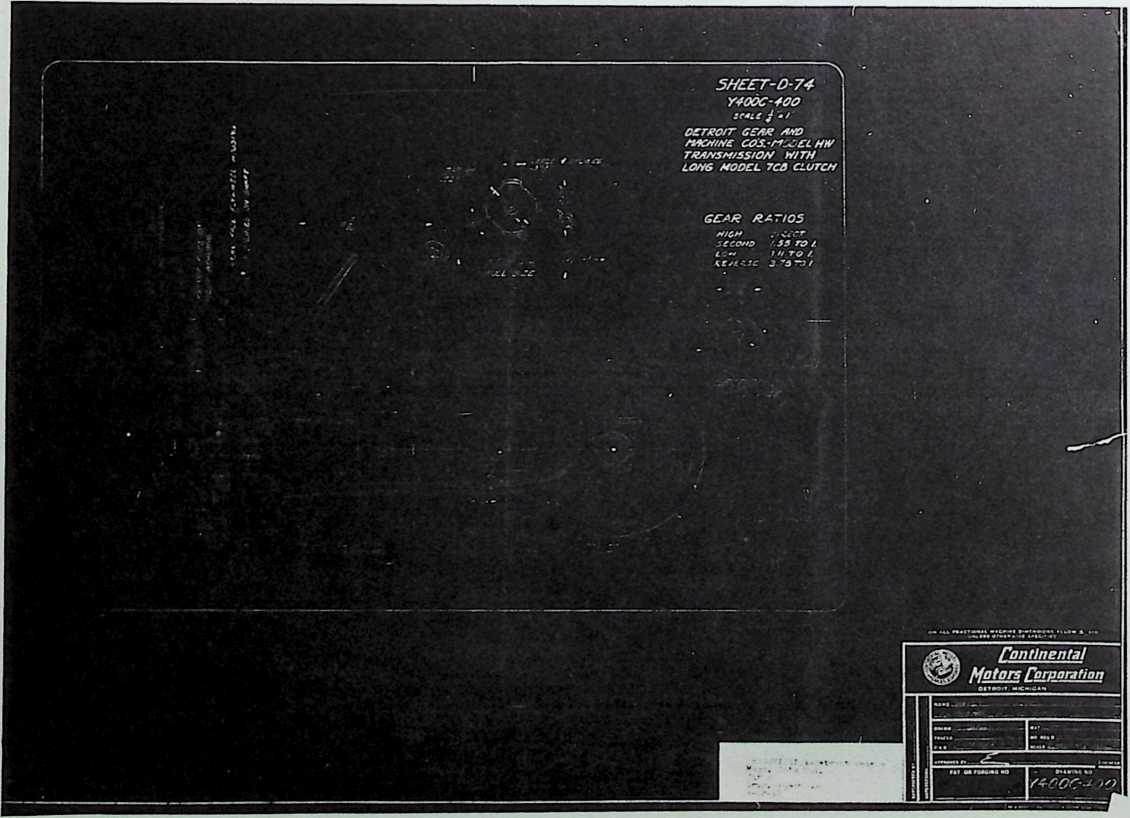
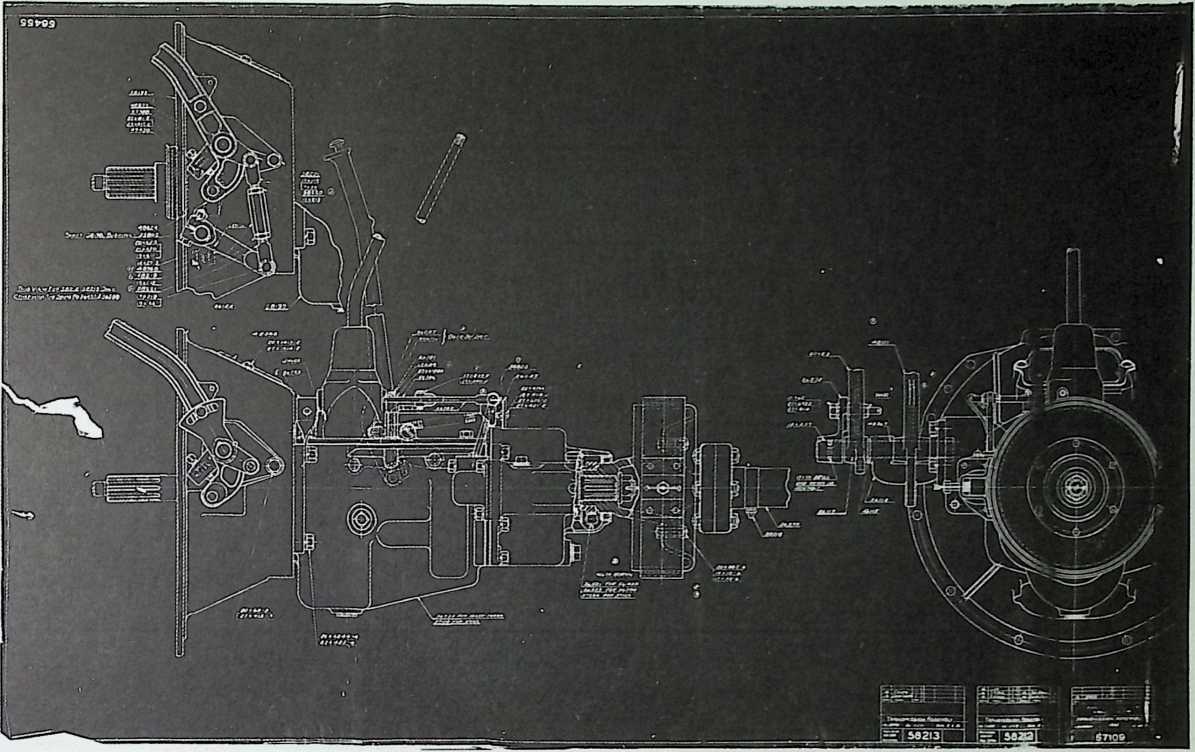
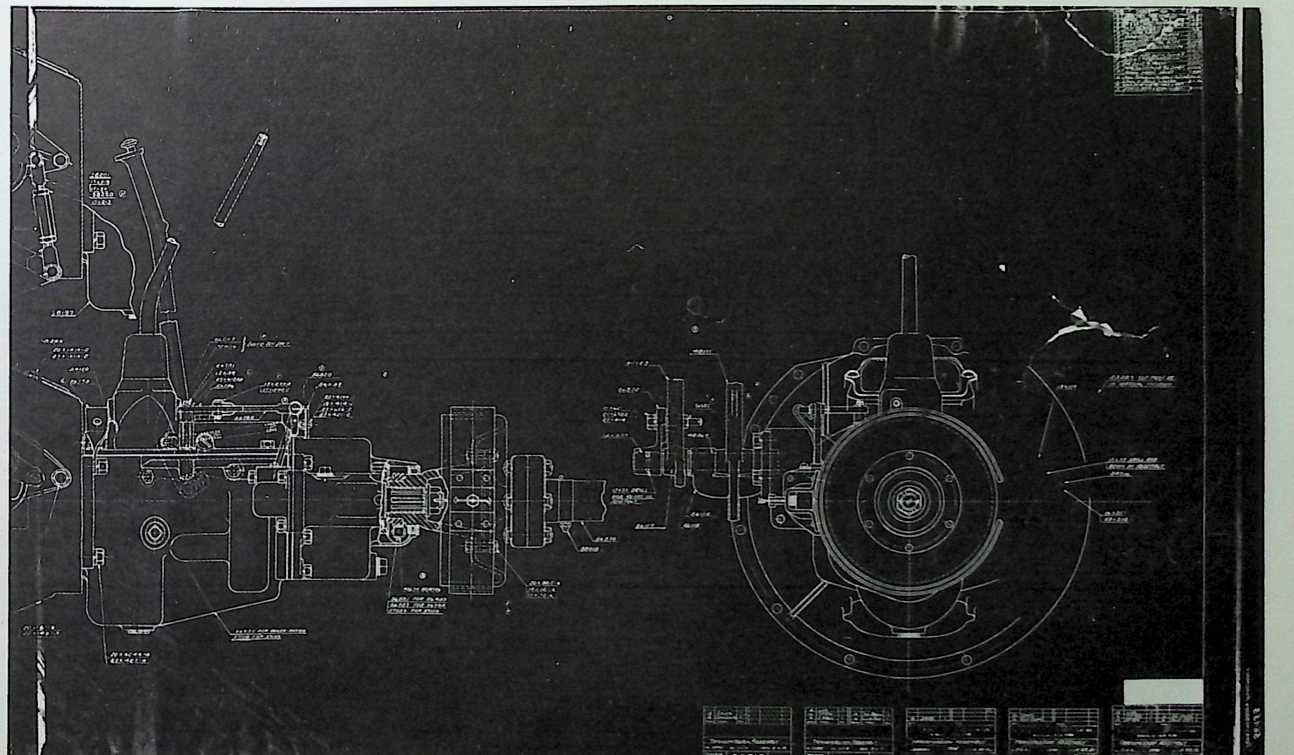
58212
5&46C
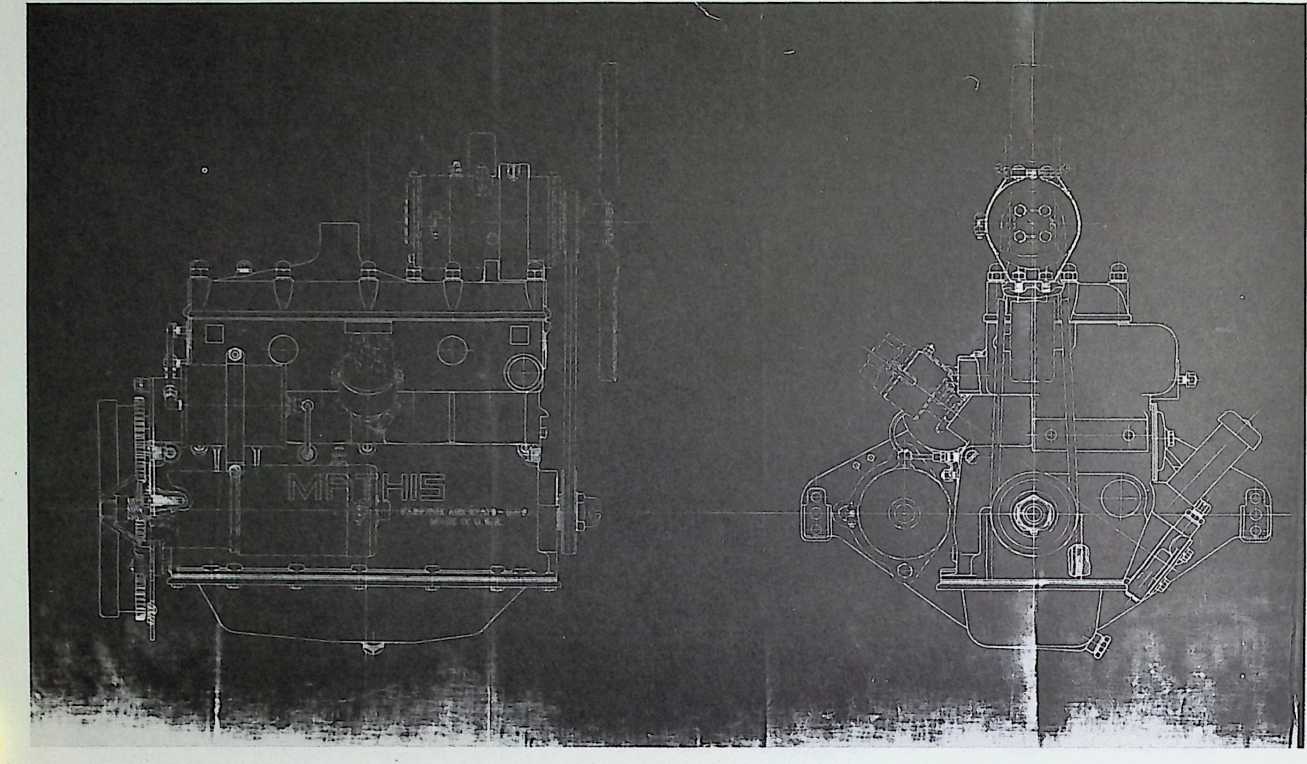
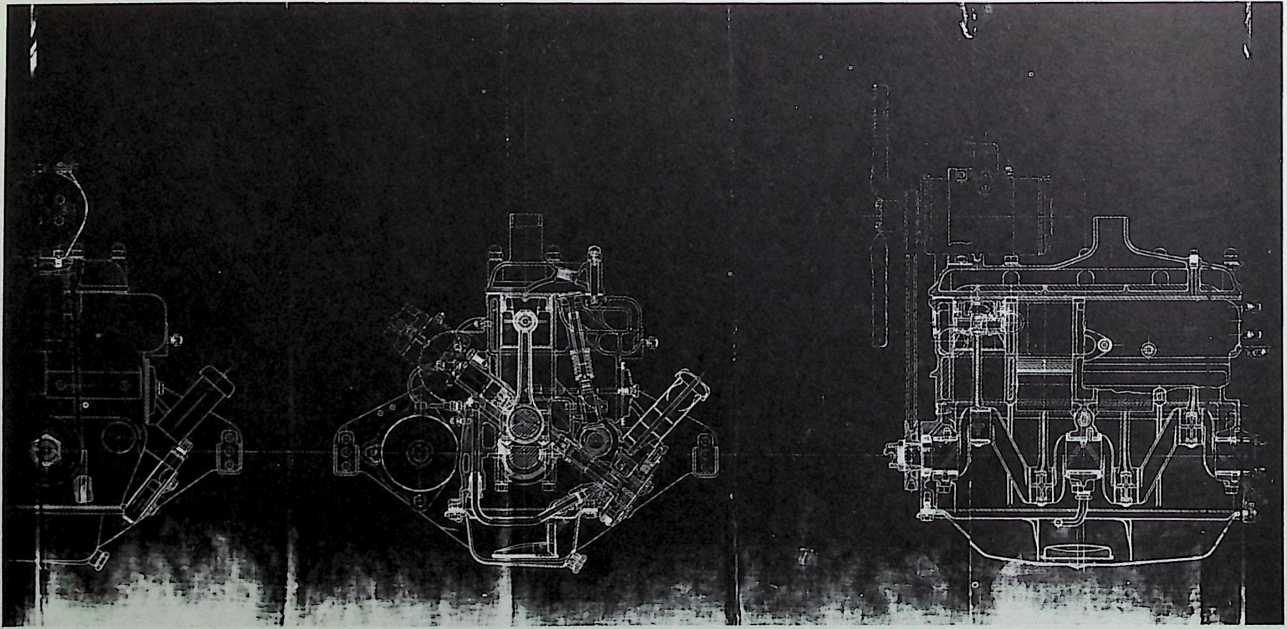
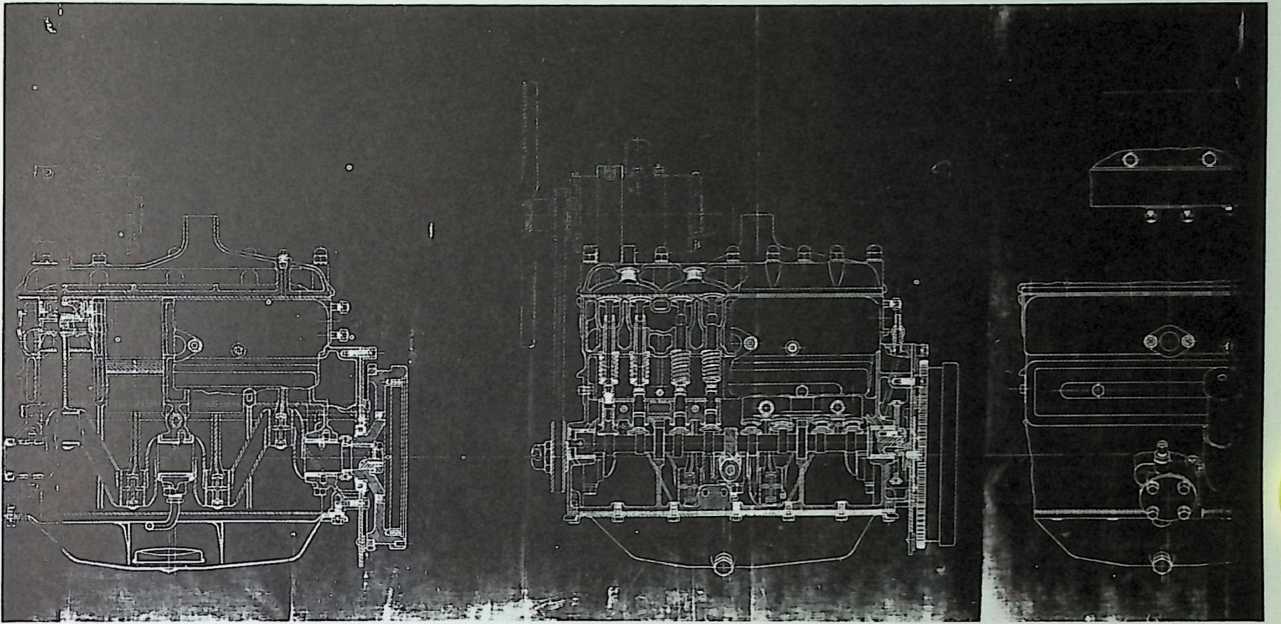
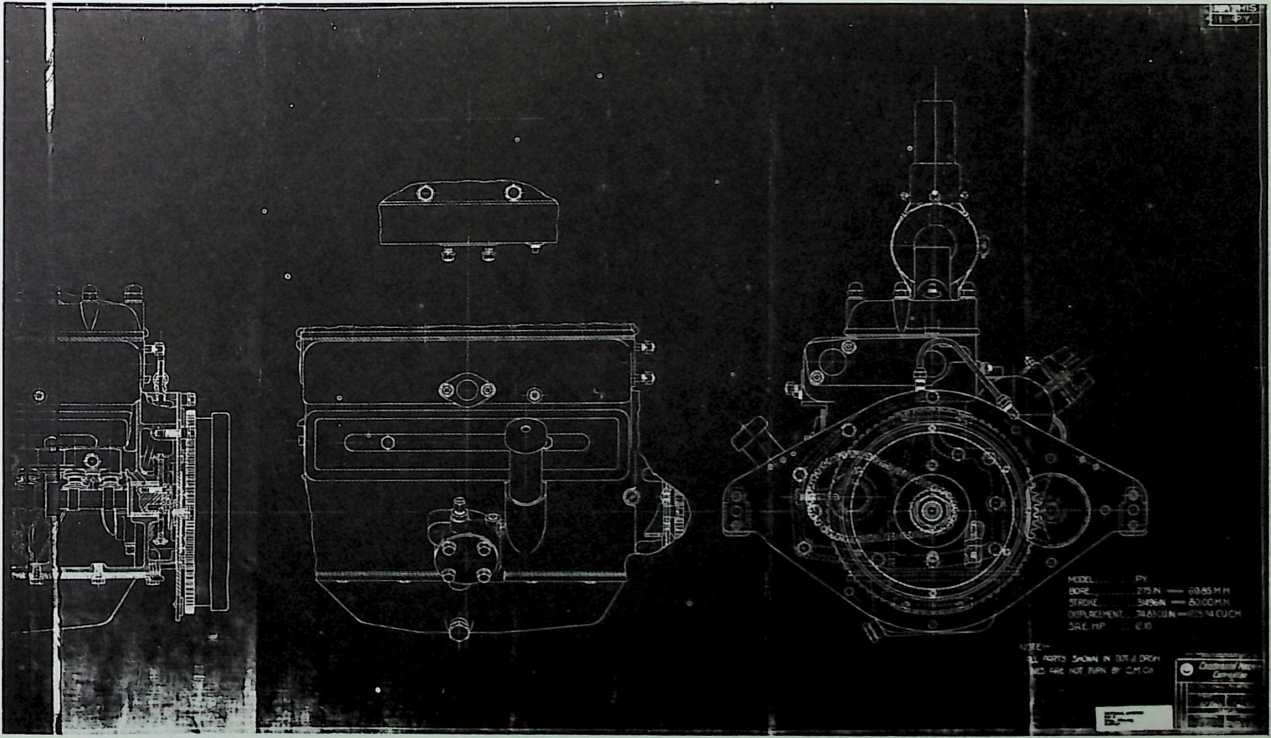
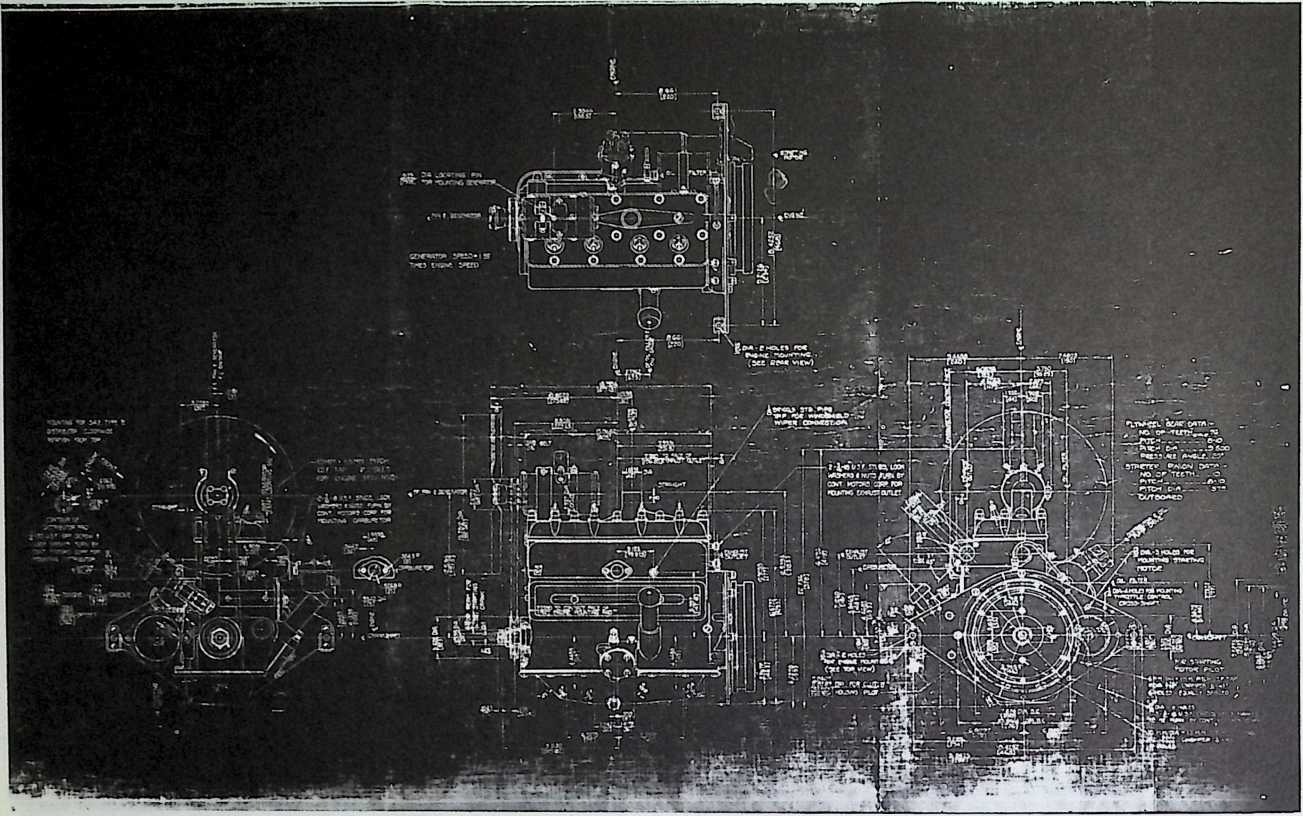
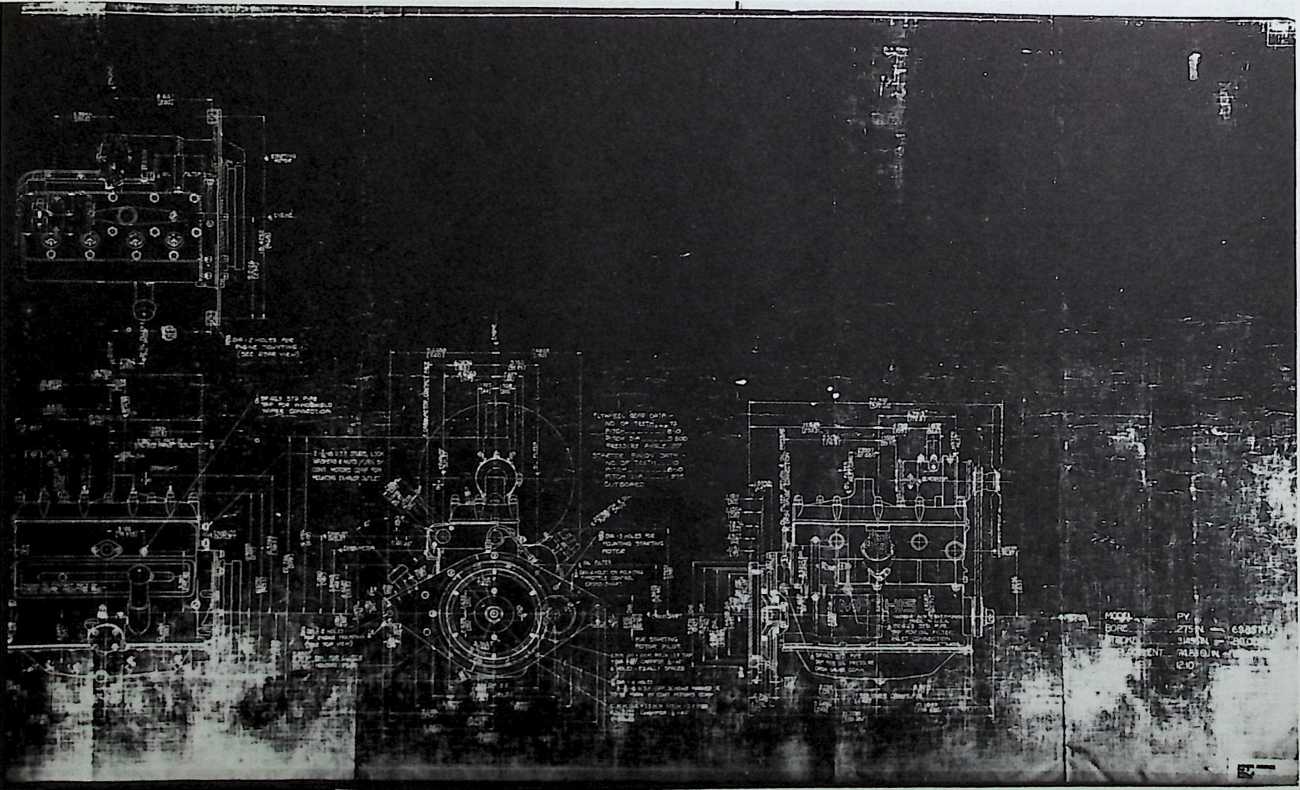
¶ Chapter 18 The Dymaxion Cars 1933--1943
The Dymaxion Cars
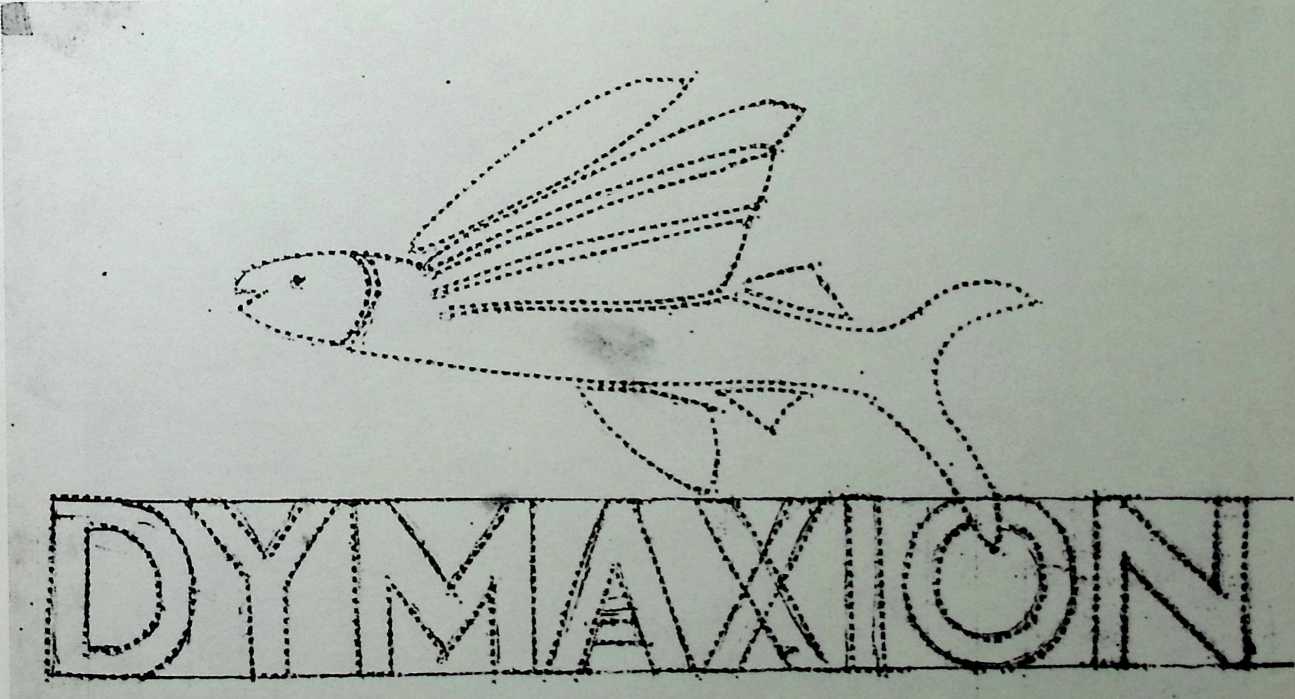
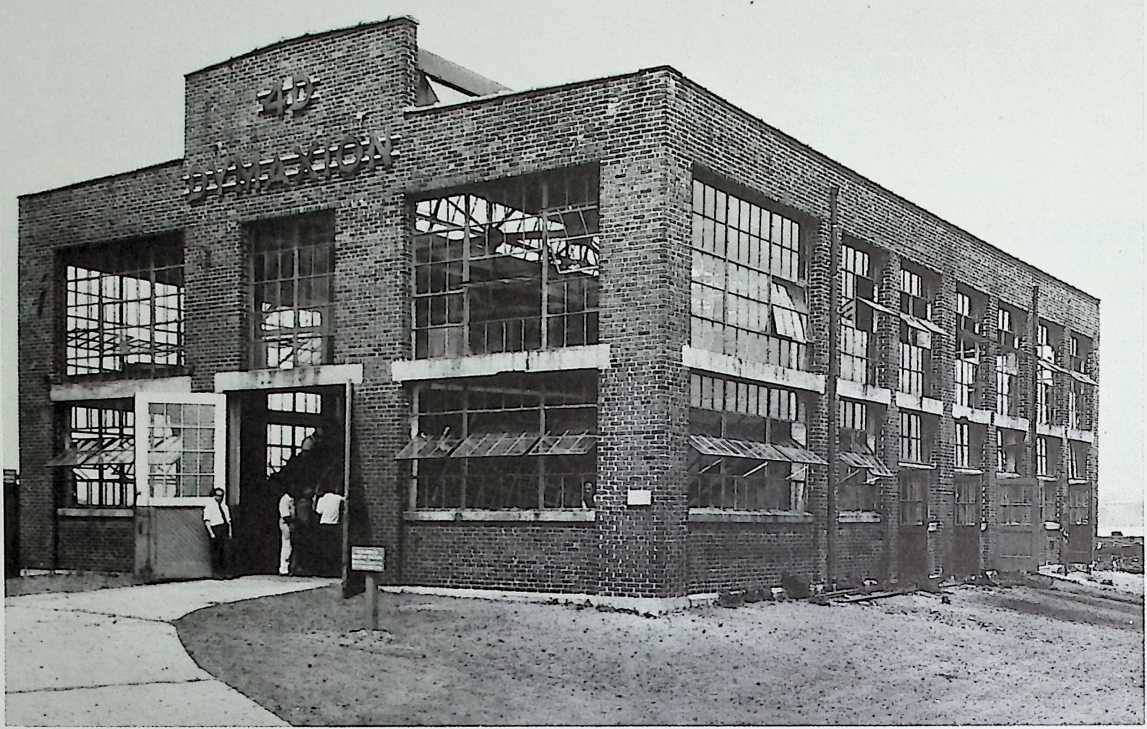
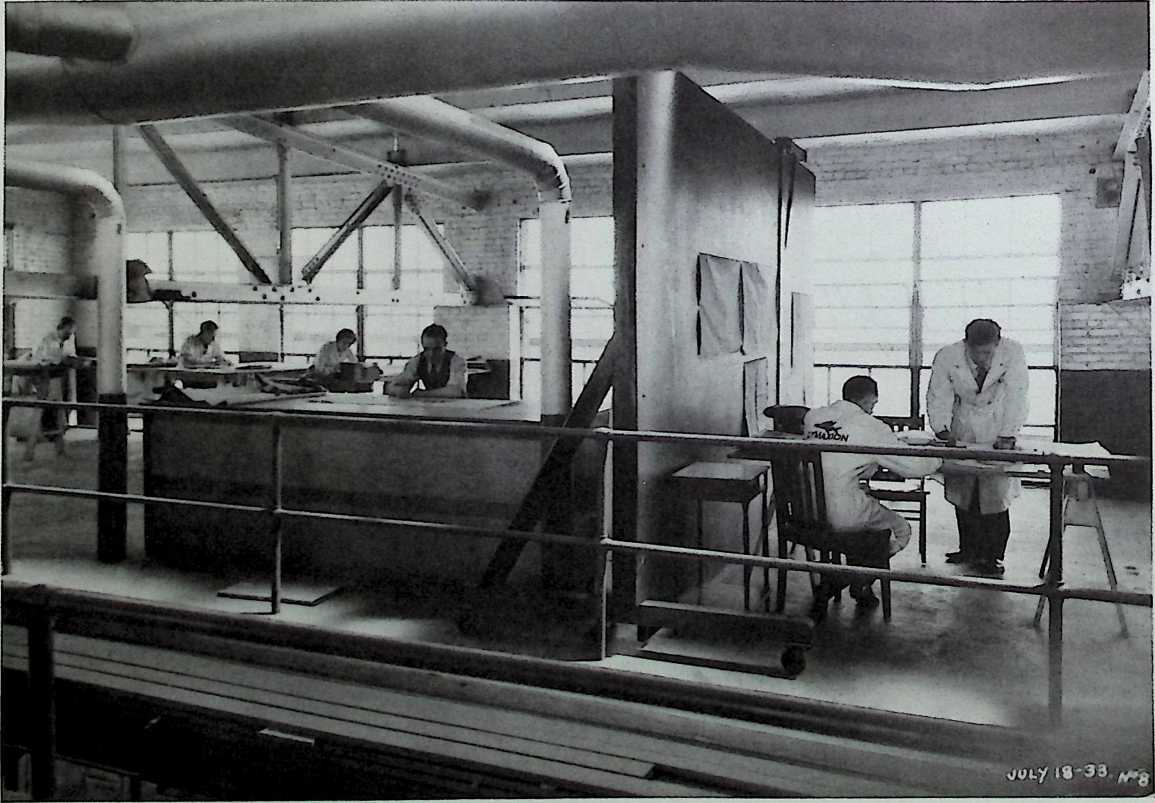
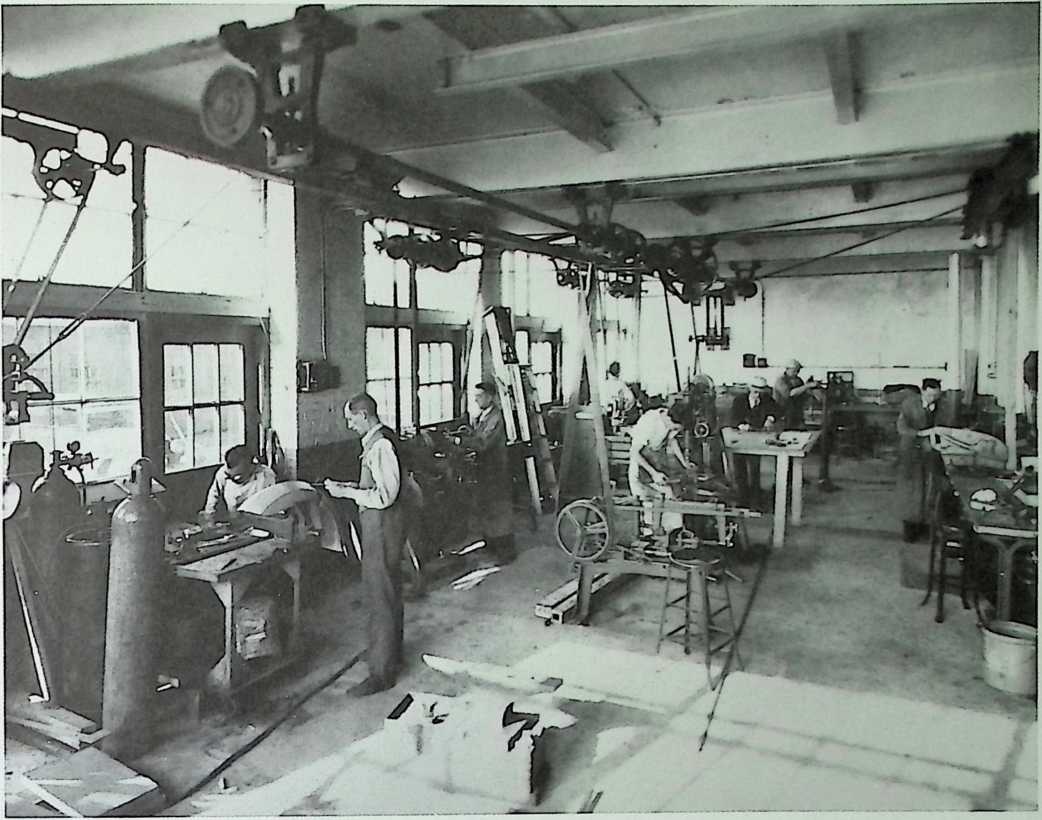
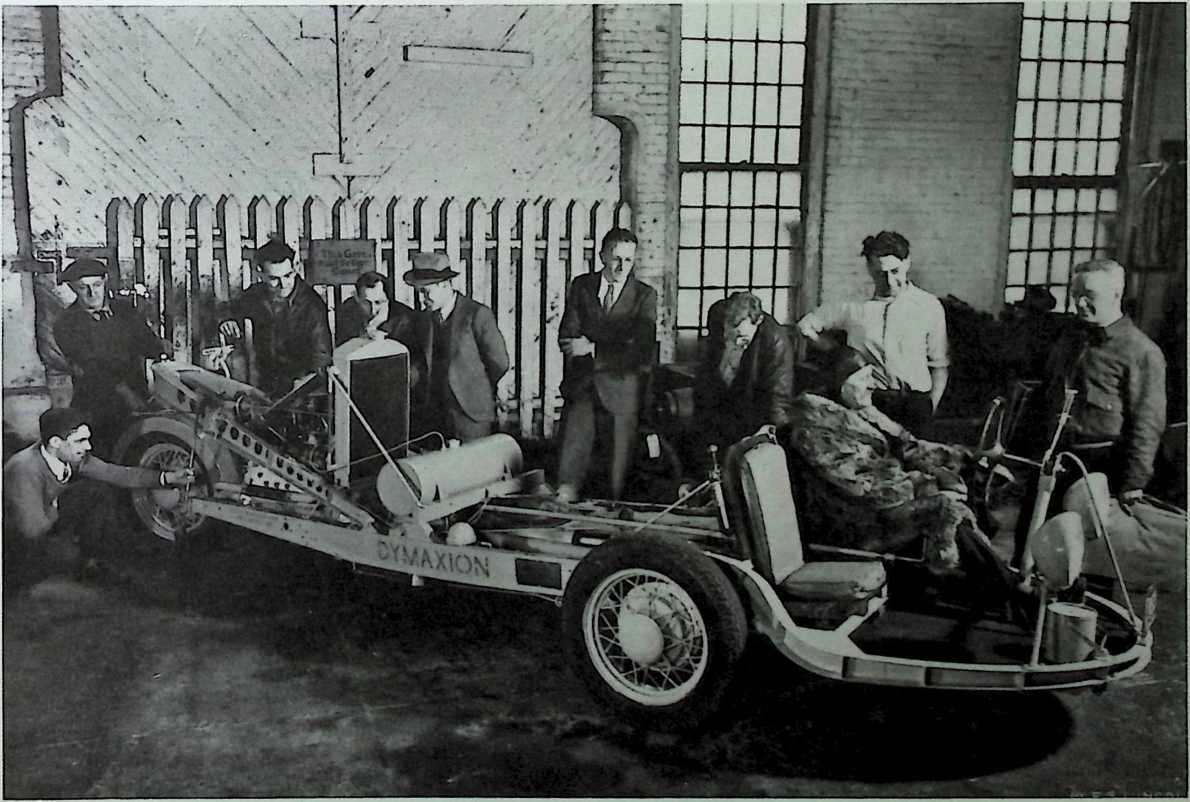
Car 1 1933
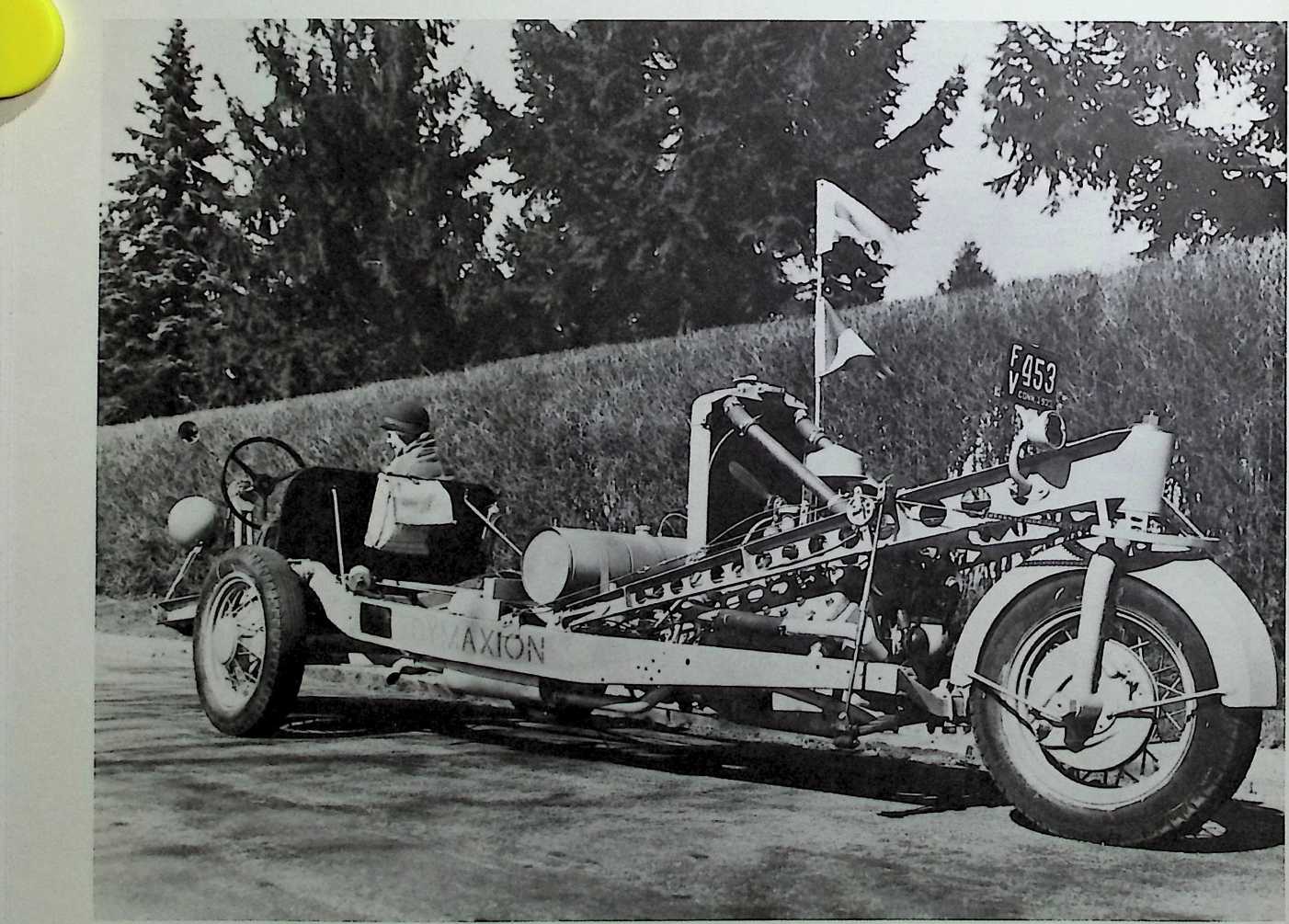
THE DYMAXION CARS 11?

![]()
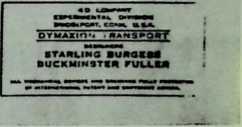


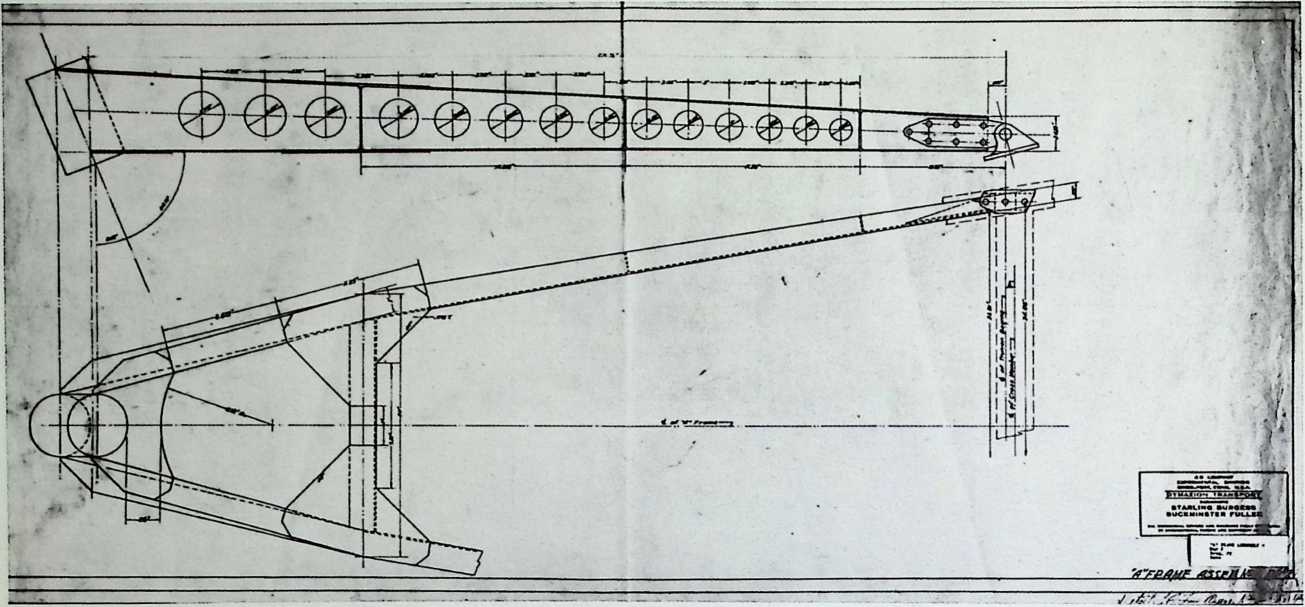
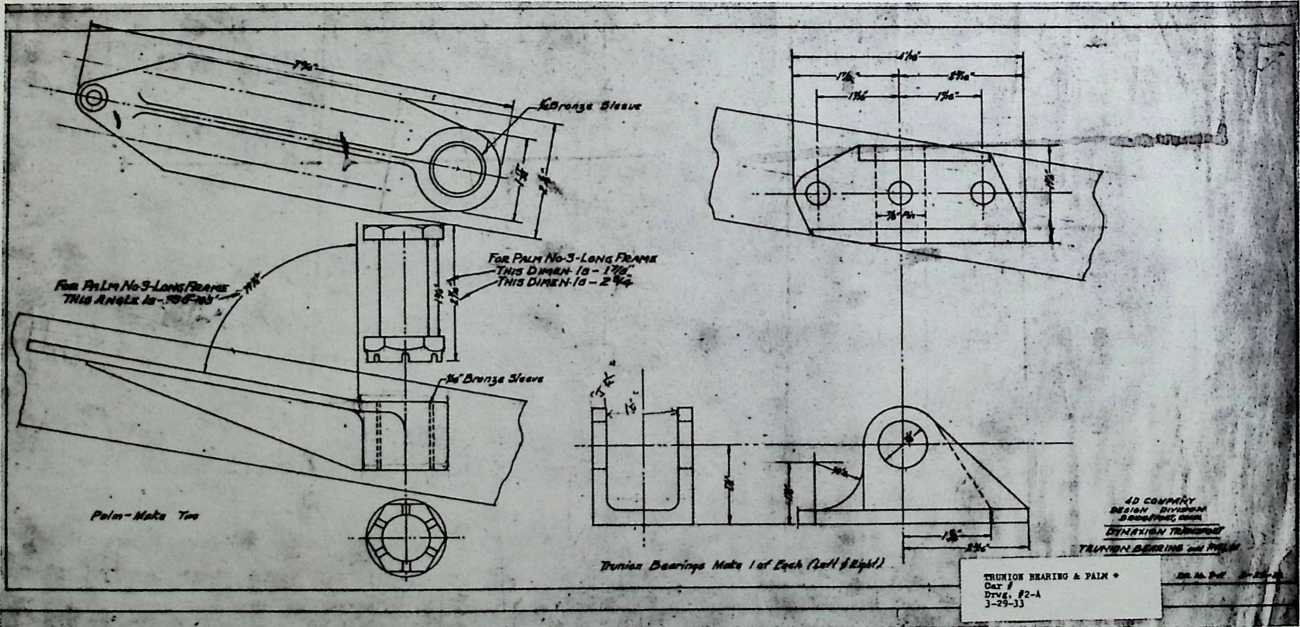
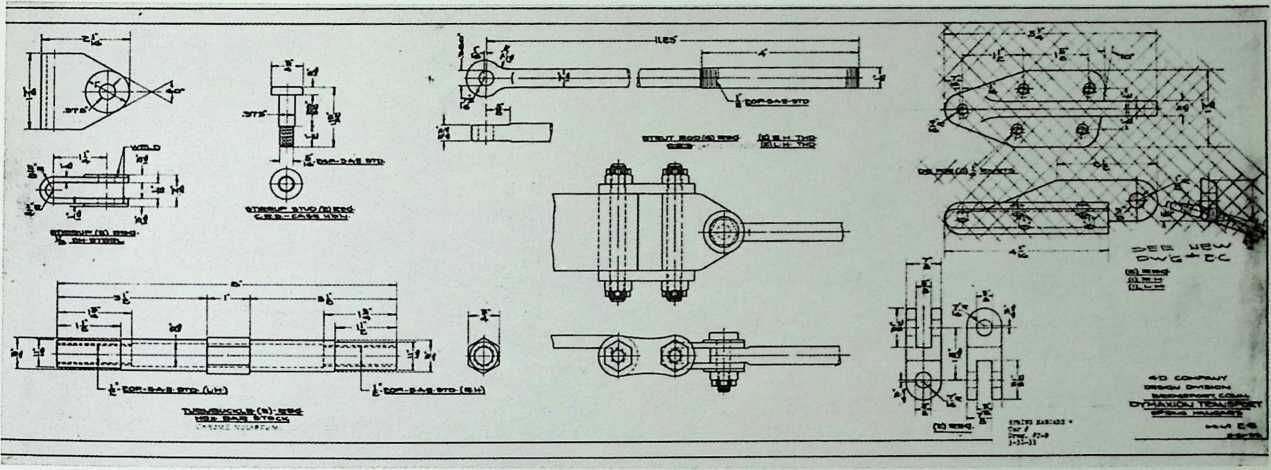
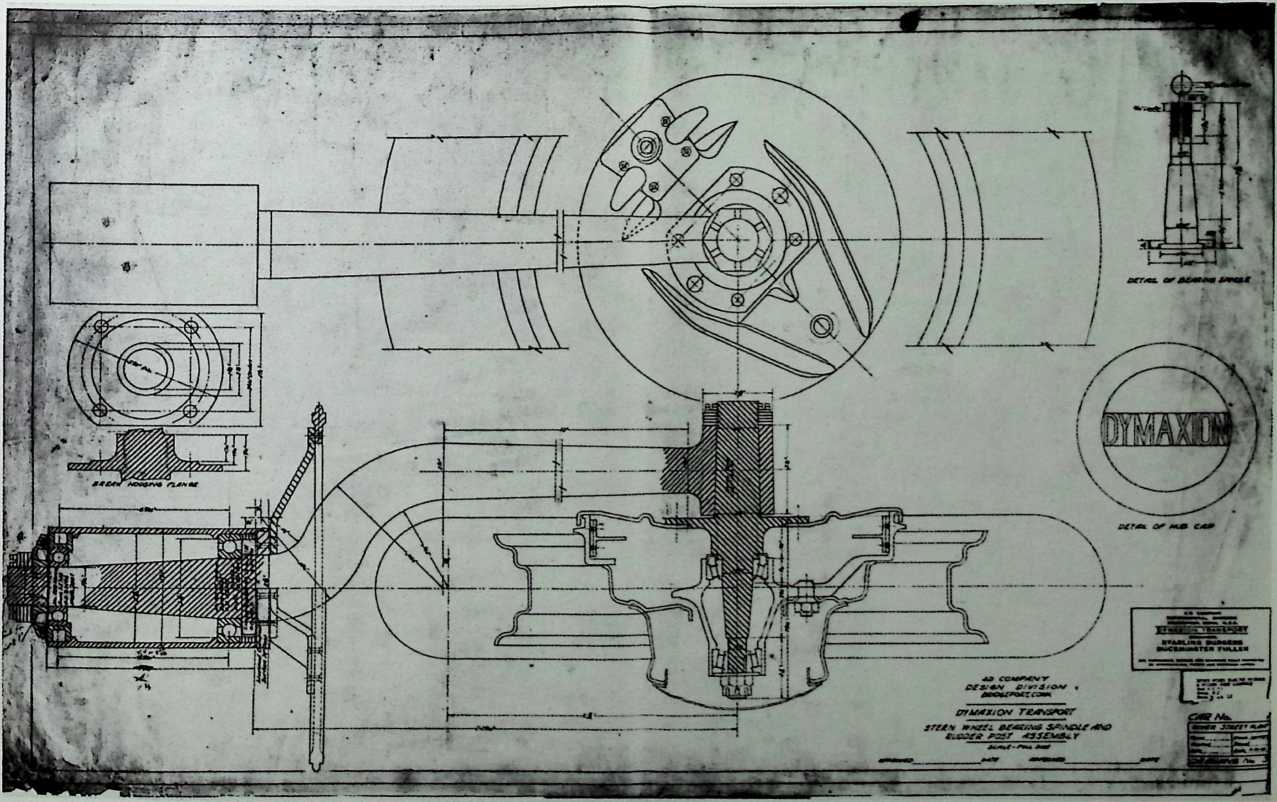
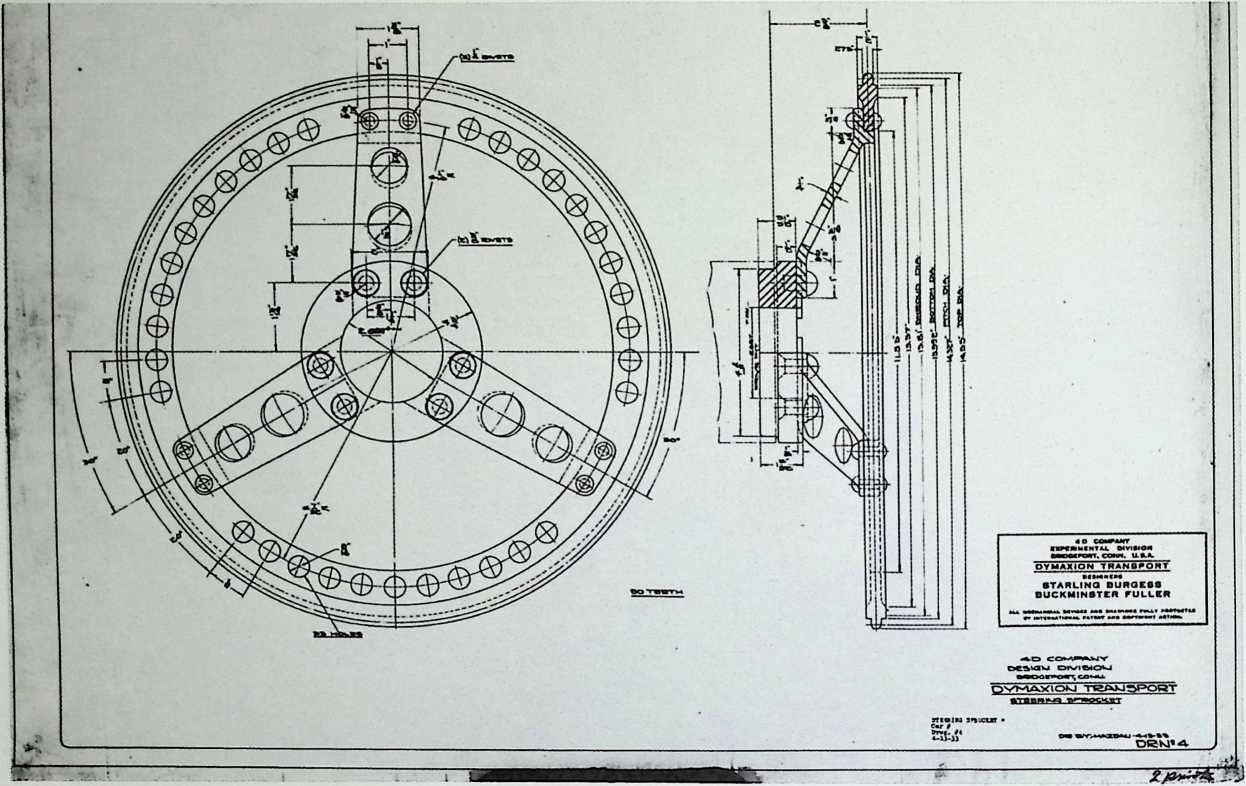
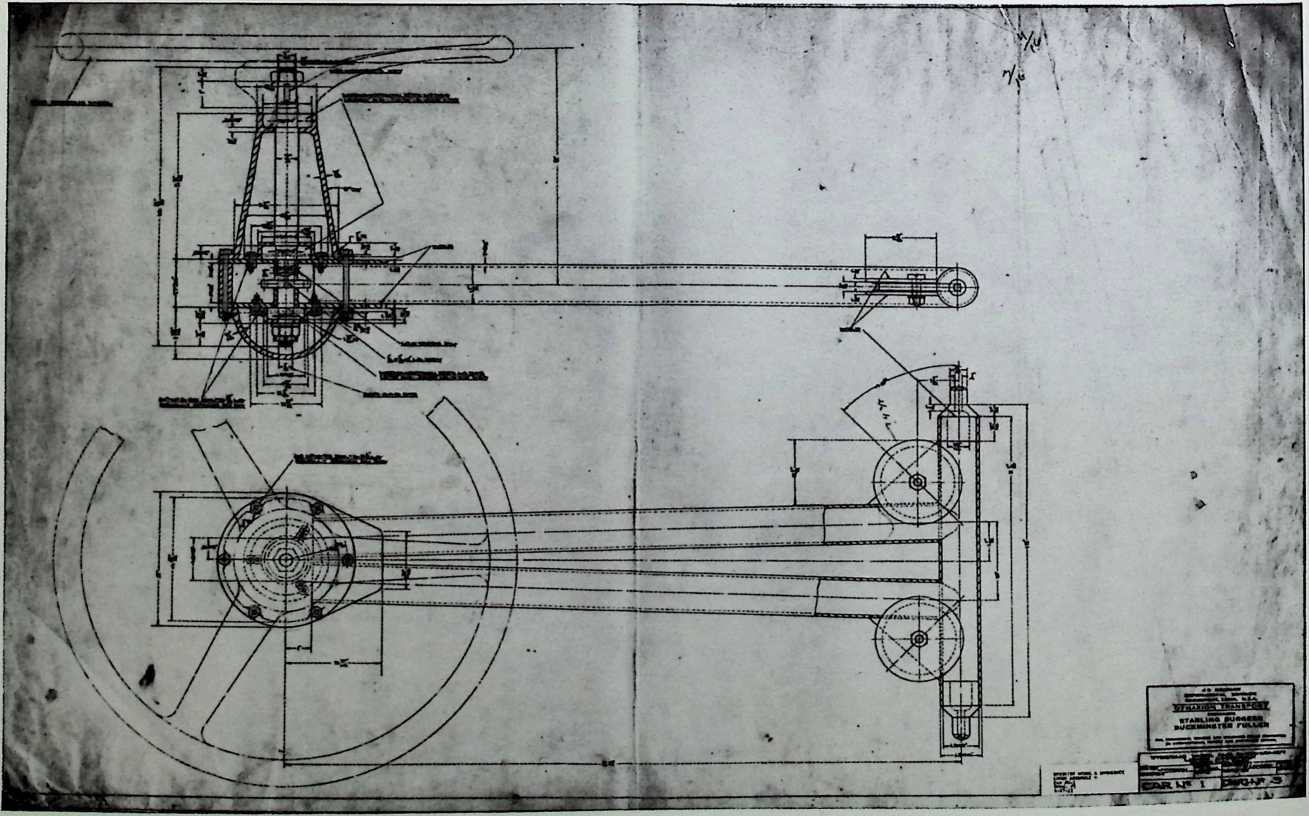
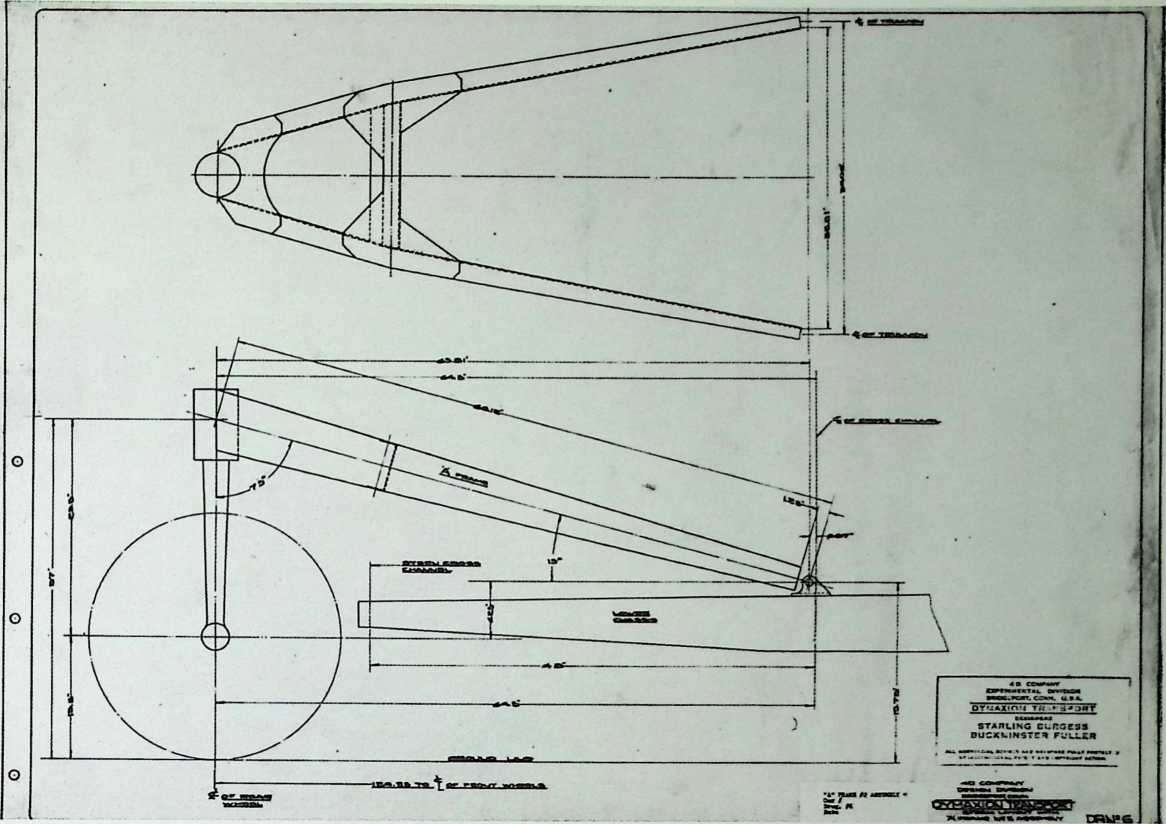
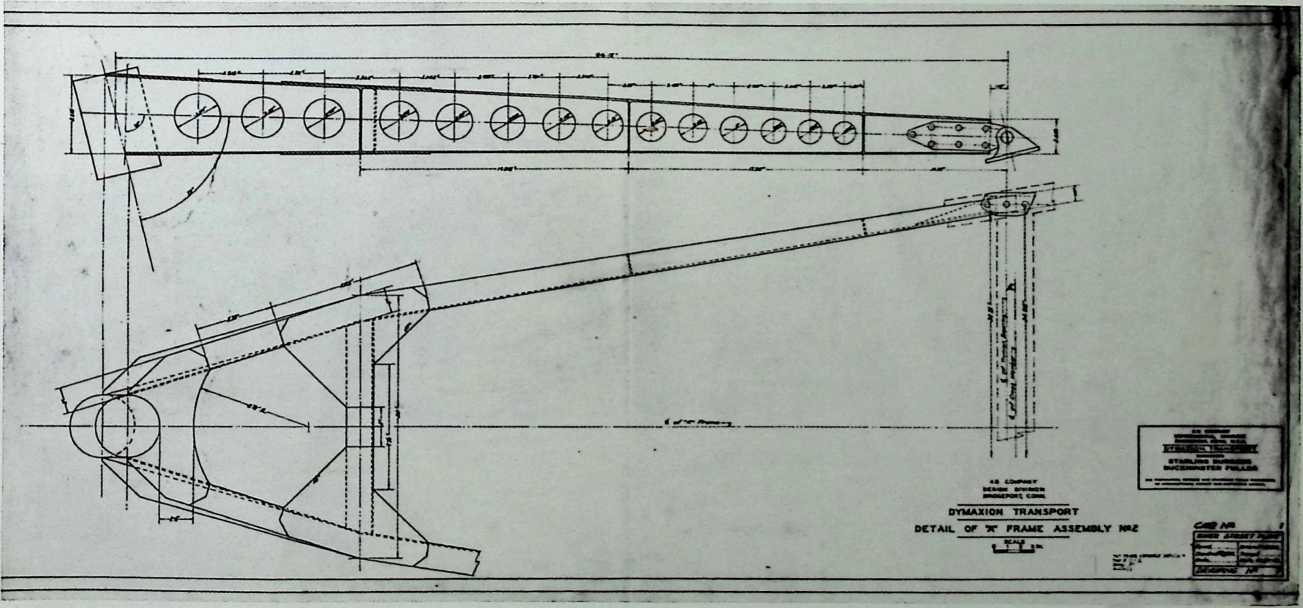
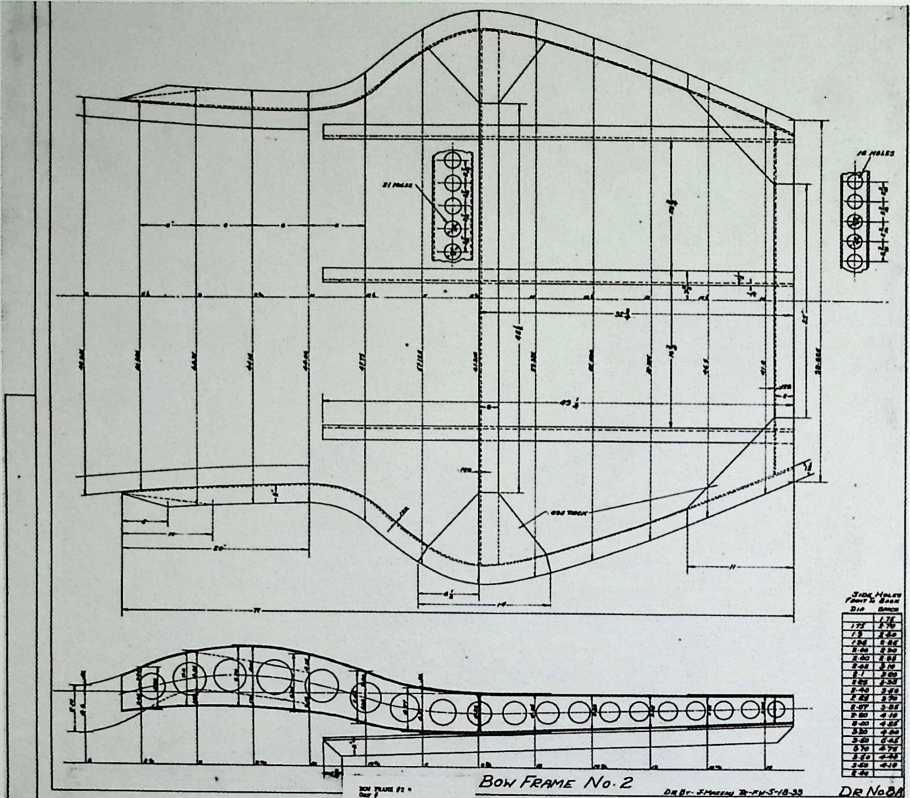
Stu"*

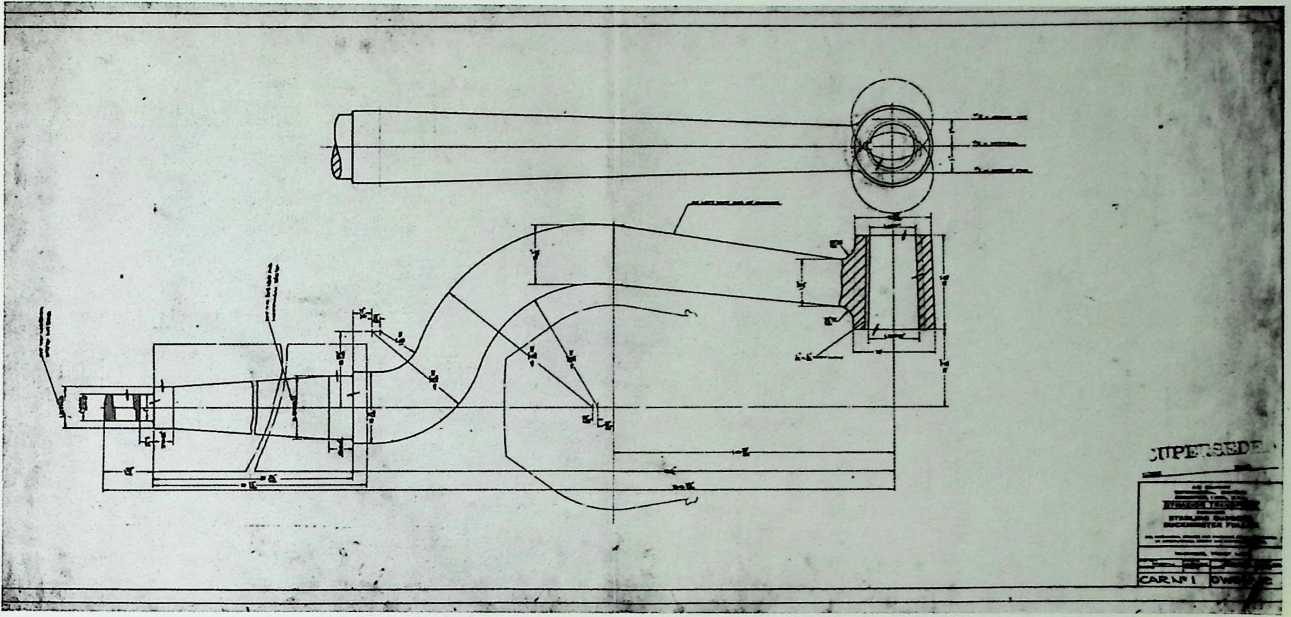
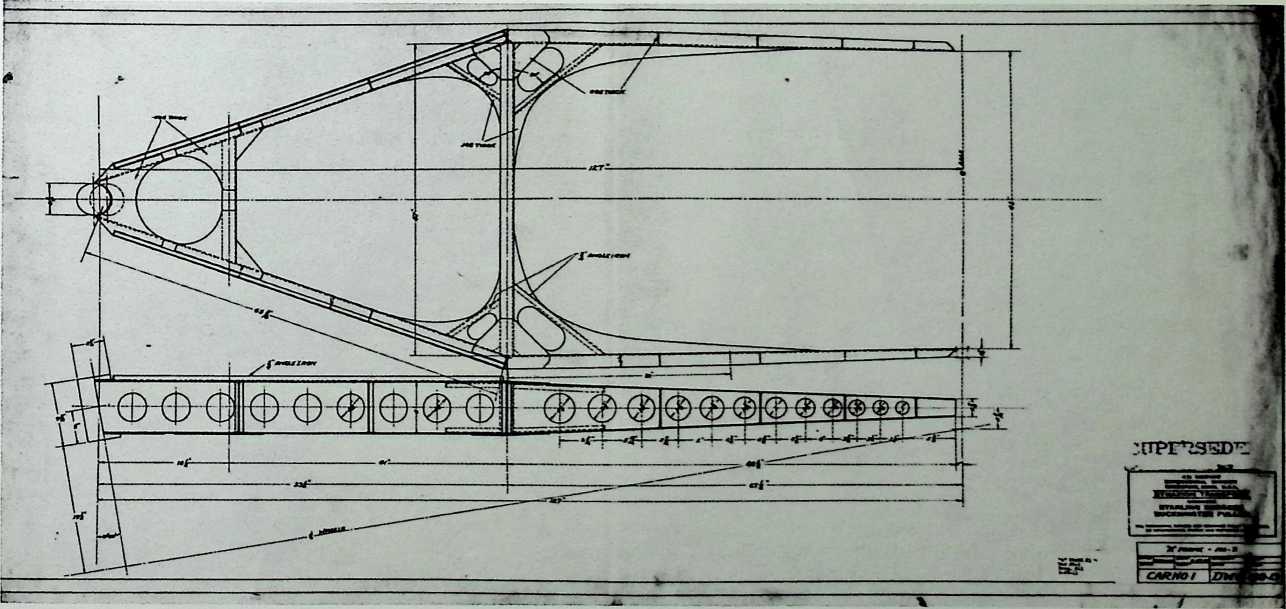
TCUMXJQKJ V=rC»V3. A P*CUAMQ M2 S>
|
|||
C’Ca |
A/cc/m |
srxoo*>r |
CX*.TQ |
6MC ' |
w«-w |
||
CAR N4<e 1
|
DWGM2 ISA
|
||
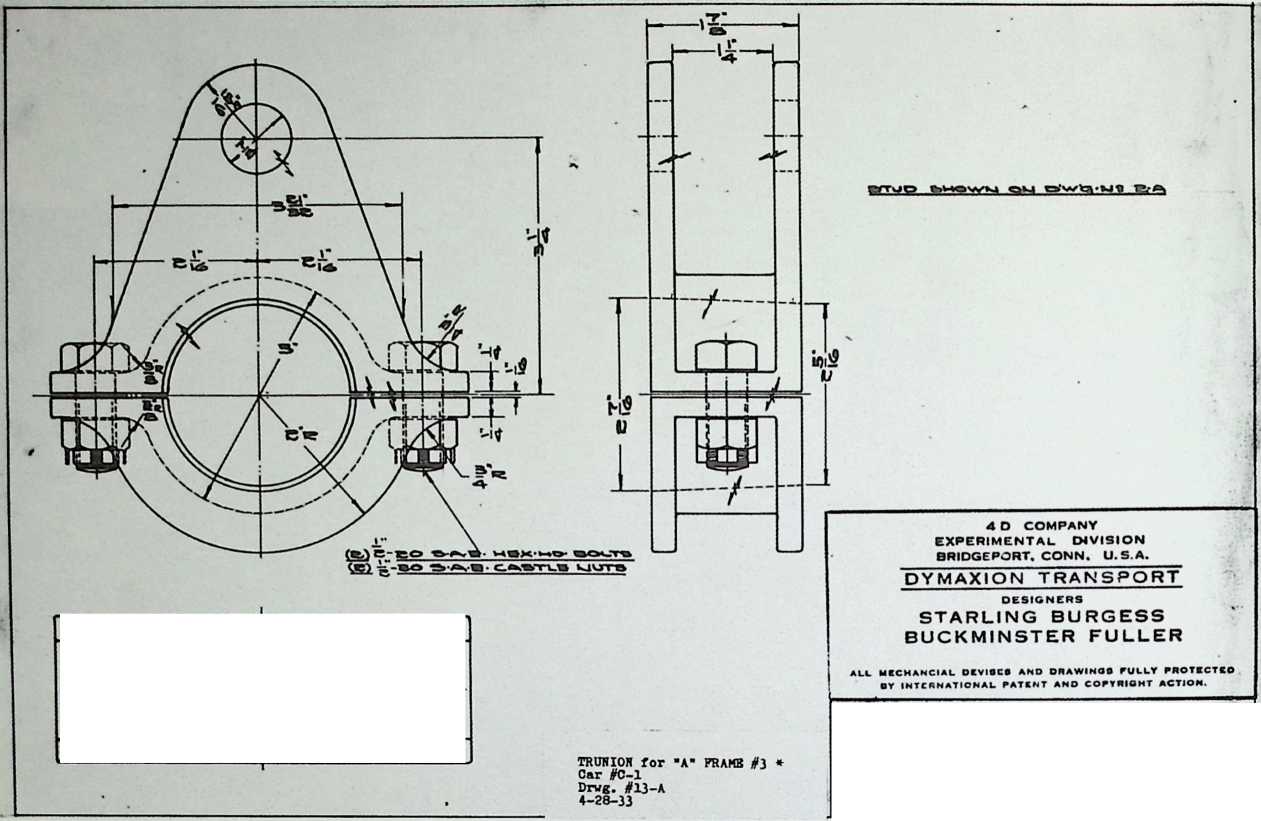
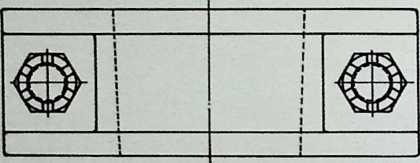

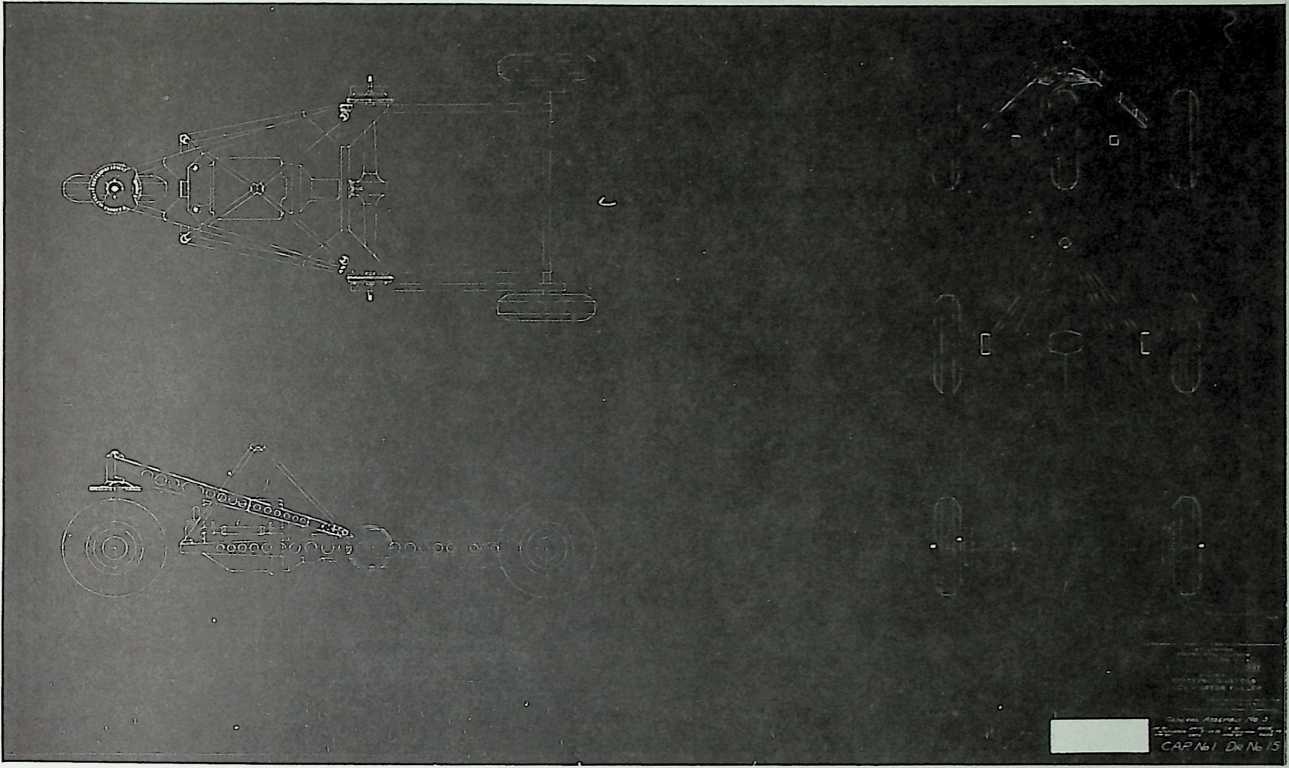
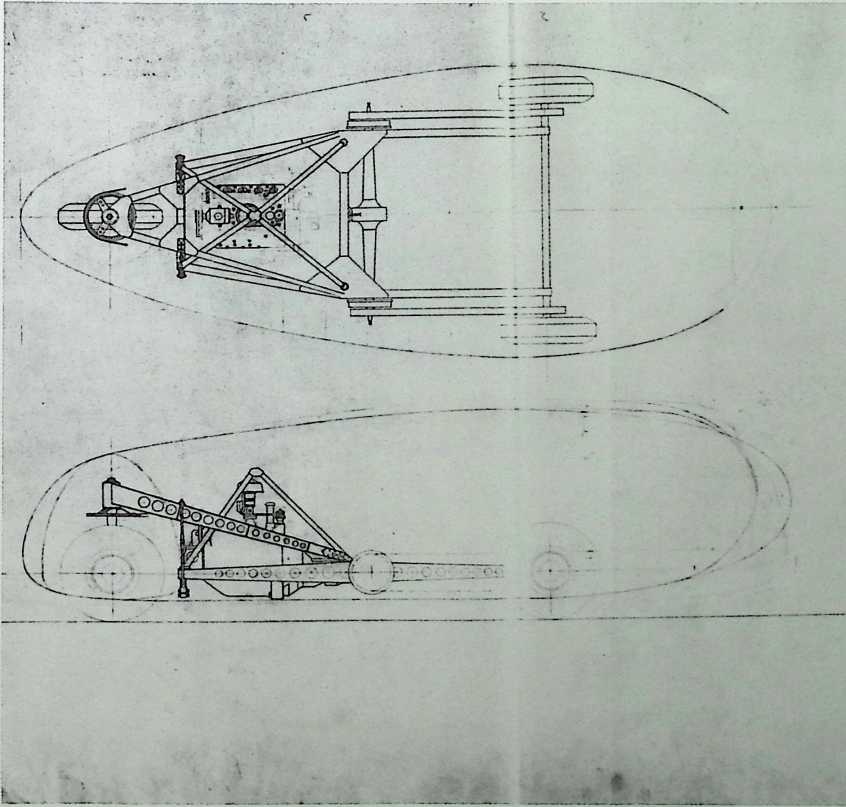
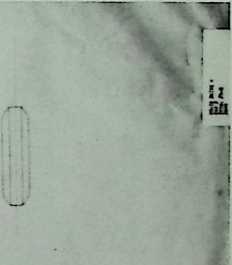
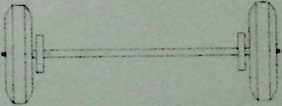
ACCELERATOR PEDAL * I Car #0-1 Drwg. #15+B 5-12-33
4C*ie-FUM. SIM
|
|||
***** M.lsyJnto/? |
‘'V-tt-aa |
dU-Alu1 |
|
oara |
|||
C/‘‘U2 N3 /
|
DWG. /5-&
|
||
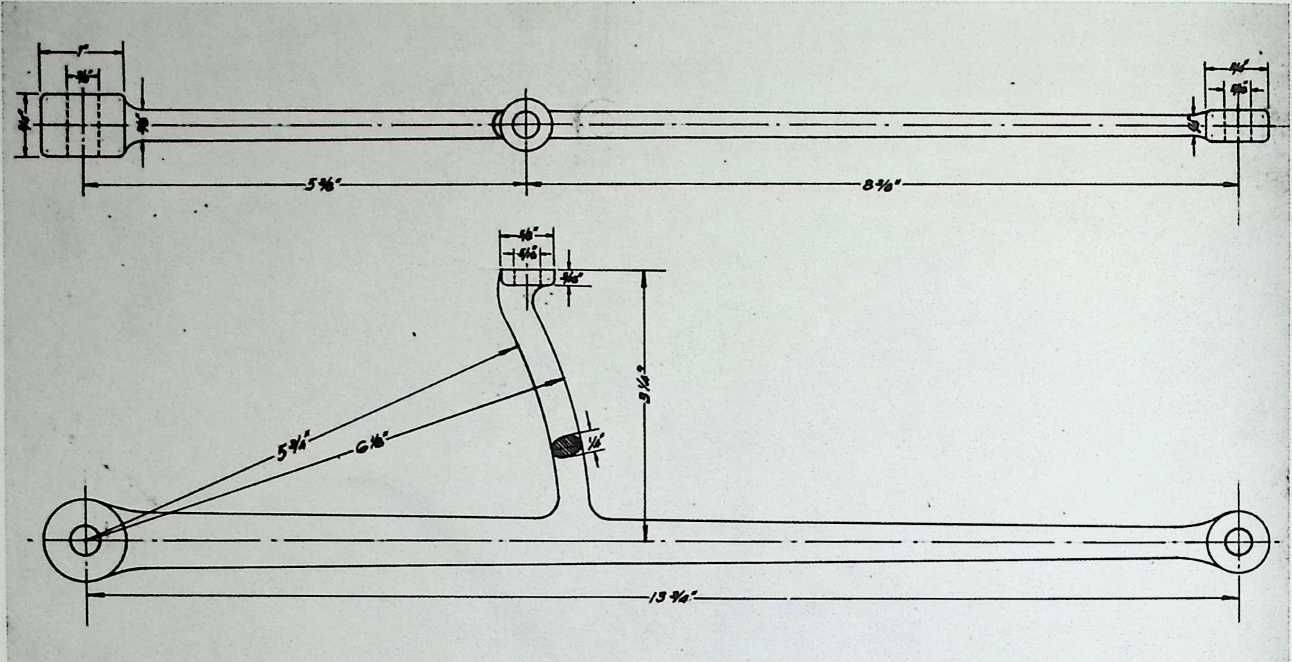
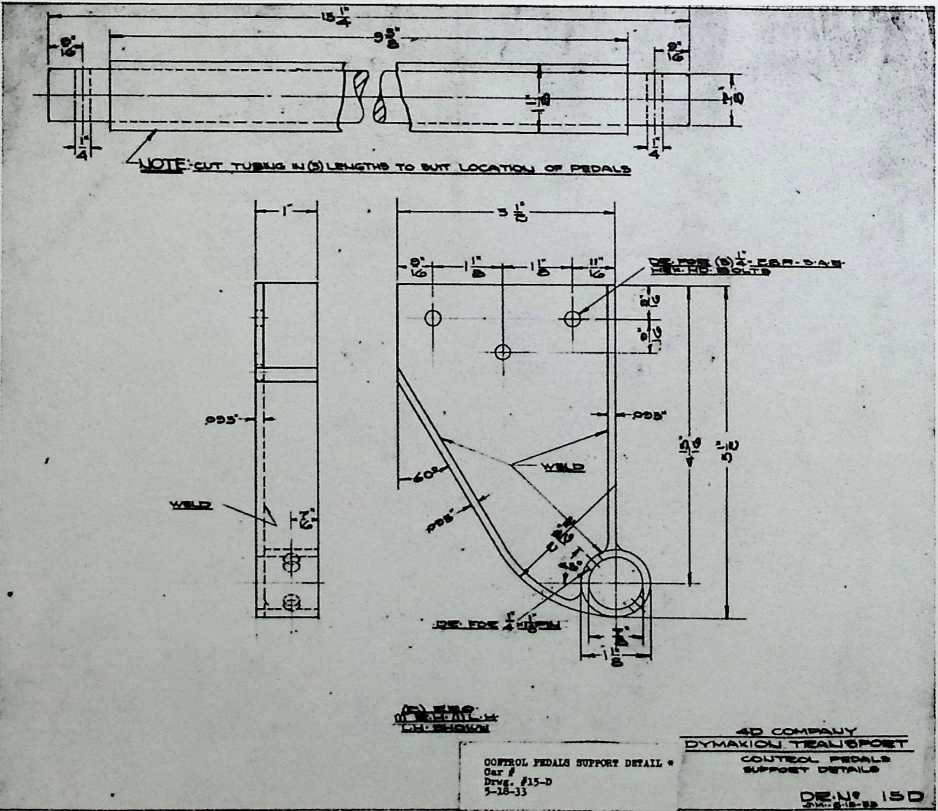
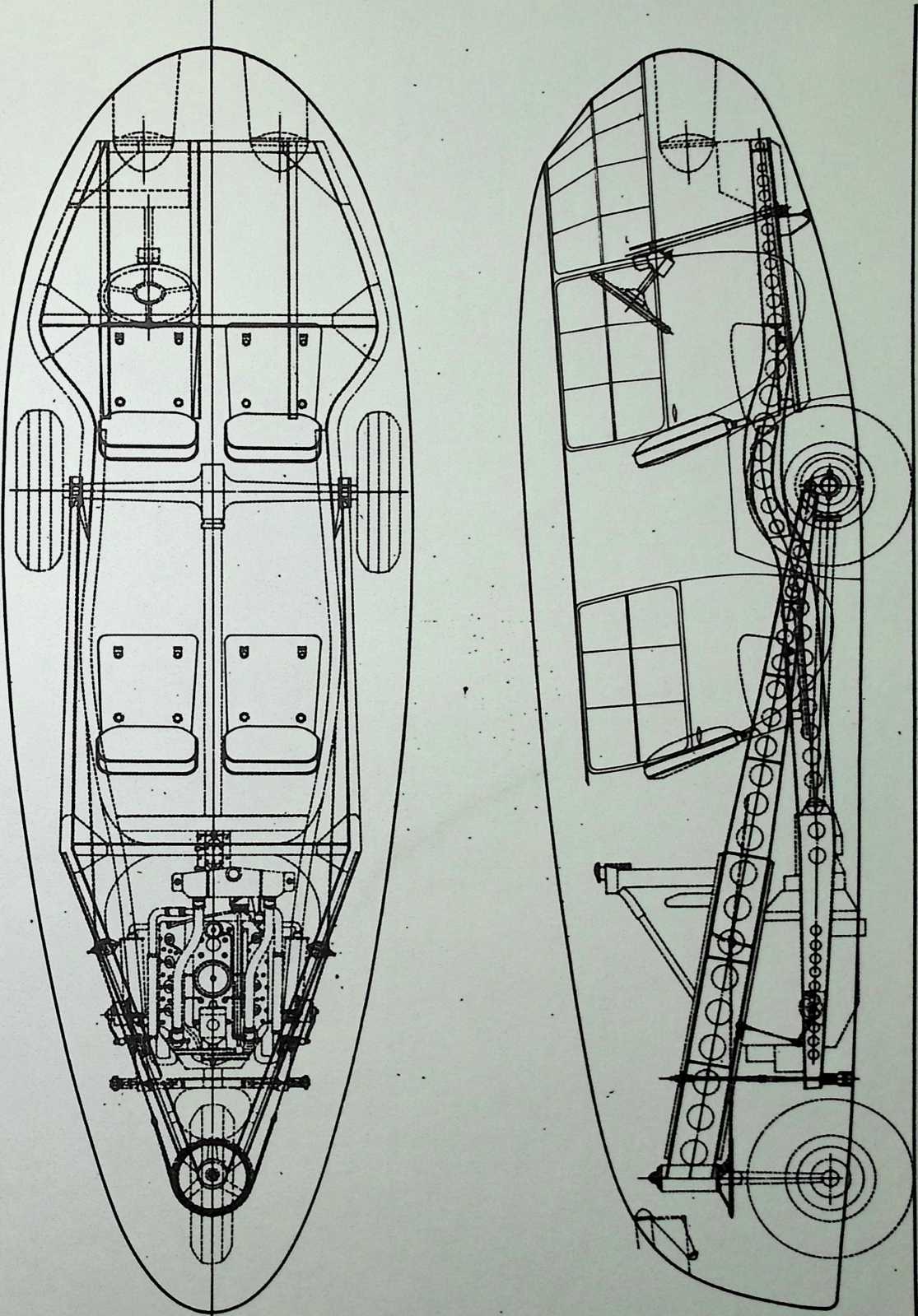
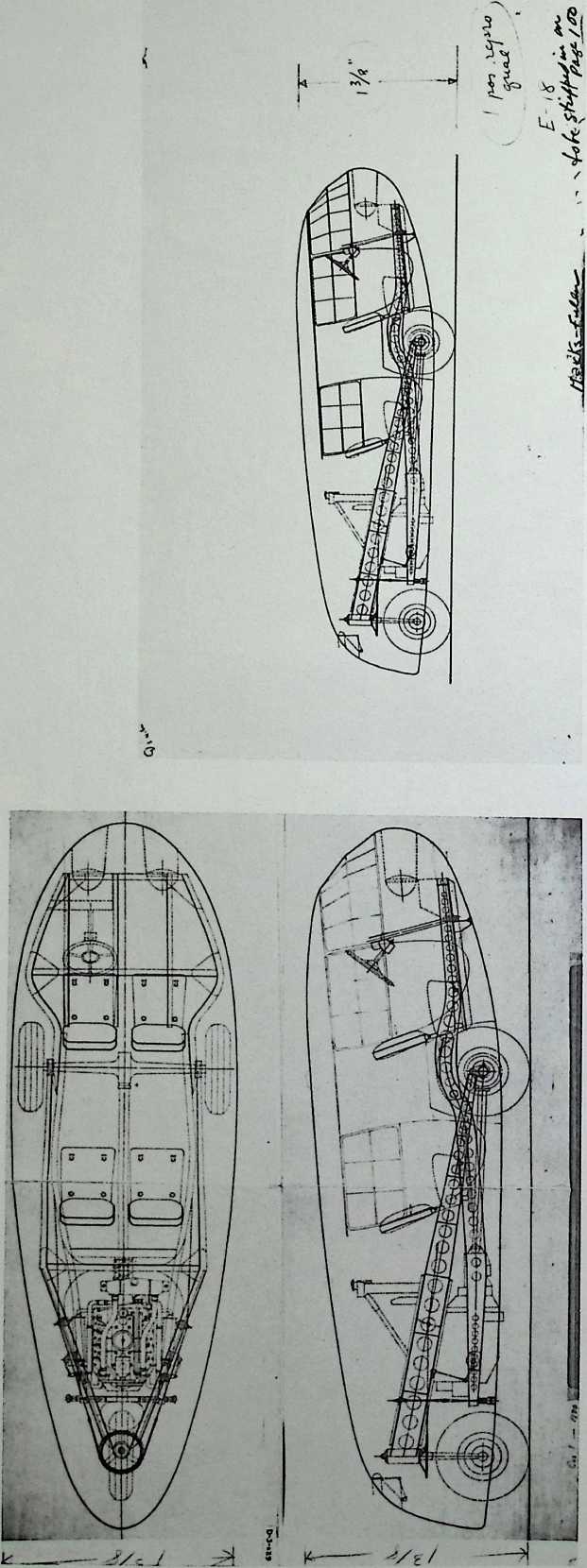


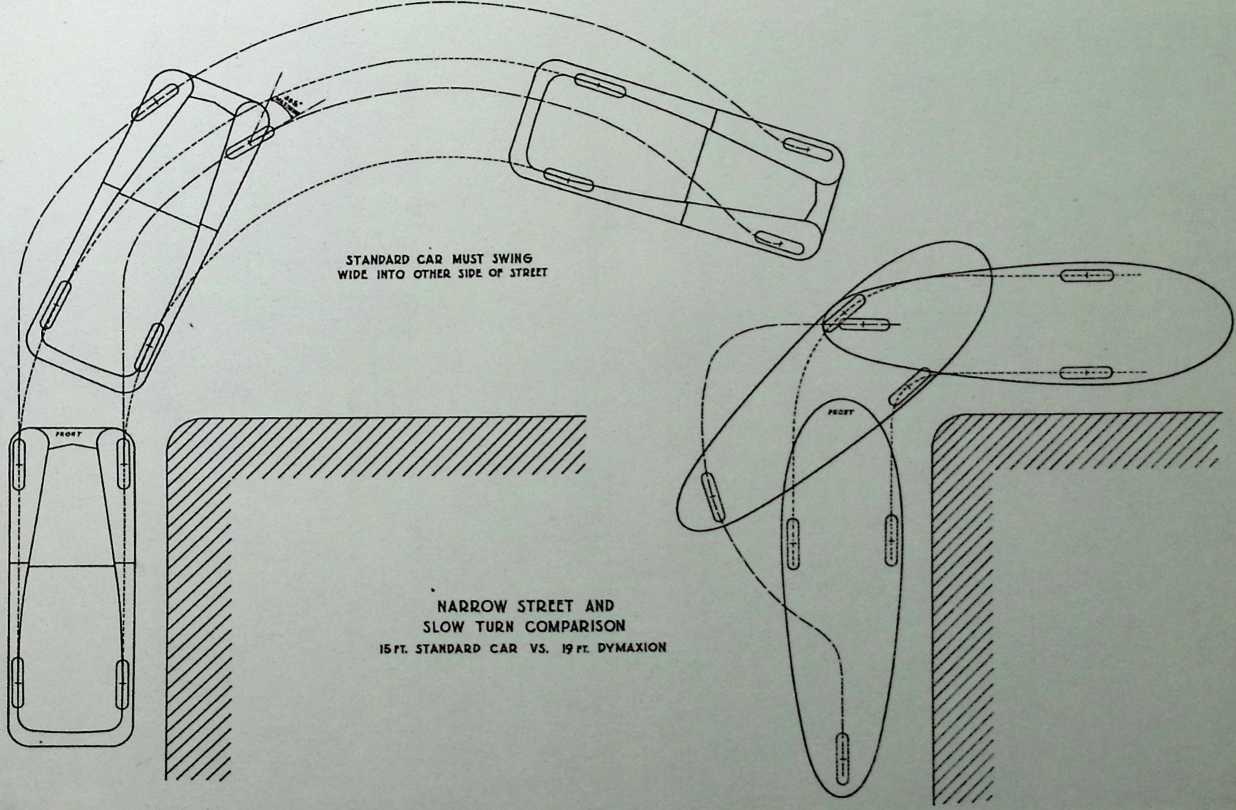
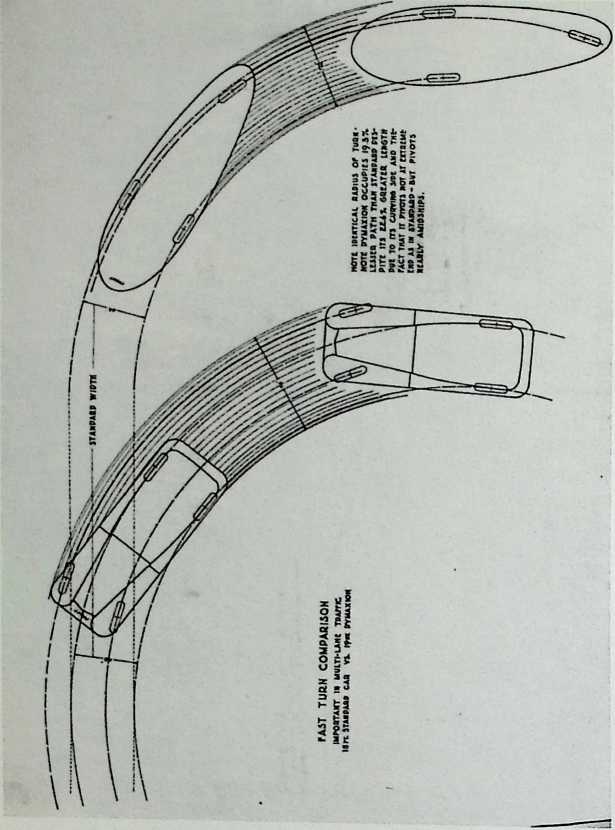
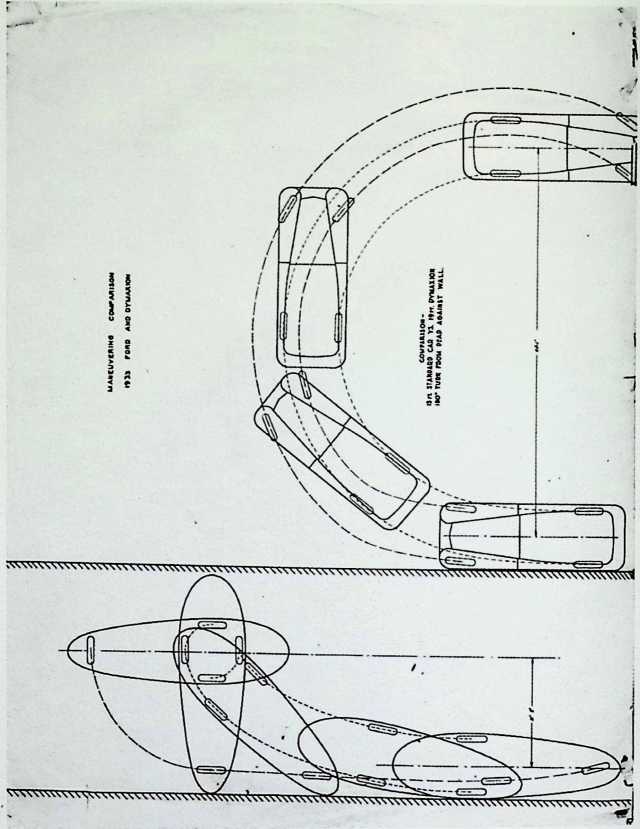
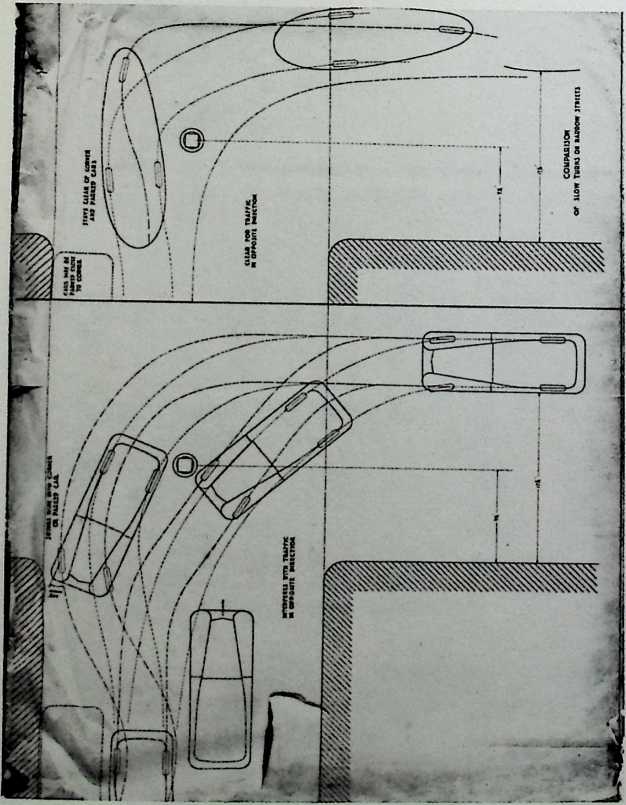
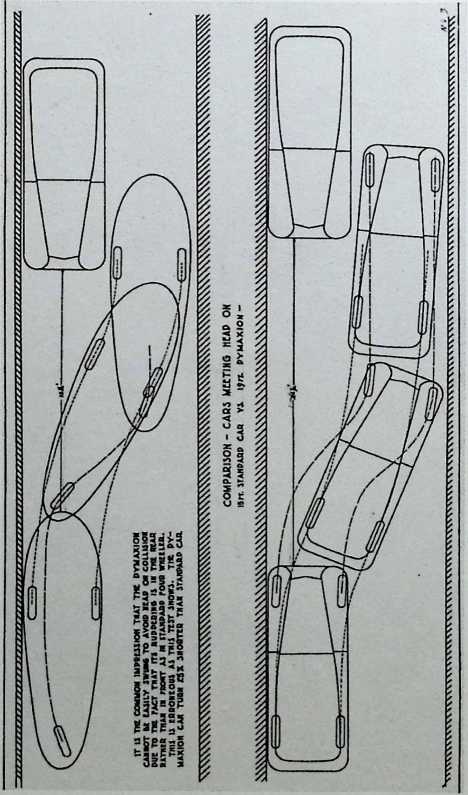
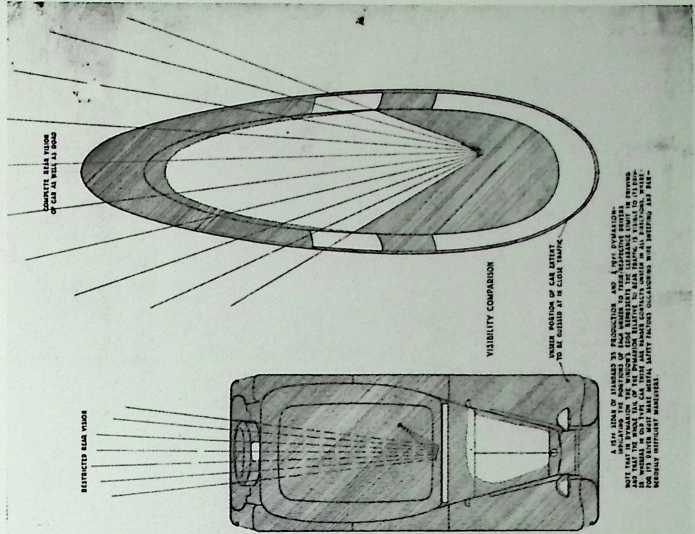
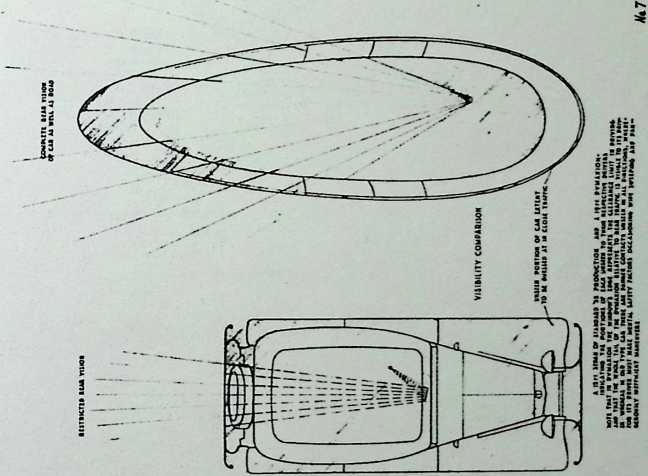

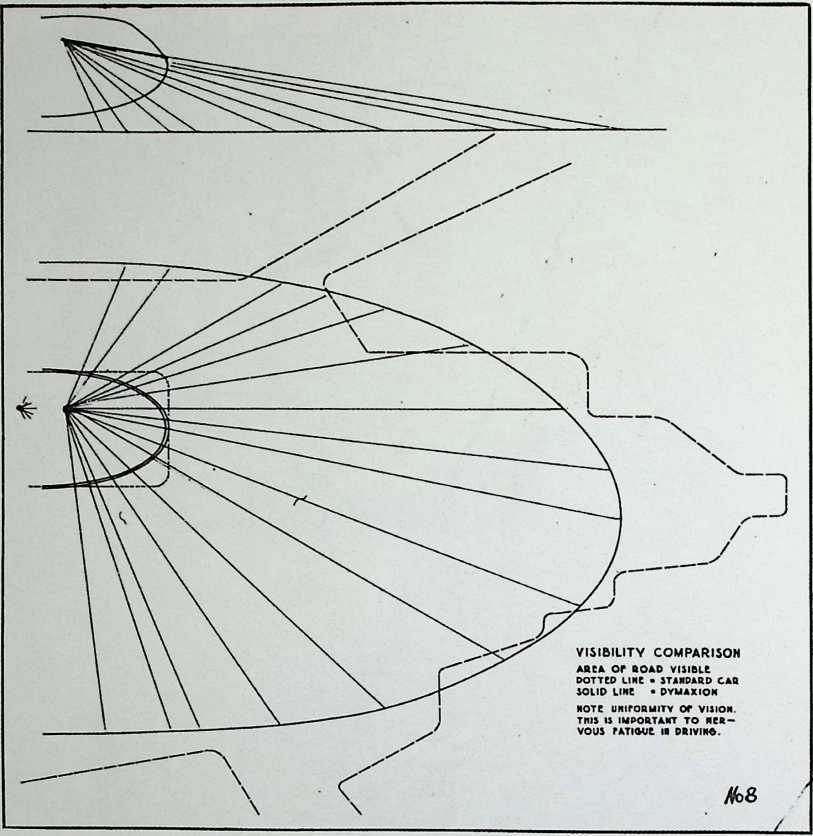
Car 2 1933
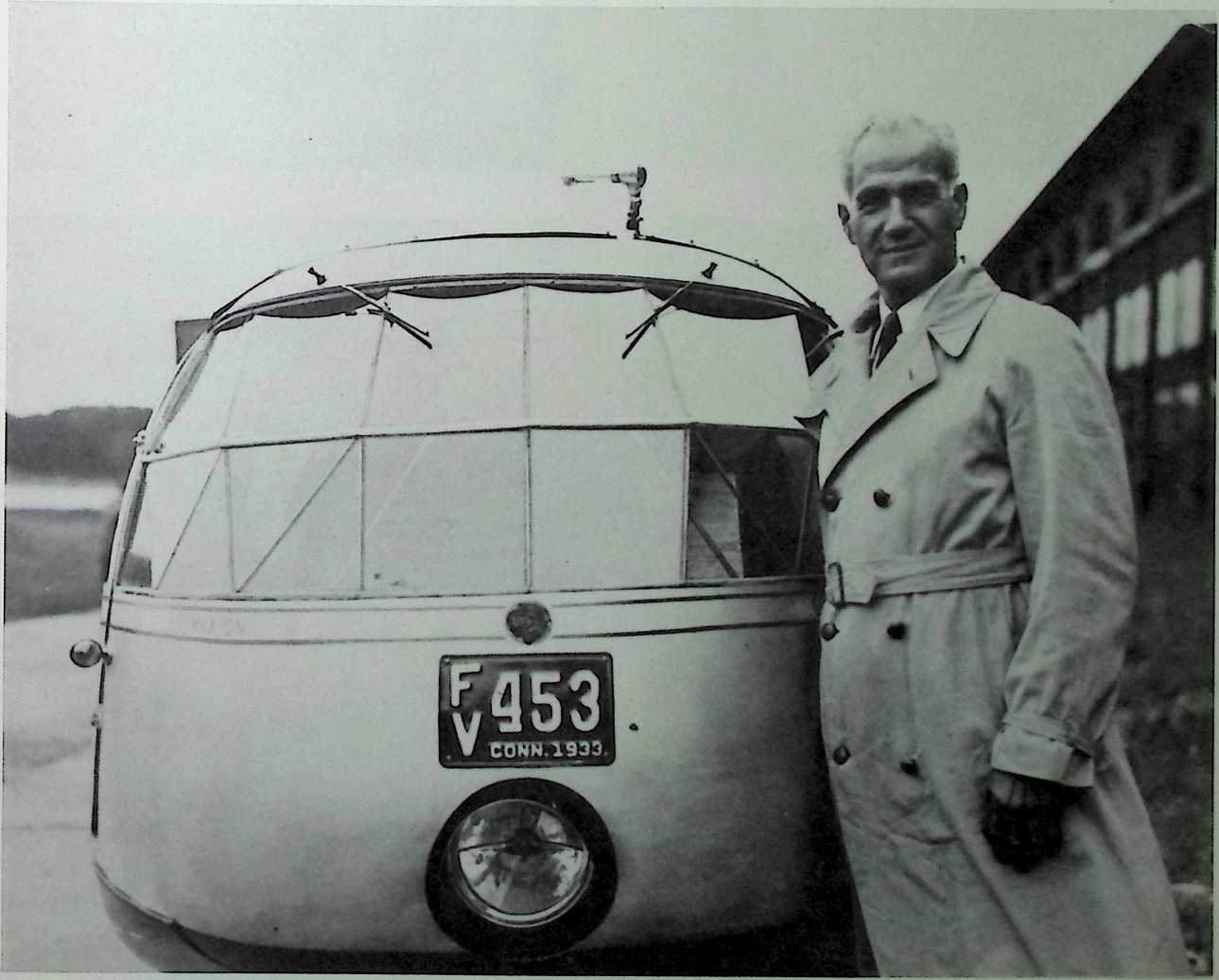

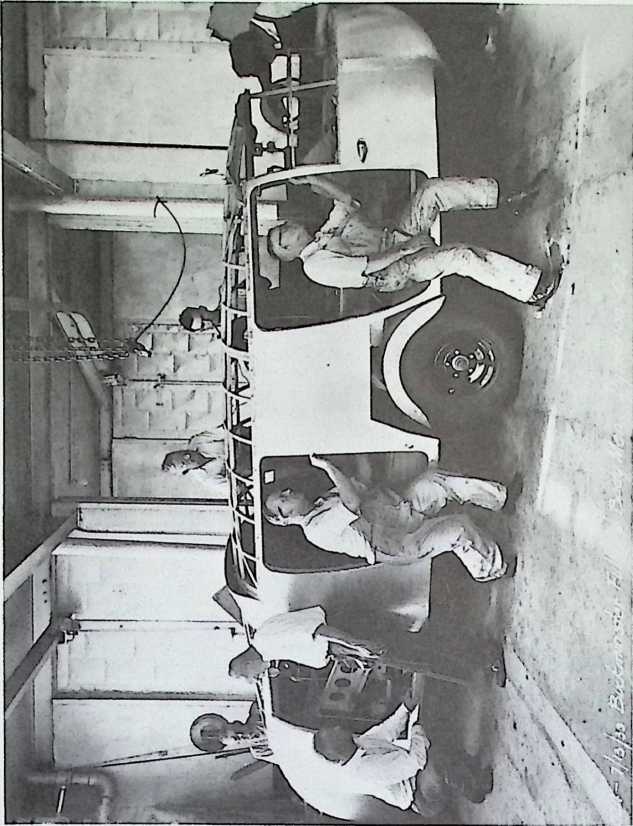
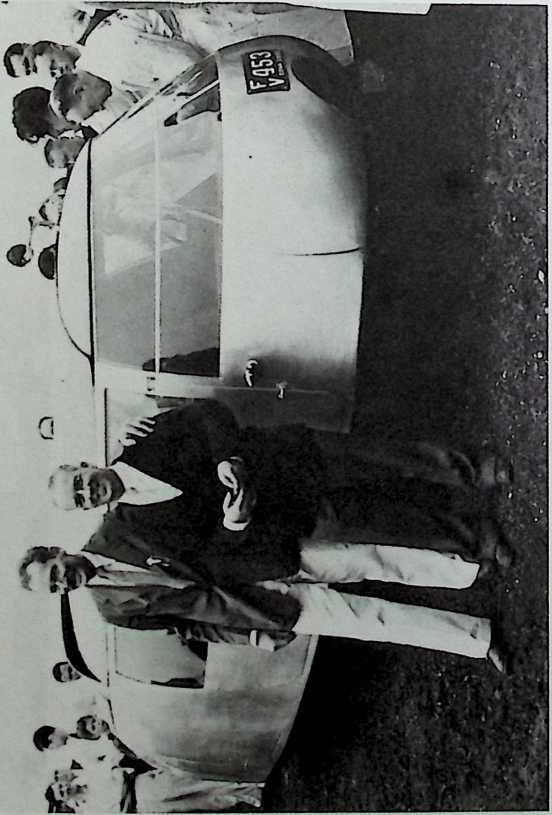
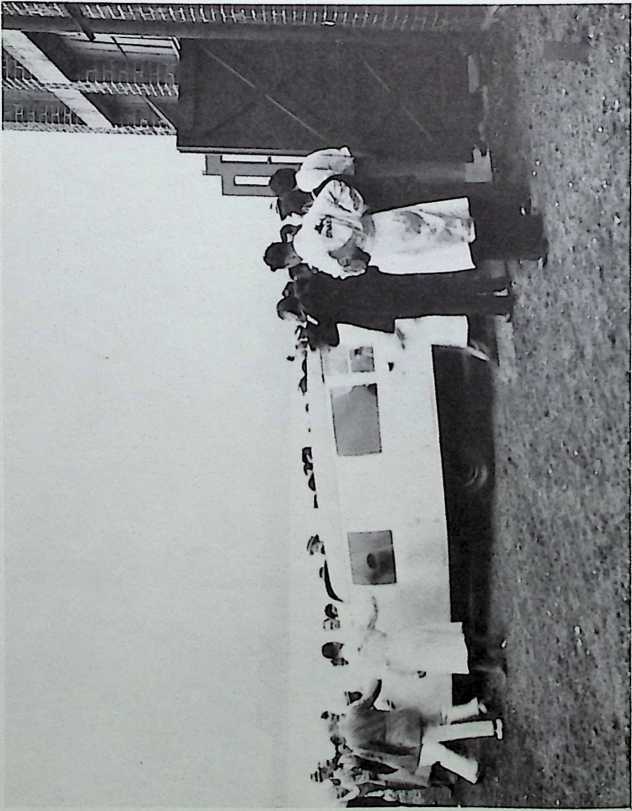
n<r>
co
Fiorr Jmws Joni Dolts
ftorr Jriiia
Unu Dolt Status .£
iimi yt uti
FROST 3PHISG 3ADDLS BOLT #2 Car #0-2 #16---4
Fiomt jrtiHG Sadfle Dolt -z
|
|||
ITO --- I.J.UYHSM |
criAM |
rmr |
|
APf»*Y |
HH' |
||
CAE RO. 2
|
P’VG RO. 16-A
|
||
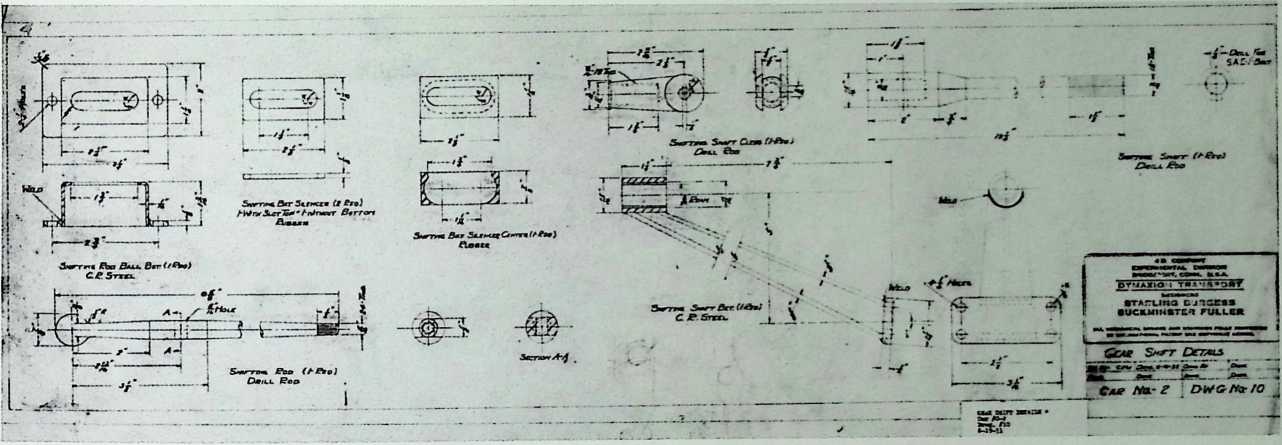
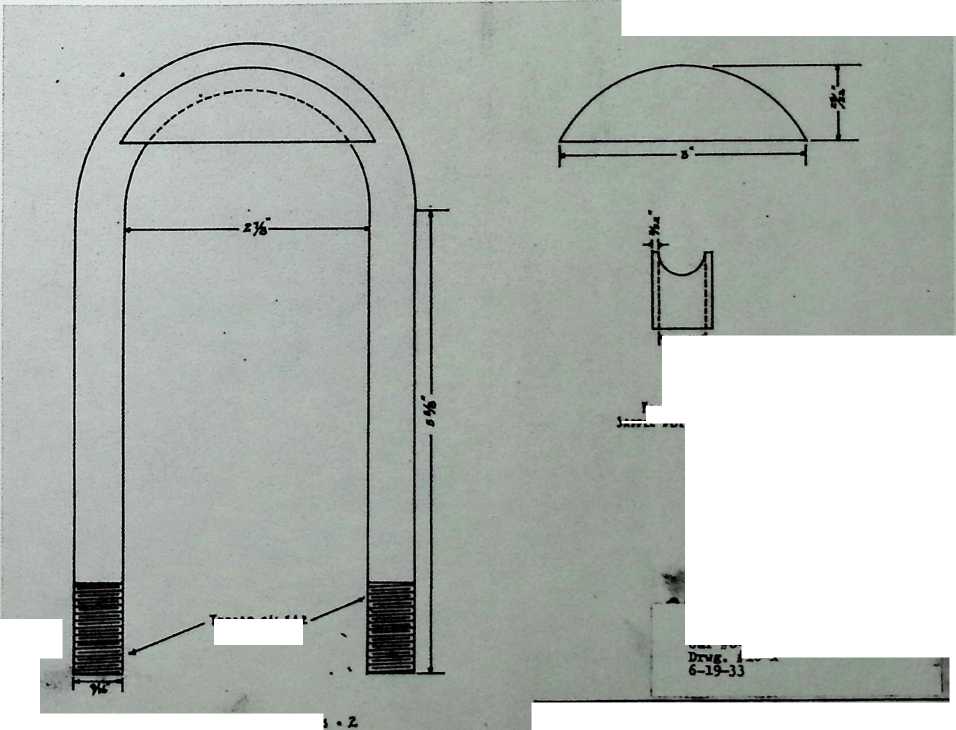


irisg □:a33am
7-24-33
DIVISION
KEY
H-Heod Light 32 CP-SG.
3 - Court v /5 CR-DC.
C -InstrumentLight 3 CD-SC.
D-Da/ne Light
E-Trouble if 2/ C2SC.
G - BocF/ng Z5 CP-3 C.
H-Toit u 3 CP.-3C.
t/ - Horn
K-Coii
L --Starting Motor
M - ero/or
N-Distributer Firing Order /34g6372 O -- Hm meter
P - Storting Su/itch
Q -Ignition • Z / qht Sariret)
2 -- Horn Qu/fan
S - Bootrine Debt Sa/ifct
T -Stop ii^ht Scuitcb
U-Dome a r
- - Troutria a a
W-Fvse 3/oeK 25-F
X - b/'q/ft Connectors
- - Battery
Z -
DYMAXION TRANSPORT
STARLING BURGESS
BUCKMINSTER FULLER
* j j a |
aouAO o«cc*co ^EeCt OATt r-XS-33 |
A>RBOV«Q AMMIUVCO MT» |
CAR NO
2 | DRAWING NO /&£
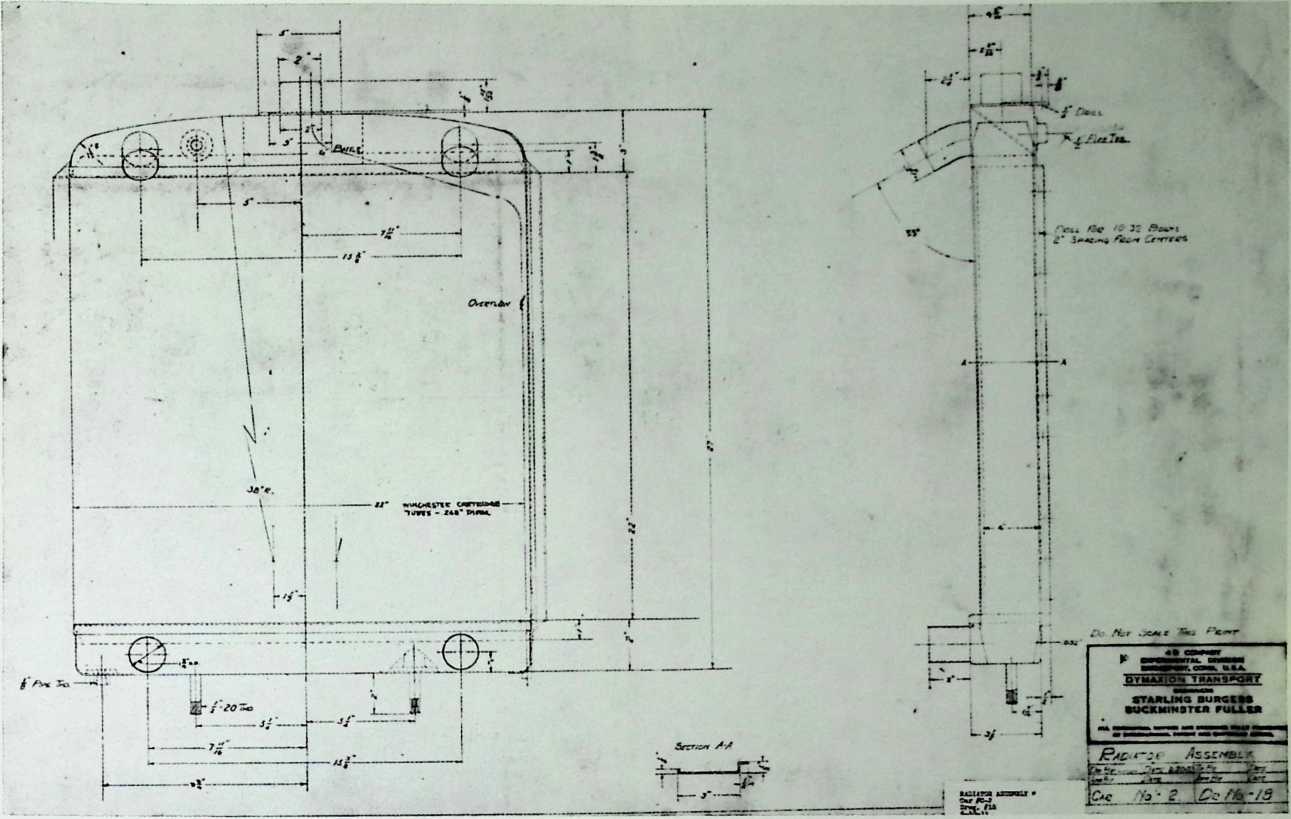
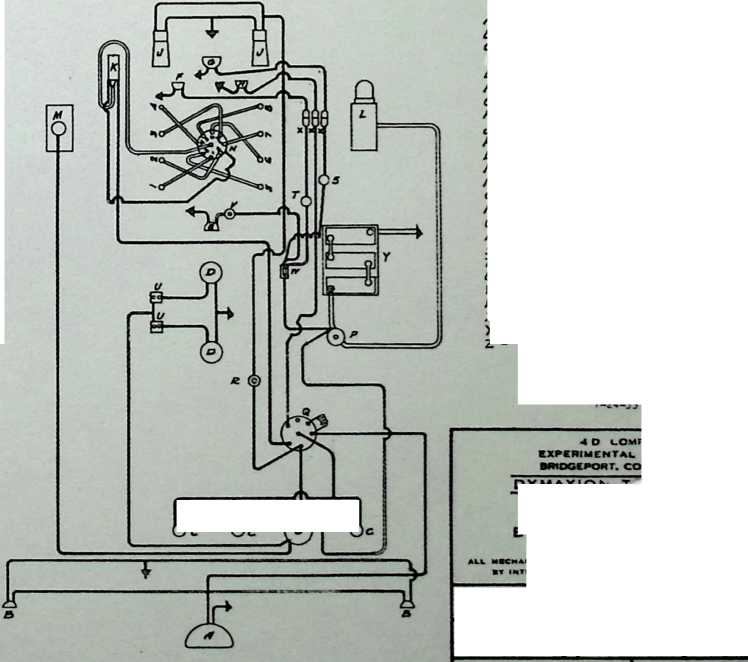
![]()
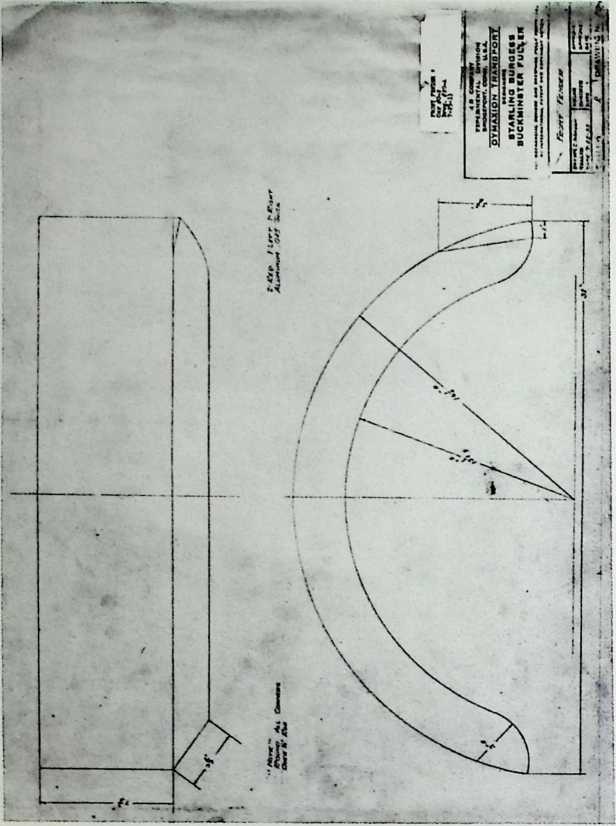

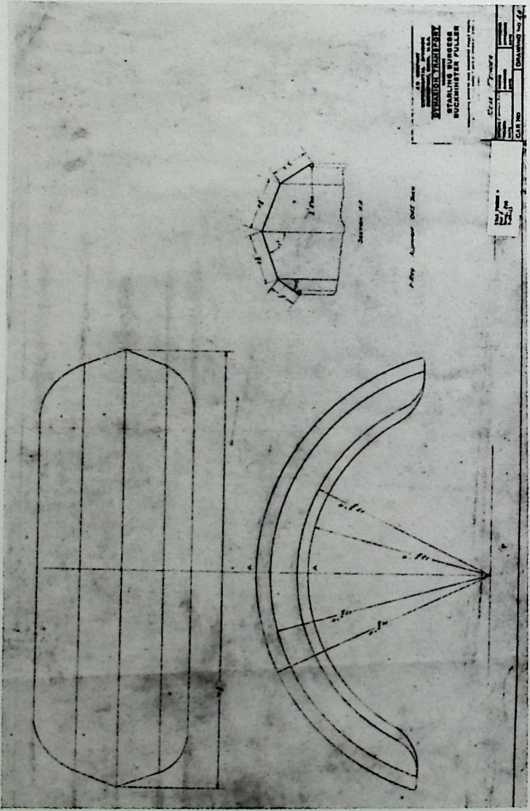
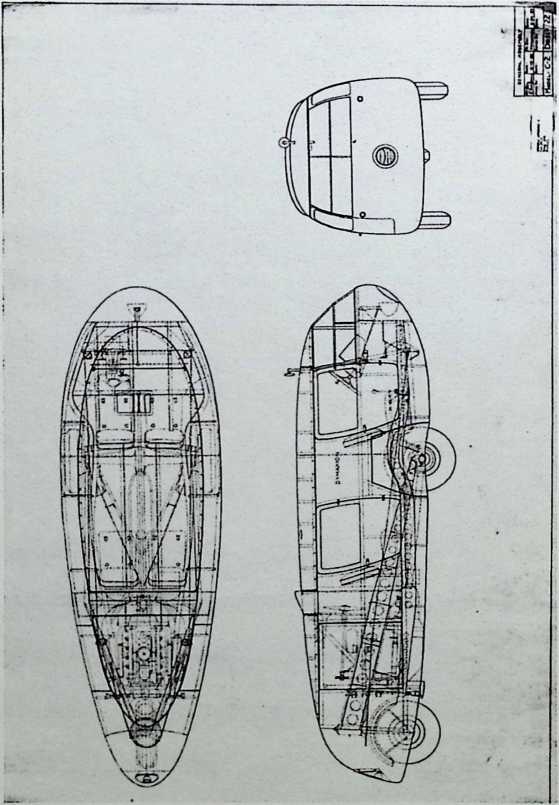

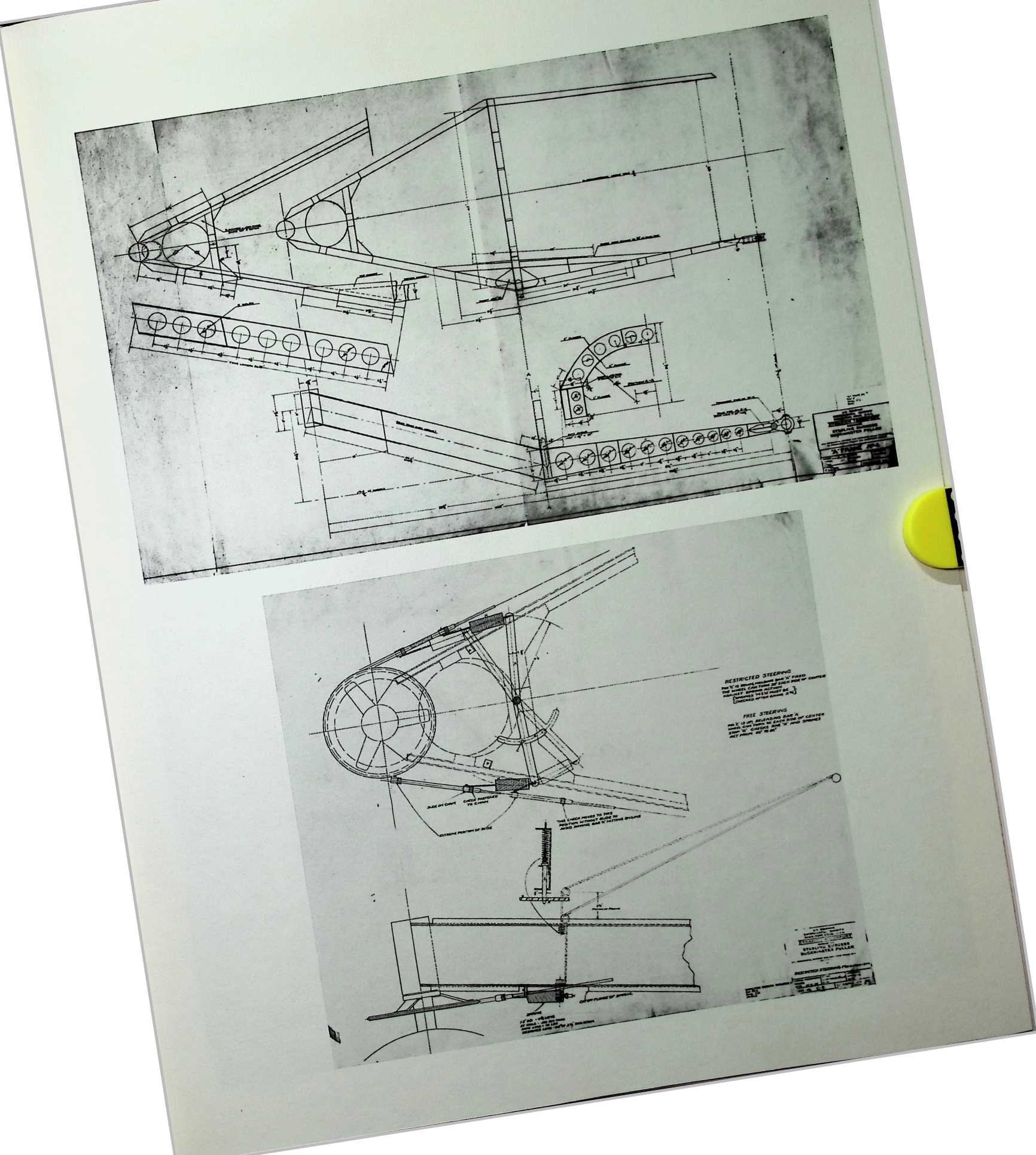
1933
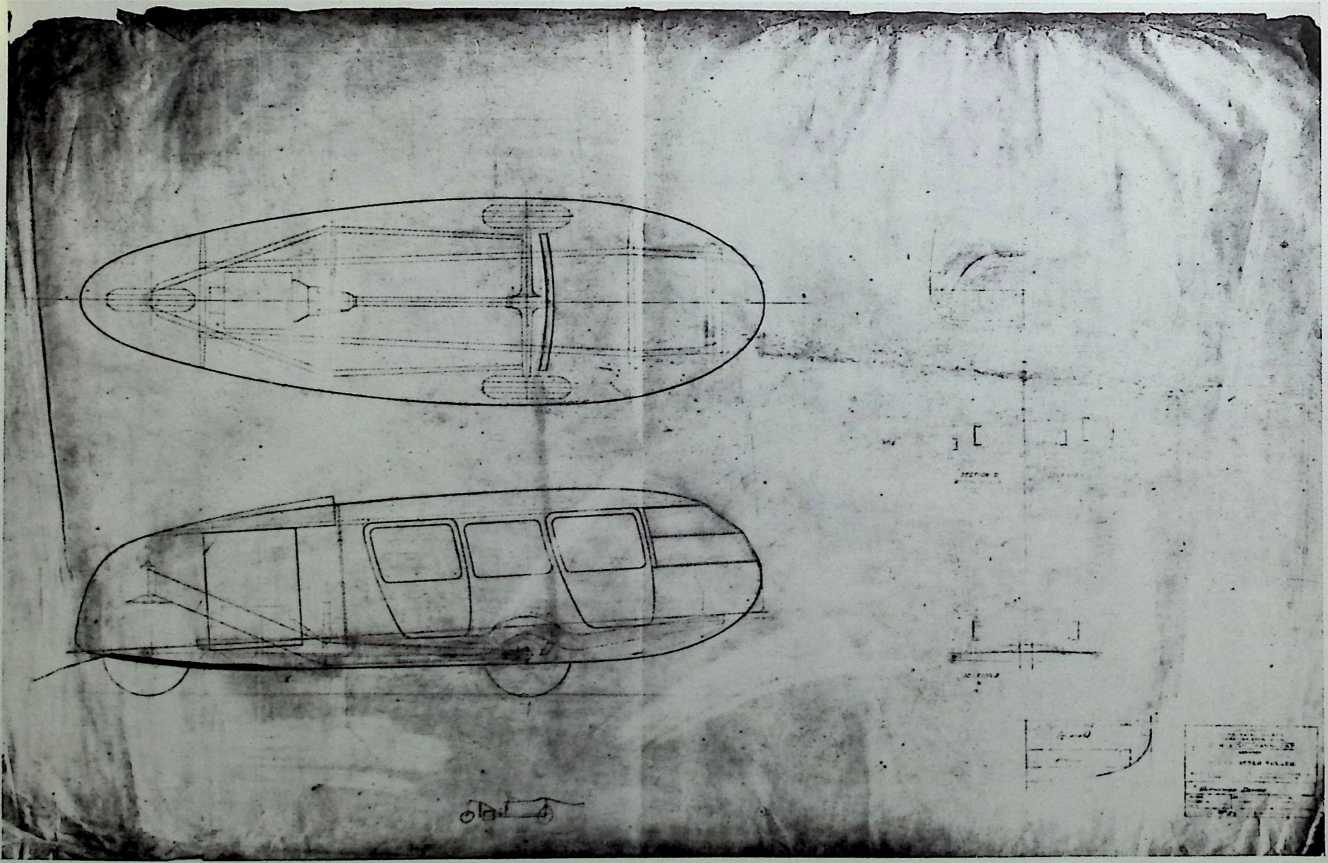
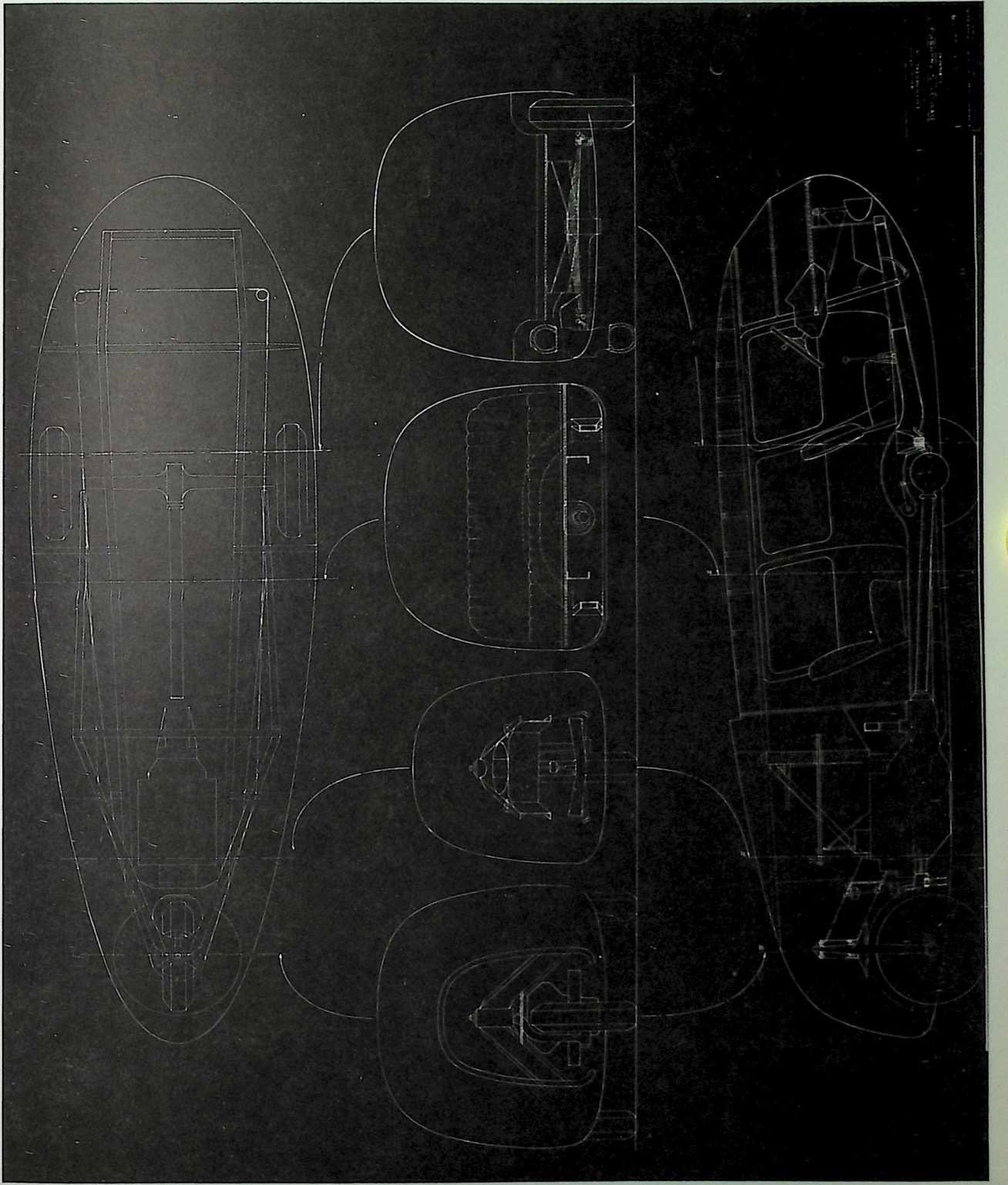
Car 3
Patent
Application, 10/18/33
Granted, 12/7/37

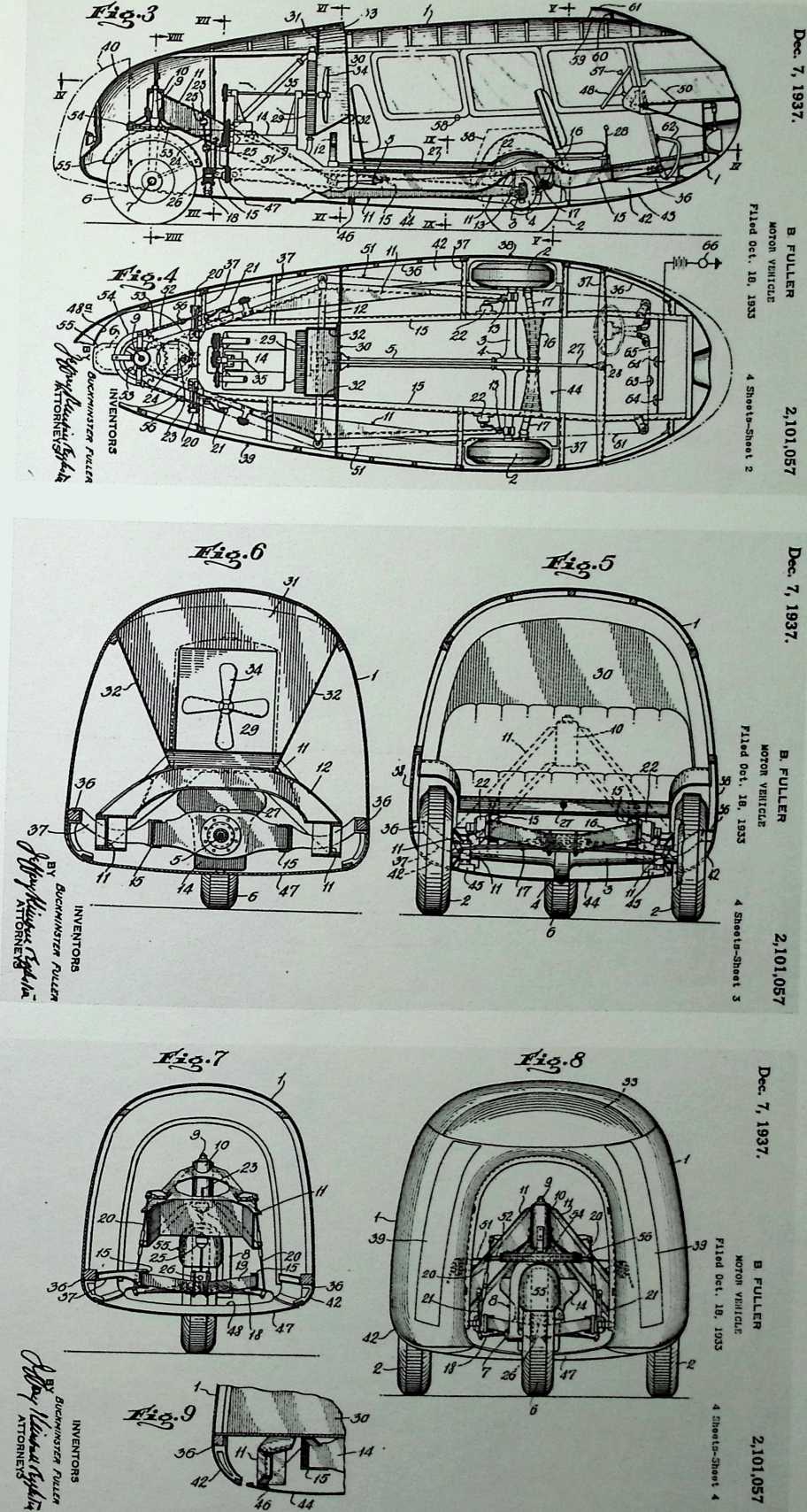
¶ Chapter 19 Car 3 1934
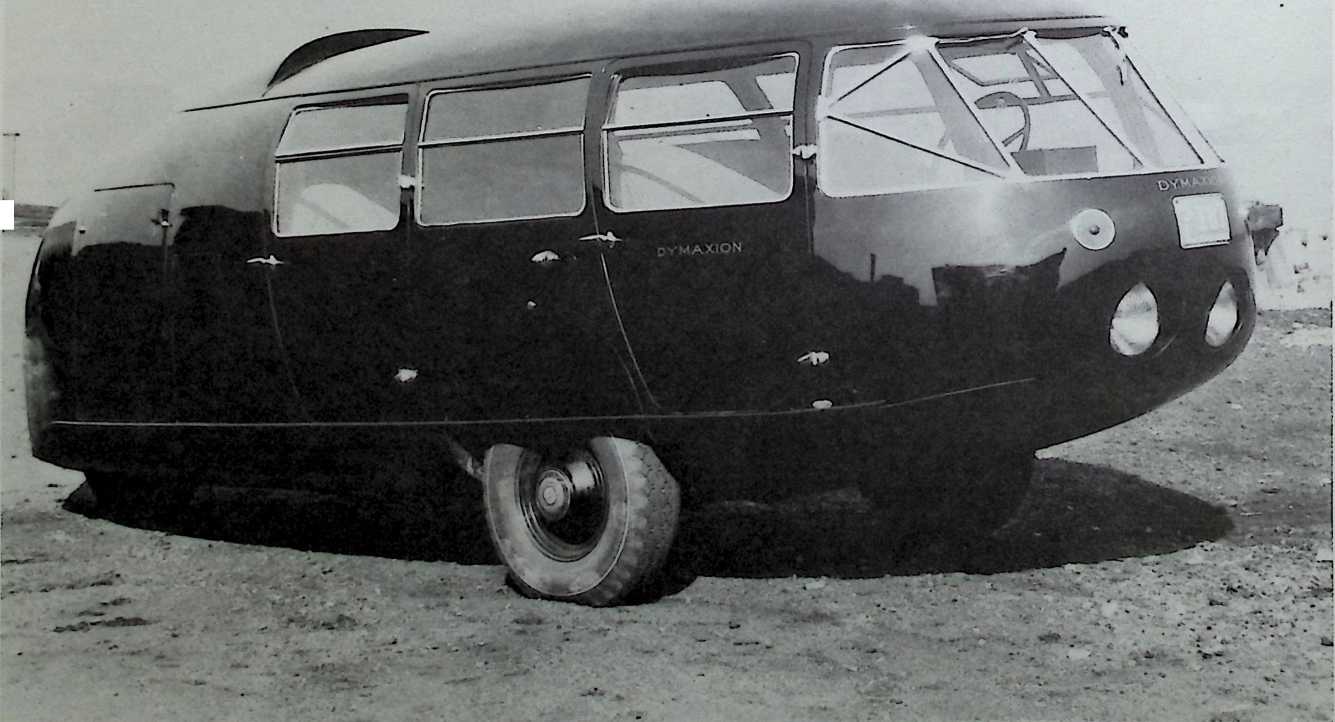
•’rf
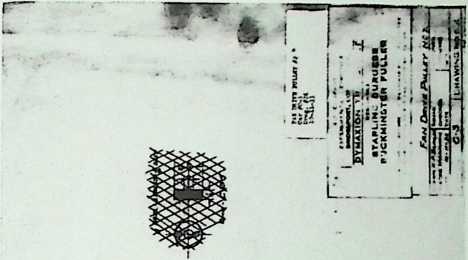
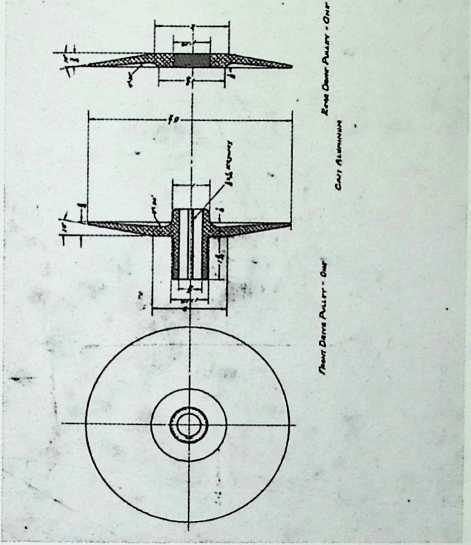
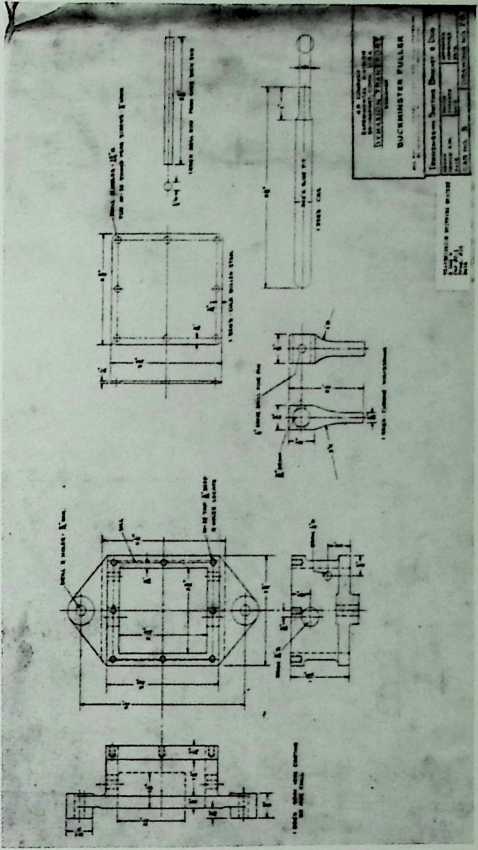
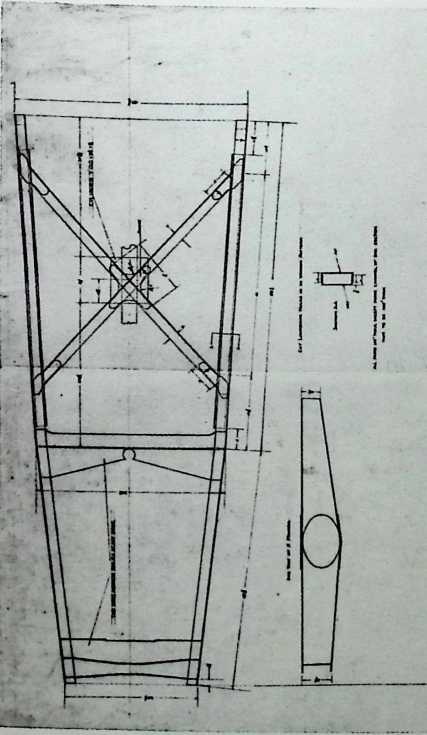
![]()
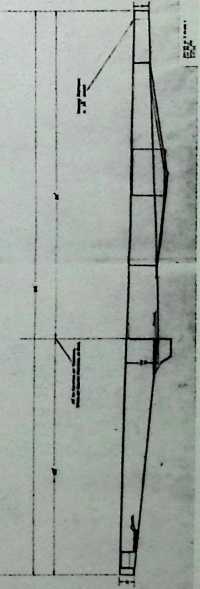
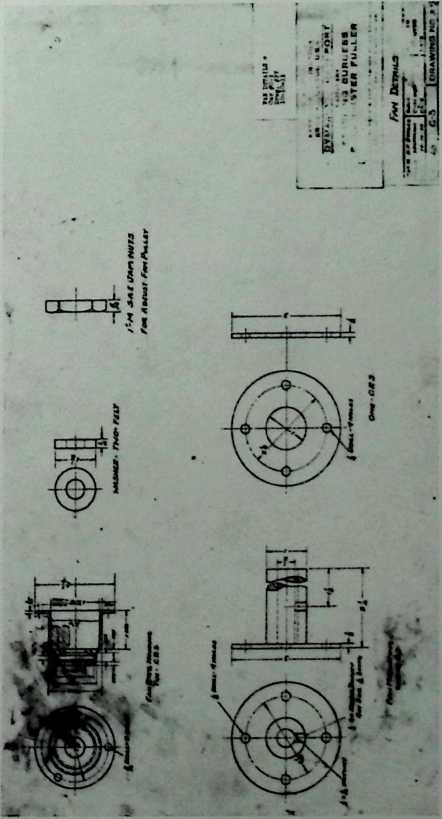
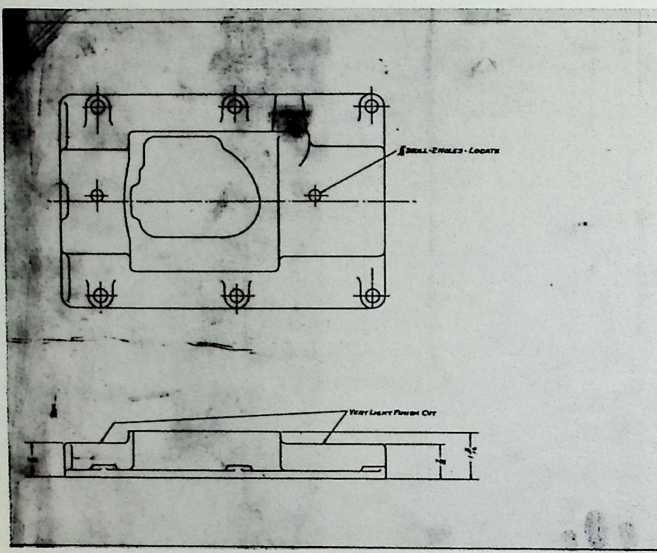
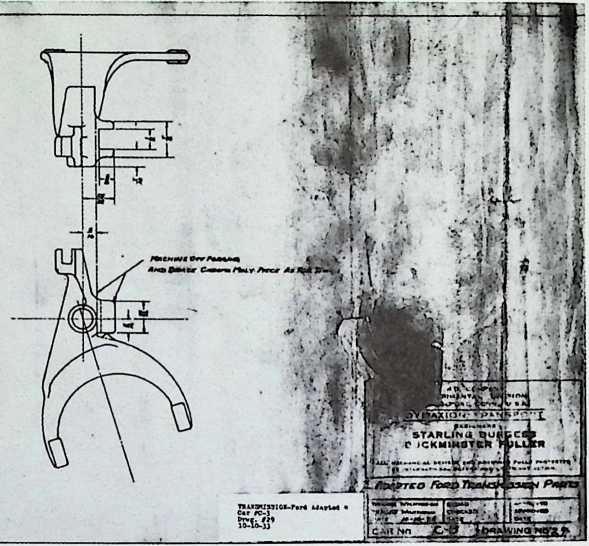

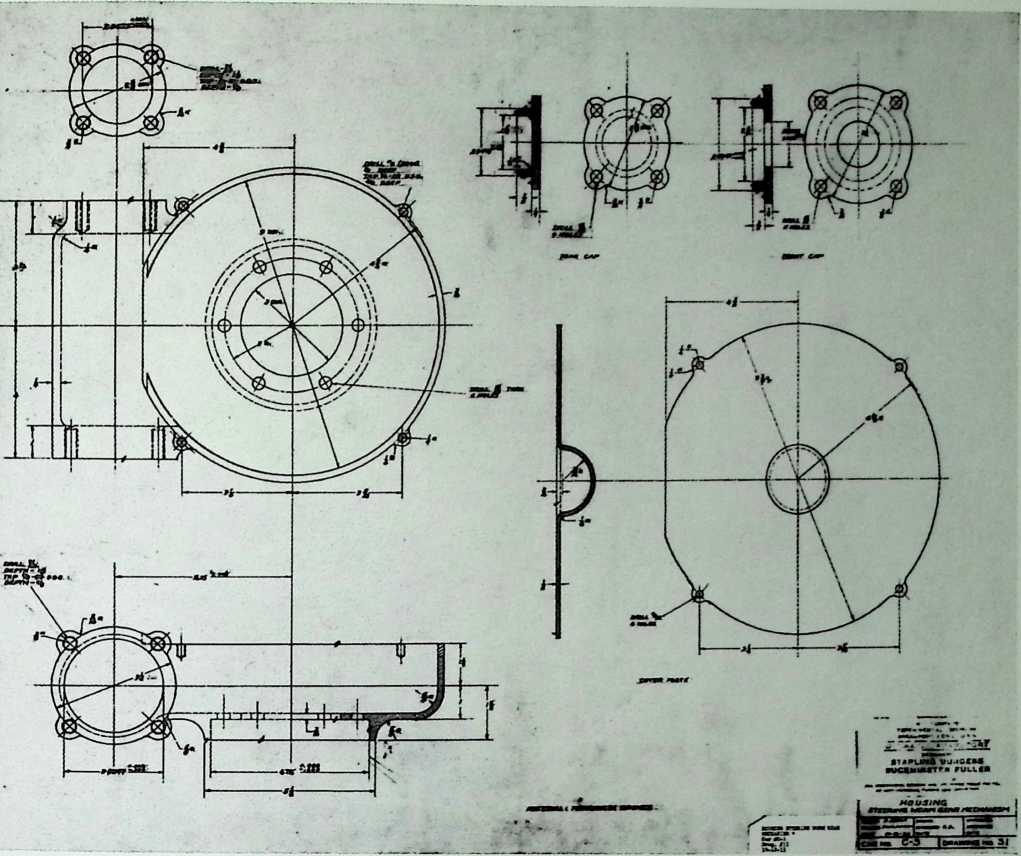
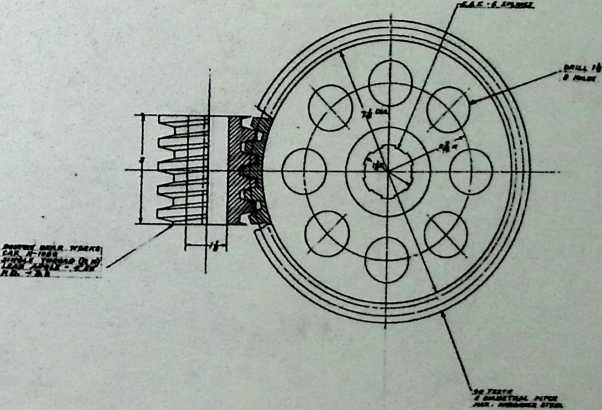
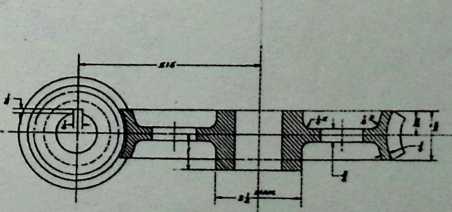
CANTILEVER SPRING HANGER BRACKETS * Car fC-i Drug. #34 10-6-33
•SVM ION tBANOPTO
Dartonaco
OTARLIN0 DUROGOO
DUCUfc3IN8YGR PULLGQ
'‘CANTILEVER 5K*HAHoeaBt*u-T^'
|
||
OQUAO |
AI-9ROVO ' |
|
A«^OVZ3 |
||
DAT# |
OATX _ _ |
|
CAR NO. C |
-3 | DRAWING NO.-24
|
|
AU eciftiSQiAk corses tee essences rcs&v Parsers
CT £^3 CttCZZZZl CCZX^i.
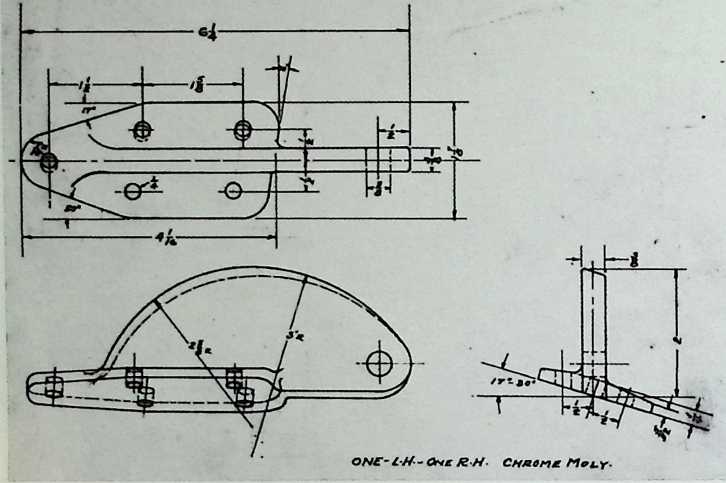
![]()
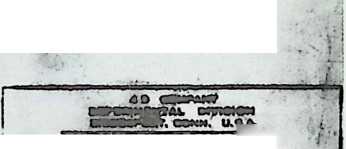
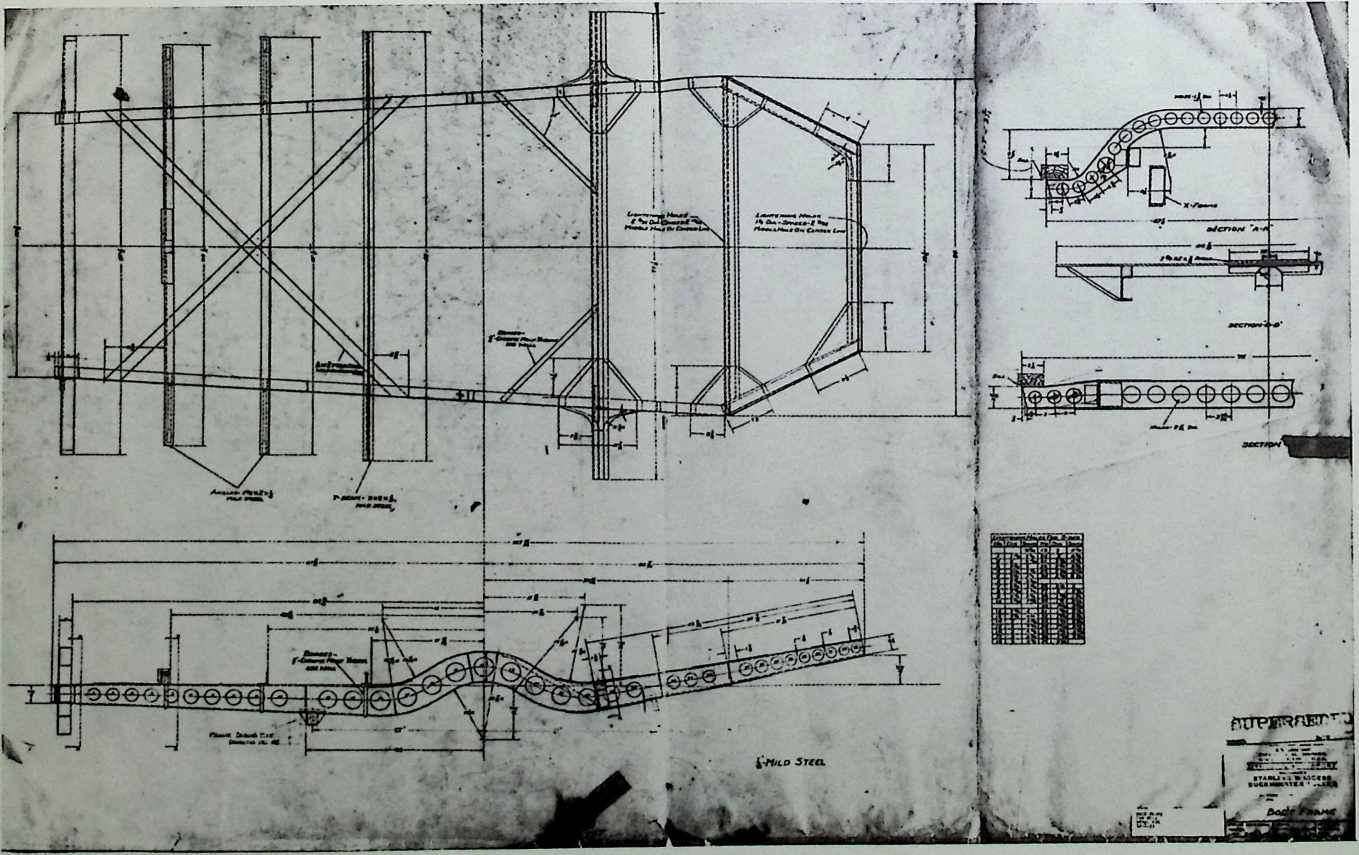
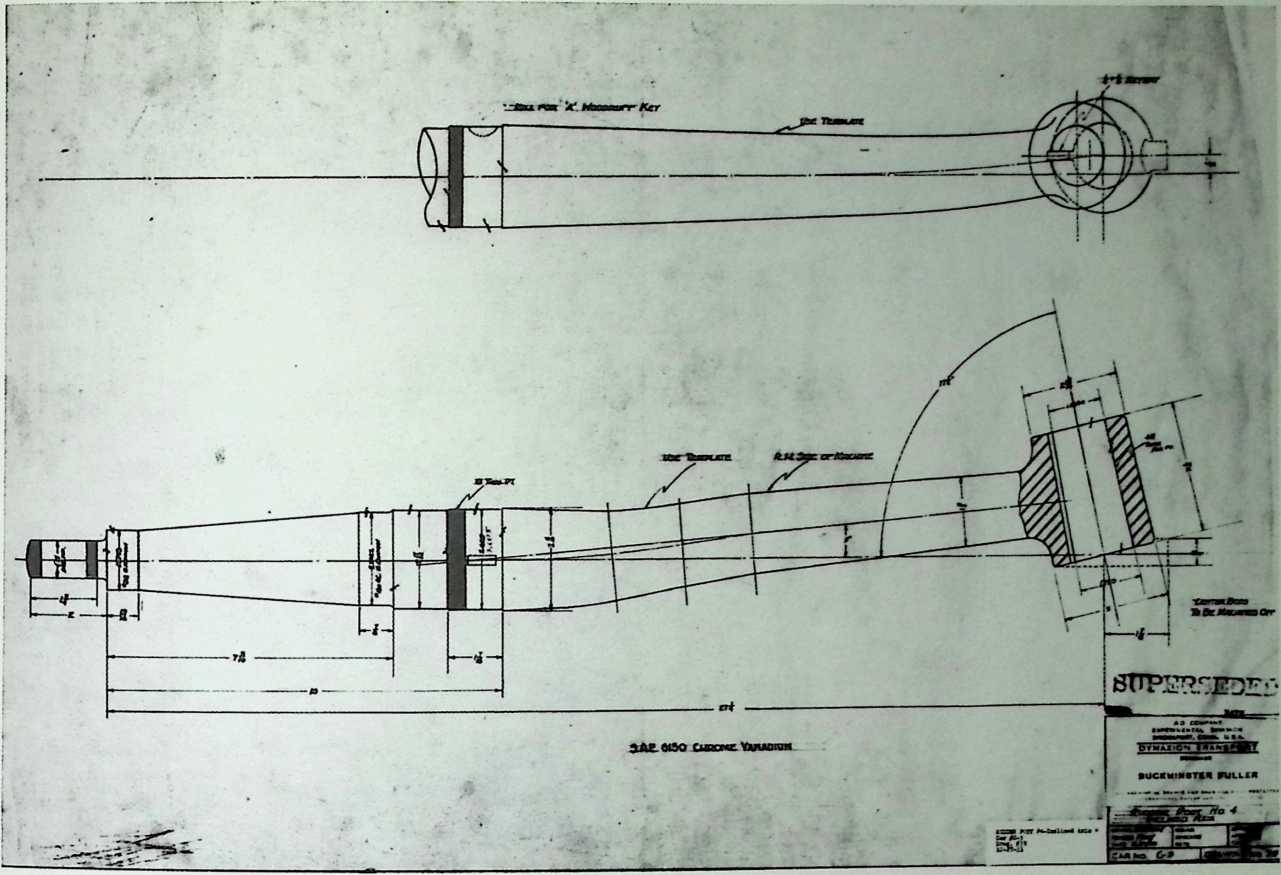
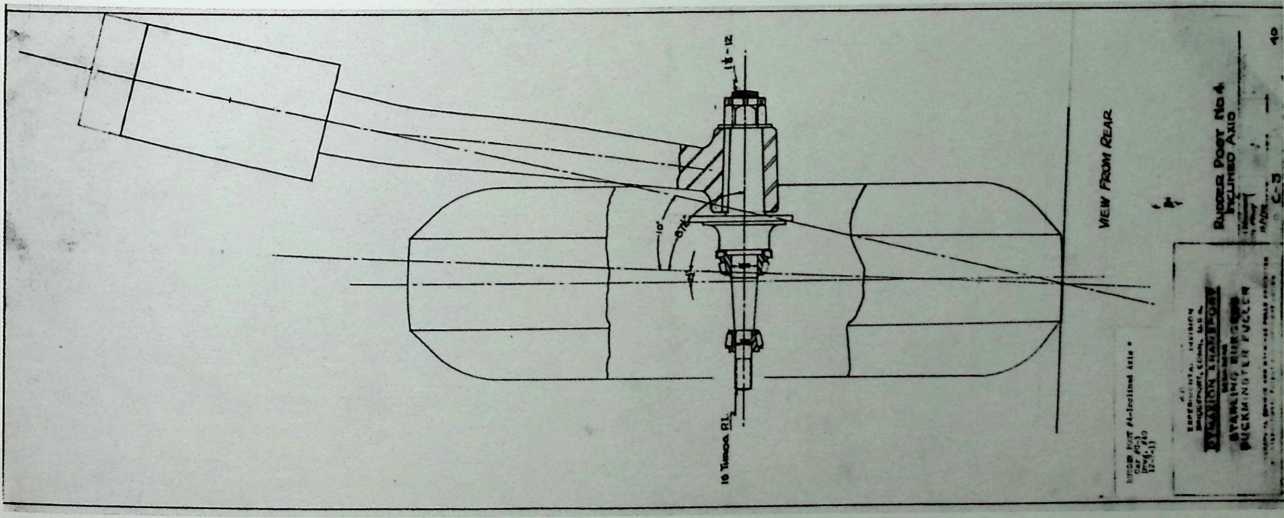
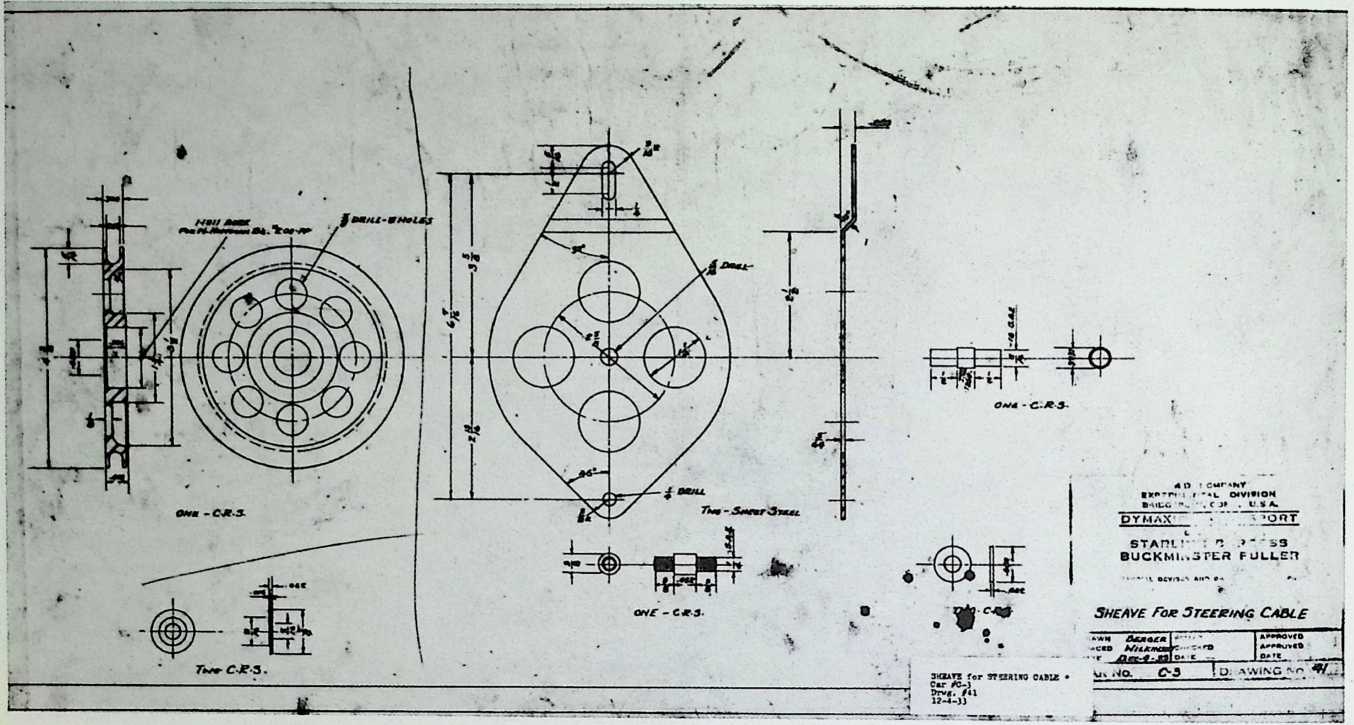

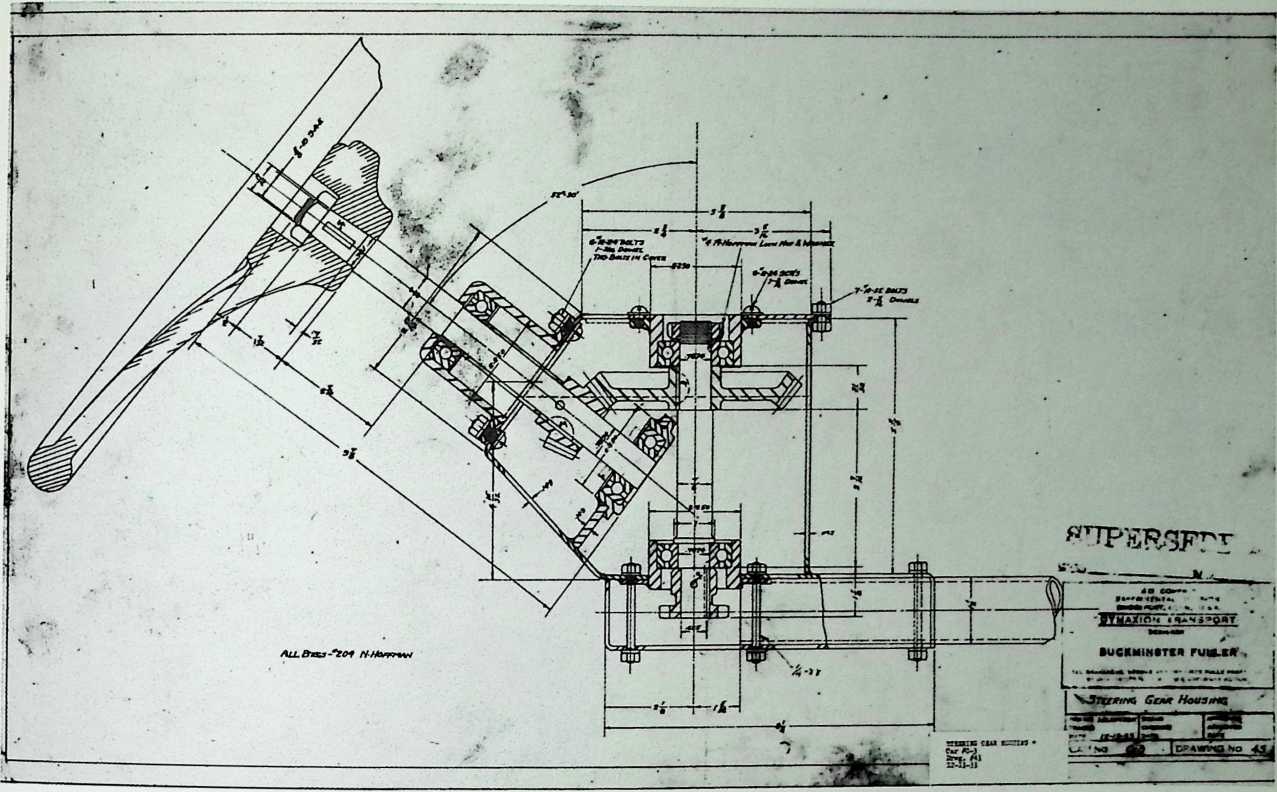
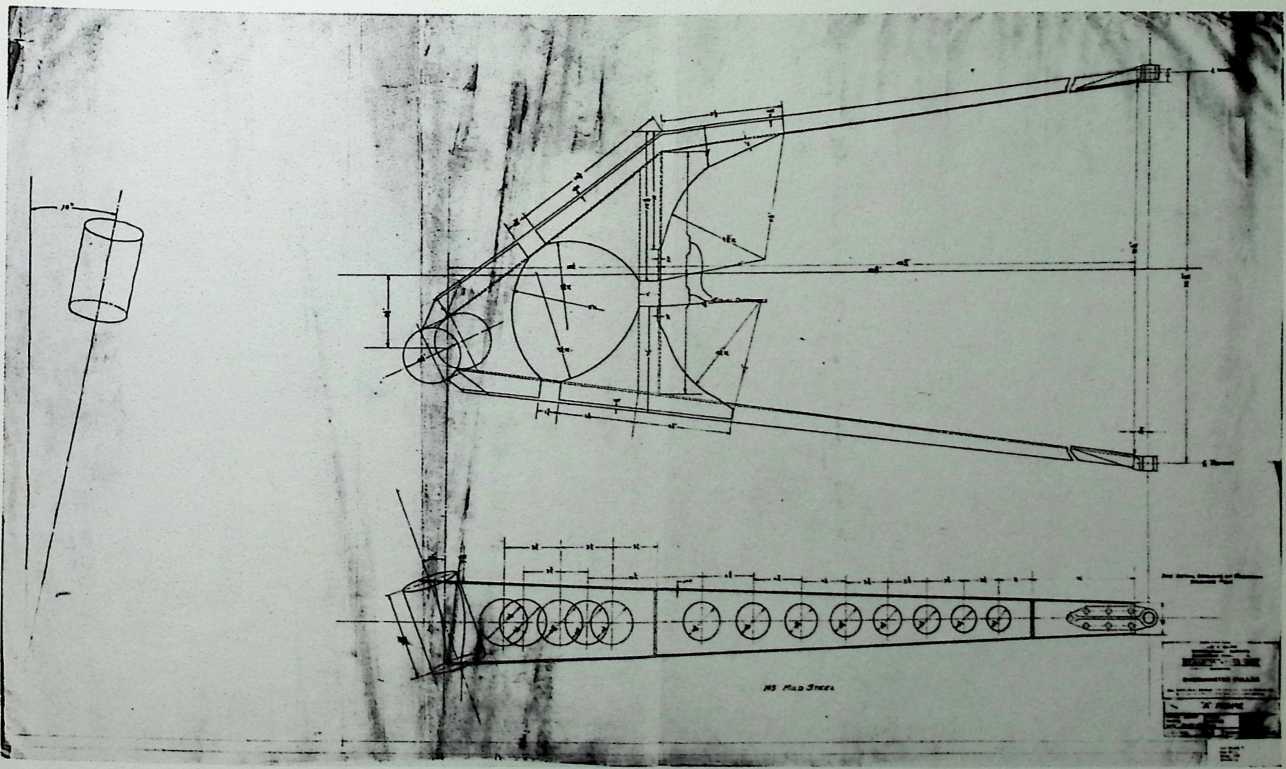
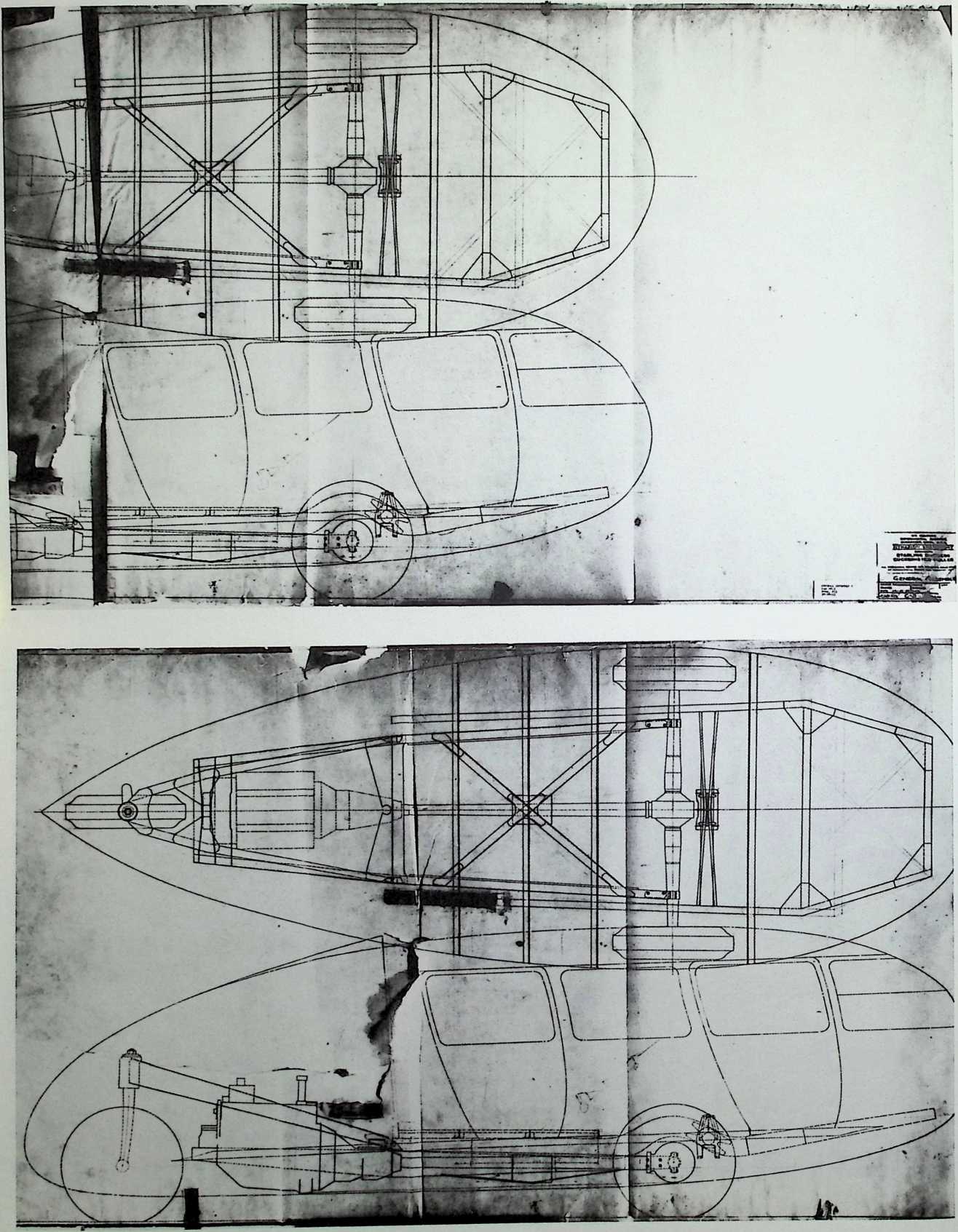
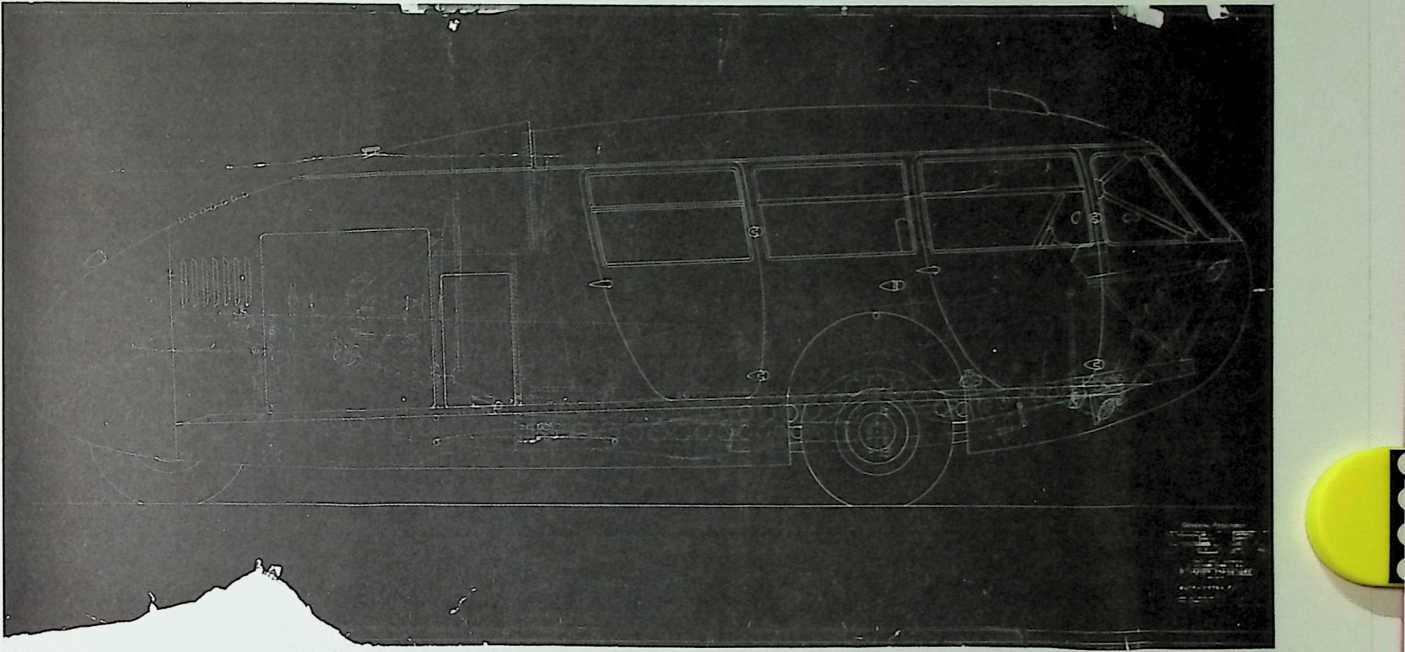
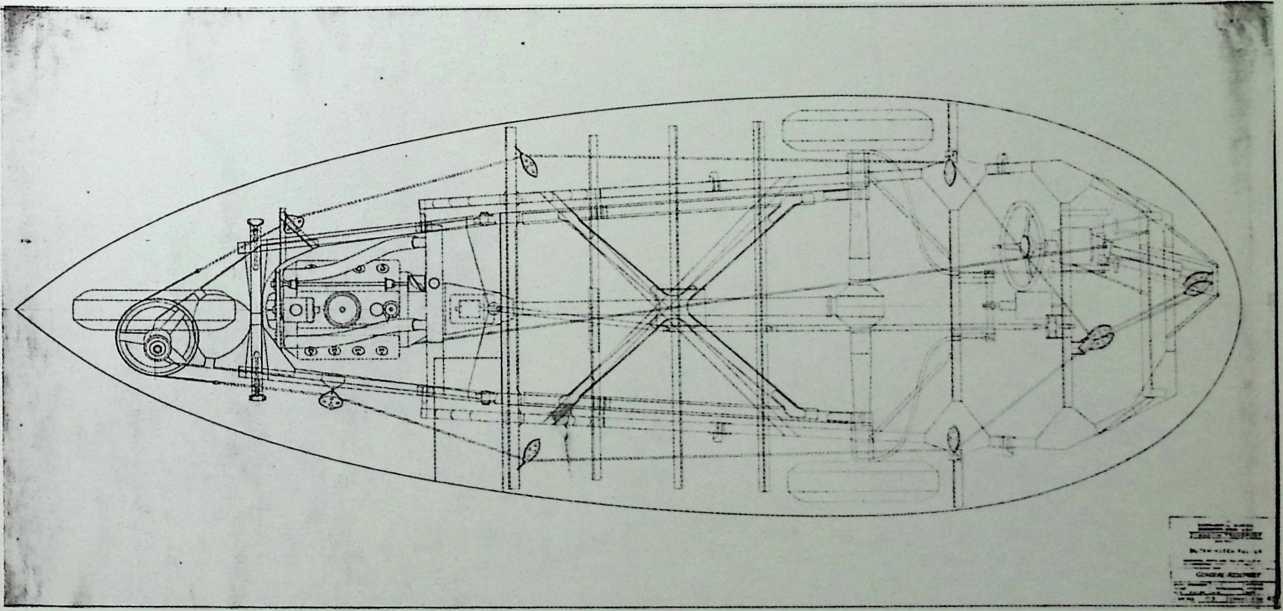
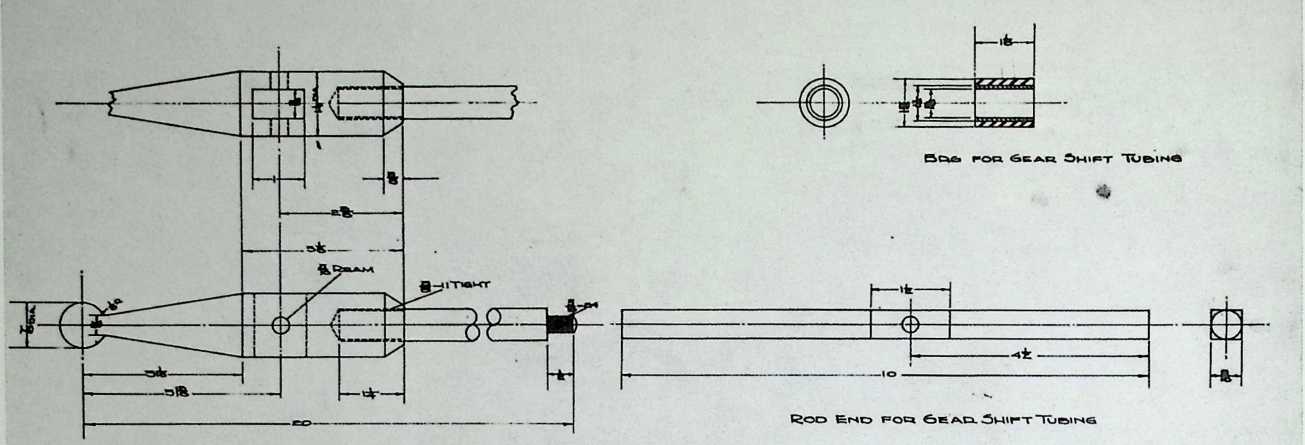

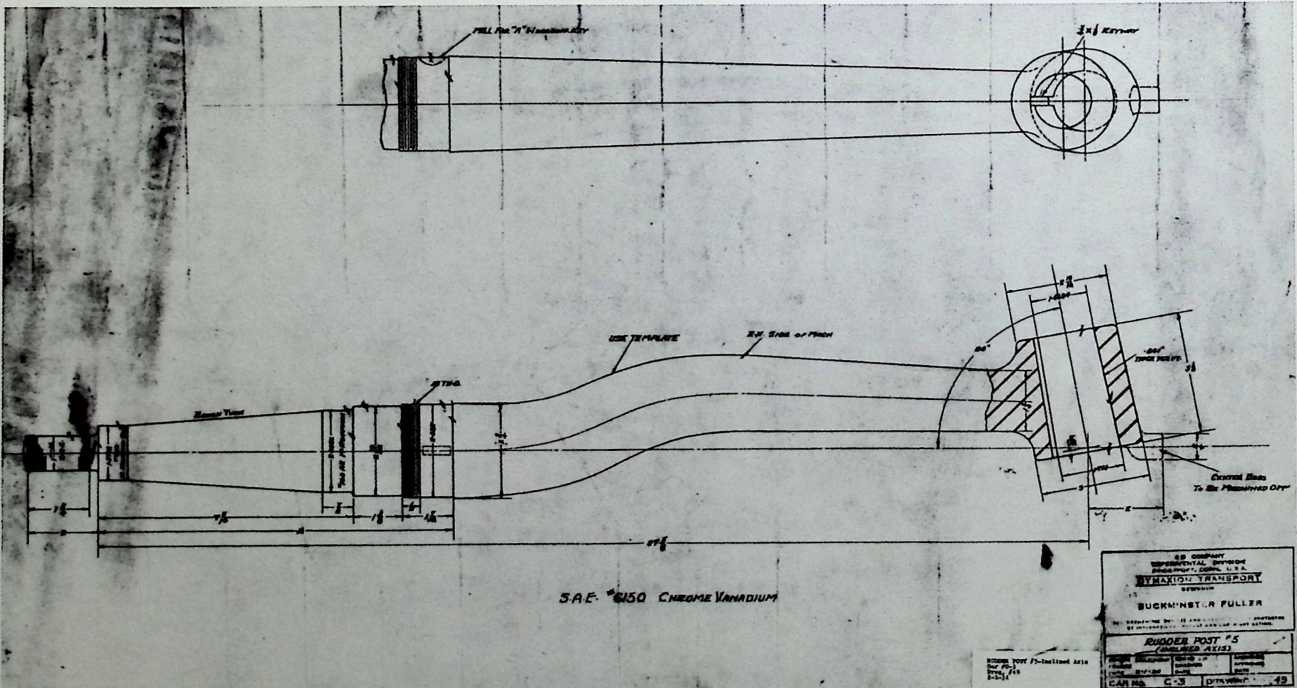
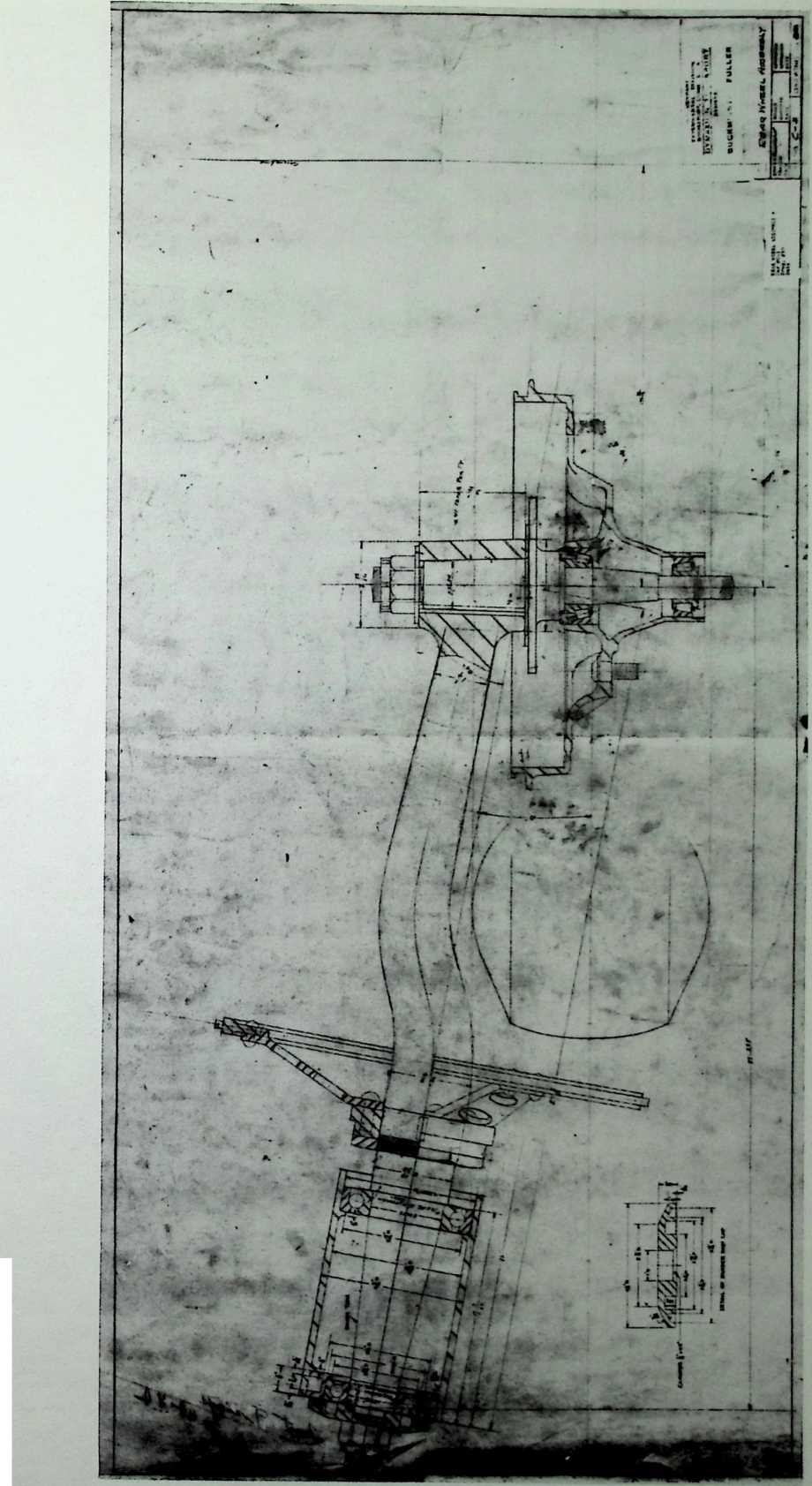
¶ Chapter 20 Car 5 1934
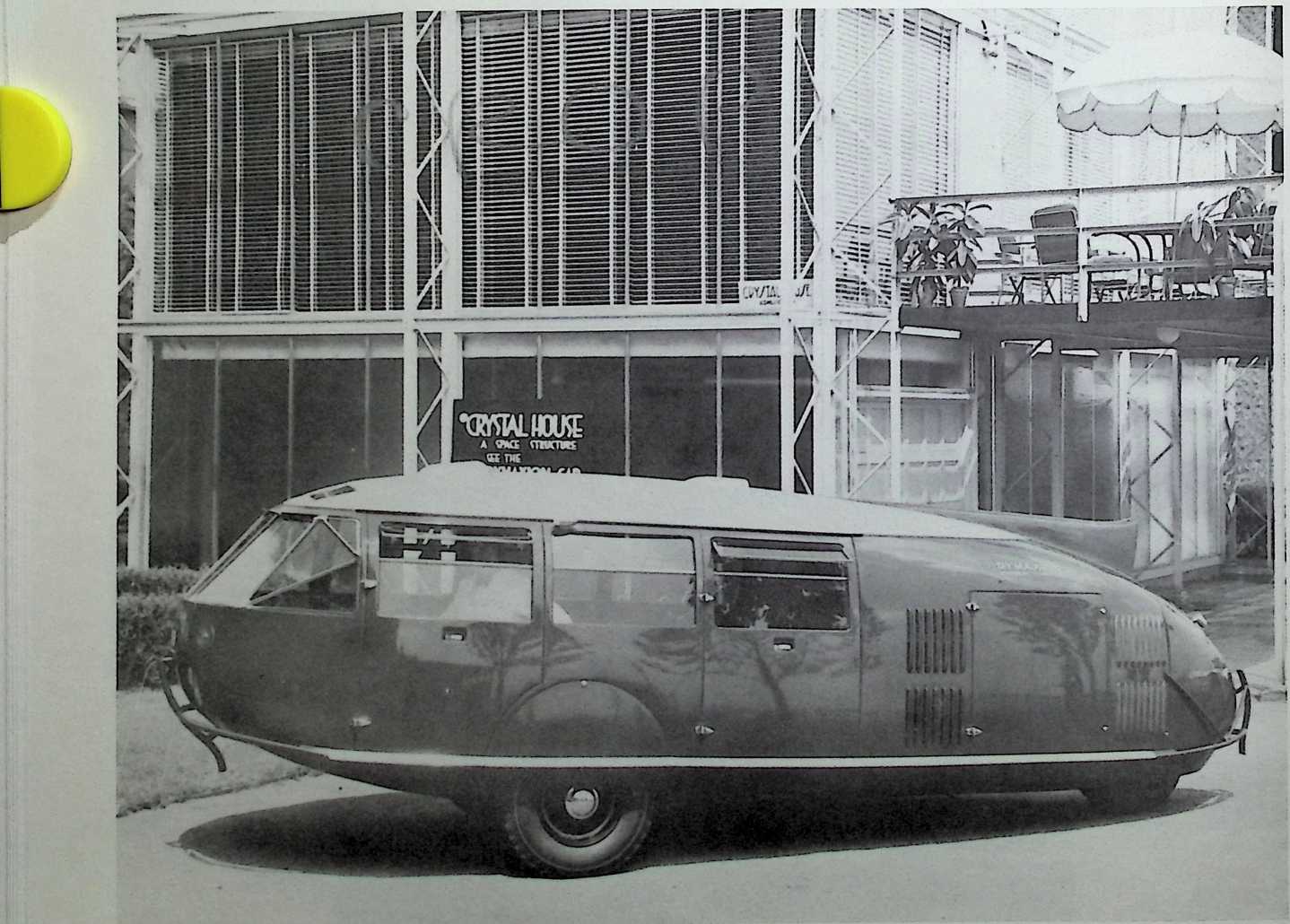
J
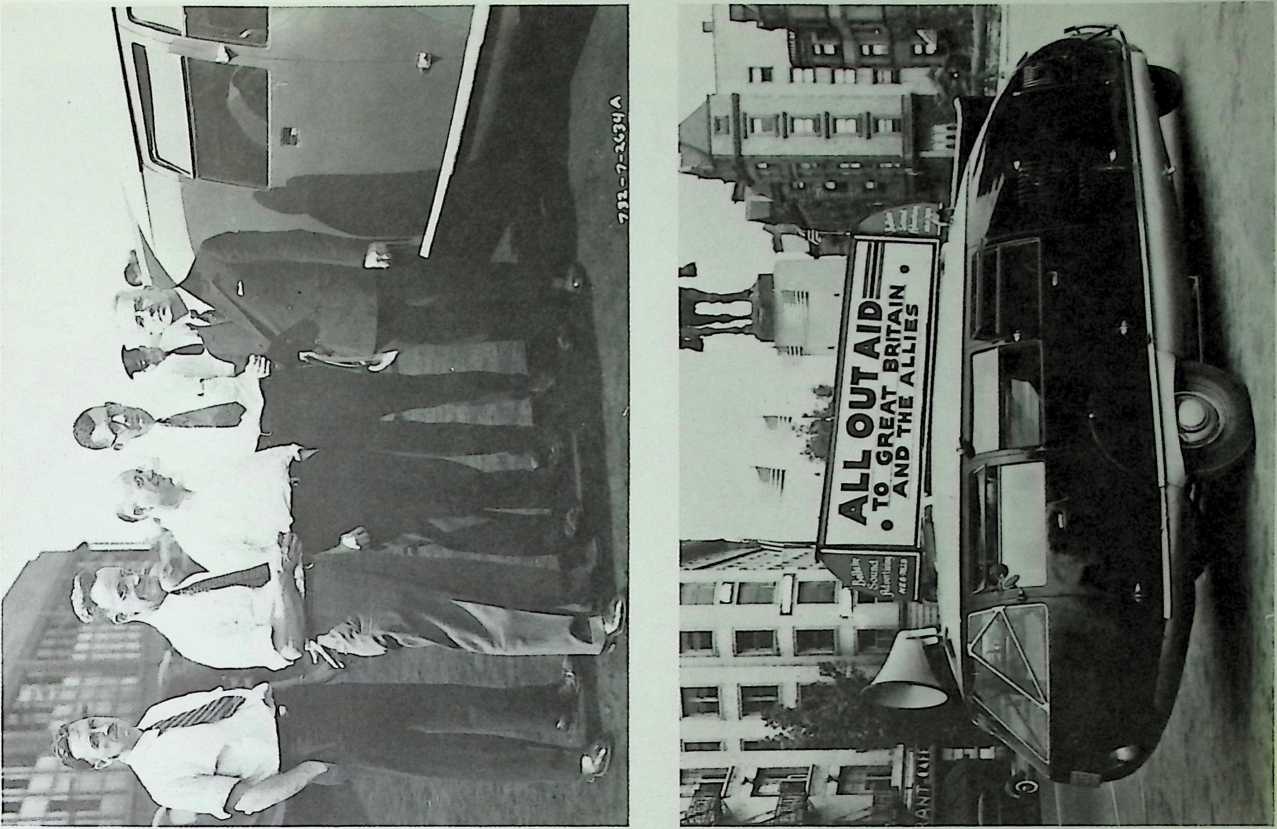
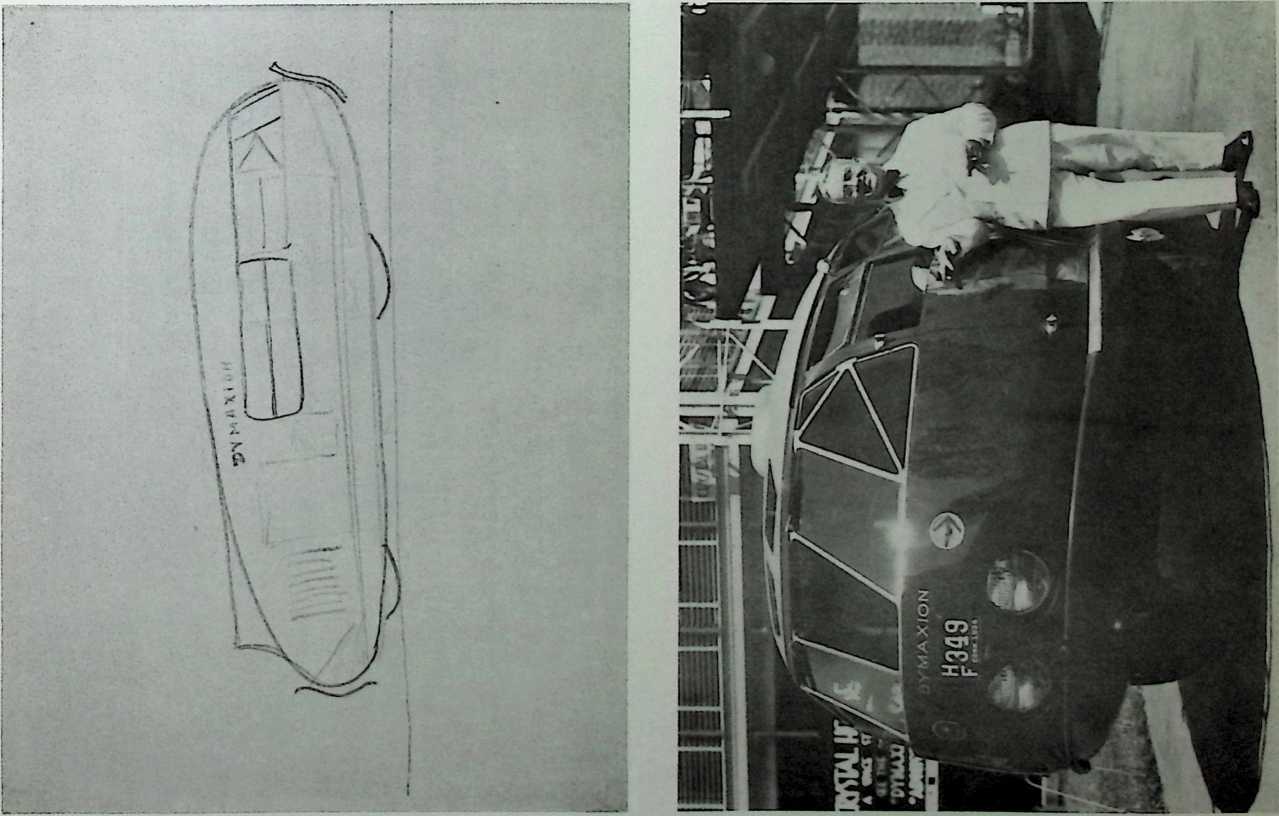
160 THE DYMAXION CARS
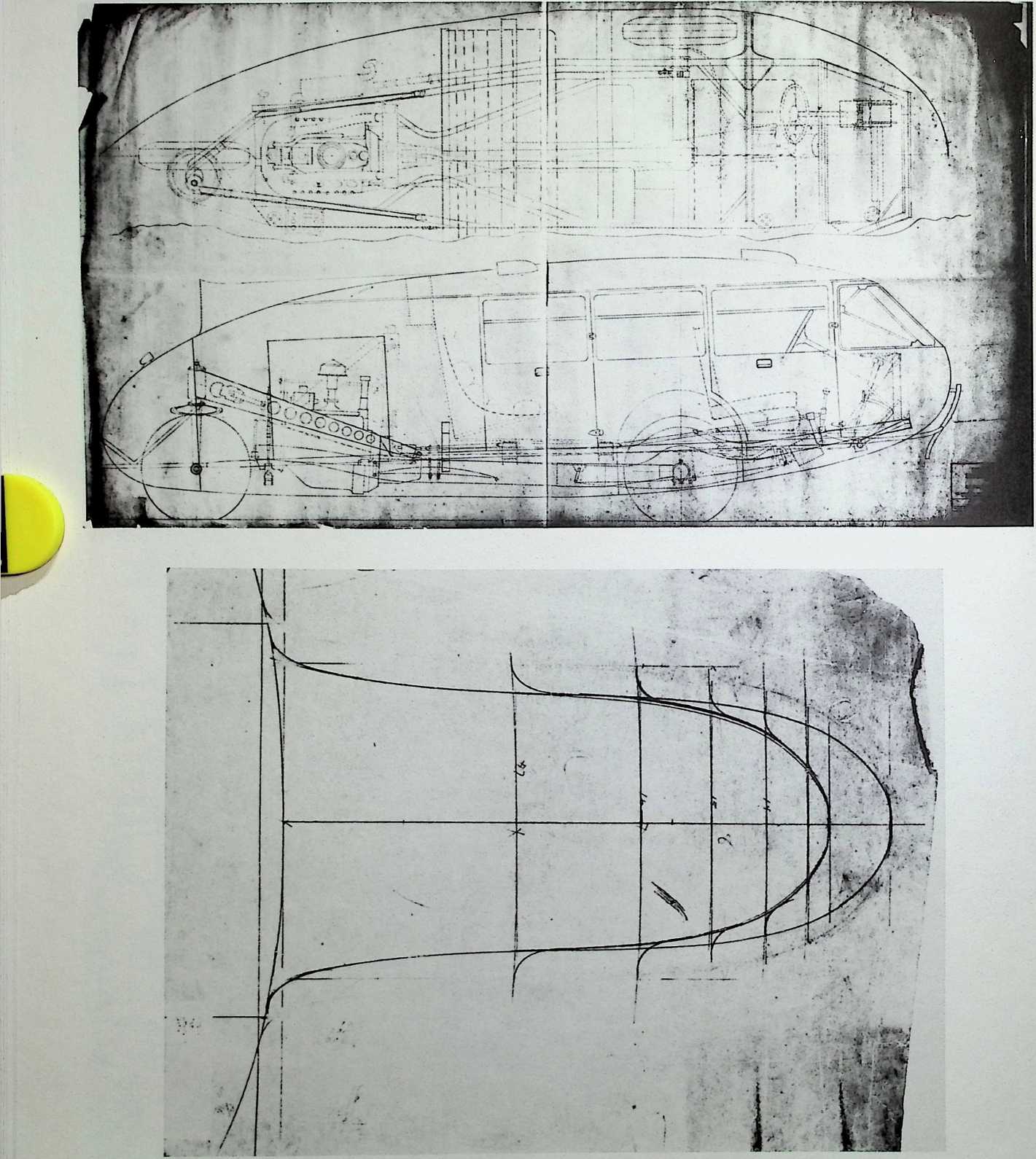
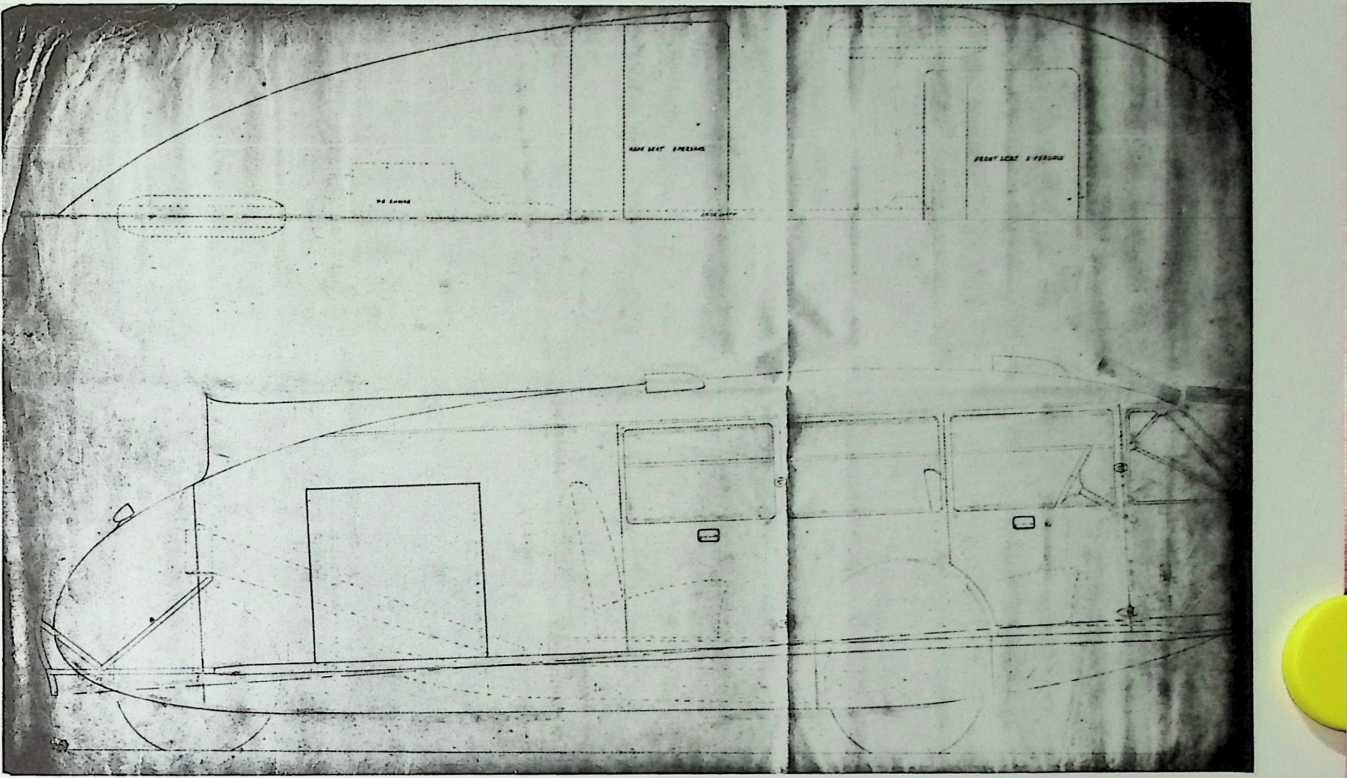
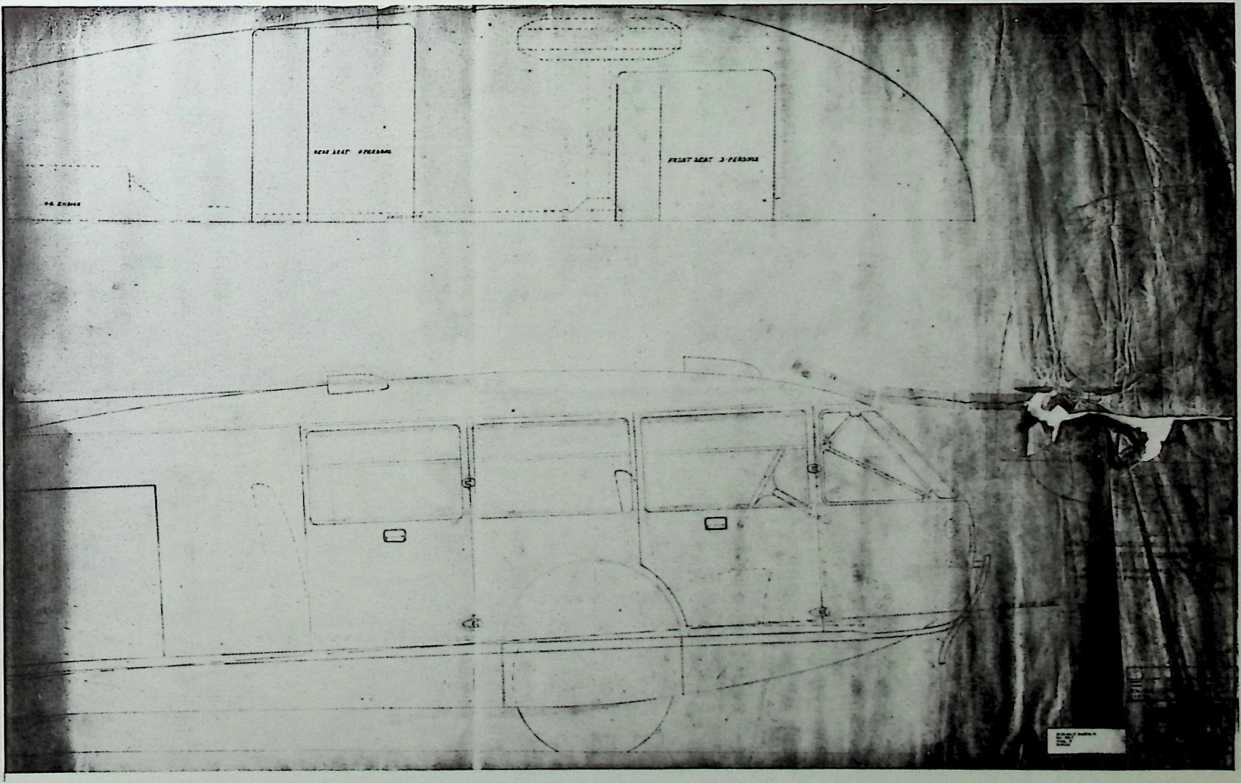
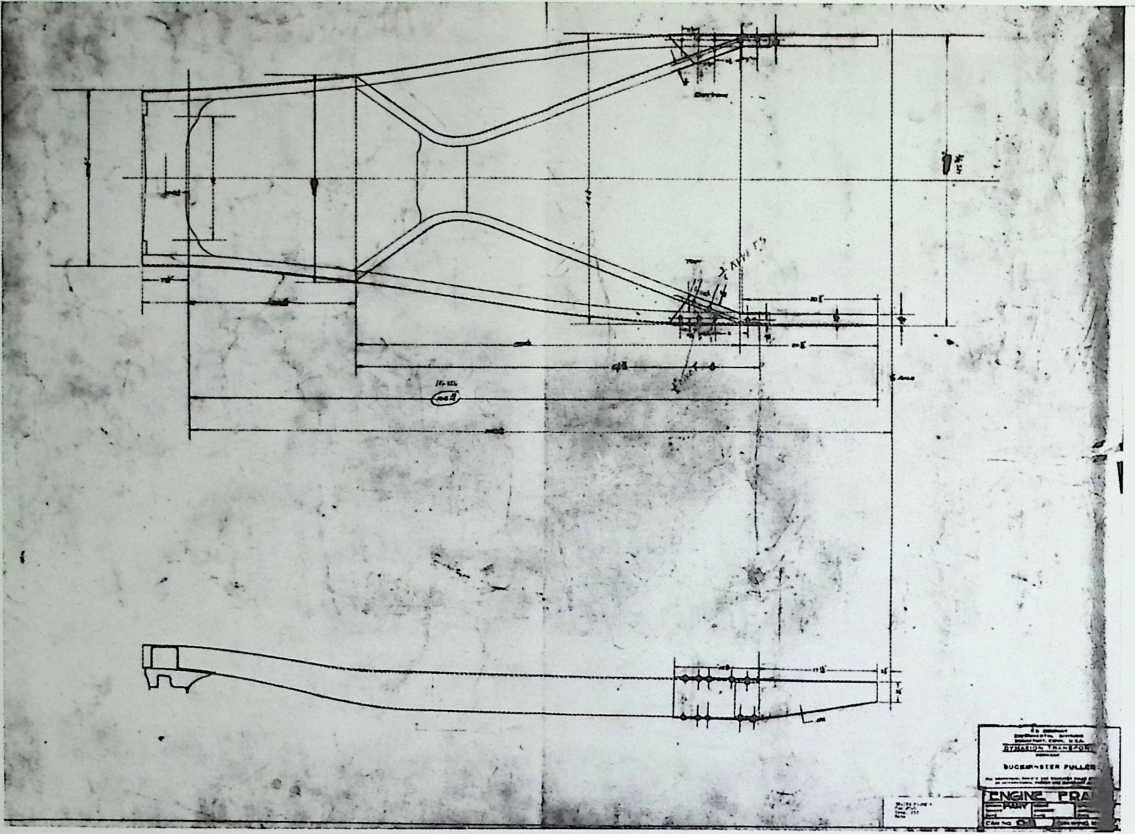
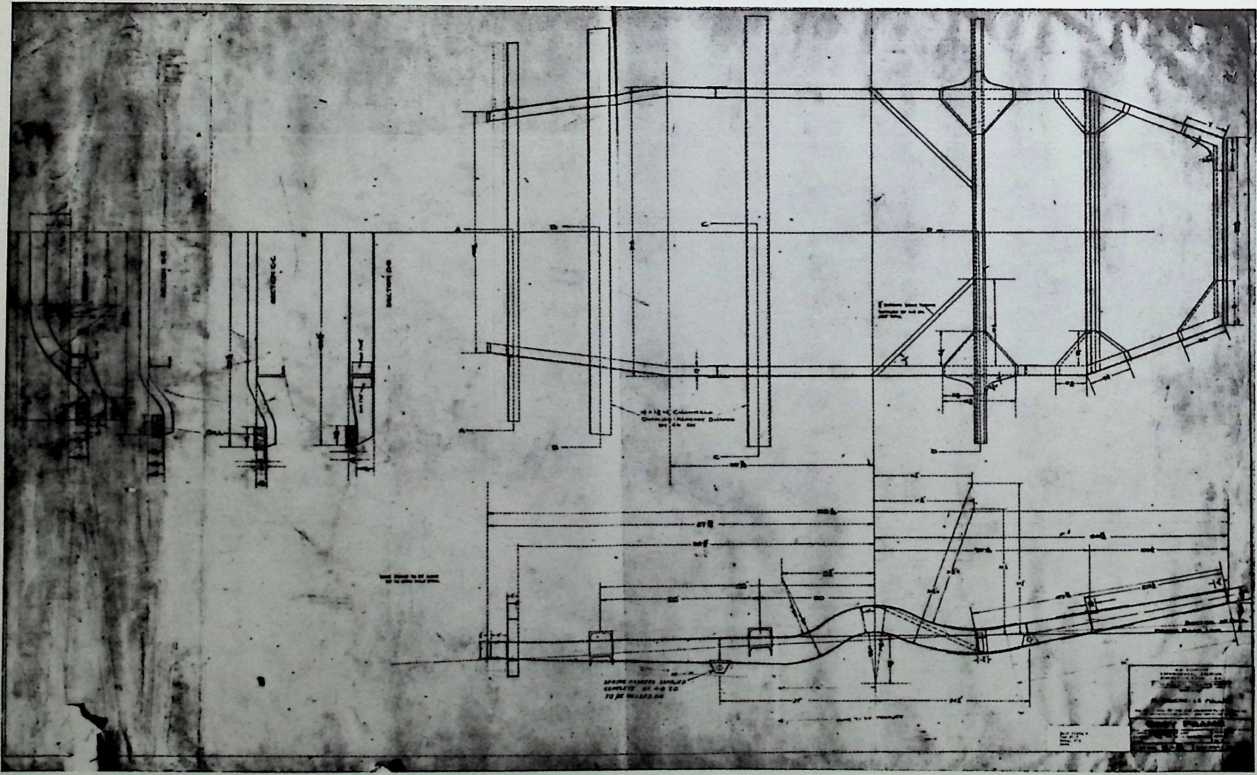
6 P De
t.MATlOH
OlflMETtflL PITCH -IO 20 TEETH OH PIHION 60 TEETH OH SEAR PRESSURE ANOLE - 14#
4 O COMPANY EXPERIMENTAL division ■AIOGE PORT, CONN. U.S.A.
DYMAXION TRANSPORT
BUCKMINSTER FULLER
|
STtEC |
‘IMG GE A |
BS |
|
DRAWN CM. |
•OLAD |
ARTNOVW |
. Car #C-5 |
CHCCKKL' |
||
|
BATE 4-25-34- |
r .r» |
OAT* |
|
CAR NO. C-5 |
| DRAWING NQ. <5
|
|
MATERIAL - CHROME NICKEL HEAT TREATED STEEL
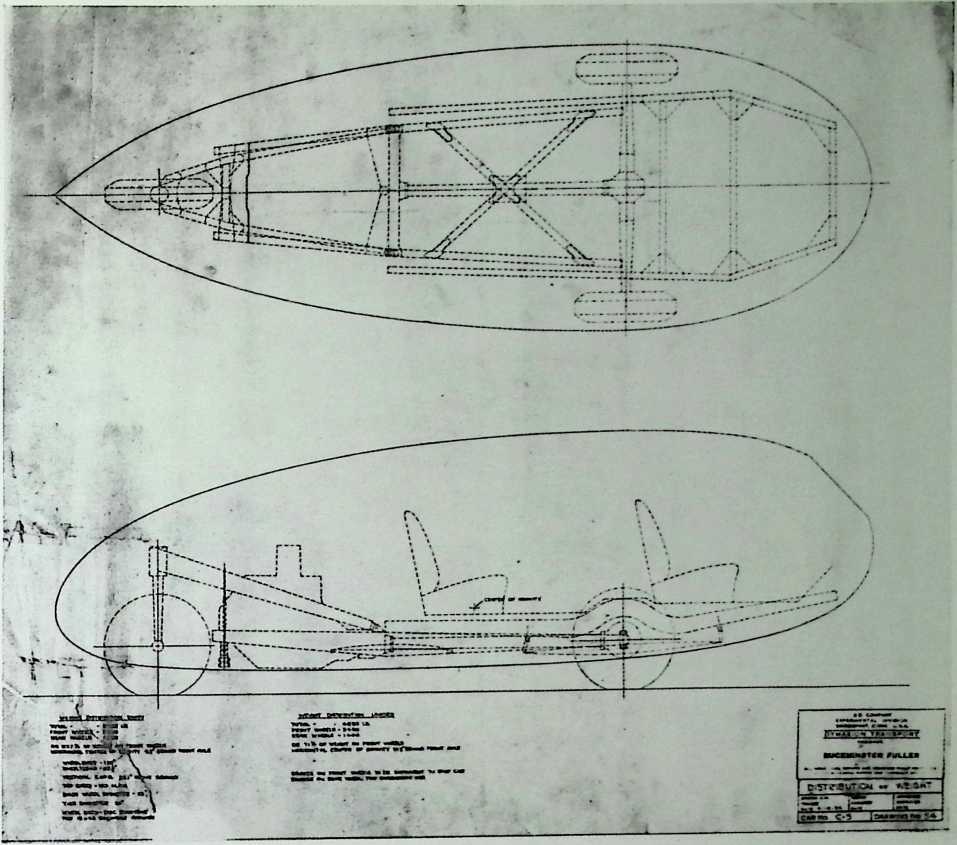
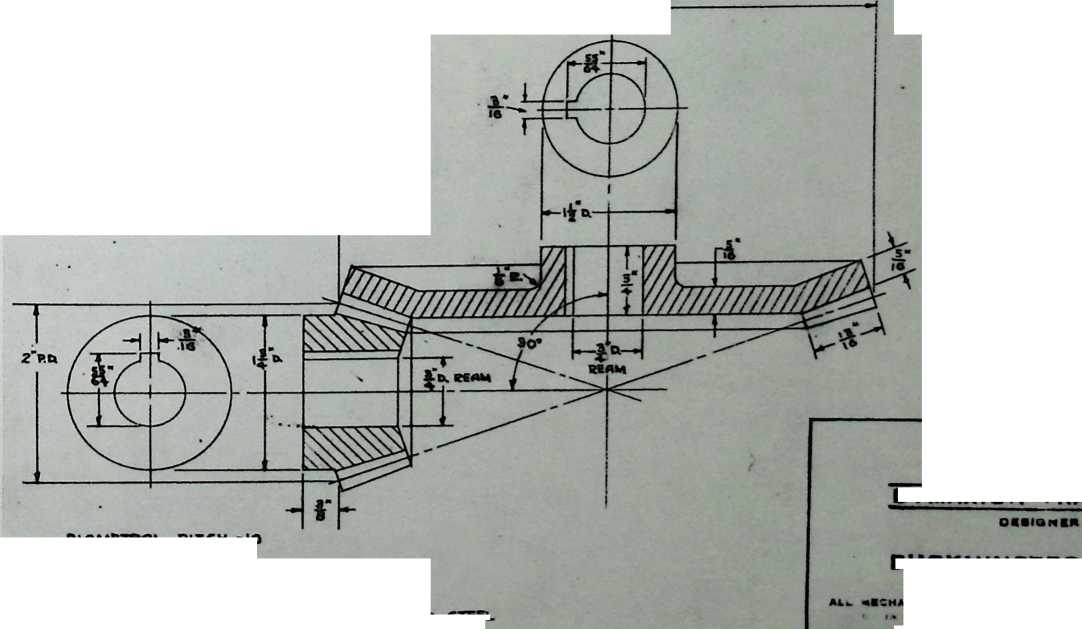
4 D COMPANY
EXPERIMENTAL DIVISION
BRIDGEPORT. CONN. U.S.A.
**DYMAXION TRANSPORT
**rbl«lONKR
C1BLB COimCTIOl » Car # Drug. #57 5-4-34
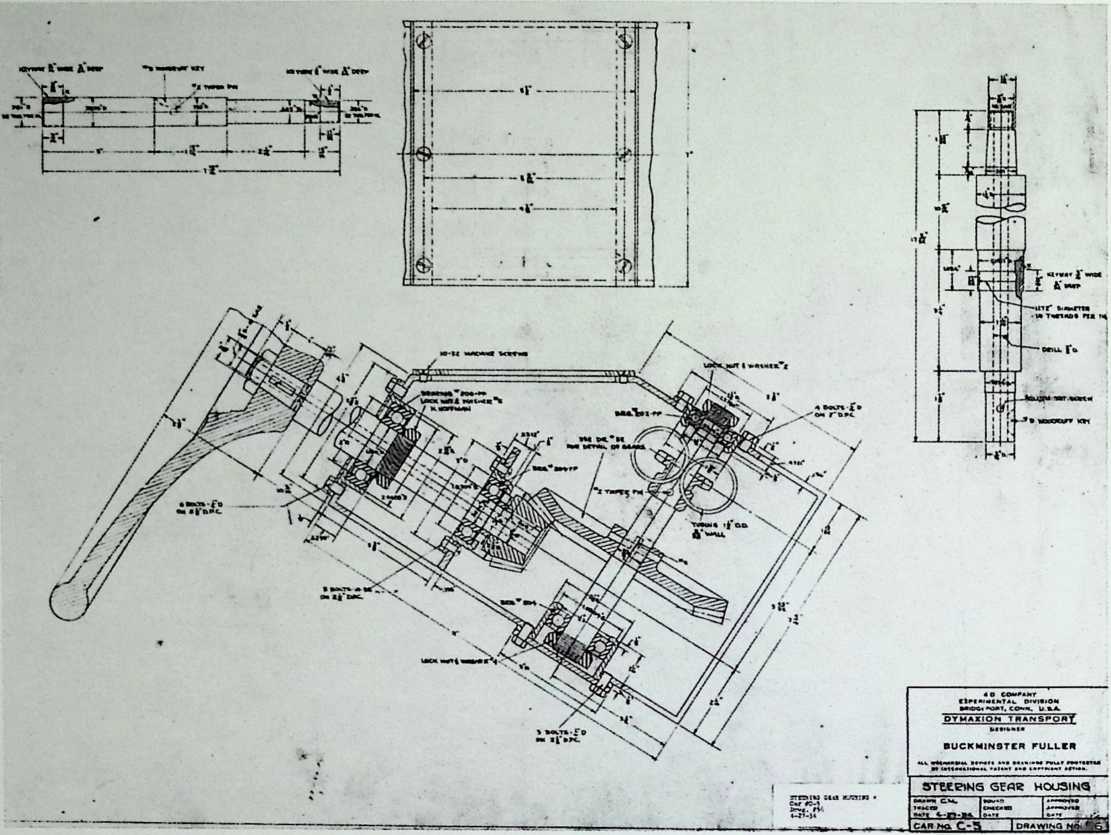
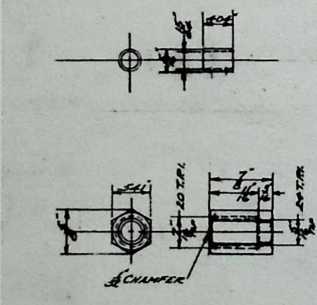
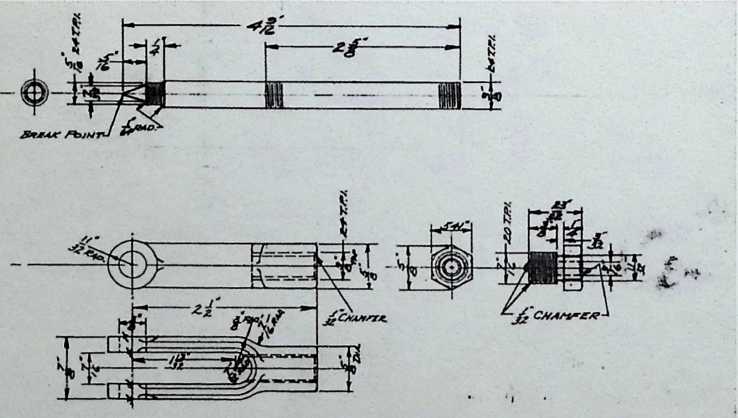
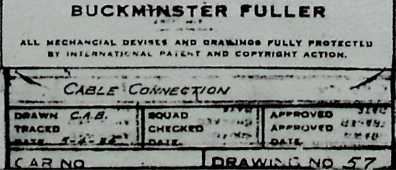
2^0X77
Ztay/ro
4 **D <_Omp**.v
**EXPERIMENTAL. OiV* ion
BRlDGf^ORr. COhN. L.i a
DYMAXIO . .?• £V)WT
DtfSlteNKM
BUCKMINSTER FULLER
FAN MOUNTING Car if Drug. ^59 5-3-34
Z^/>> /*tfoMrrv<ia
;OR*Wr>vV^ ^9 .


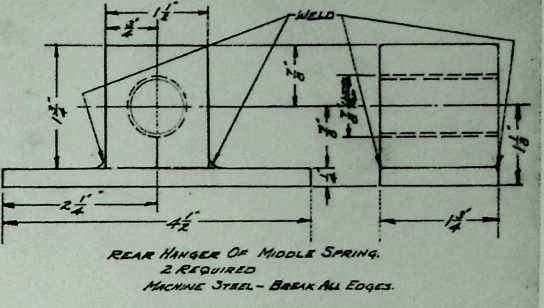
![]()

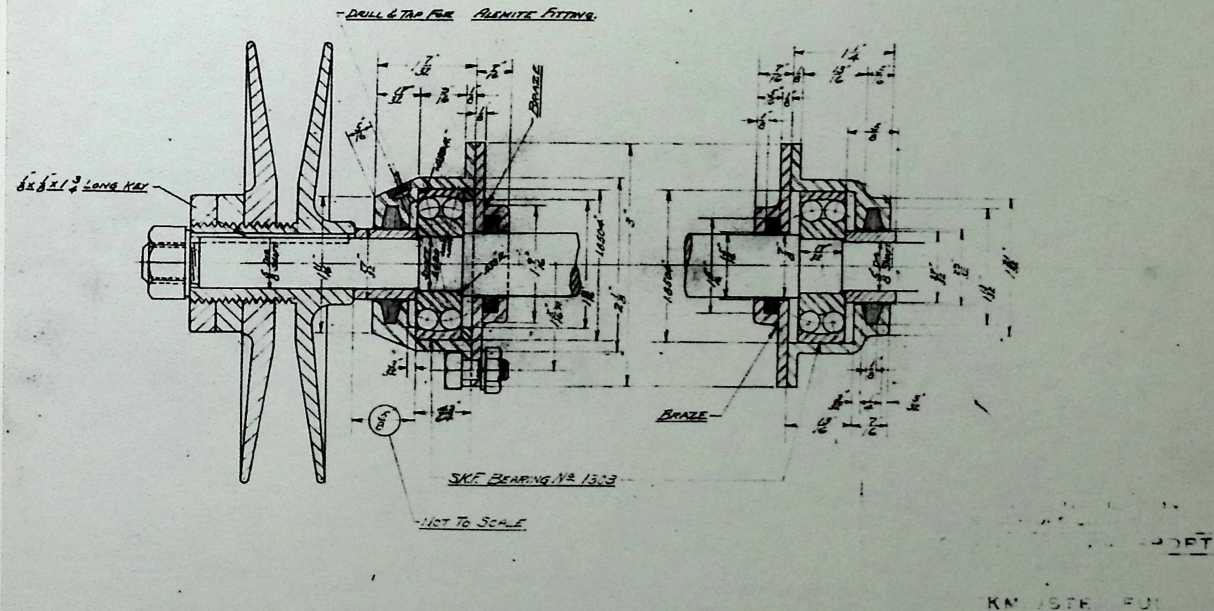
![]()
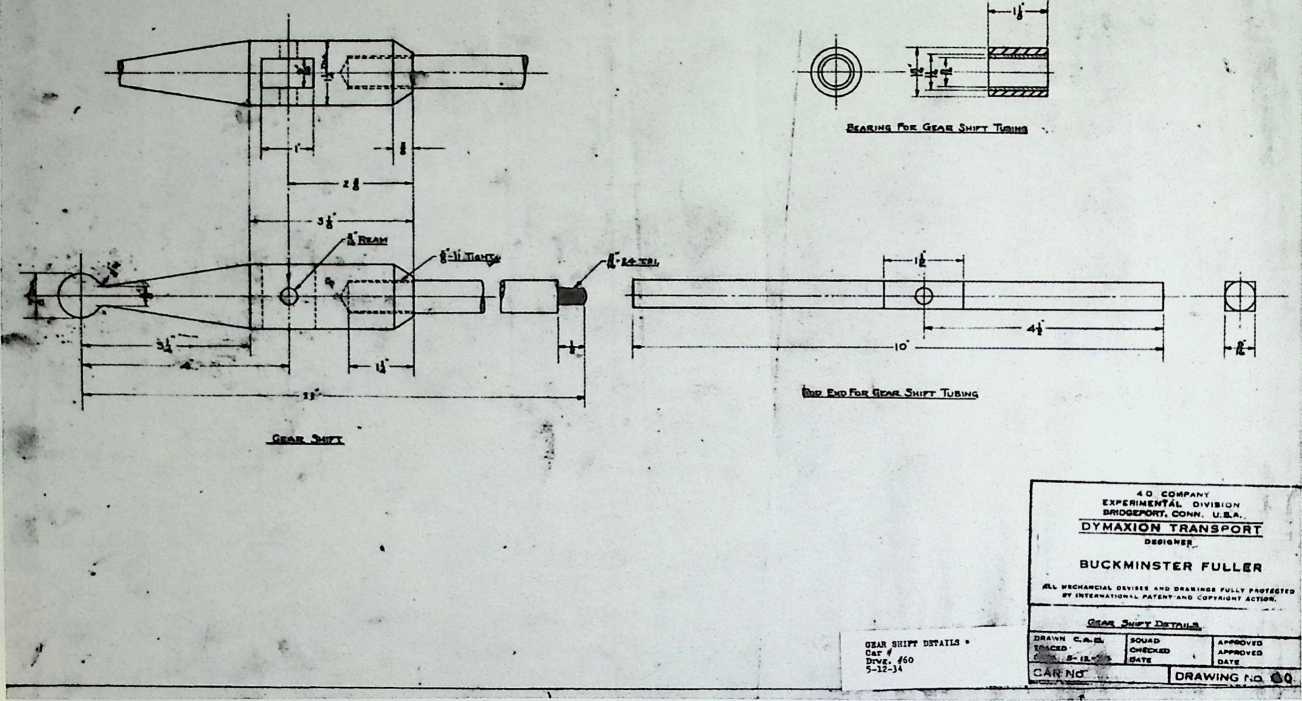
![]()
![]()
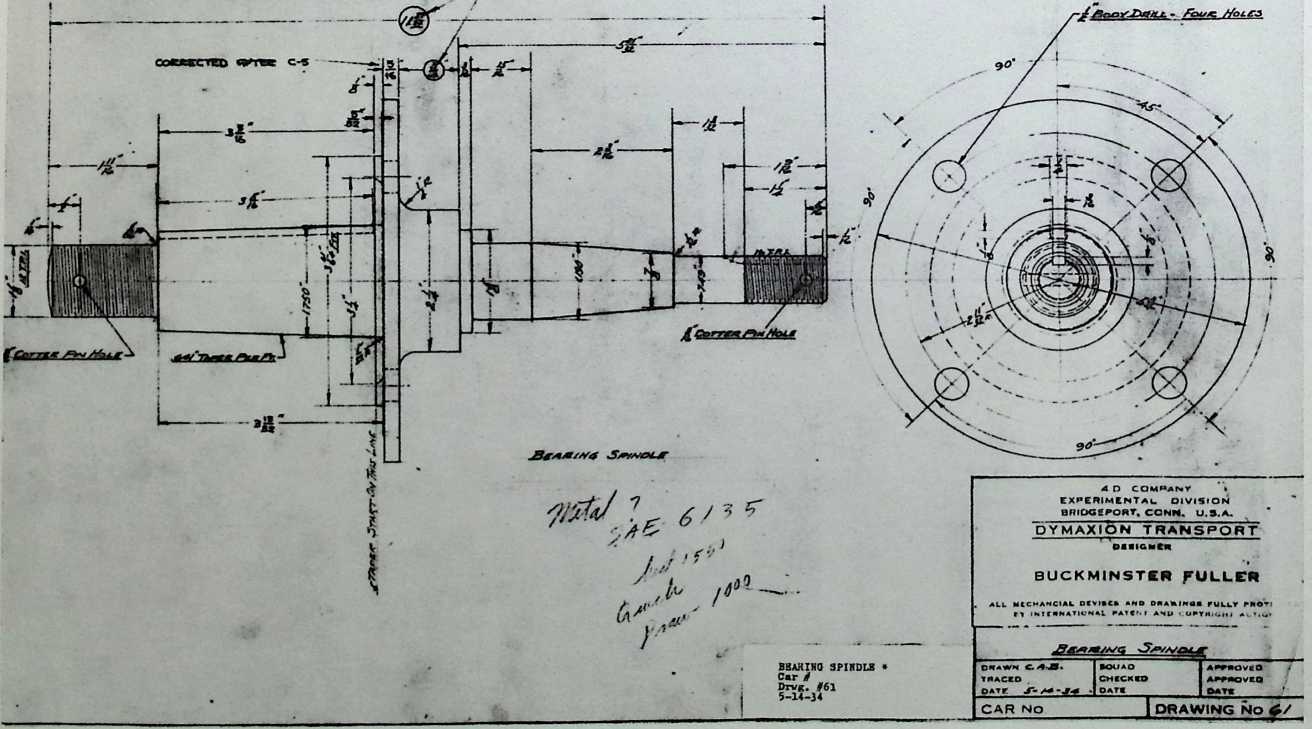
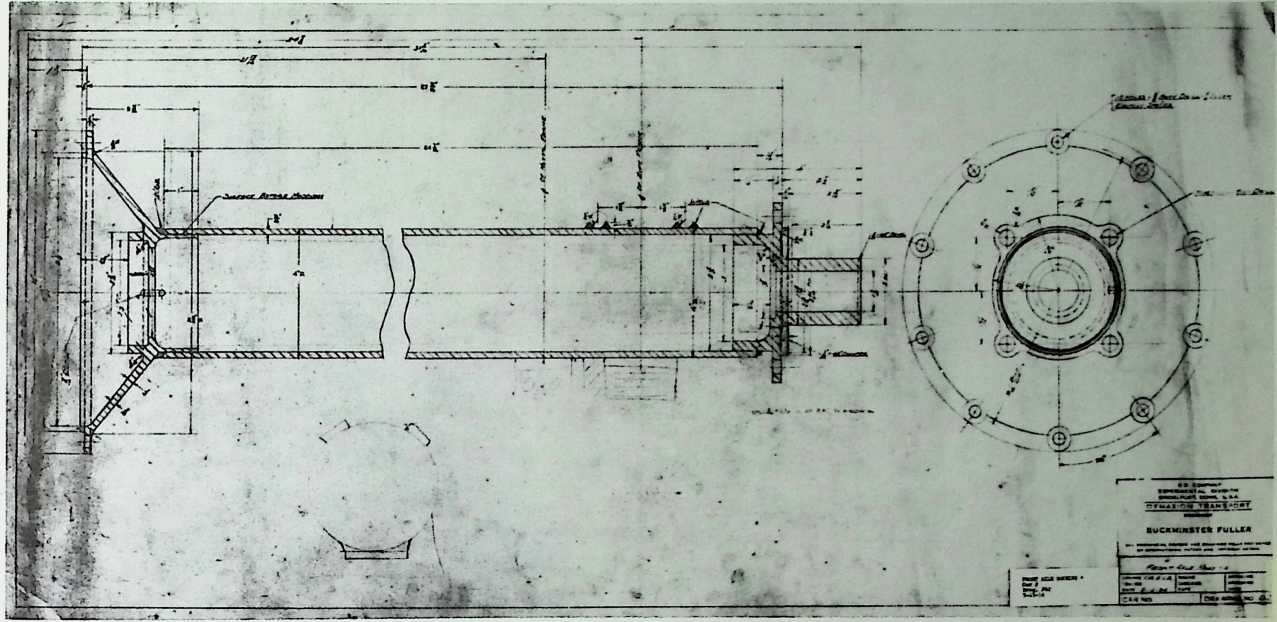

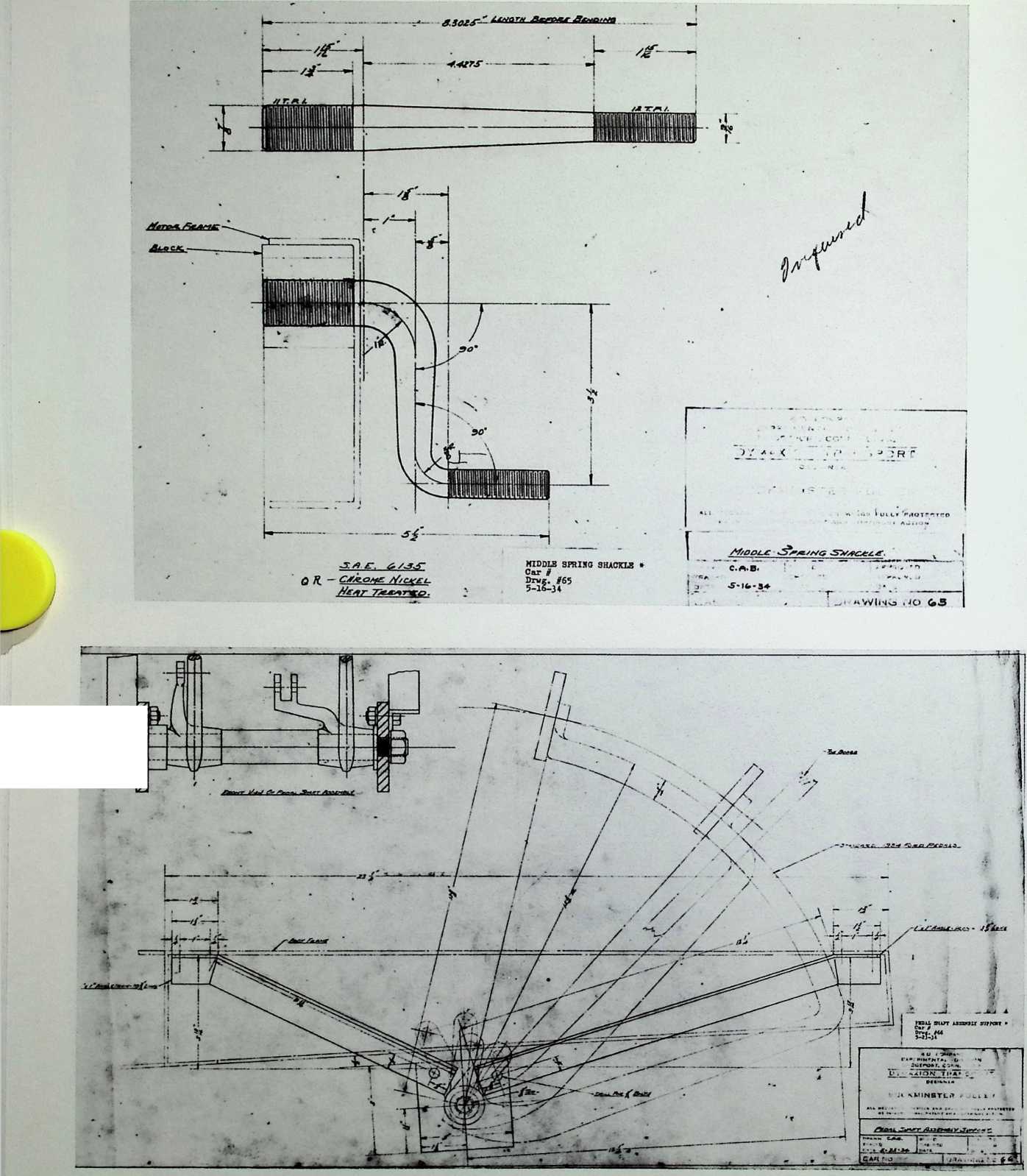
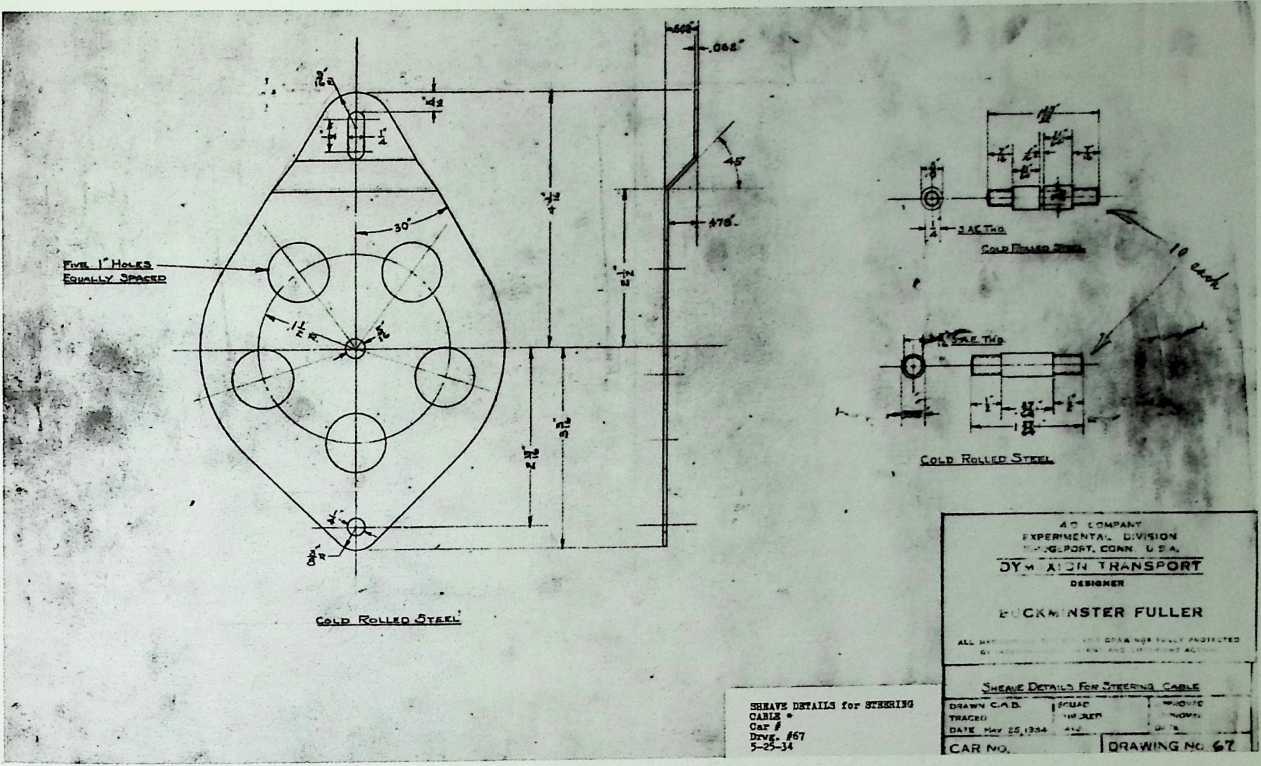
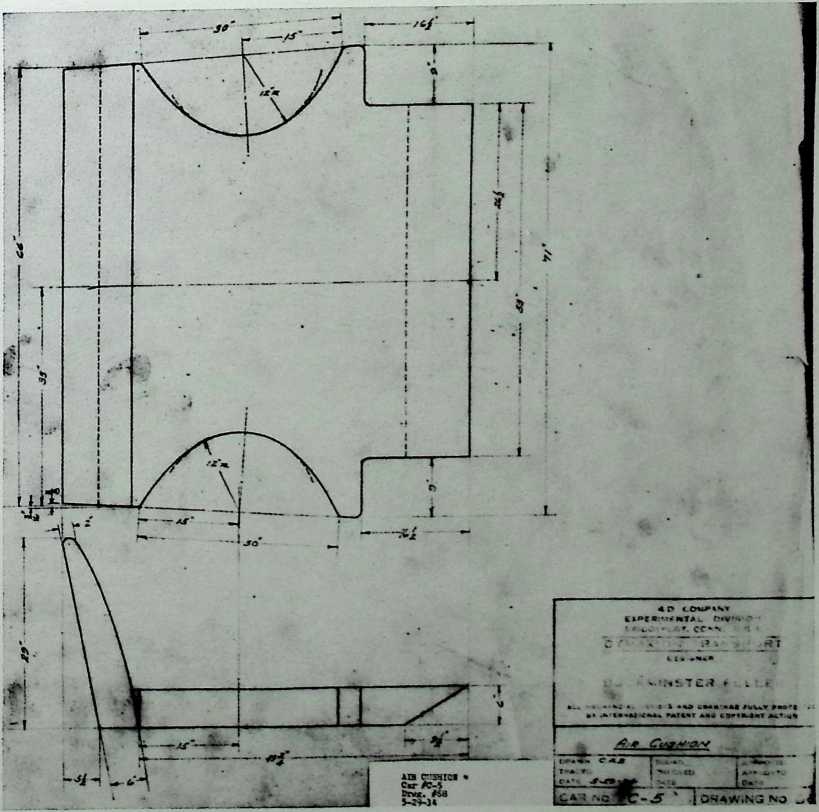
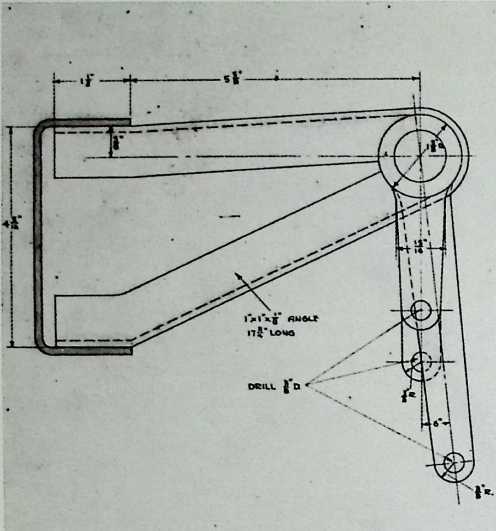
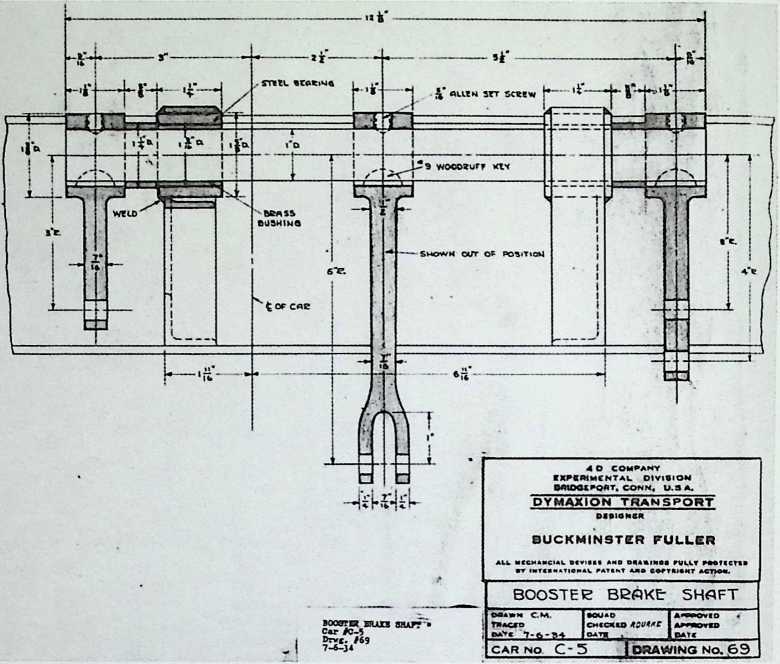
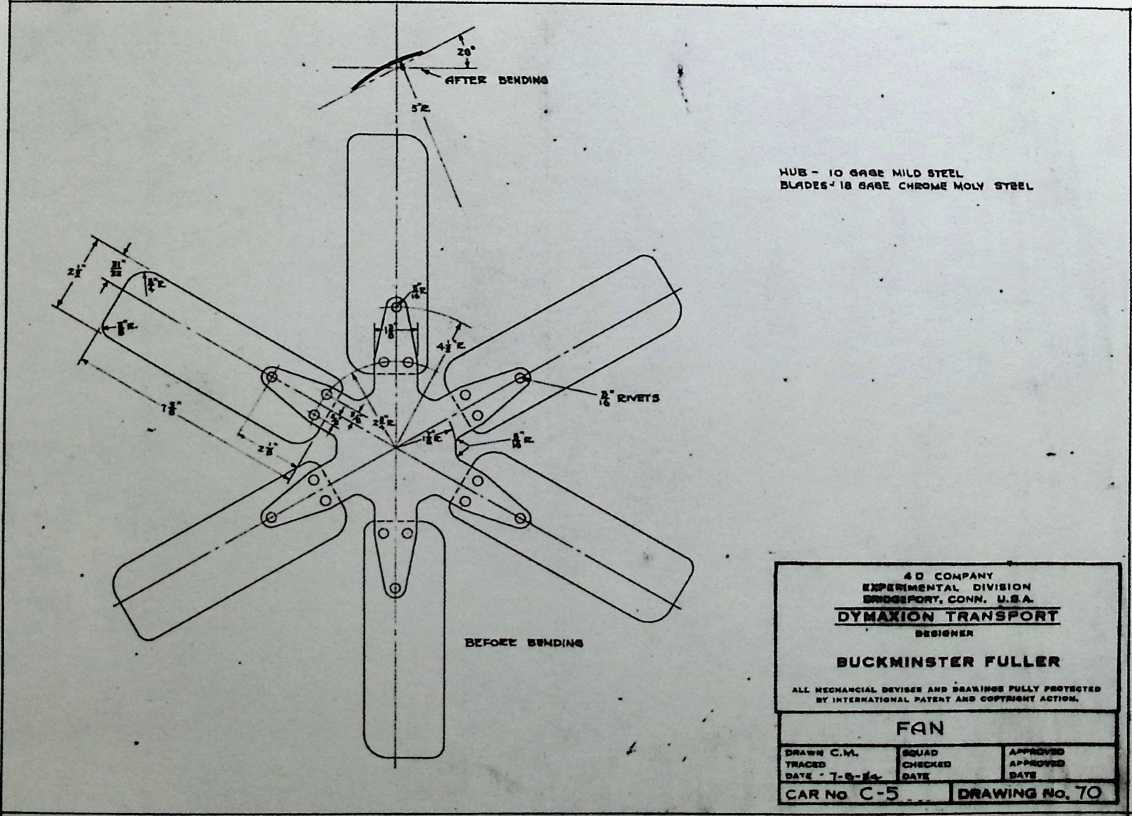
¶ Chapter 21 Dymaxion Tudor Sportster 1934
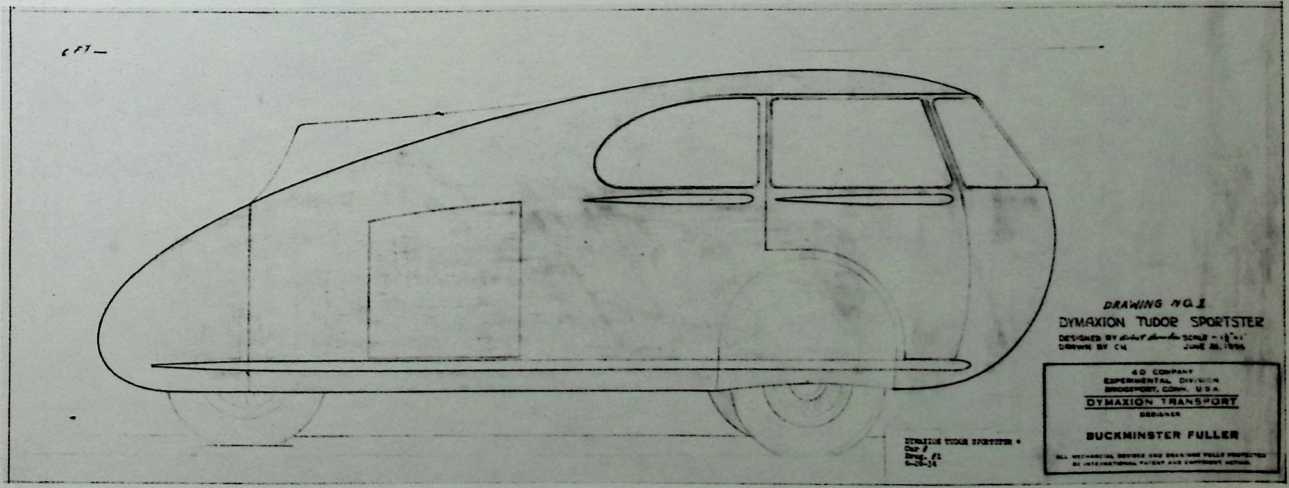
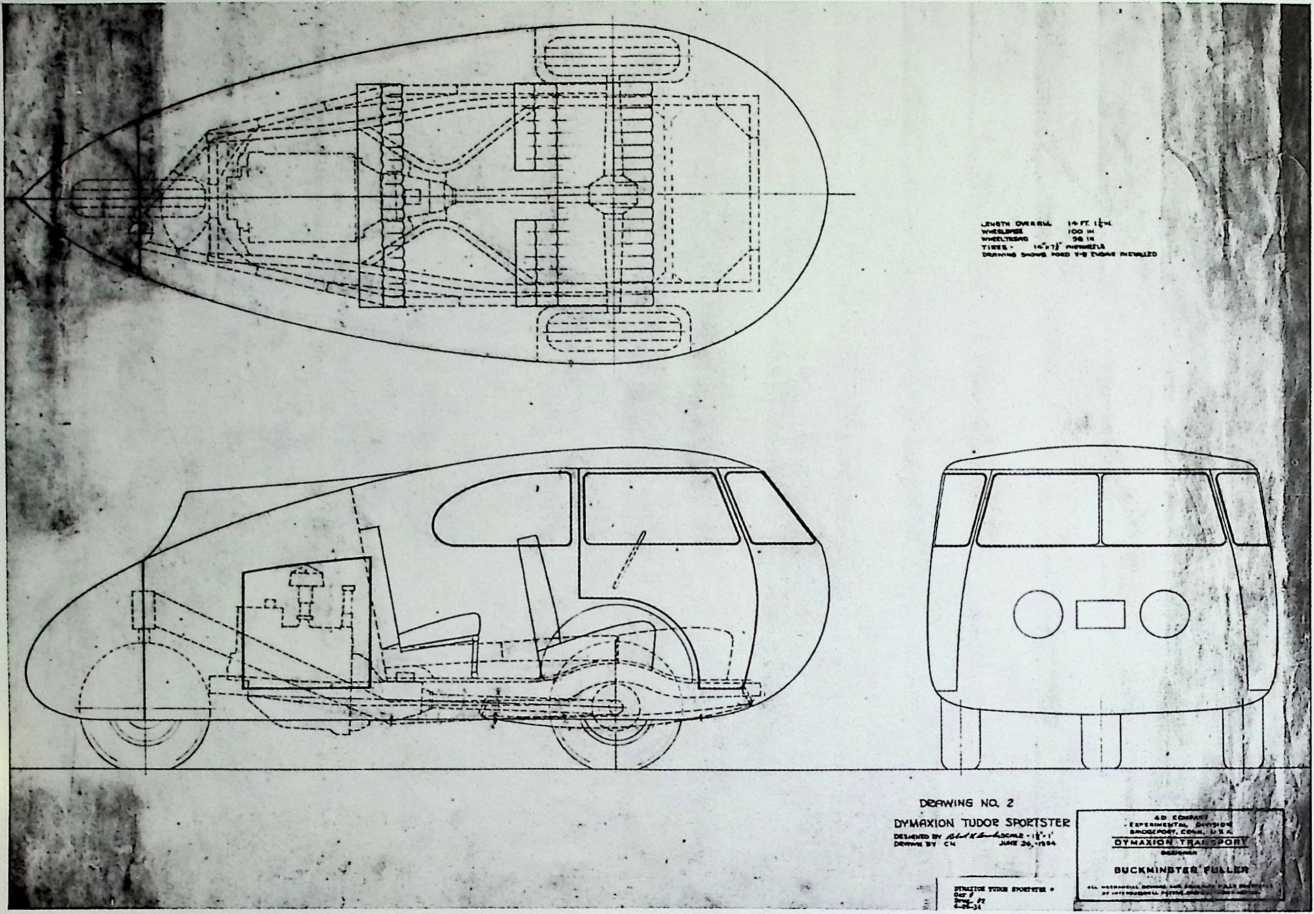

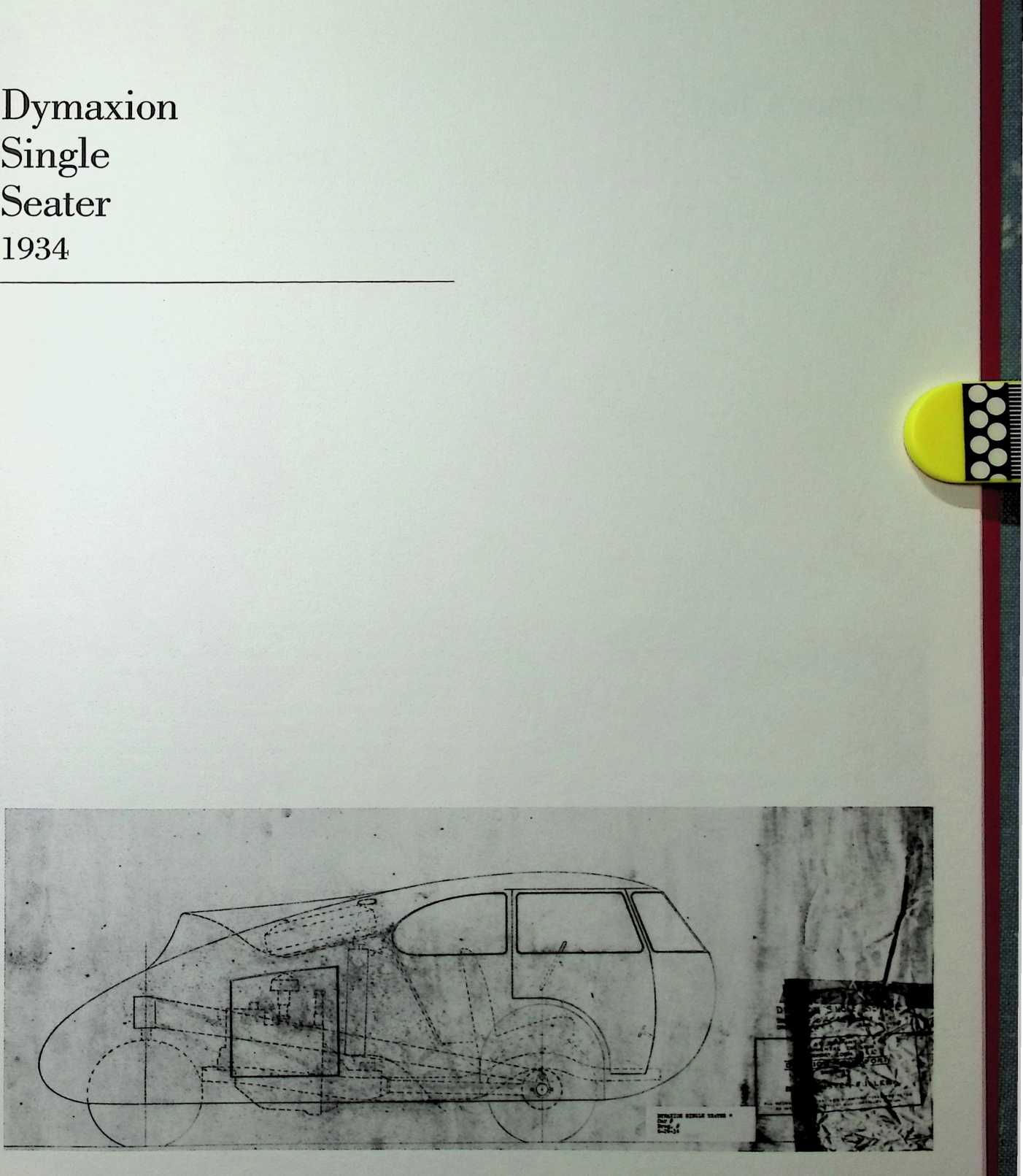
¶ Chapter 22 Leonard’s Taxi
n.d.
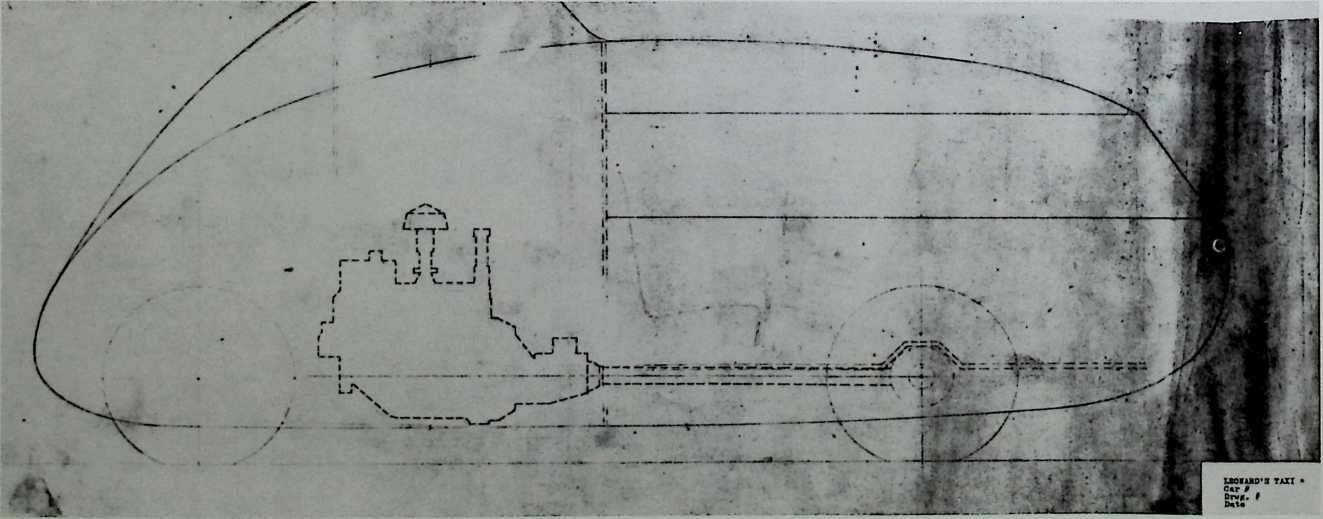

Proposed D-45 for Henry J. Kaiser 1943
With the one-half-pound-per-horse-power gas turbine coming of age, the trend is to re-explore promptly the possibilities of earth-bound vehicles. Pictured is the latest Buckminster Fuller Dymaxion, featuring coupled-steering of all three "duo-tired" wheel assemblies. Each wheel assembly contains its own gas turbine. The fuselage is suspended by three gircraft type vertical aerol struts, and has a retractable rear wheel tail boom for lengthening wheel base at speed.
It is seven feet wide and ten feet long (contracted) with cross-wind "fairing." It has a seven-foot driving divan, convertible into a large bed. It may "revolve into" half the parking length of present cars. The top is a convertible aluminum watermelon type. It has a faired belly with high clearance for field work, will "gun" high speed turns without skid.
Weight 960 lbs.

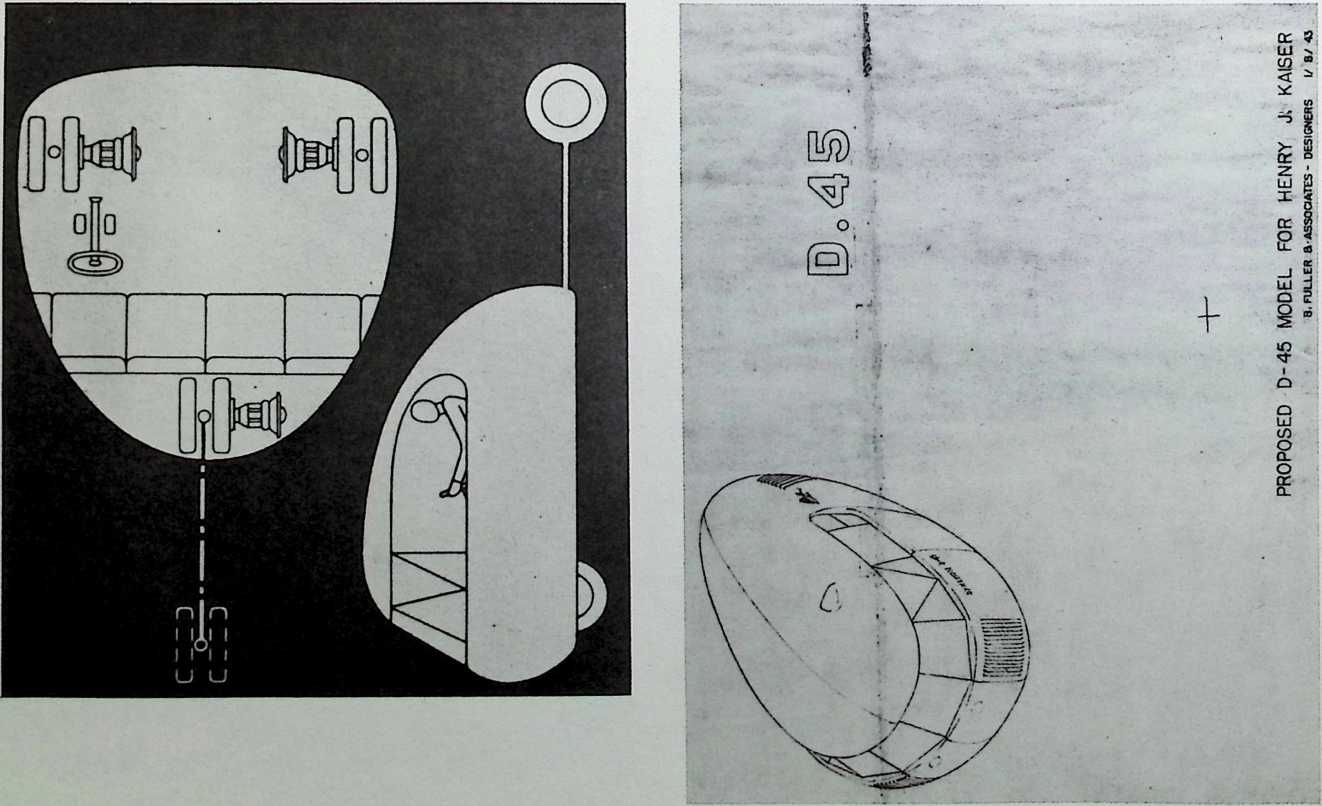
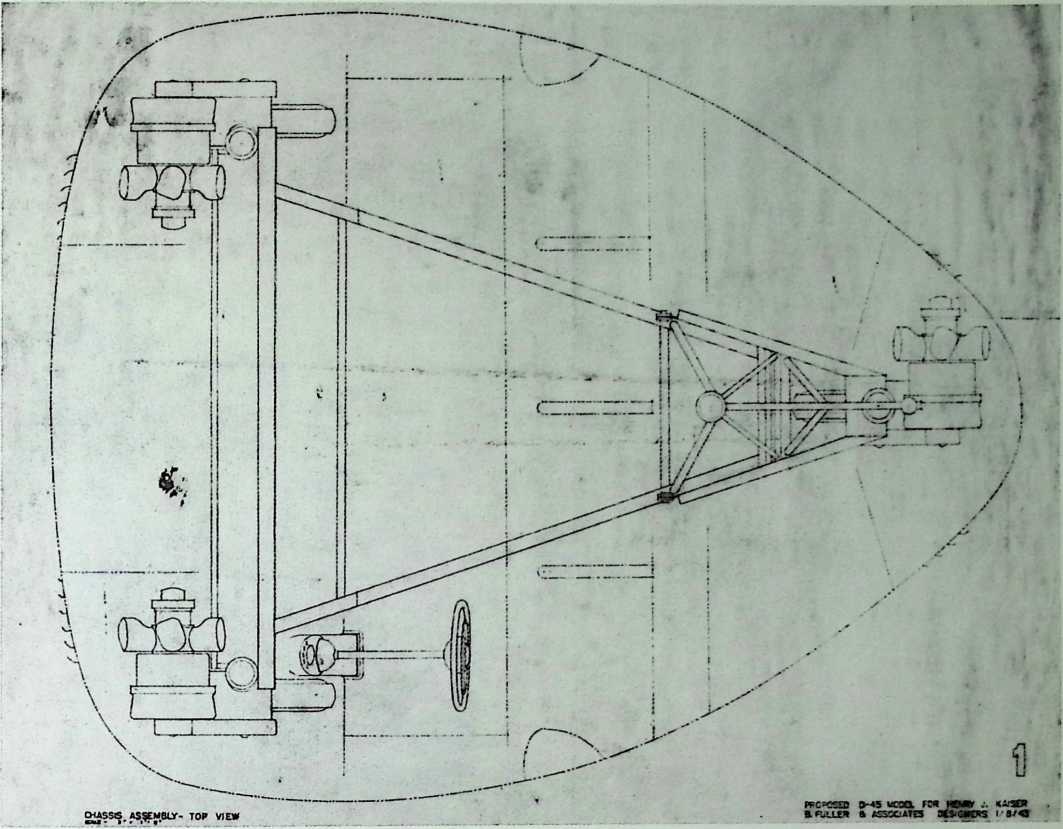
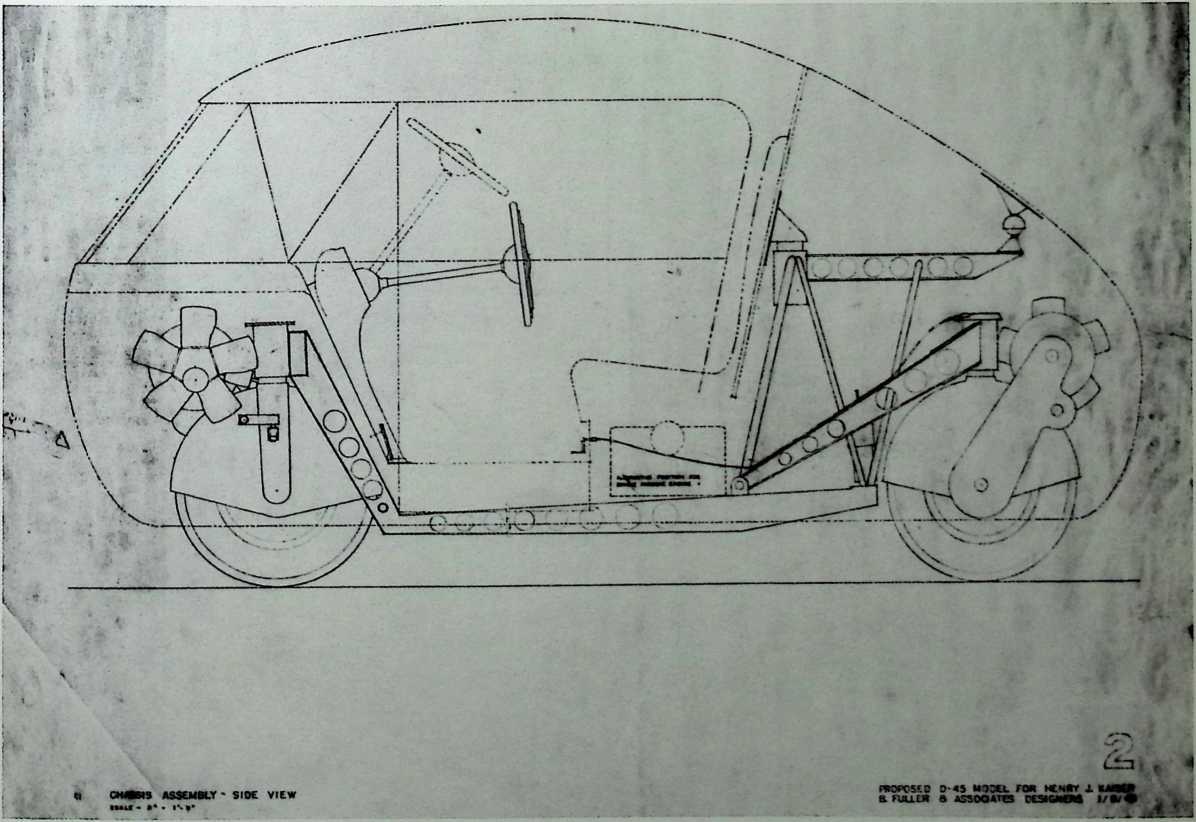
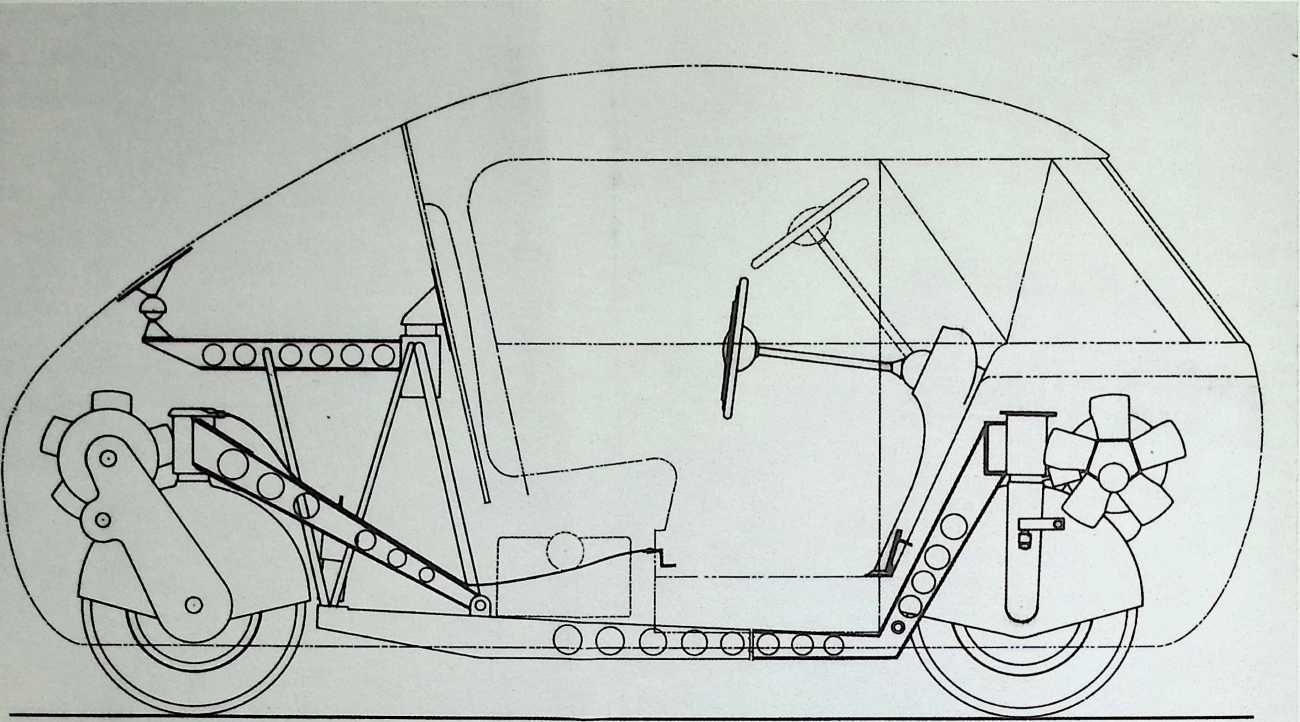
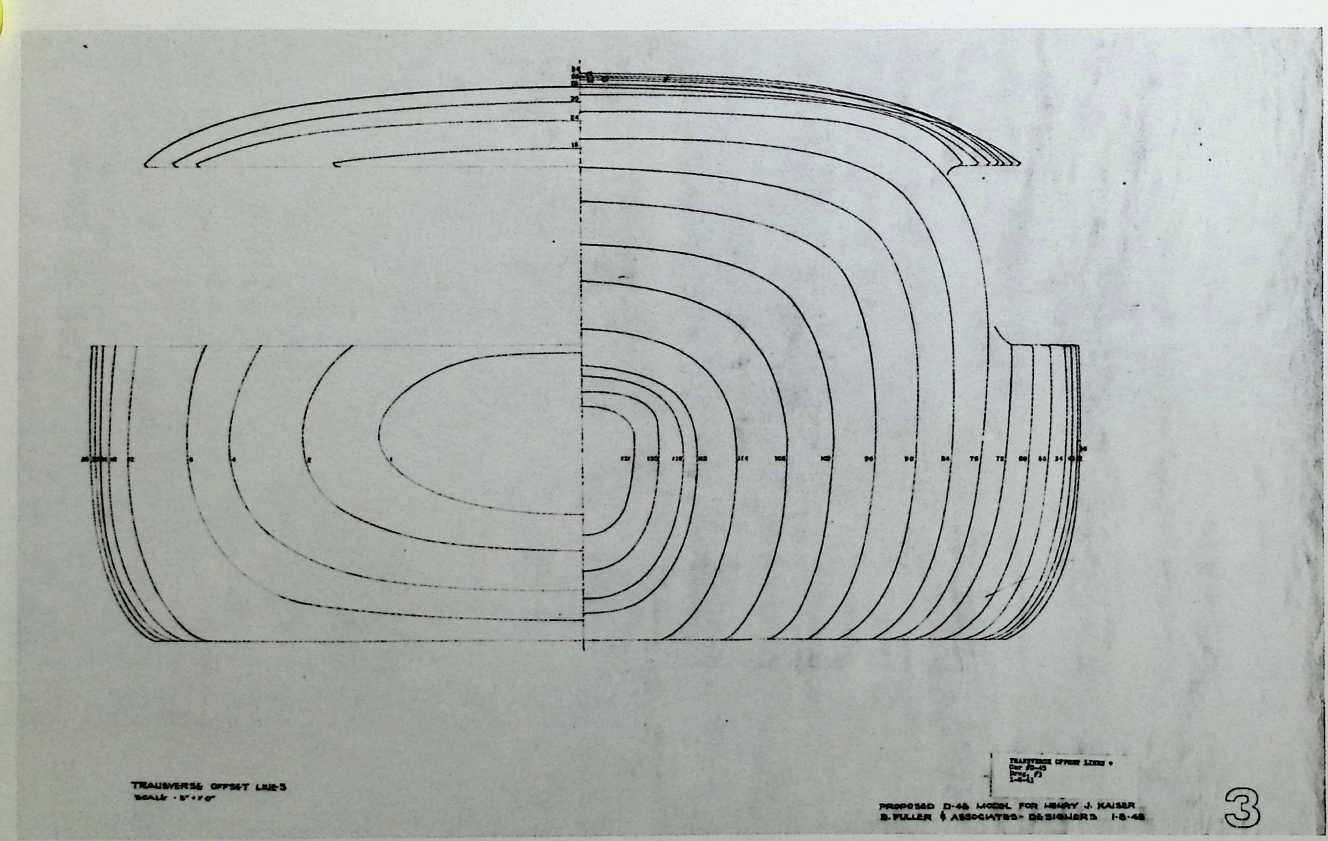
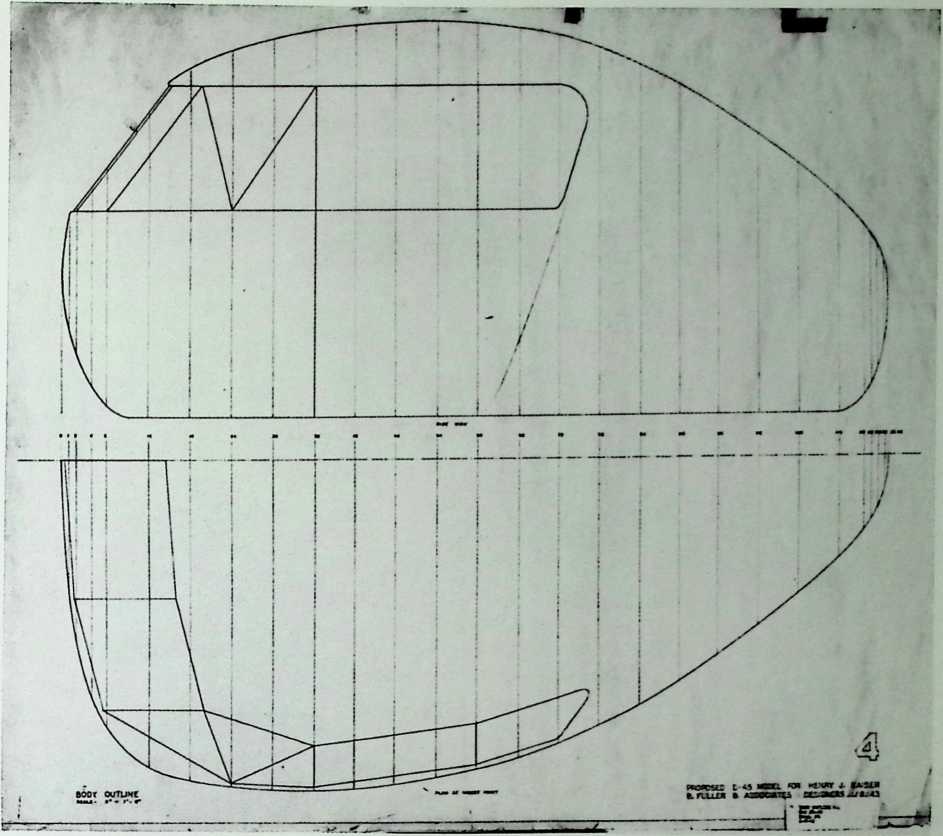
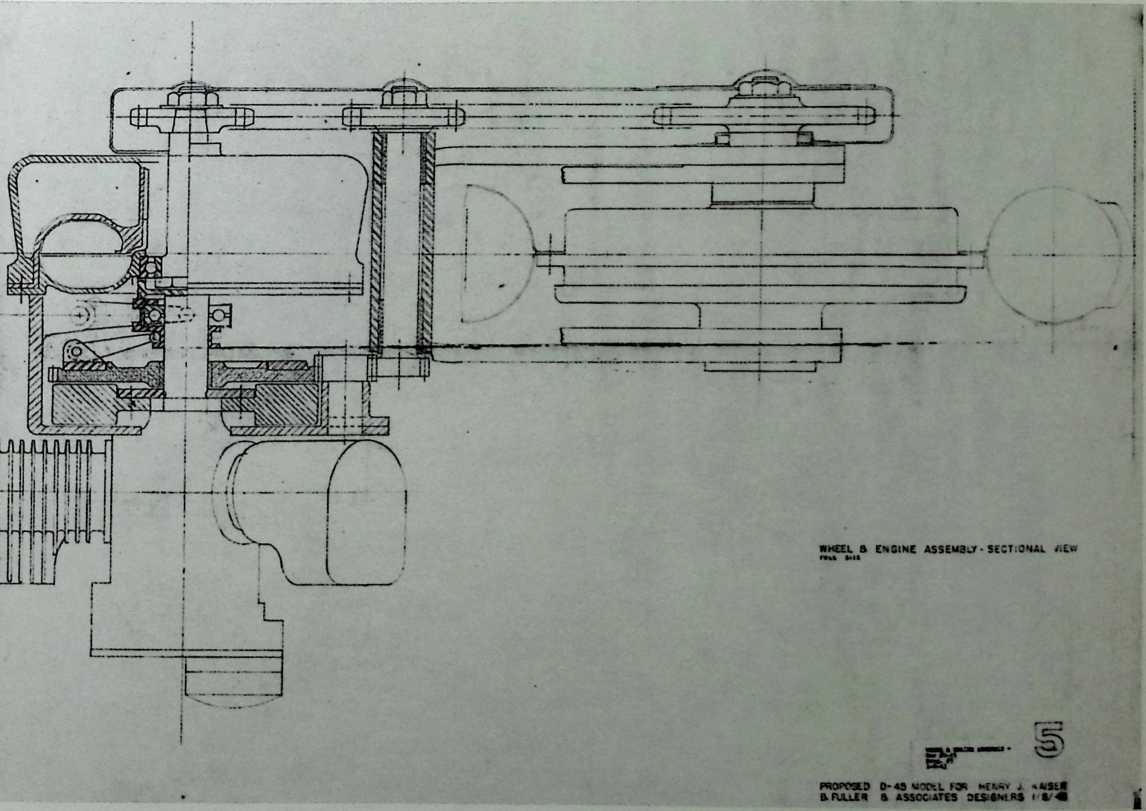
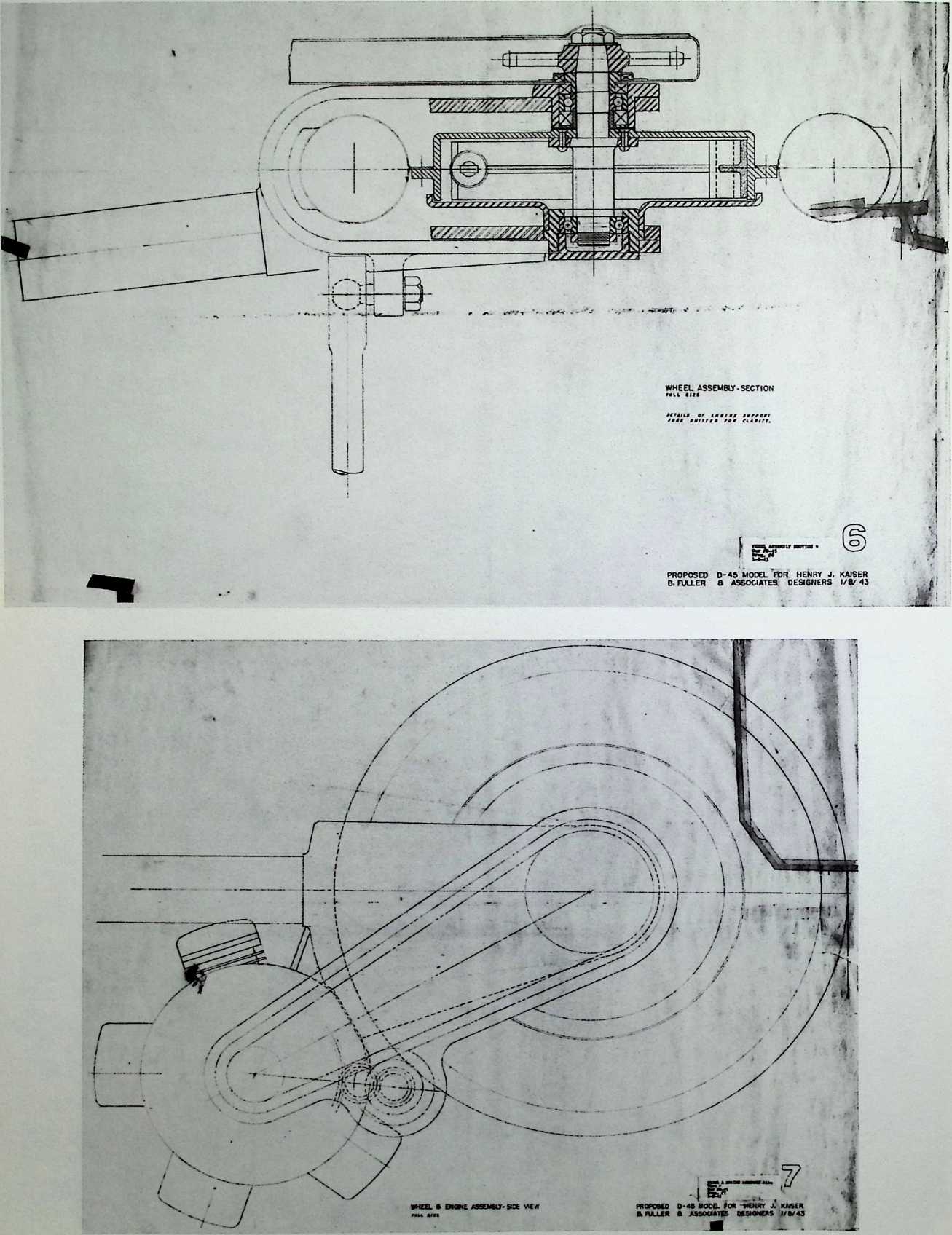
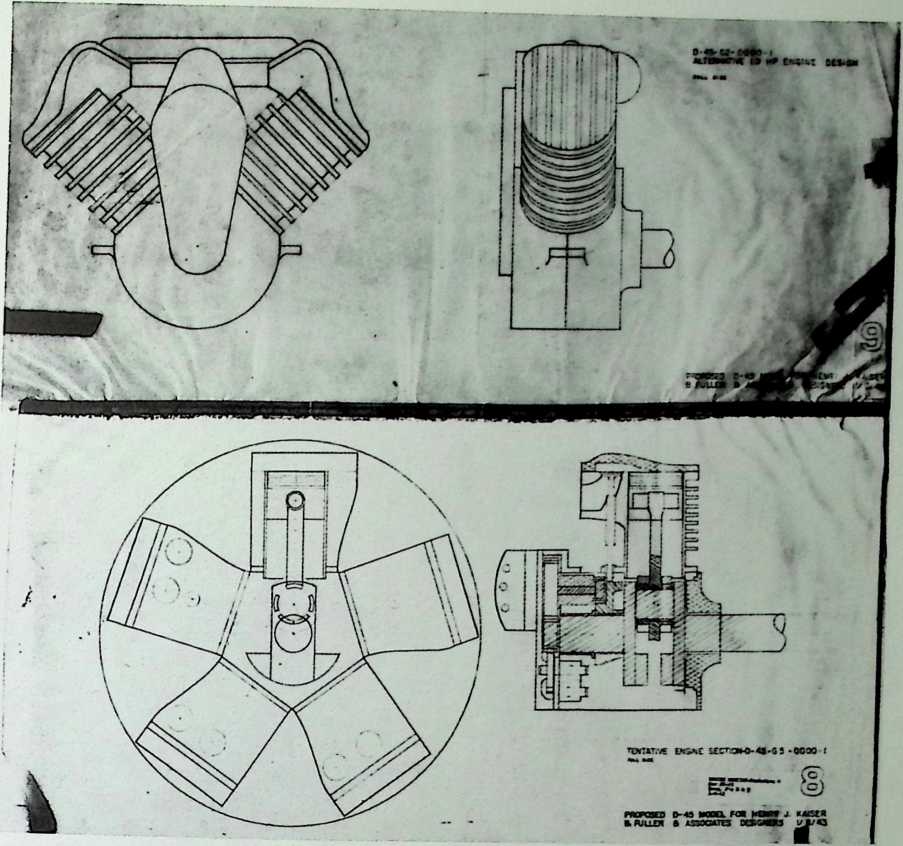
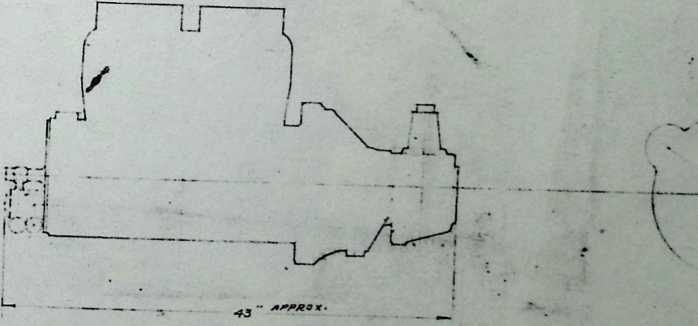
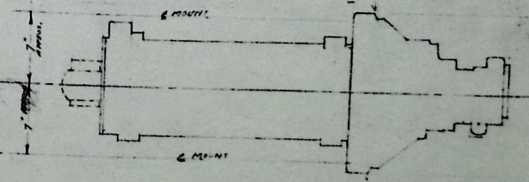
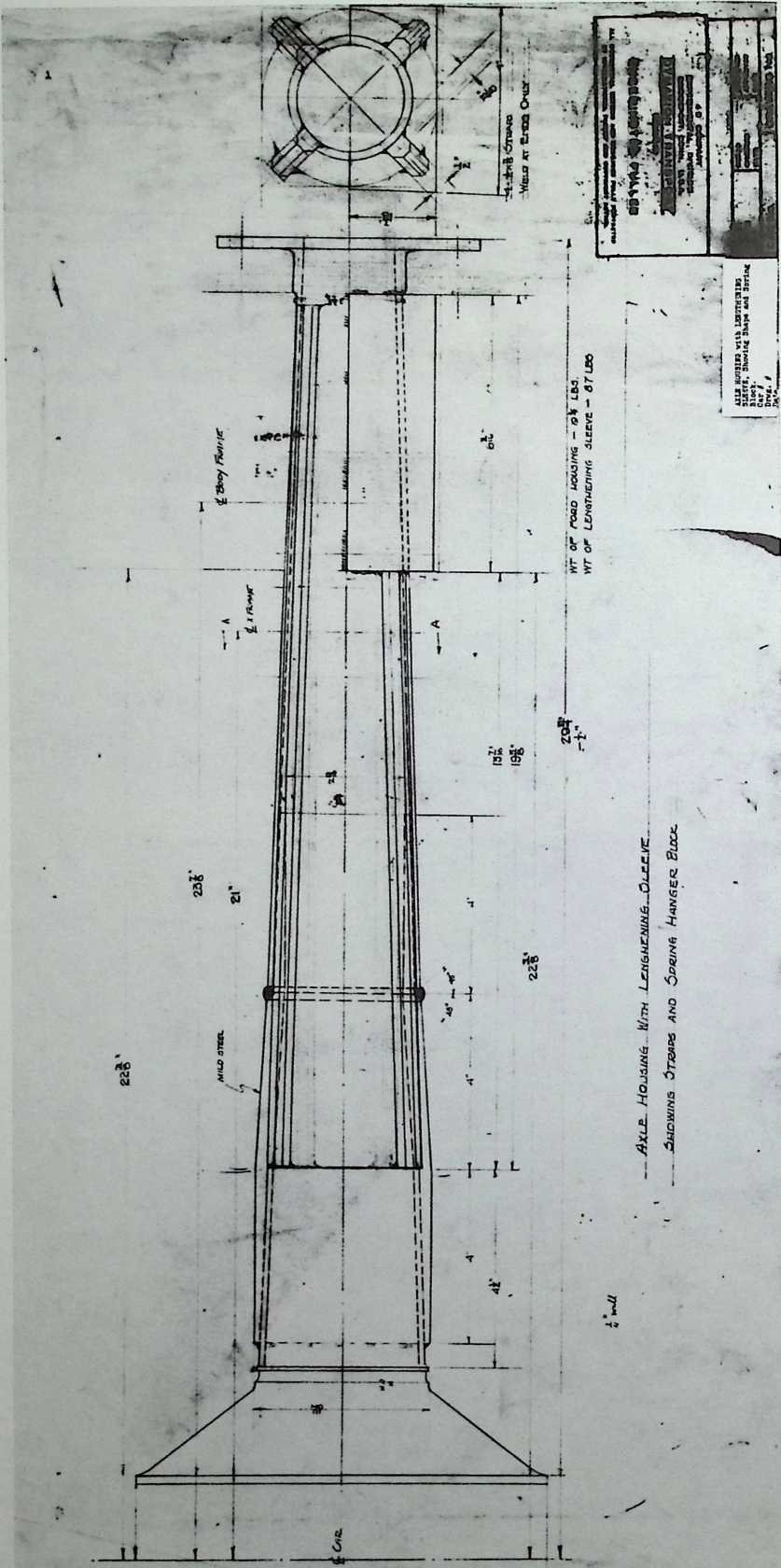
Air Frame Vertical Aero Struts 1950
¶ 22.1 Engine Miscellany
